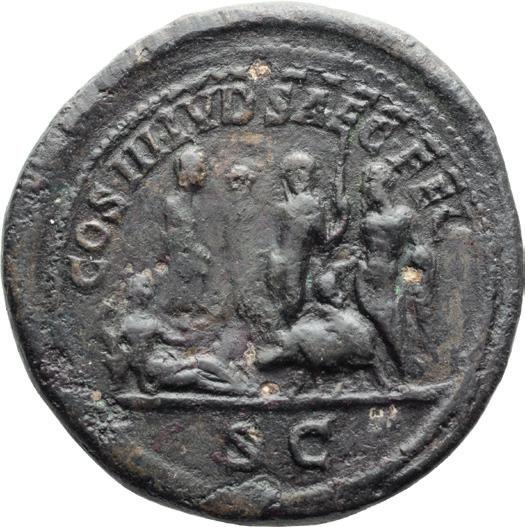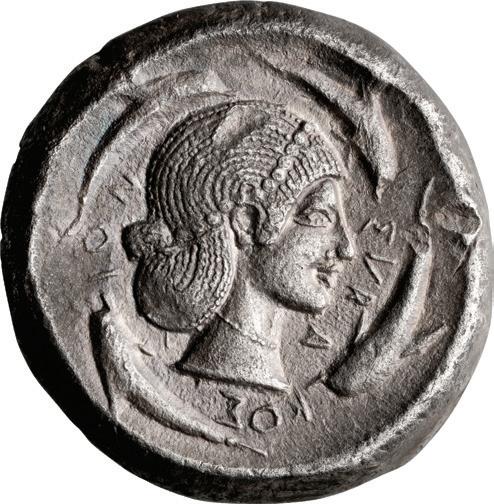Harlan J. Berk, Ltd.
“The
Art & Science of Numismatics”
230th BUY OR BID SALE
Our 60th Year



The Closing Date is, January 28, 2025
Order the new smaller 6x9” version for $25 plus shipping!

Follow & Subscribe https://www.youtube.com/@coinman.ancient

“The
Our 60th Year



The Closing Date is, January 28, 2025
Order the new smaller 6x9” version for $25 plus shipping!

Follow & Subscribe https://www.youtube.com/@coinman.ancient
Tel: (312) 609-0018 31 N. Clark Street • Chicago, Illinois 60602
www.hjbltd.com
Facebook/Harlan J. Berk, Ltd.
YouTube/coinman.ancient
Istagram/coinman969

Fax: (312) 609-1309
Email: info@hjbltd.com OUR 60TH YEAR! Established 1964

Harlan J. Berk, Ancients • Aaron Berk, Ancients & Antiquities • Curtis Clay, Roman Phil Davis, Ancients • Jay Harper , Ancients • Jennifer Saban, Antiquities • Laura Wakeland, World Pablo Saban, IT Manager • Photos & Videos by Andrew Steiner & Craig Hard • Layout by Aaron Berk
Harlan J. Berk, Ltd. has presented an innovation in antiquities and numismatics for some time now. The system is simple. When you want an antiquity or coin in the sale, just bid the estimated price by phone, fax, web site, email or post. We will send you the antiquity or coin immediately with no buyer’s fees and no waiting for the closing of the sale. Any and all antiquities or coins not sold before the closing date will be sent to the highest bidder after January 28th. All items carry a lifetime guarantee of authenticity.
EXAMPLE—You bid estimate on an item valued at $100.00 and if your bid is the 1st to reach us, you will receive the item immediately at $100. If on the other hand, you bid $75.00 on the same item and are still the high bidder at the end of the sale, the item will be mailed to you after the closing. There is a 2.5% fee for credit card use. If you are ever in the area, stop in to see us! Of course, it’s best to call first. Harlan J. Berk, Ltd. reserves the right to refuse any bids.
The Curtis Clay Roman Coin Collection Lot 1-199 REGULAR LOTS START ON LOT 200
We are pleased and honored to have purchased Curtis Clay’s collection of Roman coins, amounting to over 5,000 pieces. Curtis mostly collected coins that were rare or unpublished, focusing especially on varieties unrepresented in the enormous, nearly definitive British Museum Collection. In the spotlight of Curtis’ expert knowledge and meticulous eye, seemingly common coins were recognized as extreme rarities. What we are offering today is another series of sales that will appear over the next two years or more, representing the cream of his collection. When completed, a book will be published of these coins, entitled “The Highlights of the Curtis Clay Collection”. Other coins from the collection will be offered in online sales. All coins will be labeled “Curtis Clay Collection”, and some of them will be included in the Highlights book as well. The coins offered in our Buy or Bid Sales will be in chronological order, organized by Curtis himself. Most lots will include Curtis’ original tickets, with provenance information and in some cases more extensive historical or numismatic notes than space in the catalogue allows. These sales will represent a chance for fortunate and astute collectors of Roman coins to fill their own collections with these special pieces. A rare opportunity!
1. COMMODUS; 177-192 AD, Rome, 187 AD, Aureus, 7.20g. Cf. BMC-p. 728, citing C-515 (Vienna, 300 Fr.). Obv: M COMM ANT P - FEL AVG BRIT Bust laureate, draped r. Rx: P M TR P XII - IMP VIII on l. and r., COS V P P in exergue, Statue of Janus on base in shrine of two columns, looking l. and r. and holding scepter with r. hand. Ex Curtis L. Clay Collection; acquired from Spink. Possibly a new reverse legend variant of this rare aureus, placing COS V P P in the exergue rather than at the end of the circular legend, which is the position it occupies on the Vienna specimen of this coin, as illustrated by Kaiser-Raiss, Commodus, pl. 16.3. Large, flat areas on obverse and reverse at highest points. Near MS 4750
2. PERTINAX; 193 AD, Rome, Denarius, 3.18g. RIC-5, C-28 (150 Fr.). Obv: IMP CAES P HELV - PERTIN AVG Head laureate r. Rx: LIBERATI - S - CIVIBVS
Liberalitas standing l. holding coin counter and cornucopia. Ex Curtis L. Clay Collection; ex Credit de la Bourse, 19 April 1995, lot 375. From Pertinax’ scarce first issue, using five unusual reverse legends. EF 2950
3. PERTINAX; 193 AD, Rome, As, 9.41g. BMC-p. 10, citing Helbing, 29 June 1929, lot 3885. Obv: IMP CAES P HELV - PERTIN AVG Head laureate r. Rx: VOT DECEN - TR P COS II on l. and r., S - C across field, Pertinax sacrificing l. over tripod altar. Ex Curtis L. Clay Collection; ex H. Grun 14, May 1995. Reverse porosity; excellent portrait. EF / aVF 2150
4. PESCENNIUS NIGER; 193-194 AD, Antioch, Denarius, 2.82g. BMC-299 note. Obv: IMP CAES C PESC NIGER IVT AV (sic) Head laureate r. Rs: BONI EVEN - TVS, Fides standing r. holding wheat ears and plate of fruit. Ex Curtis L. Clay Collection; ex CNG 47, 17 March 1999, lot 1647. Round contact mark in center of emperor’s head, made after coin was minted. aEF 1750 Powerful Portrait
5. PESCENNIUS NIGER; 193-194 AD, Caesarea, Denarius, 3.01g. Cf. BMC-p. 76. Obv: IMP CAES C PE[SC] - NIGER IVST AVG, Head laureate r. Rx: FIDEI -
EXER - CITVI, Three standards, the middle one inscribed [VIC] / AVG. Ex Curtis L. Clay Collection; ex Kunker List, May 1996, lot 82. aEF 4000
6. CLODIUS ALBINUS AS CAESAR; 193-195 AD, Alexandria, Denarius, 2.69g. Cf. BM-91, pl. 8.3 (Rome-mint style). Obv: [D] CLOD SEPT - ALBIN CAES, Head laureate r. Rx: FELICI - TAS [C]OS II, Felicitas standing l. holding caduceus and scepter. Ex Curtis L. Clay Collection. Alexandrian specimens of this denarius, though not particularly rare today, were first recognized by Laffranchi in 1921. Extremely strong portrait. Toned MS 650
7. CLODIUS ALBINUS AS AUGUSTUS; 195-196 AD, Lugdunum, Denarius, 2.98g. BMC-p. 63. Obv: IMP CAES D CLO - ALBIN AVG, Head laureate r. Rx: GEN L - VG COS II, Genius, towered, standing l., holding scepter and cornucopia; at his feet, eagle. Ex Curtis L. Clay Collection; acquired from Freeman and Sear, Dec. 1996. Reverse flatly struck. EF 1250
8. CLODIUS ALBINUS AS AUGUSTUS; 195-196 AD, Lugdunum, Denarius, 3.09g. Cf. BMC-p. 70, (b). Obv: IMP CAE D CLO - SEP ALB AVG, Head laureate r. Rx: FORTVNA AVG COS around, II in exergue, Fortuna standing l. holding rudder on globe and cornucopia. Ex Curtis L. Clay Collection; acquired from Lennox Galleries List, Sept. 1996. Struck with worn obverse die, with die break across face. Without this defect, coin would grade Extra Fine. aEF 875
9. CLODIUS ALBINUS AS AUGUSTUS; 195-196 AD, Lugdunum, Denarius, 2.61g. BMC-p. 70, (d); C-46, citing Wiczay. Obv: [IMP CAES D] CLO - ALBIN AVG, Head laureate r. Rx: MAR V - LT COS II, Mars standing r., holding spear and shield. Ex Curtis L. Clay Collection; acquired from Singer, Dec. 1994. Toned VF 850
10. CLODIUS ALBINUS AS AUGUSTUS; 195-196 AD, Lugdunum, Denarius, 2.70g. BMC-p. 69, citing Baranowsky Sale, 1931. Obv: IMP CAES D [CLO] SEP ALB AVG, Bust laureate r. with fold of cloak on front shoulder. Rx: VICT A - V - G - COS II, Victory standing l. on globe, holding wreath and palm. Ex Curtis L. Clay Collection, acquired from Stack’s, 12 Feb. 1997, lot 456. Further pedigree: Mazzini d. 62 and Baranowsky, 25 Feb. 1931, lot 2527, whence BMC cites the coin. Struck with worn die. VF 1200 New Aureus Type: Possible Imperial Return from Britain to Rome in 209 or 210 AD
11. SEPTIMIUS SEVERUS; 193-211 AD, Rome, 209 or 210 AD, Aureus, 6.81g. A new reverse type, missing in the standard catalogues. Obv: SEVERVS - [P]IVS AVG Head laureate r. Rx: VESTA in exergue, sacrifice scene dated TR P XVII or XVIII before temple of Vesta. Ex Curtis L. Clay Collection; ex CNG E180, 23 Jan. 2008, lot 264. This new aureus reverse type, unknown until its appearance in CNG E180 of 2008, suggests that Septimius Severus and his wife and sons may have returned to Rome for one of the winters during his British campaign of 208-211 AD, despite the silence of the literary or epigraphic sources about any such trip. The style of the coin is that of the mint of Rome, though this specimen eventually made its way to India, where it was found according to the CNG cataloguer, and where Roman aurei and imitations of Roman aurei were often pierced with double





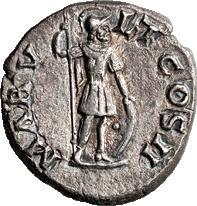

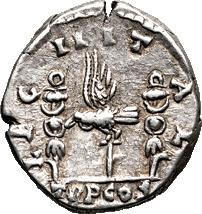
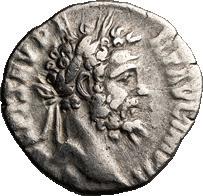





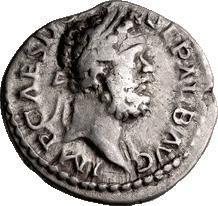
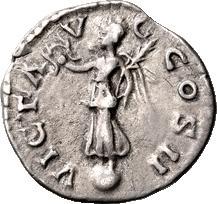

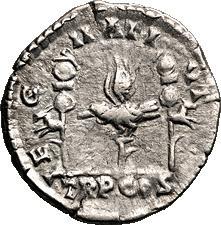
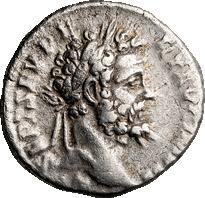




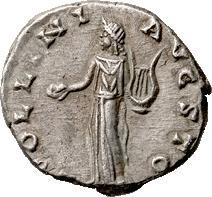








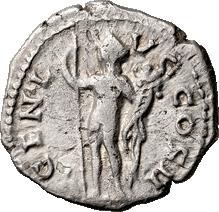
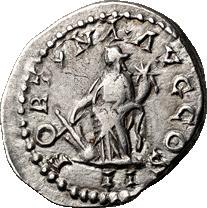

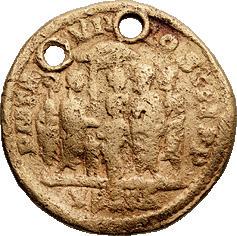



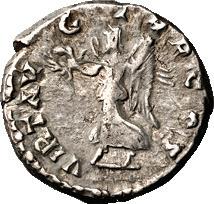

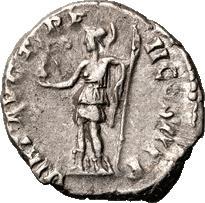


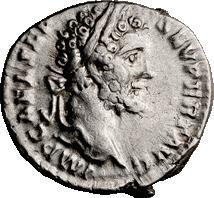
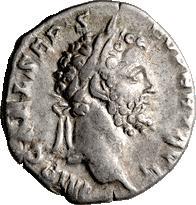

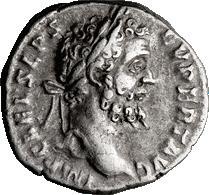
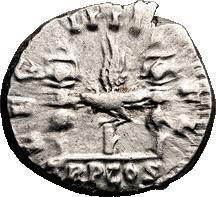





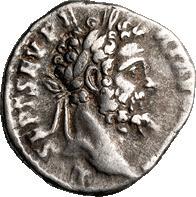


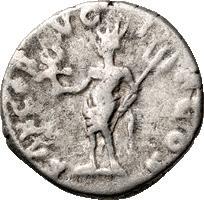

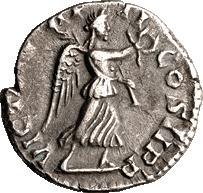

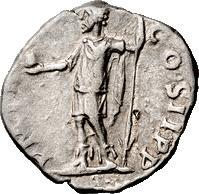



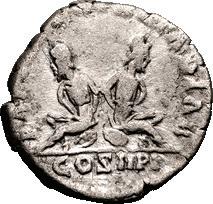

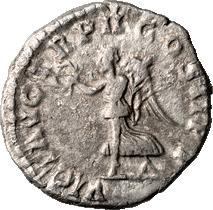
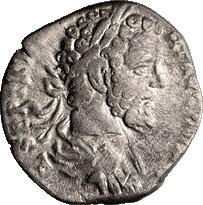


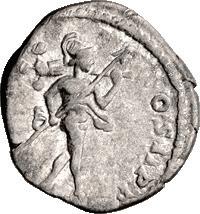





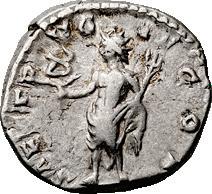



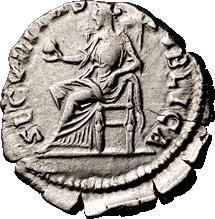







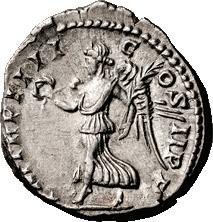
holes, as on our coin. As to the figures in the reverse type, the three on the right might represent Septimius, Geta, and Julia Domna, Julia’s head only being shown; and the three on the left Caracalla sacrificing at an altar, an attendant or guard standing behind Caracalla, and a boy attendant standing to the right of Caracalla’s altar and below Julia Domna’s head. A similar scene of imperial sacrifice before the round temple of Vesta appeared on aurei of Caracalla four or five years later, in 214 AD, apparently to commemorate the emperor’s return to Rome after his German victories of 213 AD; see BMC pl. 70.5-6. Fine......3500
Unique Bridge Medallion
12. SEPTIMIUS SEVERUS; 193-211 AD, Rome, 208 AD, Medallion, AE 3435, 48.29g. Cf. C-522 (Paris, 500 Fr., with drawing); and Gnecchi, Medaglioni, pl. 94.1. Obv: L SEPT SEVERVS PIVS - AVG IMP XI PART MAX Bust laureate, cuirassed r., seen from front, probably with aegis on front shoulder. Rx: [P M TR P XVI] above, COS III P P in exergue, Arching, roofed bridge with a monumental gate at each end, boat in water below. Ex Curtis L. Clay Collection; ex CNG E170, 8 August 2007, lot 260. This is possibly the only known authentic Bridge medallion of Septimius Severus, since Curtis Clay has doubts about the authenticity of the Paris specimen published by Cohen and Gnecchi, which has the short obverse legend SEVERVS PIVS AVG, a different bust type, and was struck from a different reverse die than the CNG example offered here. This is one of the most desirable types of Septimius Severus struck in regular issues, but this seems to be the only known authentic bronze medallion of this very popular type. aVF 4850
Quinarius
13. SEPTIMIUS SEVERUS; 193-211 AD, Rome, 195-6 AD, Quinarius, 0.96g. Cf. BM-80, pl. 7.14. Obv: L SEPT SEV PERT - AVG IMP VII Head laureate r. Rx: COS - II P P, Victory advancing r. holding wreath and palm over shoulder. Ex Curtis L. Clay Collection. This is an excessively rare quinarius. VF 1000
14. SEPTIMIUS SEVERUS; 193-211 AD, Rome, 193 AD, Denarius, 3.51g. BMC-p. 21, citing C-257 (Wiczay). Obv: [IMP CAE L S]EP SEV - PERT AVG Head laureate r. Rx: LEG I - IT - AL on l. and r., TR P COS in exergue, Legionary eagle between two standards. Ex Curtis L. Clay Collection; ex Aufhauser 12, Oct. 1996, lot 597. Rare: only one specimen in Reka Devnia hoard. MS 800
15. SEPTIMIUS SEVERUS; 193-211 AD, Rome, 193 AD, Denarius, 3.10g. BM-9. Obv: [IMP CAE] L SEP - SEV PERT AVG Head laureate r. Rx: LEG - II IT - A - L around, TR P COS in exergue, Legionary eagle between two standards. Ex Curtis L. Clay Collection. Scarce: only 4 spec. in Reka Devnia hoard. gVF 400
16. SEPTIMIUS SEVERUS; 193-211 AD, Rome, 193 AD, Denarius, BM-8, C-260 (10 Fr.), RIC-5. Rx: LE - G - II ADI - VT around, TR P COS in exergue, Legionary eagle between two standards, with capricorns on the standards. A scarce type; only four specimens in the Reka Devnia hoard . Virtually MS 525
17. SEPTIMIUS SEVERUS; 193-211 AD, Rome, 193 AD, Denarius, 2.86g. BM-10, pl. 5.5 (same rev. die). Obv: [IMP CAE] L SEP - SEV PERT AV[G] Head laureate r. Rx: LE - [G] - [I]II - IT - A - L around, TR P COS in exergue, Legionary eagle between two standards, with capricorns on the standards. Ex Curtis L. Clay Collection; ex Dionysos, eBay, 10 Oct. 2019. Scarce: only 4 spec. in Reka Devnia hoard. EF 450
18. SEPTIMIUS SEVERUS; 193-211 AD, Rome, 193 AD, Denarius, 3.59g. BMC-p. 616, 10A. Obv: IMP CAE L SE[P] - SEV PERT AVG Head laureate r. Rx: LEG - IIII - FL around, TR P COS in exergue, Legionary eagle between two standards. Ex Curtis L. Clay Collection. Rare: only 1 spec. in Reka Devnia hoard. Reverse struck with worn die. MS 600
19. SEPTIMIUS SEVERUS; 193-211 AD, Rome, 193 AD, Denarius, 3.28g. BMC-p. 616, 10A. Obv: IMP CAE L SEP - [SEV PERT] AVG Head laureate r. Rx: LEG - IIII - FL around, TR P COS in exergue, Legionary eagle between two standards, with capricorns on the standards. Ex Curtis L. Clay Collection; acquired from Barry Murphy, Nov. 2002. Rare: only 1 spec. in Reka Devnia hoard. aEF 375
20. SEPTIMIUS SEVERUS; 193-211 AD, Rome, 193 AD, Denarius, 3.65g. BM-16, pl. 5.10 (no capricorns). Obv: IMP CAE L SEP S - [E]V PERT AVG Head laureate r. Rx: L - I - G - XI. - C - L around, TR P COS in exergue, Legionary eagle between two standards, with capricorns on the standards and error LIG for LEG in the reverse legend. Ex Curtis L. Clay Collection; ex Rauch 3, lot 356. A rare type: only 1 spec. in Reka Devnia hoard. Lustrous obverse; toned reverse. It’s unusual that the obverse is in MS, but the reverse is only a toned EF. MS / Toned EF 675
21. SEPTIMIUS SEVERUS; 193-211 AD, Rome, 193 AD, Denarius, 2.96g. Cf. BM-16, pl. 5.10 (no capricorns). Obv: IMP CAE L SEP S - EV PERT AVG Head laureate r. Rx: L - I - G - XI. - C - L around, TR P COS in exergue, Legionary eagle between two standards, with capricorns on the standards and error LIG for LEG in the reverse legend. Ex Curtis L. Clay Collection; ex Savoca Blue E21, 23 June 20i9, lot 1410. A rare type: only 1 spec. in Reka Devnia hoard. EF / gVF 375
22. SEPTIMIUS SEVERUS; 193-211 AD, Rome, 193 AD, Denarius, 3.23g. C-622 (Gosselin Sale, 30 Fr.), BM-4 note (citing Cohen), Glasgow-1. Obv: IMP CAE L SEP - SEV PERT AVG Head laureate r. Rx: SAEC FR - VG - IF COS African deity, radiate, naked to waist, standing l. holding caduceus between two wheat ears and trident. Ex Curtis L. Clay Collection. A very rare denarius type:
only about ten specimens are known to Curtis Clay. VF
600
23. SEPTIMIUS SEVERUS; 193-211 AD, Rome, 193 AD, Denarius, 3.16g. C-622 (Gosselin Sale, 30 Fr.), BM-4 note (citing Cohen), Glasgow-1. Obv: IMP CAE L SEP - SEV PE[RT] AVG Head laureate r. Rx: SAEC FR - VG - I - F CO[S] African deity, radiate, naked to waist, standing l. holding caduceus between two wheat ears and trident. Ex Curtis L. Clay Collection. A very rare denarius type: only about ten specimens are known to Curtis Clay. Flan crack at 3:00. VF 400
24. SEPTIMIUS SEVERUS; 193-211 AD, Rome, 193 AD, Denarius, 2.13g. BMC-p. 30 (in BM ex L. A. Lawrence Coll.). Obv: L - SEPT SEV PE - RT AVG IMP II Head laureate r. Rx: LI[BERA]L - AVG COS around, Liberalitas standing l. holding coin counter and cornucopia. Ex Curtis L. Clay Collection; ex Gitbud-Naumann, eBay, 26 April 2014, lot of 2 coins. Possibly a mule using an old LIBERAL AVG COS reverse die, since one would expect such a type at the beginning of Septimius’ reign in April 193, but Septimius did not win his second imperatorial acclamation, recorded at the end of his obverse legend, until c. Nov. or early Dec. 193. A rare denarius with this IMP II obverse legend; none in the Reka Devnia hoard. gVF
350
25. SEPTIMIUS SEVERUS; 193-211 AD, Rome, 193 AD, Denarius, 2.82g. BMC-p. 30 (in BM ex L. A. Lawrence Coll.). Obv: L - SEPT SEV PE - RT AVG IM[P II] Head laureate r. Rx: LIBERA - L - AVG COS around, Liberalitas standing l. holding coin counter and cornucopia. Ex Curtis L. Clay Collection. Possibly a mule using an old LIBERAL AVG COS reverse die, since one would expect such a type at the beginning of Septimius’ reign in April 193, but Septimius did not win his second imperatorial acclamation, recorded at the end of his obverse legend, until c. Nov. or early Dec. 193. A rare denarius with this obverse legend; none in the Reka Devnia hoard. aEF
375
26. SEPTIMIUS SEVERUS; 193-211 AD, Rome, 193 AD, Denarius, 2.93g. Obv: IMP CAE L SEP - SEV PERT AVG Head laureate r. Rx: VIRT AV - G - TR P COS on l. and r., Victory advancing l. holding wreath and palm. Ex Curtis L. Clay Collection. An apparently unpublished engraver’s error, the legend VIRT AVG TR P COS being written on a die whose Victory advancing reverse type needed a legend differing in just one letter, VICT AVG TR P COS. VF 685
27. SEPTIMIUS SEVERUS; 193-211 AD, Rome, Late 193 AD, Denarius, 3.00g. RSC-682b, citing Darfield Treasure Trove. Obv: L SEPT SEV PE - RT AVG IMP II Head laureate r. Rx: VICT AV - G TR P COS around, Victory advancing l. holding wreath and palm. Ex Curtis L. Clay Collection; ex MZ Rheinland, lot 679. All of Septimius’ Rome-mint, IMP II denarii are rare to very rare. Toned Virtually MS
800
28. SEPTIMIUS SEVERUS; 193-211 AD, Rome, Late 193 AD, Denarius, 3.04g. Obv: L - SEPT SEV PE - RT AV - G IMP II Head laureate r. Rx: SAEC [F]R - VG - I - F COS on l. and r., radiate African god standing l., holding caduceus between two wheat ears and trident. Ex Curtis L. Clay Collection. From the same dies as the next lot in this sale. All of Septimius’ Rome-mint, IMP II denarii are rare to very rare; on this coin the reverse type itself is also very rare. aVF
400
29. SEPTIMIUS SEVERUS; 193-211 AD, Rome, Late 193 AD, Denarius, 2.60g. Obv: L - SEPT SEV PE - RT AV - [G IMP II] Head laureate r. Rx: [SA]EC [F] R - VG - I - F COS on l. and r., radiate African god standing l., holding caduceus between two wheat ears and trident. Ex Curtis L. Clay Collection. From the same dies as the preceding lot in this sale. All of Septimius’ Rome-mint, IMP II denarii are rare to very rare; on this coin the reverse type itself is also very rare. Reverse struck with worn die. VF / F
400
30. SEPTIMIUS SEVERUS; 193-211 AD, Rome, Early 194 AD, Denarius, 1.80g. Cf. BM-73 (IMP III). Obv: L - SEPT SEV PE - R[T AV]G IMP II Head laureate r. Rx: VICT [AVG T]R P - II - COS II P P on l. and r., Victory advancing r. holding wreath and palm. Ex Curtis L. Clay Collection; ex Dionysos, eBay, 21 March 2014. All of Septimius’ Rome-mint, IMP II denarii are rare or very rare. Toned EF
375
31. SEPTIMIUS SEVERUS; 193-211 AD, Rome, Early 194 AD, Denarius, 2.48g. Cf. BM-73 (IMP III). Obv: L SEPT SEV [PE - RT] AVG IMP II Head laureate r. Rx: VICT AVG TR P - II - COS II P P on l. and r., Victory advancing r. holding wreath and palm. Ex Curtis L. Clay Collection; ex Flavian Logic Anc. Num., Nov. 2001. All of Septimius’ Rome-mint, IMP II denarii are rare or very rare. aEF 400
32. SEPTIMIUS SEVERUS; 193-211 AD, Rome, Early 194 AD, Denarius, 2.59g. Obv: L SEPT SEV PE - RT AVG IMP II Head laureate r. Rx: VICT AVG TR P II COS II P P around, Victory advancing l. holding wreath and palm. Ex Curtis L. Clay Collection; ex CGB, Paris, June 2019. All of Septimius’ Romemint, IMP II denarii are rare or very rare. EF / VF 475
33. SEPTIMIUS SEVERUS; 193-211 AD, Rome, Early 194 AD, Denarius, 2.14g. BMC-61 note. Obv: L SEPT SEV [PE] - RT AVG IMP II Head laureate r. Rx: VICT AVG TR P II COS II P P around, Victory advancing l. holding wreath and palm. Ex Curtis L. Clay Collection; acquired from Forum Ancient Coins. All of Septimius’ Rome-mint, IMP II denarii are rare or very rare. VF 275
34. SEPTIMIUS SEVERUS; 193-211 AD, Rome, Early 194 AD, Denarius, 3.66g. Cf. BM-73A (IMP III). Obv: L SEPT SEV PE - RT AVG IMP II Head laureate r. Rx: VIRT AVG TR P II - COS II P P around, Virtus standing l. holding Victory and reversed spear. Ex Curtis L. Clay Collection; ex Lanz, eBay, 23 Nov. 2008. Rare with title IMP II. EF
400



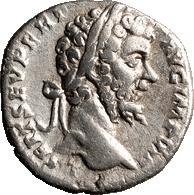
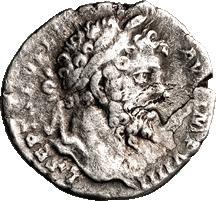



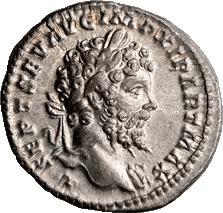

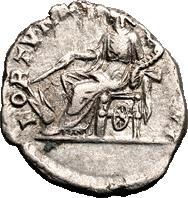



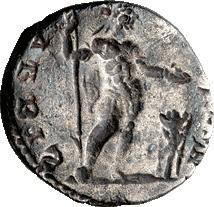
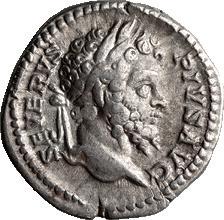




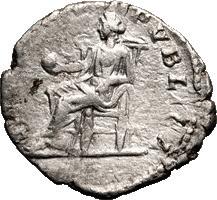

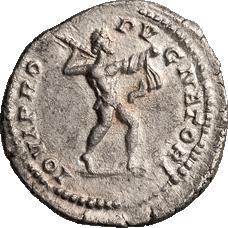


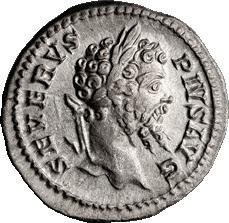

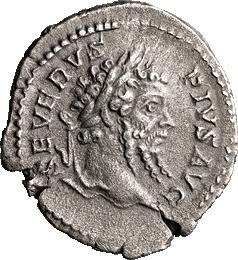

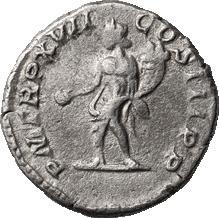

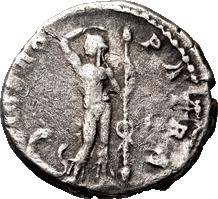
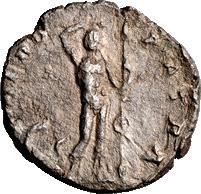


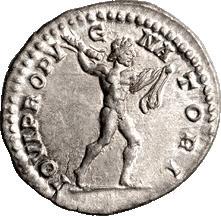

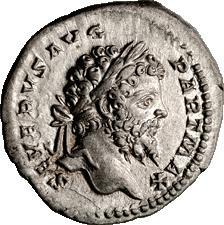
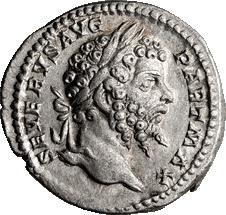
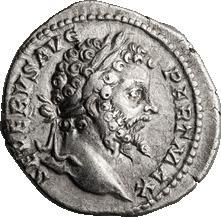


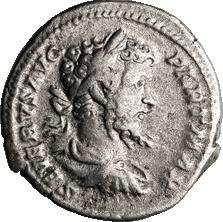




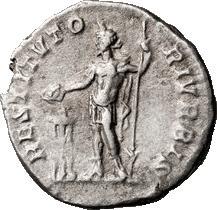





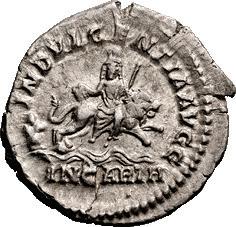
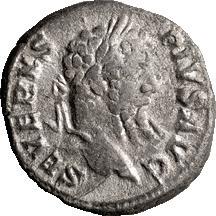





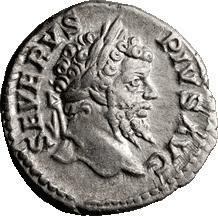


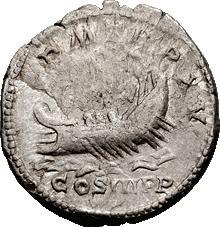

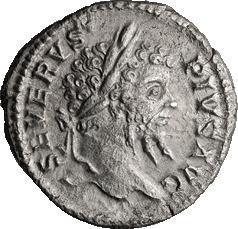
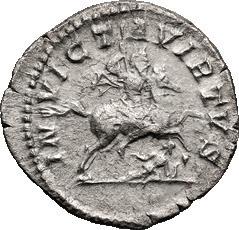



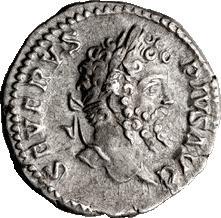

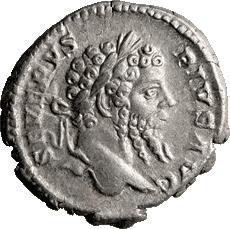

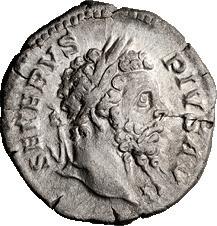
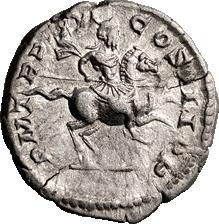


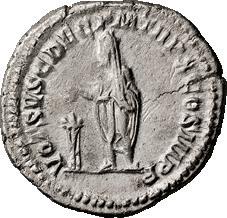






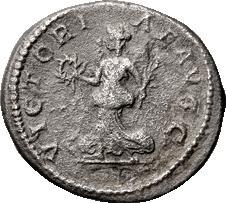

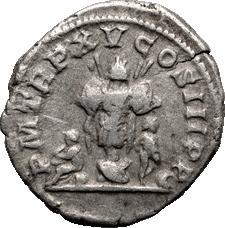
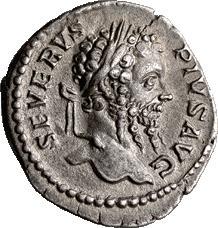









35. SEPTIMIUS SEVERUS; 193-211 AD, Rome, Early 194 AD, Denarius, 3.03g. Obv: L SEPT SEV [PE] - RT AVG IMP II Head laureate r. Rx: VIRT AVG TR P II - COS II P P around, Virtus standing l. holding Victory and reversed spear (spearpoint omitted). Ex Curtis L. Clay Collection; ex Lanz, eBay, 23 Nov. 2008. Rare with title IMP II. From the same obverse die as the preceding lot. VF 300
36. SEPTIMIUS SEVERUS; 193-211 AD, Rome, 194 AD, Denarius, 2.37g. BMC-p. 33. Obv: [L SEPT] SEV PE - RT AVG IMP II Head laureate r. Rx: P M TR -[P II] COS II P P on l. and r., Emperor standing l. holding globe and reversed spear. Ex Curtis L. Clay Collection; acquired via eBay, 12 May 2011. A rare reverse type. Probably a mule struck from an old obverse die, with legend ending IMP II rather than the expected IMP IIII. Struck on small planchet. EF 300
37. SEPTIMIUS SEVERUS; 193-211 AD, Rome, 194 AD, Denarius, 3.50g. BM-69. Obv: L SEPT SEV PE - RT AVG IMP III Head laureate r. Rx: P M TR P - II - COS II P P on l. and r., Jupiter seated l. holding Victory and reversed spear. Ex Curtis L. Clay Collection; ex Ancient Auction House, eBay, 21 April 2003. MS 675
38. SEPTIMIUS SEVERUS; 193-211 AD, Rome, 194 AD, Denarius, 2.75g. RSC-688b (citing Vienna). Obv: L SEPT SEV PE - RT AVG IMP III Head laureate r. Rx: VICT AVG TR P II COS II P - P around, Victory advancing l. holding wreath and palm. Ex Curtis L. Clay Collection; ex Orgame, eBay, 29 Sept. 2011. Rare; none in Reka Devnia hoard. From the same dies as the Vienna specimen reported by RSC. Lustrous obverse. EF / VF 325
39. SEPTIMIUS SEVERUS; 193-211 AD, Rome, Denarius, 3.23g. BMC-p. 33. Obv: L SEPT SEV P[ERT] - AVG IMP IIII Head laureate r. Rx: P M TR P IICOS II P P on l. and r., Septimius standing l. holding globe and reversed spear. Ex Curtis L. Clay Collection; ex Savoca Blue E11, 28 Oct. 2018. A rare type; only one specimen in Reka Devnia hoard. VF 285
40. SEPTIMIUS SEVERUS; 193-211 AD, Rome, 194 AD, Denarius, 2.75g. BM-87. Obv: L - SEPT SEV [PE] - RT AV[G I]MP IIII Head laureate r. Rx: SECVRITAS - [PV]BLICA on l. and r., Securitas seated l. holding globe. Ex Curtis L. Clay Collection; ex Lanz, eBay, 5 March 2018. Scarce; only three specimens in Reka Devnia hoard. Wreath flatly-struck at high points. MS 400
41. SEPTIMIUS SEVERUS; 193-211 AD, Rome, 194 AD, Denarius, 2.94g. BM-87. Obv: [L - SEPT SEV PE] - RT AVG IMP IIII Head laureate r. Rx: [SECVRI]TAS - [PVBLICA] on l. and r., Securitas seated l. holding globe. Ex Curtis L. Clay Collection; ex Lucernae, eBay, 19 March 2012. Scarce; only three specimens in Reka Devnia hoard. In reverse field mirror-image outline of obverse portrait from die clashing. Toned EF 285
42. SEPTIMIUS SEVERUS; 193-211 AD, Rome, 194-5 AD, Denarius, 2.79g. BM-78 var. (legend error). Obv: [L S]EPT SEV PERT - AVG IMP IIII Head laureate r. Rx: [AP]OLL[I]NI - AVGSTO on l. and r. (sic: second letter V omitted from reverse legend), Apollo standing l. holding patera and lyre. Ex Curtis L. Clay Collection; ex Freeman & Sear MBS 17, 15 Dec. 2009, lot 425 (A. Lynn Coll.). With an unusual legend error (letter omitted) on reverse. Choice EF 1500
43. SEPTIMIUS SEVERUS; 193-211 AD, Rome, 194-5 AD, Denarius, 2.69g. Cf. BM-86, pl. 7.18 (corresponding aureus mule). Obv: L SEPT SEV PERTAVG IMP IIII Head laureate r. Rx: PA[RT ARAB PAR]T ADIAB around, COS II P P in exergue, Two captives, wearing peaked caps and with their hands tied behind their backs, seated back to back on shields. Ex Curtis L. Clay Collection; acquired from Ancient Auction House, eBay. This is apparently a rare mule from an old IMP IIII obverse die, since it was only Septimius’ fifth imperatorial acclamation that won him the Parthian victory titles recorded in this reverse legend. VF 285
44. SEPTIMIUS SEVERUS; 193-211 AD, Rome, 195 AD, Denarius, 2.20g. BM-113, pl. 8.12 (same obv. die). Obv: L SEPT S[EV PE] - RT AVG [IMP V] Bust laureate, draped, cuirassed r. Rx: [P M TR P III - C]OS II P P on l. and r., Mars advancing r. holding spear and trophy over shoulder. Ex Curtis L. Clay Collection; ex Savoca Blue E24, 22 Sept. 2019, lot 1375. A rare draped and cuirassed bust variety, probably occurring on just this one obverse die for IMP V denarii. VF 140
45. SEPTIMIUS SEVERUS; 193-211 AD, Rome, 196 AD, Denarius, 3.40g. Bust var. of BM-146 and RSC-419. Obv: L SEPT SEV [PE] - RT AVG IMP VIII Bust laureate, draped, cuirassed r. Rx: [P M] TR P IIII - C - OS - II P [P] on l. and r., Victory advancing l. holding wreath and palm. Ex Curtis L. Clay Collection; ex Barry Murphy, Nov. 2002, 39. A rare draped and cuirassed bust variety, probably occurring on just this one obverse die for Rome-mint IMP VIII denarii. Drapery in high relief. Virtually MS 650
46. SEPTIMIUS SEVERUS; 193-211 AD, Rome, 196 AD, Denarius, 2.62g. Cf. BM-146. Obv: [L SEP]T SEV PERT - AVG IMP VII (sic, mistake for IMP VIII) Head laureate r. Rx: [P M TR P IIII] - C - OS - II - P P on l. and r., Victory advancing l. holding wreath and palm. Ex Curtis L. Clay Collection; ex Savoca Blue E25, 27 Oct. 2019, lot 1563. From an old IMP VII obverse die, or the engraver meant IMP VIII but mistakenly left out one stroke. Struck on small flan. MS 400
47. SEPTIMIUS SEVERUS; 193-211 AD, Rome, 196 AD, 2.72g. Cf. BM146. Obv: [L] SEPT SEV PERT - AVG [IMP VIII] Head laureate r. Rx: FORTVN[AE] - [REDV]CI on l. and r., Fortuna seated l. holding rudder and
cornucopia, wheel under seat overlaps with strut between legs. Ex Curtis L. Clay Collection. aEF 100
48. SEPTIMIUS SEVERUS; 193-211 AD, Rome, 196-7 AD, Denarius, 2.40g. Bust var. of BM-174. Obv: L SEPT SEV PER[T] - [AVG IMP] VIII Bust laureate r. with fold of cloak on front shoulder and behind neck. Rx: SE[CVRITAS]PVBLICA on l. and r., Securitas seated l. holding globe. Ex Curtis L. Clay Collection; ex Lanz, eBay, 13 June 2019. A rare bust type on denarii of this issue. VF 125
49. SEPTIMIUS SEVERUS; 193-211 AD, Rome, 197 AD, Denarius, 2.71g. BMC-p. 41, * note. Obv: L SEPT SEV PERT - AVG IMP VIII Head laureate r. Rx: [HERCVLI] - DEFENS on l. and r., Hercules standing r. holding bow, lionskin, and club. Ex Curtis L. Clay Collection. Rare in Rome-mint style and with IMP VIII rather than IMP VIIII in obverse legend. VF 200
50. SEPTIMIUS SEVERUS; 193-211 AD, Rome, 197 AD, Denarius, 2.36g. Cf. BM-222. Obv: L SEPT [S]EV [PERT] - AV[G] IMP VIIII Head laureate r. Rx: [LIBE]RO - PATRA (sic), Liber standing r., head l., raising r. hand to head and holding thyrsus in l. hand, panther seated at feet. Ex Curtis L. Clay Collection; ex Lanz, eBay, 2 July 2017. On reverse curious spelling error PATRA for PATRI; from the same reverse die as the next lot in this sale. Planchet crack starting at 3:00. F 125
51. SEPTIMIUS SEVERUS; 193-211 AD, Rome, 197 AD, Denarius, 1.99g. Cf. BM-222. Obv: L SEPT [S]EV [PERT] - AV[G] IMP VIIII Head laureate r. Rx: [LIB]ERO - PATRA (sic), Liber standing r., head l., raising r. hand to head and holding thyrsus in l. hand, panther seated at feet. Ex Curtis L. Clay Collection; ex Antiquarica, eBay, 19 Jan. 2009. On reverse curious spelling error PATRA for PATRI; from the same reverse die as the previous lot in this sale. toned virtually ms 300
52. SEPTIMIUS SEVERUS; 193-211 AD, Rome, 198 AD, Denarius, 2.87g. BM-252. Obv: L SEPT SEV [PERT] AVG IMP X Head laureate r. Rx: M[ART] I - VI - CTORI on l. and r., Mars standing r., resting r. hand on shield set on captive seated on ground, and holding spear in l. hand. Ex Curtis L. Clay Collection; ex Triskeles E9, 24 Oct. 2013, part lot 151. Scarce: probably only four specimens in Reka Devnia hoard. Struck on a small flan. EF 250
53. SEPTIMIUS SEVERUS; 193-211 AD, Rome, 198 AD, Denarius, 2.93g. BM-261. Obv: L SEPT SEV [PE]RT - AVG IMP X Head laureate r. Rs: VIC[T] PA - RT - HIC - [A]E on l. and r., Victory advancing l. holding wreath and trophy, captive seated l. on ground before her. Ex Curtis L. Clay Collection; ex Rauch 52-I, April 1994, lot 357. Rare: none in the Reka Devnia hoard. Probably a mule from an old obverse die: with VICT PARTHICAE on the reverse one would expect not just IMP X, but IMP XI PART MAX on the obverse. EF 325 Exquisite
54. SEPTIMIUS SEVERUS; 193-211 AD, Rome, 199 AD, Denarius, 3.33g. BM-132. Obv: L - SEPT SEV AVG IMP XI PART MAX Bust laureate r. with fold of aegis on front shoulder and behind neck. Rx: IOVI PROPV - G - NA TORI around, Jupiter charging r., about to hurl thunderbolt with r. hand, and extending l. arm before him, around which his cloak is wrapped. Ex Curtis L. Clay Collection; ex CNG E294, 16 Jan. 2013, lot 713. A rare bust variety with aegis on the emperor’s shoulder. For the denarii of Septimius Severus, this is an exceptional coin, struck on a broad flan with full legends. Wonderful strike, along with an unusual reverse type. MS 700
55. SEPTIMIUS SEVERUS; 193-211 AD, Rome, 199 AD, Denarius, 3.65g. Bust var. of BM-132. Obv: L - SEPT SEV AVG IMP XI PART MAX Bust laureate r. with fold of aegis on front shoulder and behind neck. Rx: IOVI PRO - P - VG - NATORI around, Jupiter charging r., about to hurl thunderbolt with r. hand, and extending l. arm before him, around which his cloak is wrapped. Ex Curtis L. Clay Collection; ex Manfred Olding List 96, March 2019, lot 382 (Fritz Reusing Coll.). A rare bust variety with aegis on the emperor’s shoulder. Toned Virtually MS 600
56. SEPTIMIUS SEVERUS; 193-211 AD, Rome, 199 AD, Denarius, 3.03g. Bust var. of BM-132. Obv: L - SEPT SEV AVG IMP XI PART MAX Bust laureate r. with fold of aegis on front shoulder and behind neck. Rx: IOVI PRO - PV - GNATORI around, Jupiter charging r., about to hurl thunderbolt with r. hand, and extending l. arm before him, around which his cloak is wrapped. Ex Curtis L. Clay Collection. A rare bust variety with aegis on the emperor’s shoulder. MS 400
57. SEPTIMIUS SEVERUS; 193-211 AD, Rome, 199 AD, Denarius, 2.84g. Bust var. of BM-132. Obv: L - SEPT SEV AVG IMP XI PART MAX Bust laureate r. with fold of aegis on front shoulder and behind neck. Rx: IOVI PRO - P - VG - NATORI around, Jupiter charging r., about to hurl thunderbolt with r. hand, and extending l. arm before him, around which his cloak is wrapped. Ex Curtis L. Clay Collection; ex Savoca, eBay, 21 May 217. A rare bust variety with aegis on the emperor’s shoulder. EF 275 Siege of Hatra
58. SEPTIMIUS SEVERUS; 193-211 AD, Rome, 199 AD, Denarius, 3.51g. BMC-p. 193. Obv: SEVERVS AVG - PART MAX Head laureate r. Rx: PRO - FECT - AVGG - F - EL on l. and r., Emperor on horse prancing r., holding transverse spear and with cloak flying from his shoulder. Ex Curtis L. Clay Collection. The reverse type probably commemorates Septimius’ second siege of Hatra, in 199 AD. This denarius type is very rare when coupled with its shorter obverse legend, omitting IMP XI, as on this specimen. Rather unusual


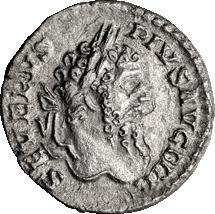
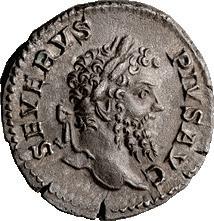




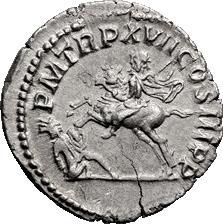
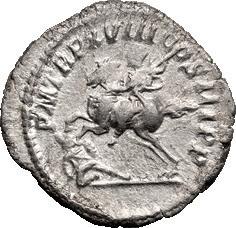
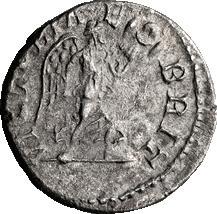

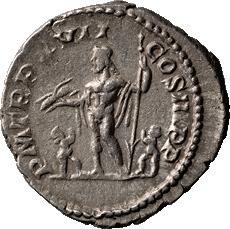





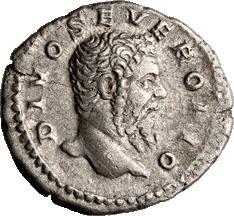
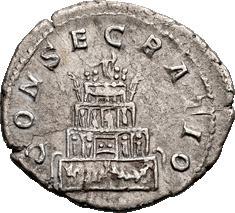

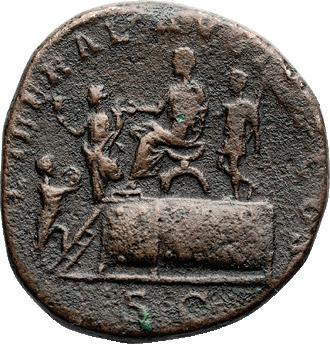

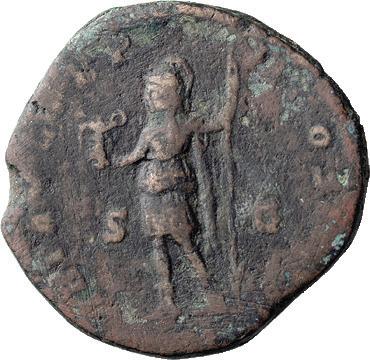















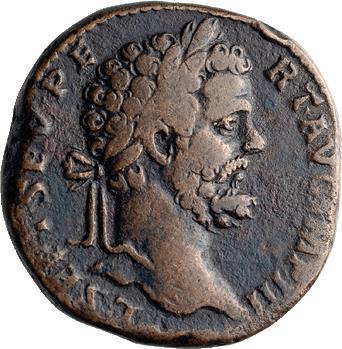

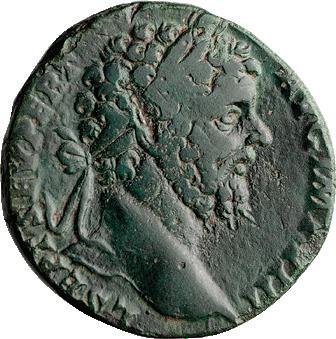








type; beautifully struck on a broad flan. MS 800 59. SEPTIMIUS SEVERUS; 193-211 AD, Rome, 200 AD, Denarius, 3.19g. BM-194. Obv: SEVERVS AVG - PART MAX Head laureate r. Rx: MONETA - AVGG on l. and r., Moneta standing l. holding scales and cornucopia. Ex Curtis L. Clay Collection; acquired from Barry Murphy, Nov. 2002. A rare type, represented by only one denarius in the Reka Devnia hoard. Virtually MS 250 60. SEPTIMIUS SEVERUS; 193-211 AD, Rome, 200 AD, Denarius, 3.26g. BM-196. Obv: SEVERVS AVG - PART MAX Head laureate r. Rx: MONETA - AVGG on l. and r., Moneta seated l. holding scales and cornucopia. Ex Curtis L. Clay Collection; ex Helios, eBay, 20 Jan. 2013. A scarce type, represented by only three specimens in the Reka Devnia hoard. EF 285 61. SEPTIMIUS SEVERUS; 193-211 AD, Rome, c. I99 AD, Denarius, 3.22g. BMC-203 note. Obv: SEVERVS AV - G PART MAX Head laureate r. Rx: RESTITVTO - RI VRBIS on l. and r., Emperor standing l. holding patera over tripod altar in r. hand and reversed spear in l. hand. Ex Curtis L. Clay Collection. Note RESTITVTORI not RESTITVTOR in the reverse legend, the dative version probably being the earlier. The break AV - G in the obverse legend is also unusual and perhaps early. VF 175
62. SEPTIMIUS SEVERUS; 193-211 AD, Rome, 200 AD, Denarius, 3.33g. BMC-203 note (citing Oxford). Obv: SEVERVS AVG - PART MAX Bust laureate, draped, cuirassed r. Rx: RESTITVTOR - [V]RBIS on l. and r., Emperor standing l. holding patera over tripod altar in r. hand and reversed spear in l. hand. Ex Curtis L. Clay Collection; acquired from Barry Murphy, Nov. 2002. Very rare draped and cuirassed bust type on denarii of this issue. VF 275
63. SEPTIMIUS SEVERUS; 193-211 AD, Rome, 200 AD, Denarius, 2.84g. BMC-203 note (citing Oxford). Obv: SEVERVS AVG - PART MAX Bust laureate, draped, cuirassed r. Rx: RESTITVTOR - VRBIS on l. and r., Emperor standing l. holding patera over tripod altar in r. hand and reversed spear in l. hand. Ex Curtis L. Clay Collection; ex Rauch 86, May 2010, lot 919. Very rare draped and cuirassed bust type on denarii of this issue. aVF 325
Reverse Brockage
64. SEPTIMIUS SEVERUS REVERSE BROCKAGE; 193-211 AD, Rome, 200 AD, Denarius, 2.57g. Cf. BM-203. Rx: RESTITVTOR - VRBIS on l. and r., Emperor standing l. holding patera over tripod altar in r. hand and reversed spear in l. hand. Obv: The same type and legend, but in mirror image and struck incuse rather than in relief. Ex Curtis L. Clay Collection. A rare reverse brockage; usually it is the obverse not the reverse type that was struck in relief on one side of the coin and incuse on the other side. VF / EF 325
65. SEPTIMIUS SEVERUS MULE: REVERSE OF CARACALLA; 193211 AD, Rome, 201 AD, Denarius, 3.57g. BM-134, pl. 63.9 (same rev. die). Obv: SEVERVS - PIVS AVG Head laureate r. Rx: PART MAX PONT TR P IIII around, Trophy between two seated captives, both mourning. Ex Curtis L. Clay Collection; ex Lanz, eBay, 17 Nov. 2013. A rare mint mule: the titles on the reverse are Caracalla’s not Septimius’s. EF 650
66. SEPTIMIUS SEVERUS MULE: REVERSE OF CARACALLA; 193211 AD, Rome, 201 AD, Denarius, 3.44g. BM-134, pl. 63.9 (different dies). Obv: SEVERVS - PIVS AVG Head laureate r. Rx: PART MAX PONT TR P IIII around, Trophy between two seated captives, both mourning. Ex Curtis L. Clay Collection; ex Lanz, eBay, 7 April 2016. A rare mint mule: the titles on the reverse are Caracalla’s not Septimius’s. aEF 450 Dynastic Issue
67. SEPTIMIUS SEVERUS AND CARACALLA; Rome, 201-2 AD, Denarius, 2.72g. Cf. BM-307. Obv: SEVERVS - PIVS AVG Head laureate r. Rx: AETERNI[T IMPERI] Vis-a-vis busts of Septimius Severus and Caracalla, both laureate, draped, and cuirassed. Ex Curtis L. Clay Collection; ex CNG E431, 24 Oct. 2018, lot 429. Rare dynastic reverse type, valued at 60 francs by Cohen. In an ancient bronze mount. Planchet loss at 6:00 on reverse. EF 600 Dynastic Issue
68. SEPTIMIUS SEVERUS AND CARACALLA; Rome, 202 AD, Denarius, 3.87g. BMC-p. 230. Obv: SEVERVS - PIVS AVG Head of Septimius Severus laureate r. Rx: ANTONIN PIVS - AVG PON TR P V on l. and r., Bust of Caracalla laureate, draped r. Ex Curtis L. Clay Collection; ex Savoca Black, E2, 15 Oct. 2017, lot 84. Dynastic Severan denarii with dated reverse legends (TR P V on this coin) are particularly rare and interesting. EF 1400 Dynastic Issue
69. SEPTIMIUS SEVERUS AND CARACALLA; Rome, 202 AD, Denarius, 3.73g. Cf. BMC-p. 230. Obv: SEVERVS - PIVS AVG Head of Septimius Severus laureate r. Rx: ANTONIN PIVS - AVG P[ON TR P V] on l. and r., Bust of Caracalla laureate, draped, cuirassed r., seen from front. Ex Curtis L. Clay Collection; ex Artemide XL, 1 June 2014, lot 2264. Very rare dynastic denarius with dated reverse legend (TR P V on this coin) and Caracalla’s bust seen from front rather than from behind. Toned EF 1400
70. SEPTIMIUS SEVERUS; Rome, 202 AD, Denarius, 3.12g. BM-388. Obv: SEVERVS - AVG PIVS Head laureate r. Rx: VOT SVSC DEC P M TR P X P P around, Septimius standing l., togate and veiled, holding patera over tripod altar in r. hand and roll in l. hand. Ex Curtis L. Clay Collection; ex Dionysos, eBay, 24 July 2019. Rare: only two specimens in Reka Devnia hoard. MS 250
71. SEPTIMIUS SEVERUS; 193-211 AD, Rome, 203 AD, Denarius, 3.44g. Cf. BM-432. Obv: SEVERVS - PIVS AVG Head laureate r. Rx: P M TR P XI - COS
III P P on l. and r., Fortuna Redux seated l. holding rudder and cornucopia, no wheel under seat, her throne has back. Ex Curtis L. Clay Collection; ex Triton VI, 14 Jan. 2003, part lot 1716 (Marc Melcher Coll.). EF 125
72. SEPTIMIUS SEVERUS; 193-211 AD, Rome, 203 AD, Denarius, 3.27g. BMC-327 note. Obv: SEVERVS - PIVS AVG Head laureate r. Rx: FORTVNA - REDVX on l. and r., Fortuna seated l. holding rudder on globe and cornucopia; no wheel under seat, her throne has back. Ex Curtis L. Clay Collection. aEF 250
73. SEPTIMIUS SEVERUS; 193-211 AD, Rome, 203 AD, Denarius, 3.15g. Cf. BM-327. Obv: SEVERVS - PIVS AVG Head laureate r. Rx: FORTVNAREDVX on l. and r., Fortuna seated l. holding rudder and cornucopia; no wheel under seat, her throne has back. Ex Curtis L. Clay Collection; ex first-num., eBay, 27 Nov. 2011. aEF 150 Unique Septimius Severus Denarius Omitting “IN CARTH” on Reverse
74. SEPTIMIUS SEVERUS; Unique Septimius Severus Denarius, Omitting “IN CARTH” on Reverse 193-211 AD, Rome, 203 AD, Denarius, 3.10g. Cf. BM-334, pl. 35.13. Obv: SEVERVS - PIVS AVG Head laureate r. Rx: INDVLGENTIA.AV[G]G around, Dea Caelestis seated facing holding drum and scepter, riding lion leaping r. above water gushing from rocks. Ex Curtis L. Clay Collection. Doubtless the earliest variant of this type, struck before the usual IN CARTH was added in exergue, thereby identifying the goddess as Dea Caelestis of Carthage and avoiding possible confusion with similar types of Cybele riding a lion. This type without IN CARTH on the reverse seems to be known on just one other coin apart from our denarius of Septimius Severus, namely a denarius of Caracalla, from a different reverse die, in Munzkabinett Koln 64, 1988, Meyer-Coloniensis 3, lot 406. This is the first issue of what became an extremely common type. However, later examples include “IN CARTH” on the reverse. This is only the second example recorded without the addition of “IN CARTH”. MS 2500
75. SEPTIMIUS SEVERUS; 193-211 AD, Rome, 203 AD, Denarius, 3.07g. BM-334, pl. 35.13. Obv: SEVERVS - PIVS AVG Head laureate r. Rx: INDVLGENTIA AVGG around, IN CARTH in exergue, Dea Caelestis seated facing holding drum and scepter, riding lion leaping r. above water gushing from rocks. Ex Curtis L. Clay Collection; ex CNG E461, 18 Sept. 2020, lot 407. Scarce: only three specimens in Reka Devnia hoard. See commentary to preceding lot. A normal example of the previous coin, issued later. MS 450
76. SEPTIMIUS SEVERUS; 193-211 AD, Rome, 205 AD, Denarius, 3.33g. Cf. BM-471. Obv: SEVERVS - PIVS AVG Head laureate r. Rx: P M TR P XIIICOS III P P Jupiter standing l. holding thunderbolt and reversed spear (point downwards). Ex Curtis L. Clay Collection. Jupiter usually holds a scepter in this type, not a barbed spear. Reverse softly struck. MS 175
77. SEPTIMIUS SEVERUS; 193-211 AD, Rome, c. 207 AD, Denarius, 2.82g. BM-340. Obv: SEVERVS - PIVS AVG Head laureate r. Rx: INVICTA VIRTVS around, Septimius on horseback charging r., about to hurl spear at enemy falling to ground below his horse. Ex Curtis L. Clay Collection; ex Solidus, eBay, 23 Oct. 2016. A rare type; only one specimen in Reka Devnia hoard. EF 450 78. SEPTIMIUS SEVERUS; 193-211 AD, Rome, c. 206-7 AD, Denarius, 3.33g. BM-361. Obv: SEVERVS - PIVS AVG Head laureate r. Rx: RESTITVTORVRBIS on l. and r., Roma seated l. above shield, holding Palladium and scepter; her throne has back. Ex Curtis L. Clay Collection. The back on Roma’s throne in this type was often omitted by the engraver. EF 250 79. SEPTIMIUS SEVERUS; 193-211 AD, Rome, 207 AD, Denarius, 3.62g. BM-541. Obv: SEVERVS - PIVS AVG Head laureate r. Rx: P M TR P XV COS III P P around, Trophy between two captives, a female seated on l. and a male standing on r. Ex Curtis L. Clay Collection; ex Savoca, eBay, 4 March 2016. A scarce type; only six specimens in Reka Devnia hoard. VF 225
80. SEPTIMIUS SEVERUS; 193-211 AD, Rome, 207 AD, Denarius, 3.13g. BM-541. Obv: SEVERVS - PIVS AVG Head laureate r. Rx: P M TR P XV COS III P P around, Trophy between two captives, a female seated on l. and a male standing on r. Ex Curtis L. Clay Collection; ex Savoca, eBay, 9 Sept. 2016. A scarce type; only six specimens in Reka Devnia hoard. VF 200 Rare Dynastic Issue
81. SEPTIMIUS SEVERUS AND CARACALLA; Rome, c. 207 AD, Denarius, 1.98g. RSC-p. 42 (same dies), BMC-p. 222, * = C-597 (de Quelen, 100 Fr.). Obv: [SEVE]RVS - PIVS AV[G] Laureate head of Septimius Severus r. Rx: RES[TITVTO - RE]S VRBIS on l. and r., helmeted bust of Caracalla as Roma r. Ex Curtis L. Clay Collection; ex Lanz, eBay, 16 June 2013. The helmeted bust on the reverse apparently shows Caracalla as Roma, since the legend says “Restorers of the City” (plural), and the obverse clearly shows Septimius Severus with his standard portrait and legend. This is a very rare and unusual type, but with notable damage and some planchet loss. EF in all other aspects. EF 450
82. SEPTIMIUS SEVERUS; 193-211 AD, Rome, 207 AD, Denarius, 3.23g. BM-540B. Obv: SEVERVS - PIVS AVG Head laureate r. Rx: P M TR P X - V - COS III P P around, Septimius on horse pacing l. (equestrian statue), holding vertical spear and small figure of Victory. Ex Curtis L. Clay Collection; ex Kairos E5, 10 June 2018, lot 525. Rare: only one specimen in Reka Devnia hoard. The Victory held by Septimius in this reverse type is clearer on the As, BM-852, pl. 51.8. VF
300
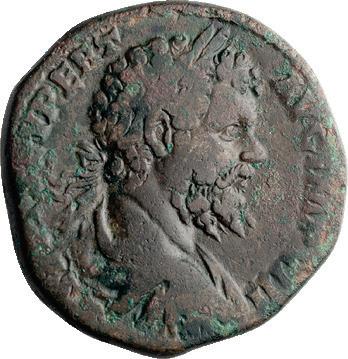
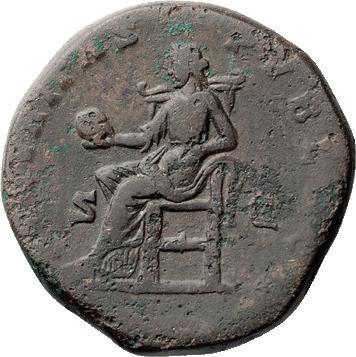
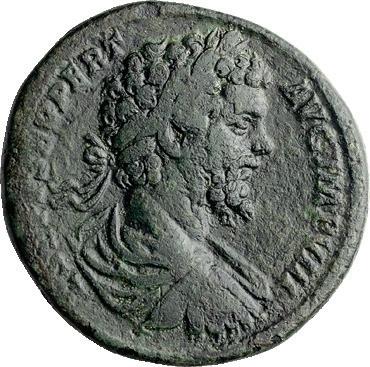
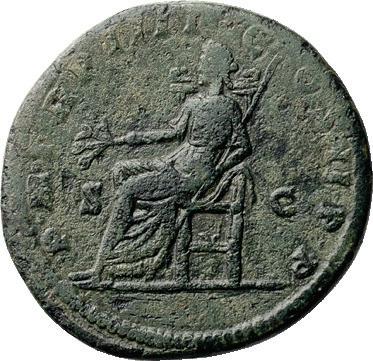


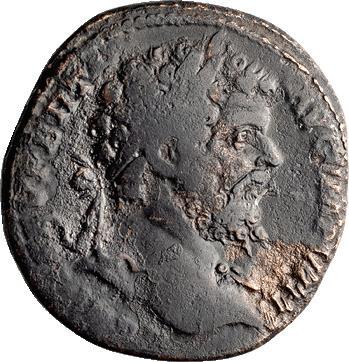


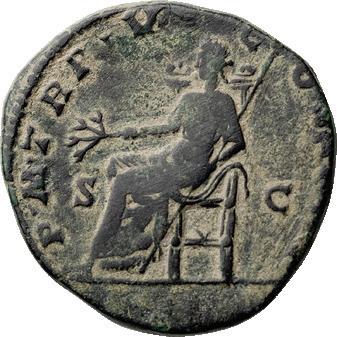


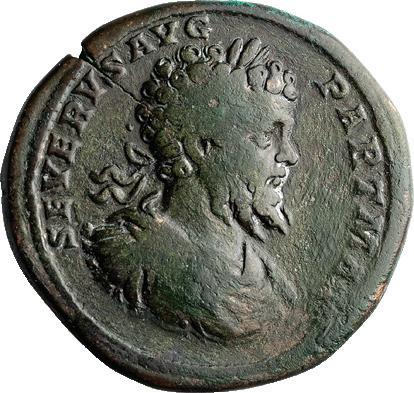


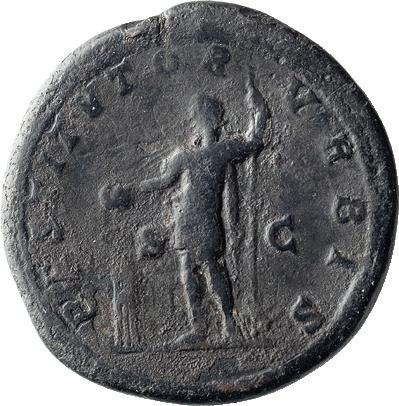

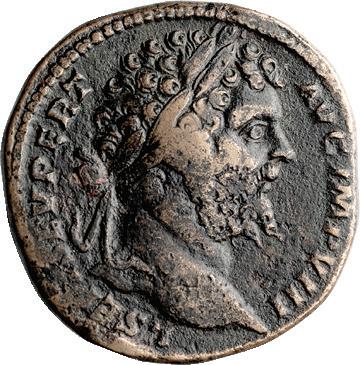

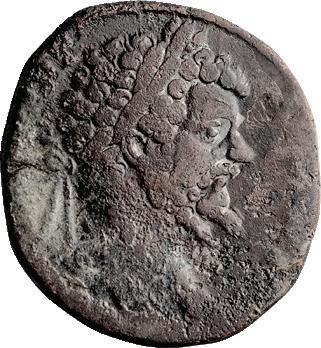


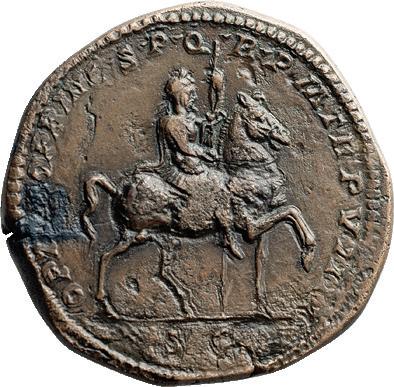


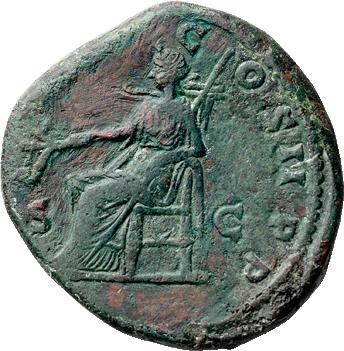
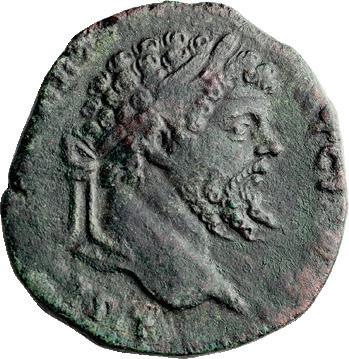



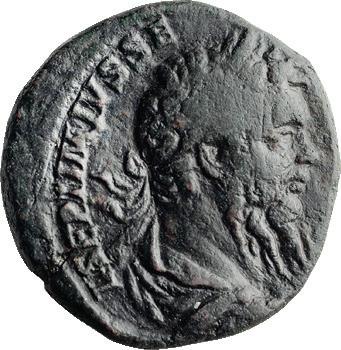


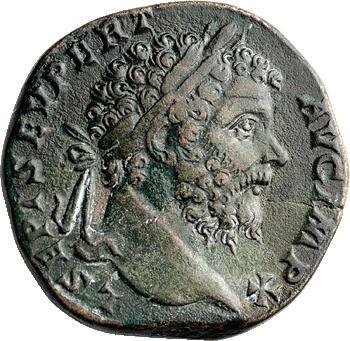



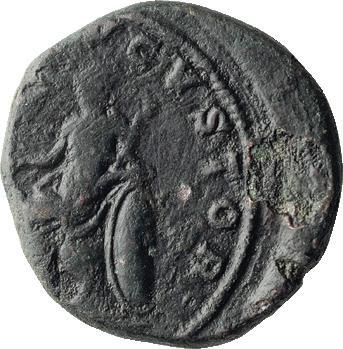
83. SEPTIMIUS SEVERUS; 193-211 AD, Rome, 207 AD, Denarius, 2.94g. BM-540B. Obv: SEVERVS - PIVS AVG Head laureate r. Rx: P M TR P XVCOS III P P around, Septimius on horse pacing l. (equestrian statue), holding vertical spear and small figure of Victory. Ex Curtis L. Clay Collection; ex CNG E323, 26 March 2014, lot 381. Rare: only one specimen in Reka Devnia hoard. The Victory held by Septimius in this reverse type is clearer on the As, BM-852, pl. 51.8. EF 475
84. SEPTIMIUS SEVERUS; 193-211 AD, Rome, 207 AD, Denarius, 2.94g. BM-540B. Obv: SEVERVS - PIVS AVG Head laureate r. Rx: P M TR P XVCOS III P P around, Septimius on horse pacing l. (equestrian statue), holding vertical spear and small figure of Victory. Ex Curtis L. Clay Collection; ex Ancient Treasures, eBay, 5 Jan. 2006. Rare: only one specimen in Reka Devnia hoard. The Victory held by Septimius in this reverse type is clearer on the As, BM-852, pl. 51.8. Softly-struck obverse. VF / gVF 300
85. SEPTIMIUS SEVERUS; 193-211 AD, Rome, 207 AD, Denarius, 3.07g. BM-541A. Obv: SEVERVS - PIVS AVG Head laureate r. Rx: P M TR P XV above, COS III P P in exergue, Galley l. with three oarsmen, waves below. Ex Curtis L. Clay Collection. A very rare type with date TR P XV; not represented in the Reka Devnia hoard. VF 750 86. SEPTIMIUS SEVERUS; 193-211 AD, Rome, 208 AD, Denarius, 3.35g. Cf. BM-540B (date TR P XV not XVI). Obv: SEVERVS - PIVS AVG Head laureate r. Rx: P M TR P XVI COS III P P around, Septimius on horse pacing l. (equestrian statue), holding vertical spear and small figure of Victory. Ex Curtis L. Clay Collection. This equestrian statue denarius is considerably rarer with date TR P XVI, as here, than with TR P XV, as on the three specimens described above. The Victory held by Septimius in this reverse type is clearer on the corresponding As, BM-852, pl. 51.8. Toned EF 850
87. SEPTIMIUS SEVERUS; 193-211 AD, Rome, 208 AD, Denarius, 3.15g. BMC-p. 269, *, citing C-518 (Paris). Obv: SEVERVS - PIVS AVG Head laureate r. Rx: P M T - R P - XVI - COS III P P on l. and r., Septimius on horse prancing r., holding spear horizontally with lowered r. hand. Ex Curtis L. Clay Collection; ex Lanz, eBay, 15 Jan. 2015. A very rare type with date TR P XVI, not represented in the Reka Devnia hoard. Choice EF 500 Mint State
88. SEPTIMIUS SEVERUS; 193-211 AD, Rome, 208 AD, Denarius, 4.06g. BM-349. Obv: SEVERVS - PIVS AVG Head laureate r. Rx: LIBERALI - TAS AVG VI on l. and r., Liberalitas standing l. holding coin counter and cornucopia. Ex Curtis L. Clay Collection. Overweight specimen. MS 500 Twenty Year Vows
89. SEPTIMIUS SEVERUS; 193-211 AD, Rome, 208 AD, Denarius, 3.43g. BM-377. Obv: SEVERVS - PIVS AVG Head laureate r. Rx: VOTA SVSCEPT - A XX around, Septimius standing r. holding patera over tripod altar; on r. attendant standing l., holding rod; in center background, flute player, halflength, facing. Ex Curtis L. Clay Collection; ex CNG E360, 30 Sept. 2015, lot 470. Septimius undertakes vows for twenty years. Rare: only one specimen in Reka Devnia hoard. Virtually MS 1750
90. SEPTIMIUS SEVERUS; 193-211 AD, Rome, 208 AD, Denarius, 2.75g. BM-568, pl. 42.6 (same rev. die); RSC-573 (same dies). Obv: SEVERVSPIVS AVG Head laureate r. Rx: PROF AVGG in exergue, P M TR P XVI on l. and above, Septimius holding spear on horse stepping r., preceded by helmeted soldier holding spear and shield. Ex Curtis L. Clay Collection. Rare: only one specimen in Reka Devnia hoard. All denarii of this type seem to come from the same reverse die. Virtually MS 600
91. SEPTIMIUS SEVERUS; 193-211 AD, Rome, 209 AD, Denarius, 3.10g. Cf. BM-564 (TR P XVI). Obv: SEVERVS - PIVS AVG Head laureate r. Rx: P M TR P XVII - COS III P P on l. and r., Genius standing l. holding patera and cornucopia. Ex Curtis L. Clay Collection; ex Lanz, eBay, 8 May 2013. Apparently only the second known specimen of this denarius dated TR P XVII not XVI, the other, from the same reverse die but a different obverse die, being in the BM collection, ex Curtis L. Clay Collection, ex H.M.F Schulman Sale, 27 Oct. 1969, Mabbott Part Two, lot 4383. EF 600
92. SEPTIMIUS SEVERUS; 193-211 AD, Rome, 209 AD, Denarius, 3.37g. Cf. RIC-221 (TR P XVII not XVI). Obv: SEVERVS - PIVS AVG Head laureate r. Rx: P M TR P XVII COS III P P around, Concordia seated l. holding in her r. hand patera over altar at her feet and in her l. hand vertical scepter. Ex Curtis L. Clay Collection; ex Lanz, eBay, 3 Aug. 2014. This may be the only known denarius of this type with date TR P XVII not XVI. A corresponding As dated TR P XVII is also known. Reverse flatly-struck. MS 500
93. SEPTIMIUS SEVERUS; 193-211 AD, Rome, 201-210 AD, Denarius, 3.25g. BMC-p. 178, citing Gnecchi. Obv: SEVERVS - PIVS AVG Head laureate r. Rx: VICTORI - AE AVGG on l. and r., Victory advancing l. holding wreath and palm. Ex Curtis L. Clay Collection. Apparently a new denarius reverse type, first reported by Gnecchi and Cohen, and now confirmed by the two specimens from the Clay Collection offered here, which share the same reverse die with each other but were struck from two different obverse dies. The style and fabric of these two specimens are definitely those of the mint of Rome, not Eastern as suggested in BMC; the date of the type’s production, however, remains to be determined. Microscopic porosity. Toned VF 400
94. SEPTIMIUS SEVERUS; 193-211 AD, Rome, 201-210 AD, Denarius, 2.54g. BMC-p. 178, citing Gnecchi. Obv: SEVERVS - PIVS AVG Head laureate r.
Rx: VICTORI - AE AVGG on l. and r., Victory advancing l. holding wreath and palm. Ex Curtis L. Clay Collection. Apparently a new denarius reverse type, first reported by Gnecchi and Cohen, and now confirmed by the two specimens from the Clay Collection offered here, which share the same reverse die with each other but were struck from two different obverse dies. The style and fabric of these two specimens are definitely those of the mint of Rome, not Eastern as suggested in BMC; the date of the type’s production, however, remains to be determined. VF 400
British Victory Type
95. SEPTIMIUS SEVERUS; 193-211 AD, Rome, 209 AD, Denarius, 3.16g. BMC-p. 357, *. Obv: SEVERVS - PIVS AVG Head laureate r. Rx: P M TR P XVII COS III P P around, Septimius on horse charging l., about to hurl spear at enemy falling to ground before him. Ex Curtis L. Clay Collection; ex CNG E340, 3 Dec. 2014, lot 369. A scarce British victory type, with only five specimens in the Reka Devnia hoard Extensive but very thin flan crack starting at 6:00. Mint State otherwise. MS 650
British Victory Type
96. SEPTIMIUS SEVERUS; 193-211 AD, Rome, 210 AD, Denarius, 3.05g. BM-24, pl. 53.14. Obv: SEVERVS - PIVS AVG Head laureate r. Rx: P M TR P XVIII COS III P P around, Septimius on horse charging l., about to hurl spear at enemy falling to ground before him. Ex Curtis L. Clay Collection; ex Lanz, eBay, 7 Feb. 2014. A rare British victory type, with only one specimen in the Reka Devnia hoard. MS 475
BRIT Reverse Legend
97. SEPTIMIUS SEVERUS; 193-211 AD, Rome, 210-11 AD, Denarius, 2.63g. BM-56, pl. 54.10. Obv: SEVERVS - PIVS AVG BRIT Head laureate r. Rx: VICTORIA - E - BRIT around, Victory advancing r., holding trophy with both hands. Ex Curtis L. Clay Collection; ex Dionysos, eBay, 6 Jan. 2020. A very rare type for Septimius, probably a muled combination that was meant to be used only with obverses of Caracalla. Miniscule surface porosity. EF / VF 375 Exquisite British Victory Type
98. SEPTIMIUS SEVERUS; 193-211 AD, Rome, 210 AD, Denarius, 3.20g. BMp. 622, 372B. Obv: SEVERVS - PIVS AVG Head laureate r. Rx: VICTORIAE BRIT around, Victory advancing r., holding wreath and palm over shoulder. Ex Curtis L. Clay Collection; ex Roma E32, 7 Jan. 2017, lot 906. Apparently a rare mule struck from an old obverse die; BRIT should have been added to Septimius’obverse legend at the same time that British victory types were introduced as his reverses. This is an extremely beautiful coin, struck on a broad flan with complete legends and full detail. Even, dark toning. MS 800
99. SEPTIMIUS SEVERUS; 193-211 AD, Rome, 209 AD, Denarius, 3.60g. BM-1. Obv: SEVERVS - PIVS AVG Head laureate r. Rx: P M TR P XVII - COS III P P on l. and r., Jupiter standing l. holding thunderbolt and reversed spear, between two small standing figures, each raising one or both hands towards Jupiter. Ex Curtis L. Clay Collection; ex Lanz, eBay, 21 May 2017. On our coin Jupiter’s staff has a point with barbs, so could be called a spear rather than a scepter. EF 375
100. SEPTIMIUS SEVERUS; 193-211 AD, Rome, 211 AD, Denarius, 3.00g. BM111, pl. 55.19. Obv: SEVERVS PIVS - AVG BRIT Head laureate r. Rx: P M TR P XIXII (overdate, XIX over [XVI]II) - COS III P P on l. and r., Jupiter standing l. holding thunderbolt and reversed spear, between two small standing figures, each raising one or both hands towards Jupiter. Ex Curtis L. Clay Collection; ex Lanz, eBay, 29 August 2017. A rare type with the normal date TR P XIX; only one specimen in the Reka Devnia hoard. The overdate, XIX over XVIII, may not have been noticed before. On this coin too (see preceding lot) Jupiter’s staff has a point with barbs, so could be called a spear rather than a scepter. VF 350
101. SEPTIMIUS SEVERUS; 193-211 AD, Rome, 211 AD, Denarius, 3.42g. BMC-p. 376, *. Obv: SEVERVS PI - VS AVG BRIT Head laureate r. Rx: P M TR P XIX - COS III P P on l. and r., Salus seated l., feeding snake that coils up from her lap. Ex Curtis L. Clay Collection. Rare with date TR P XIX; only two specimens in Reka Devnia hoard. MS 400 Unique Dated Denarius
102. SEPTIMIUS SEVERUS; 193-211 AD, Rome, 204 AD, Denarius, 3.30g. Cf. BMC-p. 248, * (aureus with the same dated obv. legend). Obv: SEVERVS PIVS AVG - P M TR P XII Head laureate r. Rx: INDVLGENTIA AVGG around, IN CARTH in exergue, Dea Caelestis seated sideways, head r., holding thunderbolt and scepter, riding lion leaping r. above water gushing from rocks. Ex Curtis L. Clay Collection. Apparently the only known denarius that combines this Dea Caelestis reverse type with a dated obverse legend (TR P XII) of Septimius Severus . Virtually MS 1600
103. SEPTIMIUS SEVERUS; 211 AD, 3.14g. BMC-109 note, citing Gnecchi Coll., published in 1896. Obv: SEVERVS PIVS - AVG BRIT Head laureate r. Rs: FORT RED - TR P XIX on l. and r., COS III P P in exergue, Fortuna Redvx seated l. holding rudder and cornucopia, wheel under seat. Ex Curtis L. Clay Collection; acquired from Brad Nelson, May 2003. A very rare reverse legend variant, omitting the normal P M, probably just because of lack of space. Our specimen might be only the second known of this variant, after Gnecchi’s which should now be with the rest of his collection in Rome’s National Museum. aEF 700
104. SEPTIMIUS SEVERUS; 193-211 AD, Rome, 210-11 AD, Denarius, BM p. 368 (citing Riv. Ital. di num. 1908 and a specimen in BM ex L.A. Lawrence
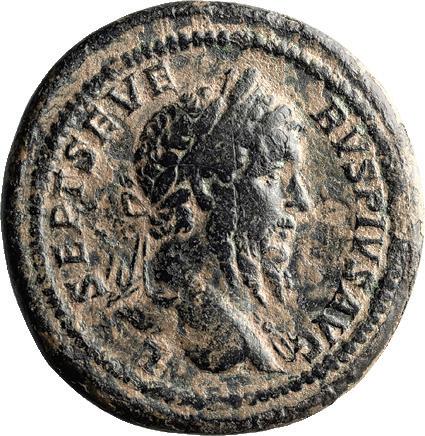




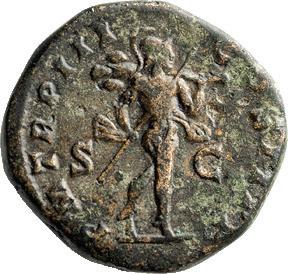


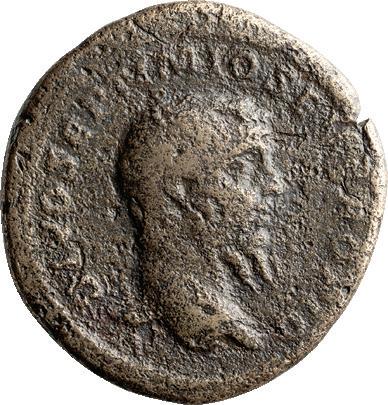

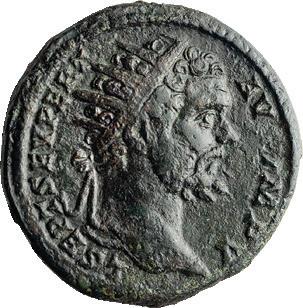






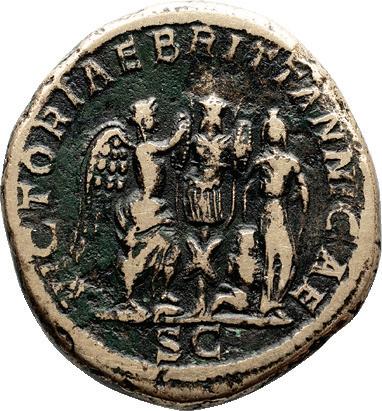



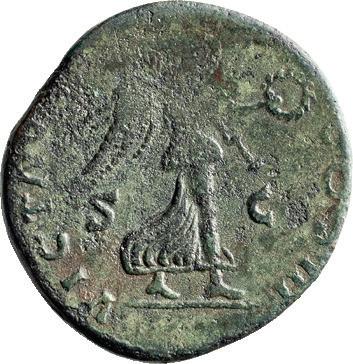


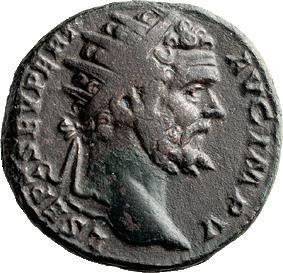


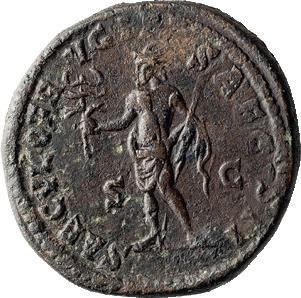

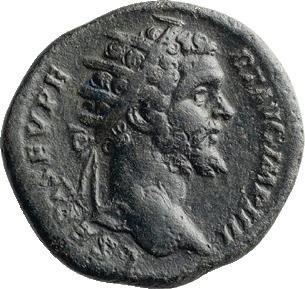

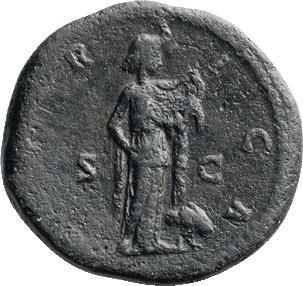

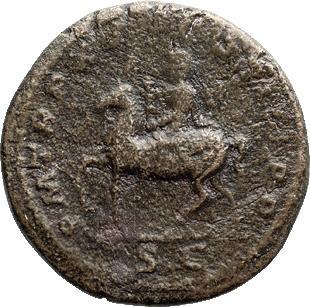

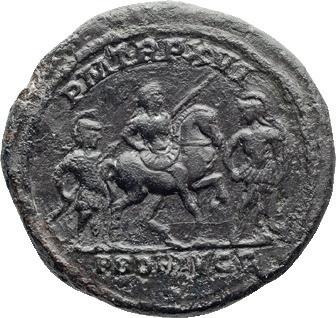






coll.), RSC-137a. Obv: SEVERVS PIVS AVG BRIT Head laureate r. Rx: FELICITAS - PVBLICA Felicitas standing l. holding caduceus and cornucopia. Ex Curtis L. Clay Collection; ex Savoca, eBay, 1 Oct. 2016. A very rare type of the end of Septimius’ reign, probably introduced only a week or two before news of his death reached Rome. About ten specimens known to C. Clay; none in Reka Devnia hoard. Porous surfaces on reverse. gVF 300 Funeral Pyre
105. SEPTIMIUS SEVERUS, DIVUS; Died 211 AD, Rome, Denarius, 2.99g. BM-27, C-89, RIC-191. Obv: DIVO SEVERO PIO Head bare r. Rx: CONSECRATIO Funeral pyre of four stories surmounted by emperor in facing quadriga. Ex Curtis L. Clay Collection; ex CNG 47, 16 Sept. 1998, lot 1792. Scarce: only eight specimens in Reka Devnia hoard. Toned Near MS 600
106. SEPTIMIUS SEVERUS; 193-211 AD, Rome, 193 AD, Sestertius, 22.34g. BM-473, pl. 20.4 (rev. only, same die). Obv: IMP CAES L SEPT - SEV PERT AVG Head laureate r. Rx: LIBERAL AVG [TR P] COS around, S C in exergue, Largesse scene: Septimius seated l. between Liberalitas and lictor standing l. on platform; to l. citizen climbing ladder and spreading toga to receive coins. Ex Curtis L. Clay Collection; ex J. Schulman, 6 June 1967, lot 1492. Rare: all known specimens of this sestertius seem to come from a single reverse die. EF / VF 950
107. SEPTIMIUS SEVERUS; 193-211 AD, Rome, 193 AD, Sestertius, 18.97g. BM-471. Obv: IMP CAES L SEPT - SEV PERT AVG Head laureate r. Rx: [LEG XIII]I GEM M V on l. and r., [TR P] COS in exergue, Legionary eagle between two standards, each of which is decorated with a capricorn. Ex Curtis L. Clay Collection; ex CNG E398, 31 May 2017, lot 560. Only this Fourteenth Legion was commemorated on Septimius’ sestertii, because it was the legion that first proclaimed him emperor at Carnuntum. Extremely pleasant surfaces. Excellent VF 750
108. SEPTIMIUS SEVERUS; 193-211 AD, Rome, 193 AD, Sestertius, 30.96g. BM-471. Obv: [IMP C]AES L SEPT - SEV P[ERT AVG] Head laureate r. Rx: Legend mostly missing, Legionary eagle between two standards, each of which is decorated with a capricorn. Ex Curtis L. Clay Collection; ex CGB Paris E125, Dec. 2021. Heavy specimen. Only this Fourteenth Legion was commemorated on Septimius’ sestertii, because it was the legion that first proclaimed him emperor at Carnuntum. aF 400
109. SEPTIMIUS SEVERUS MULE, FROM OLD OBV. DIE; 193-211 AD, Rome, Mule, 193/4 AD, Sestertius, 26.62g. Obv. of 193 AD, IMP CAES L SEPT - SEV PERT AVG Head laureate r. / Rev. of 194 AD, VIRT AVG TR P IICOS II P P on l. and r., S - C across field, Virtus standing l. holding Victory and reversed spear. Ex Curtis L. Clay Collection; purchased from Gary Tomasson, Calgary, Aug. 2016. This combination of obverse and reverse legend seems to be unpublished on sestertii. aVF 500 110. SEPTIMIUS SEVERUS; 193-211 AD, Rome, cf. early 194 AD, Sestertius, 18.05g. Cf. BM-511. Obv: L SEPT SEV PE - RT AVG IMP III Head laureate r. Rx: VIRT AVG TR P II COS [II P P] on l. and r., S - C across field, Virtus standing l. holding Victory and reversed spear. Ex Curtis L. Clay Collection. Not in BMC, RIC, or Cohen if the obverse legend actually ends IMP II; but it could also be the commoner IMP III. F 400 111. SEPTIMIUS SEVERUS; 193-211 AD, Rome, 194 AD, Sestertius, 28.51g. Bust var. of BM-509. Obv: L SEPT SEV PE - RT AVG IMP III Bust laureate, draped, cuirassed r. Rx: [VICT] AVG - TR P II COS [II P P] around, S - [C] across field, Victory advancing r., holding wreath and palm over shoulder. Ex Curtis L. Clay Collection; ex CGB Paris, Rome 8, lot 16. F 400
112. SEPTIMIUS SEVERUS; 193-211 AD, Rome, 194 AD, Sestertius, 28.06g. Cf. BM-512. Obv: L SEPT SEV PE - RT AVG IMP III Bust laureate, draped, cuirassed r. Rx: VIRT AVG TR P - II COS II P P on l. and r., S - C across field, Virtus standing l. holding Victory and reversed spear. Ex Curtis L. Clay Collection; ex Gitbud & Naumann E21, 7 Sept. 2014, lot 664. Flan pinched at bottom on both sides from ancient mounting. Several hairlines on reverse at 9:00. EF / aVF 350
113. SEPTIMIUS SEVERUS; 193-211 AD, Rome, 194 AD, Sestertius, 24.61g. Cf. BM-519 (IMP IIII). Obv: L SEPT SEV PE - RT AVG IMP III Head laureate r. Rx: ANNONA AV[G COS II] P P on l. and r., S - C across field, Annona standing l., holding two wheat ears over modius at her feet, and cornucopia. Ex Curtis L. Clay Collection; ex CGB Paris, E36, 23 Dec. 2013. aVF 400
114. SEPTIMIUS SEVERUS; 193-211 AD, Rome, 195 AD, Sestertius, 22.41g. BM-560. Obv: L SEPT SEV PERT - AVG IMP V Head laureate r. Rx: SAECVLI FELICITAS S - C, Felicitas standing l., a “Kraay overstrike”, the reverse mistakenly struck twice with different dies of the same type. Ex Curtis L. Clay Collection; ex CNG E474, 25 March 2020, lot 595 (“Summer Haven Collection”). Strange double-striking on reverse, showing obverse at top and bottom, which means the reverse die moved while the obverse was struck twice to bring up a sharper image. gVF / VF 485
115. SEPTIMIUS SEVERUS; 193-211 AD, Rome, 195 AD, Sestertius, 24.90g. BMC-p. 143, b, citing C-633 (Paris). Obv: L SEPT SEV PERT - AVG IMP VII Bust laureate r., with fold of cloak on front shoulder. Rx: SAECVLI F[ELICITAS] on l. and r., S - C across field, Felicitas standing l., placing r. foot on prow and holding caduceus and cornucopia. Ex Curtis L. Clay Collection; ex Ancient Auction House, eBay, 3 Jan. 2004. This is apparently a mule struck from an earlier obverse die, since when IMP V advanced to IMP VII in this
issue, the descriptive reverse legends like SAECVLI FELICITAS were all meant to be replaced by a legend recording the emperor’s latest titles, namely DIVI M PII F P M TR P III COS II P P. Only one coin, a sestertius in Paris, was known to combine a descriptive reverse legend with IMP VII on the obverse; our coin seems to be the second known, and is from the same dies as the Paris specimen. F 350
116. SEPTIMIUS SEVERUS; 193-211 AD, Rome, 195 AD, Sestertius, 20.39g. BM-580. Obv: [L SEPT SEV] PERT - AVG IMP VII Bust laureate r., with fold of cloak on front shoulder and behind neck. Rx: P M TR P III COS [II P P] around, S - C across lower field, Fortuna standing l. holding rudder on globe and cornucopia, without wheel at feet. Ex Curtis L. Clay Collection; ex Bertolami E93, 9 Jan. 2021, lot 642. VF / F 500
117. SEPTIMIUS SEVERUS; 193-211 AD, Rome, 196 AD, Sestertius, 25.87g. BM-599 note. Obv: [L S]EPT SEV PERT - AVG IMP VIII Bust laureate, draped, cuirassed r. Rx: F - ORTVNA - E REDVCI on l. and r., S - C in exergue, Fortuna seated l. holding rudder on globe and cornucopia, wheel under seat. Ex Curtis L. Clay Collection; ex CNG E262, 17 Aug. 2011, lot 353. Flan crack at 9:00. VF 450
118. SEPTIMIUS SEVERUS; 193-211 AD, Rome, 196 AD, Sestertius, 19.20g. BM-595. Obv: L SEPT SEV PERT - AVG IMP VIII Head laureate r. Rx: ADVENTVI A[VG FELICISSIMO] around, S C in exergue, Septimius on horseback r. raising r. hand in greeting, Virtus holding vexillum leads horse. Ex Curtis L. Clay Collection; ex CNG E329, 25 June 2014, lot 479 (Fairfield Collection). Commemorates Septimius’ return to Rome after defeating Albinus at Lugdunum in February 196, according to C. Clay’s new chronology, not February 197 as traditionally stated. F 600
119. SEPTIMIUS SEVERUS; 193-211 AD, Rome, 196-7 AD, Sestertius, 25.01g. Cf. BM-605, pl. 25.9 (same obv. die). Obv: [L] SEPT SEV PERT - AVG IMP [VIII] Head laureate r. Rx: [VO]TA PVBLICA around, S C in exergue, Togate, veiled figures of Septimius, taller, on r., and Caracalla Caesar, shorter, on l., both sacrificing over tripod altar between them, Septimius from a patera and Caracalla from his r. hand; each also holds a roll in his l. hand. Ex Curtis L. Clay Collection; purchased from Marc Breitsprecher, Aug. 2019; earlier in the Jeff Clark VOTA collection. A rare type, occurring on only three sestertius reverse dies, that adds the smaller figure of Caracalla to the standard IMP VIII / VOTA PVBLICA type of Septimius sacrificing alone. Of these three sestertius reverse dies that add Caracalla to the type, two place the letters S C across the field, while the third places them in the exergue. Our coin is the rarer variant with S C in exergue, only the second such specimen known to Curtis Clay, the other being in the Vienna collection. VG
300
120. SEPTIMIUS SEVERUS; 193-211 AD, Rome, 196-7 AD, Sestertius, 24.58g. Cf. BM-604 (S C in exergue). Obv: L SEPT SEV PERT - AVG IMP VIII Bust laureate, draped, cuirassed r. Rx: [SE]CVRITAS - PVBL[ICA] on l. and r., S - C across field, Securitas seated l. holding globe in r. hand and resting l. elbow on throne. Ex Curtis L. Clay Collection; ex Dionysos, eBay, 6 July 2018. F 400 121. SEPTIMIUS SEVERUS; 193-211 AD, Rome, 196 AD, Sestertius, 19.72g. BMC-p. 146 note. Obv: L SEPT SEV PERT - AVG IMP VIII Bust laureate, draped, cuirassed r. Rx: P M T - R P IIII - C - OS II P - P on l. and r., S - C across field, Pax seated l. holding branch and transverse scepter. Ex Curtis L. Clay Collection; acquired from Lars Rutten. VF 700 122. SEPTIMIUS SEVERUS OVERDATE; 193-211 AD, Rome, 197 AD, Sestertius, 23.95g. Cf. BMC-p. 152. Obv: L SEPT SEV PERT - AVG IMP VIII Head laureate r. Rx: P M TR P - V - C - OS II P P Pax seated l. holding branch and transverse scepter. Ex Curtis L. Clay Collection; ex Lucernae, eBay, 24 March 2010. The Pax seated reverse die of this coin was originally dated TR P IIII, as shown by the preceding lot, but later that date was altered to TR P V on the same die, so that it could continue to be used after 1 Jan. 197. gVF 500 123. SEPTIMIUS SEVERUS; 193-211 AD, Rome, 197 AD, Sestertius, 22.25g. BMC-p. 152, citing C -445 (Copenhagen). Obv: L SEPT SEV PERT - AVG IMP VIII Head laureate r. Rx: P M TR P V COS II P P on l. and r., S - C across field, Pax seated l. holding branch and transverse scepter. Ex Curtis L. Clay Collection; ex Dionysos, eBay, 8 Nov. 2012. VF 500
124. SEPTIMIUS SEVERUS; 193-211 AD, Rome, 196 or 197 AD (trib. number off flan), Sestertius, 18.84g. BMC-p. 152, citing C-445 (Copenhagen). Obv: [L] SEPT SEV PERT - [AVG IMP VIII] Head laureate r. Rx: [P M TR P IIII or V] COS II P P on l. and r., S - C across field, Pax seated l. holding branch and transverse scepter. Ex Curtis L. Clay Collection; ex CGB, Paris, Oct. 2020. VF 550
125. SEPTIMIUS SEVERUS; 193-211 AD, Rome, 197 AD, Sestertius, 16.33g. Obv: [L SEPT SE]V PERT - AVG [IMP VIII, VIIII, or X; numeral is off flan] Head laureate r. Rx: [PROFECTIO AVG] around, S C in exergue, Septimius on horseback r., holding spear. Ex Curtis L. Clay Collection; ex Munzenauktion Essen, List 14, Dec. 2009. VF / F 450 Elephant
126. SEPTIMIUS SEVERUS; 193-211 AD, Rome, 197 AD, Sestertius, 25.43g. BM-602. Obv: L SEPT SEV PERT - [AVG IMP VIII] Head laureate r. Rx: MVNIFICENTIA AVG on l. and above, S C in exergue, Elephant walking r. Ex Curtis L. Clay Collection; ex CNG E448, 17 July 2019, lot 477. this is an extremely beautiful example of this type, portraying a powerful, beautifullystruck image of an elephant. A very desirable type for collectors. aEF 850
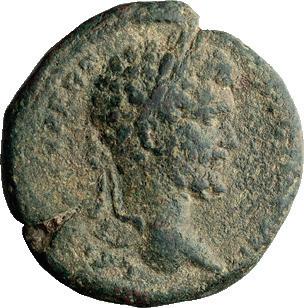

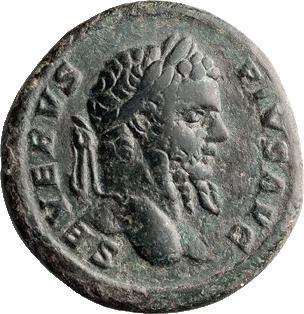


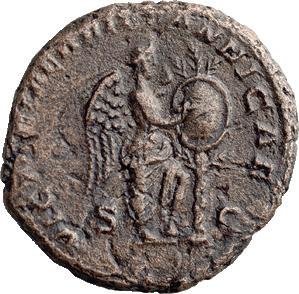

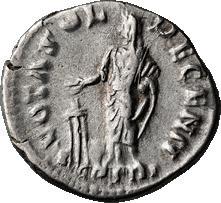









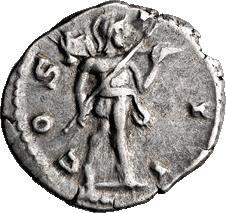








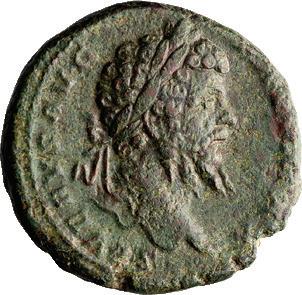






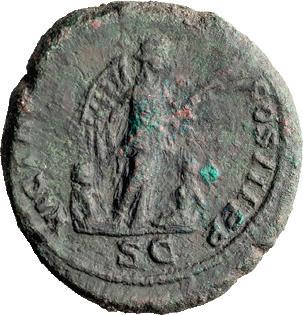

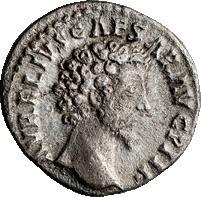

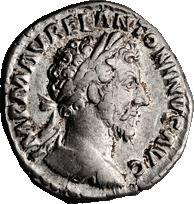
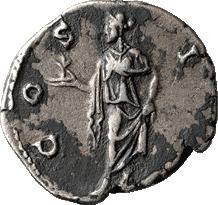




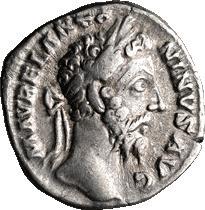
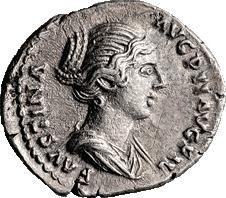
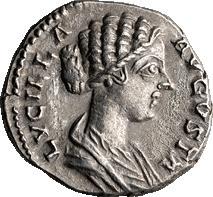



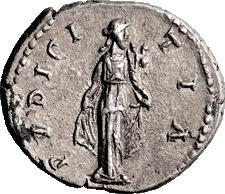
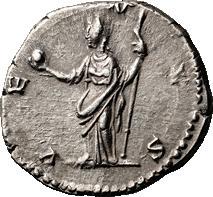
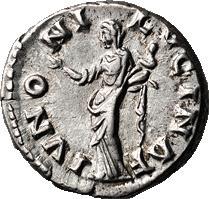
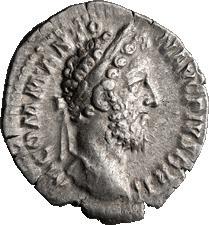
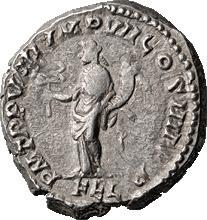





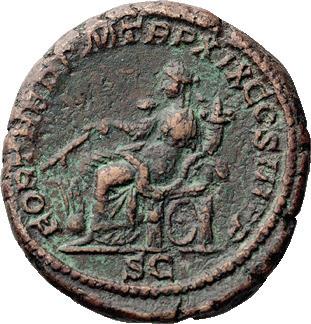



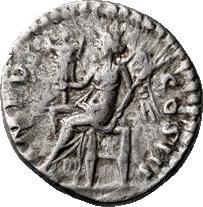


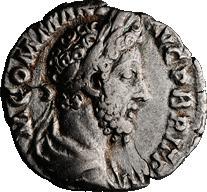



127. SEPTIMIUS SEVERUS; 193-211 AD, Rome, 197 AD, Sestertius, 21.19g. Bust var. of BM-602. Obv: [L SEPT] SEV PERT - AVG IMP VIII Bust laureate r., with fold of cloak on front shoulder. Rx: MVNIFICENTIA AVG on l. and above, S C in exergue, Elephant walking r. Ex Curtis L. Clay Collection; ex Roma Num. E29, 27 Aug. 2016, lot 745 (10 sestertii). gF 500
128. SEPTIMIUS SEVERUS; 193-211 AD, Rome, 197 AD, Sestertius, 21.51g. Bust var. of BM-621. Obv: L SEPT SEV PERT - AVG IMP X Bust laureate, cuirassed r. Rx: P M TR P V - COS II P [P] on l. and r., S - C across field, Bonus Eventus standing l., sacrificing from patera over altar at his feet and holding two wheat ears downwards behind him. Ex Curtis L. Clay Collection; purchased from Carl Subak, Chicago, July 2009. Some minor irregularty in planchet surafces. aEF 600
129. SEPTIMIUS SEVERUS; 193-211 AD, Rome, 198 AD, Sestertius, 21.03g. BMC-p. 153 corr. (trib. no. misread TR P V). Obv: [L SEPT SEV PERTAVG IMP X] Head laureate r. Rx: [MART PACIF] P M TR P VI COS II P P around, S - C across field, Mars standing l. placing r. foot on helmet and holding branch and spear. Ex Curtis L. Clay Collection; ex Dionysos, eBay, 8 July 2015. Not in good condition, but only the second recorded specimen with Septimius’ imperial titles added to the reverse legend, and from the same dies as the previously unique example, which is in the Vienna collection. The tribunician number on this coin has previously been misread TR P V, but on our new specimen ...TR P VI C... is clearly legible. G / VG 400
130. SEPTIMIUS SEVERUS; 193-211 AD, Rome, 197-8 AD, Sestertius, 21.07g. Bust var. of BMC-p. 154. Obv: L SE[PT SEV PE]RT - AVG I[MP X] Head laureate r. Rx: VICT AVG -[G COS II] P P on l. and r., S - C across field, Victory advancing l. holding wreath and palm. Ex Curtis L. Clay Collection; ex Nomisma 36, lot 321. Powerful portrait, struck on a small flan. EF 1200
131. SEPTIMIUS SEVERUS; 193-211 AD, Rome, 198 AD, Sestertius, 21.26g. BMC-p. 154, citing Cohen and the Herpin Coll. Obv: L SEPT SEV PERTAVG IMP X Head laureate r. Rx: P M TR P VI - COS II P P on l. and r., S - C across field, Sol standing l., raising r. hand and holding whip in l. hand. Ex Curtis L. Clay Collection; ex Dorotheum, Vienna, Sale 497, 13 May 2003, lot 205; ex Hess, Lucerne, 18 Dec. 1933, lot 717 (Laughlin Collection). Cohen-450 cites a specimen of this sestertius from the Herpin Collection, sold by Sotheby on 3 April 1857; very likely to be our coin, given its rarity and the fact that Herpin was known to admit only coins of excellent quality to his collection. EF 3000
Medallic Type Sestertius
132. SEPTIMIUS SEVERUS; 193-211 AD, Rome, 200 AD, Sestertius, 25.57g. BMC-p. 321. Obv: SEVERVS AVG - PART MAX Bust laureate, draped, cuirassed r., seen from front. Rx: RESTITVTO - R VRBIS on l. and r., S - C across field, Septimius in military dress standing l., sacrificing with right hand from patera over tripod altar at his feet, and holding reversed spear in left hand. Ex Curtis L. Clay Collection; ex Rauch 96, 10 Dec. 2014, lot 414. For about twelve years, from early in 198 AD until late in 209, Septimius Severus, for an unknown reason, struck sestertii in virtually every year, but only in very low volume. This and the next coin are the first rare “middle-period” sestertii of Septimius in the present catalogue; only five or six specimens of this sestertius are known, all from the same obverse die and from two reverse dies. The obverse of this coin is that of a medallion, rather than that of a sestertius. But, as this coin has “SC” on the reverse, it cannot be called a medallion. Extremely rare and highly desirable. aVF 1750
133. SEPTIMIUS SEVERUS; 193-211 AD, Rome, 200 AD, Sestertius, 22.84g. BMC-p. 321. Obv: SEVERVS AVG - PART MAX Bust laureate, draped, cuirassed r., seen from front. Rx: RESTITVTOR - VRBIS on l. and r., S - C across field, Septimius in military dress standing l., sacrificing with right hand from patera over tripod altar at his feet, and holding reversed spear in left hand. Ex Curtis L. Clay Collection; ex CGB E150-88879, Paris, 29 Feb. 2016. For about twelve years, from early in 198 AD until late in 209, Septimius Severus, for an unknown reason, struck sestertii in virtually every year, but only in very low volume. This and the preceding coin are the first rare “middle-period” sestertii of Septimius in the present catalogue; only five or six specimens of this sestertius are known, all from the same obverse die and from two reverse dies. VG 425 Lost Equestrian Statue
134. SEPTIMIUS SEVERUS; 193-211 AD, Rome, 201 AD, Sestertius, 28.78g. BMC-p. 624, 801A. Obv: SEVERVS AVG - PART MAX Bust laureate, draped, cuirassed r. Rx: OPTIMO PRINC SPQR P M TR P VIII[I] around, S C in exergue, Equestrian statue: Septimius holding statuette of Victory and vertical reversed spear, seated on horse stepping r. Ex Curtis L. Clay Collection. Only the second recorded specimen of this sestertius, the first, from the same dies, having appeared in M & M AG XXVIII, 19 June 1964, lot 397. Septimius’ equestrian statue apparently closely imitated the famous equestrian statue of Trajan in his Forum (BMC pl. 38.2), and the legend of Septimius’ coin type, OPTIMO PRINC SPQR P M TR P VIIII, therefore also took over Trajan’s well known reverse legend, SPQR OPTIMO PRINCIPI. While this coin has a planchet defect in the obverse field, it represents a magnificent equestrian image of Septimius Severus that no longer exists today. Beard of emperor flatly struck. EF / aEF 5000
135. SEPTIMIUS SEVERUS; 193-211 AD, Rome, 204 AD, Sestertius, 24.56g.
BMC-p. 341. Obv: SEVERVS PIVS - AVG P M TR P XII Bust laureate, draped, cuirassed r. Rx: INDVLGENTIA AVG[G] around, IN CARTH in exergue, S C below forepart of lion, Dea Caelestis riding sideways, but head r., holding thunderbolt and scepter, on lion leaping r. above waters issuing from rock. Ex Curtis L. Clay Collection, acquired from Barry Murphy; earlier in the collection of Cornelius C. Vermeule, who acquired it from Baldwin’s in 1964, and from Christie’s Earl Fitzwilliam Sale of 1949. Somewhat corroded surfaces. VG 3000
Saecular Games
136. SEPTIMIUS SEVERUS; 193-211 AD, Rome, 204 AD, 28.24g. BMC-p. 341, *. Obv: SEVERVS PIVS - AVG P M TR P XII Bust laureate, draped, cuirassed r. Rx: COS III LVD SAEC FEC above, S C in exergue, Saecular Games sacrifice of sow, attended by Septimius, Hercules, and Liber. Ex Curtis L. Clay Collection; ex Helios I, 17 April 2008, lot 314. This is an extremely rare type, issued to commemorate the Saecular Games. Like a previous lot in this sale, this coin is certainly a strong medallic type, but the “SC” in the reverse field prevents it from being called a medallion. gVF 5000
137. SEPTIMIUS SEVERUS; 193-211 AD, Rome, 207 AD, Sestertius, 21.55g. BMC-p. 347 (obv. legend SEVERVS PIVS AVG). Obv: L SEPTIMIVS SEVERVS PIVS AVG Bust laureate, draped, cuirassed r. Rx: P M TR P XV COS III P [P] around, S C in exergue, Septimius holding vertical spear and [statuette of Victory] on horse pacing l. Ex Curtis L. Clay Collection; ex Rauch 87, 8 Dec. 2010, lot 559. Apparently only the second known sestertius of this type dated TR P XV; the other, with short obverse legend SEVERVS PIVS AVG, was reported by C-496 from the Dupre Collection. For the earliest depiction on sestertii of what was very likely the same equestrian statue of Septimius Severus, see lot 134 above. Reverse shows substantial traces of old, probably ancient, silvering. VF / F 2000
138. SEPTIMIUS SEVERUS; 193-211 AD, Rome, c. 207 AD, Sestertius, 18.17g. BMC-p. 326, * note. Obv: L SEPTIMIVS SE - [VERVS PIVS AVG] Bust laureate, draped, cuirassed r. Rs: [VIRTVS A]VGVSTOR around, [S C] in exergue, Virtus or Roma seated l. on throne, resting l. arm on shield, holding [Victory] and parazonium. Ex Curtis L. Clay Collection; ex CGB, Paris, July 2013. From the same obverse die as the preceding lot. Poor centering. VF 400 Hobler Collection, 1860, No. 1466
139. SEPTIMIUS SEVERUS; 193-211 AD, Rome, c. 209 AD, Sestertius, 27.14g. BMC-p. 326, * note. Obv: L - SEPT SEVE - RVS PIVS AVG Bust laureate r., with fold of cloak on front shoulder and behind neck. Rs: VIRTVS - AVGVSTOR on l. and r., S C in exergue, Virtus or Roma seated l. on throne, resting l. arm on shield, holding Victory and parazonium. A very rare middle period sestertius, though the same type is common on denarii. This coin is probably from the Hobler Collection, published in 1860, no. 1466, and obtained by Hobler from the Musgrave Cabinet, since Hobler’s description of the coin’s fine condition and black patination closely matches our piece. Ex Curtis L. Clay Collection; ex Roma E18, 27 June 2015, lot 956. The pedigree for this coin is not utterly certain, but in all probability, correct. In 1860, it was obtained by Musgrave, whose description of the coin’s slightly unusual toning and surfaces closely matches our coin. The Hobler catalogue had no illustrations of the coins. aEF / gVF 1500 140. SEPTIMIUS SEVERUS; 193-211 AD, Rome, 209 AD, Sestertius, 26.24g. BMC-p. 387, *. Obv: [L S]EPT SEV[E - RVS] PIVS AVG Head laureate r. Rx: P M TR P XVII COS [III P P] around, S C in exergue, Annona seated r. holding wheat ears before her, at her feet boy standing l., above the boy prow of ship. Ex Curtis L. Clay Collection; ex Savoca Blue E5, 25 Feb. 2018. Late in 209 AD new sestertius reverse types, including our Annona seated type, were introduced for Septimius, Caracalla, and Geta , and the same types were then carried on in 210. Dated to 209 these types are rare, and can be considered to be the latest rare middle-period sestertii of the three Severan emperors; but in 210 the new types were common, so the years of reduced sestertius production had apparently ended. F / aVF 450 VICTORIAE BRITTANN[I]CAE
141. SEPTIMIUS SEVERUS; 193-211 AD, Rome, 210-11 AD, Sestertius, 26.34g. Cf. BMC-811 note (type considered doubtful for Septimius). Obv: L - SEPT SEVE - RVS PIVS AVG Head laureate r. Rx: VICTORIAE BRITTANN[I]CAE around, S C in exergue, Victory standing r. erecting trophy, to r. two captives with hands tied behind their backs, namely a standing woman facing and a man seated l. Ex Curtis L. Clay Collection; ex CGB, Paris, July 2017. Cohen and Mattingly doubted the existence of this reverse type for Septimius, since they only knew such a sestertius from a description in the Tiepolo Catalogue. In recent years a number of clearly authentic specimens of this sestertius have turned up, however, including one in Berlin; the J. S. Wagner specimen in CNG E191, 2008, lot 284; and the example from the Clay Collection offered here. Though the obverse is worn, the reverse of this coin is rather sharp, and of a very famous type. aVF / VF 1500
142. SEPTIMIUS SEVERUS; 193-211 AD, Rome, 211 AD, Sestertius, 22.26g. Cf. BM-262, pl. 61.8 (As not Sest.). Obv: L - SEPT SEVE - RVS PIVS AV[G] Head laureate r. Rx: FORT RED P M TR P XIX CO[S III P P] around, S C in exergue, Fortuna Redux seated l., holding rudder and cornucopia, wheel under seat. Ex Curtis L. Clay Collection; ex Rauch, 10. Fernauktion, 2 March 2006, lot 523. The As of this type is well known, but this is apparently the first
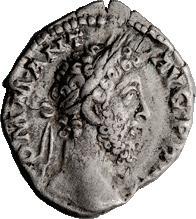
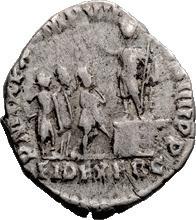
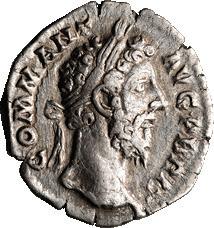

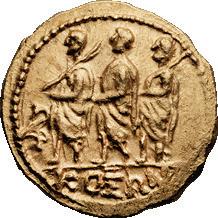

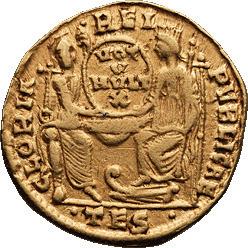
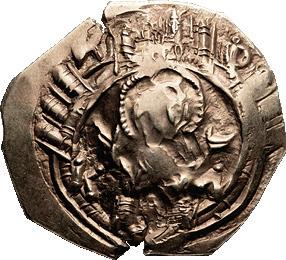



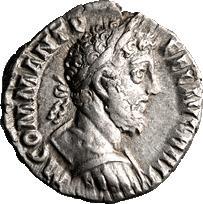

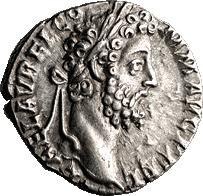







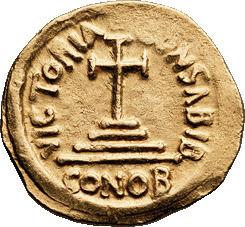






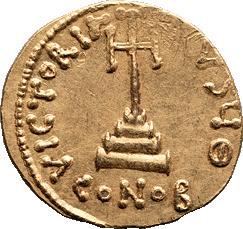

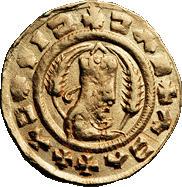

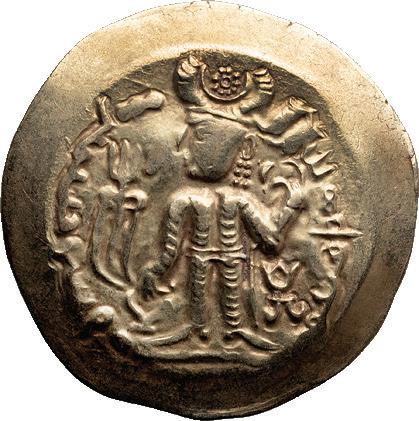
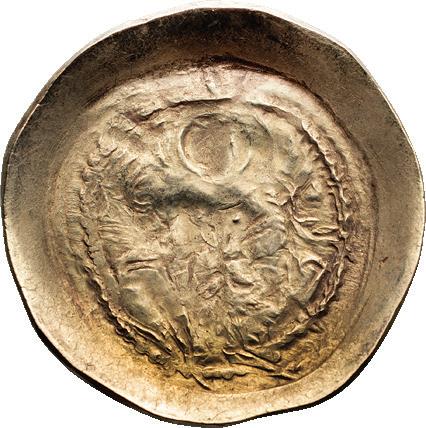
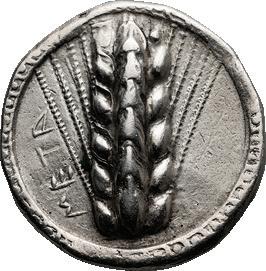
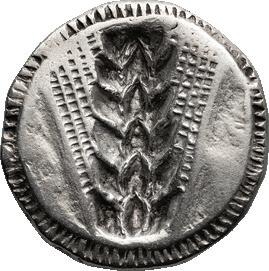

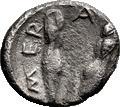
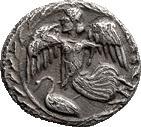

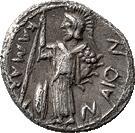
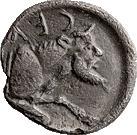
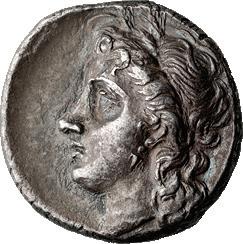
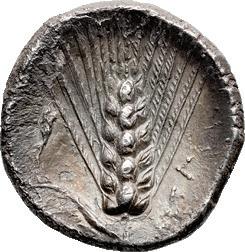
















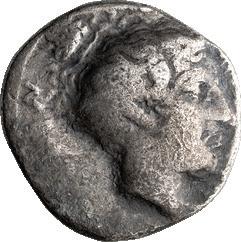
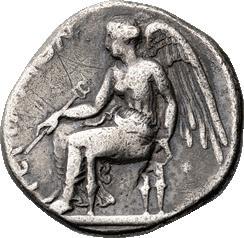









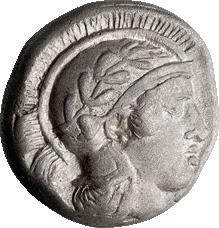

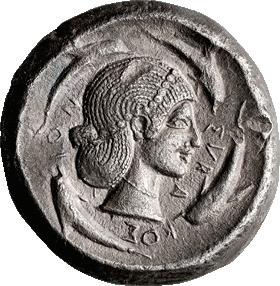
recorded sestertius. The Fortuna Redux reverse type for the living Septimius is interesting, since it suggests that the emperor had already begun to make plans for his return from Britain to Rome when he fell ill and died at York on 4 Feb. 211 AD. VF 2000
New reverse type with BRIT in obv. legend 143. SEPTIMIUS SEVERUS; 193-211 AD, Rome, 210-11 AD, Sestertius, 26.31g. Cf. BM-811, pl. 49.1. Obv: L - SEPT SEVERVS - PIVS AVG BRIT Bust laureate r., with fold of cloak on front shoulder and behind neck. Rx: VICTORIAE BRITTANNI-CAE around (end of rev. legend doublestruck), S C in exergue, Two Victories standing facing one another, placing round shield on palm tree growing between them; at foot of palm, two captives seated l. and r. Ex Curtis L. Clay Collection; ex CNG E452, 18 Sept. 2019, lot 741. Apparently unique with BRIT in obverse legend. That title was unexpectedly omitted from the obverse legend of a number of Severan sestertii of 210-11 AD, probably because the relevant obverse dies had originally been engraved before Septimius accepted the title Brittannicus in mid 210, but erroneously remained in use even after the emperors’ acceptance of that title, when it should have been added to their obverse legends. This is wonderful example of this highly desirable type. It has some minor areas of surface cleaning, which is typical of coins collected in the 16th and 17th centuries. Virtually MS 9500
144. SEPTIMIUS SEVERUS, DIVUS; Died 211 AD, Rome, Sestertius, 27.85g.
BM-50, pl. 66.7. Obv: DIVO SEPTIMIO SEVER[O] PIO Head bare r. Rx:
CONSECRATIO around, S C in exergue, Funeral Pyre with base and four tiers, adorned with garlands and statuary and with facing quadriga on top. Ex Curtis L. Clay Collection; ex Ares Web 4, 24 Nov. 2019, lot 1386. The commoner of the two sestertius types of Divus Septimius Severus, though still valued at 80 francs by Cohen. Obverse corrosion. VG / F 425
145. SEPTIMIUS SEVERUS, DIVUS; Died 211 AD, Rome, Sestertius, 22.51g. BMC-p. 429, *. Obv: DIVO SEPTIMIO SE[VE]RO PIO Head bare r. Rx: CONSECRATIO around, S - C across field, Eagle grasping thunderbolt in talons, flying r. and upwards in order to carry the deceased emperor to heaven on his back. Ex Curtis L. Clay Collection; ex Rauch E-Live 18, 6 Nov. 2015, lot 226. This is the rarer of the two sestertius types of Divus Septimius Severus, but is valued at only 10 francs by Cohen-83. This valuation must surely be just a misprint for 100 francs or more. Somewhat corroded. VG 500
146. IRREGULAR COPY OF SEPTIMIUS SEVERUS SESTERTIUS; 193211 AD, After 194 AD, 19.54g. Cf. BM-509, pl. 22.3 (official not copy). Obv: L SEPT SEV PE - [RT] AVG IMP III Head laureate r. Rx: VICT A[VG TR P] II - COS III on l. and r., S - C across field, Victory advancing r. holding wreath and palm. Ex Curtis L. Clay Collection; acquired from Platt, Paris, July 1966. Obverse flatly struck at high points. gVF 200
147. SEPTIMIUS SEVERUS; 193-211 AD, Rome, 194 AD, Dupondius, 12.68g. Cf. BMC-p. 126, (4), citing Berlin and C- 638 (Herpin Coll.). Obv: IMP CAE L SEP - SEV PERT AVG Head radiate r. Rx: African god standing l., a “Kraay overstrike”, struck twice with two different rev. dies of the same type. Surviving legend from the first strike, only SAEC on the r.; from the second strike, SAECVLO FR - VG... on the l. and [CO]S II on the lower r., plus SC across field. Ex Curtis L. Clay Collection; ex Lanz 121, 22 Nov. 2004, lot 438. Apparently only the second recorded Severan middle bronze to show this unusual reverse type. The first such coin is in the Berlin collection, and is also a dupondius, from the same obverse but a different reverse die than our coin, and not a Kraay overstrike. EF 1500
148. SEPTIMIUS SEVERUS; 193-211 AD, Rome, 194 AD, Dupondius, 13.41g. BM-513, pl. 22.8. Obv: [L SEPT] SEV PERT - AV[G IMP III] Head radiate r. Rx: [VIRT AVG TR] P - II COS II P [P] around, S - C across field, Virtus standing l. holding Victory and spear. Ex Curtis L. Clay Collection; ex Naville E47, 3 March 2019, lot 504. VF 200
149. SEPTIMIUS SEVERUS; 193-211 AD, Rome, 194 AD, Dupondius, 10.53g. BM-523, pl. 22.10. Obv: IMP IIII, Head radiate r. Rx: [A - F] - R - I - C - A on l. and r., S - C across field, Africa standing r. wearing elephant-skin headdress, and drawing out drapery to form pocket filled with wheat ears before her breast; at her feet, small lion with mane, also standing r. Ex Curtis L. Clay Collection; ex CNG E484, 27 Jan. 2021, lot 828. Most dupondii of the early years of Septimius’ reign, including his AFRICA dupondii, are rarer than his corresponding sestertii with the same reverse types. EF 750
150. SEPTIMIUS SEVERUS; 193-211 AD, Rome, 195 AD, Dupondius, 12.20g. BMC-p. 130, *, citing C-400 (Paris). Obv: IM[P V], Head radiate r. Rs: P M TR P III - COS II P P on l. and r., S - C across field, Mars advancing r. holding spear and trophy over shoulder. Ex Curtis L. Clay Collection; acquired from CGB, Paris. EF / VF 500
151. SEPTIMIUS SEVERUS; 193-211 AD, Rome, 195 AD, Dupondius, 12.81g. BMC-p. 139. Obv: IMP V, Head radiate r. Rx: P M TR P III - COS II P P on l. and r., S - C across field, Minerva (Palladium) standing l., holding transverse spear and round shield. Ex Curtis L. Clay Collection; acquired from CNG, Paris, Rome 8, lot 38. aEF 600
152. SEPTIMIUS SEVERUS; 195 AD, 12.11g. BM-565, pl. 24.4 (same dies). Obv: IMP V, Head radiate r. Rx: ROMAE - AE - T - ERNAE on l. and r., S - C across field, Roma seated l. above shield, holding Victory and spear. Ex Curtis L. Clay Collection, acquired from Baldwin’s, July 1973. aEF 500
153. SEPTIMIUS SEVERUS; 193-211 AD, Rome, 195 AD, Dupondius, 12.71g.
BM-566, pl. 24.5 (same obv. die). Obv: IMP V, Head radiate r. Rx: SAECVLI FELICITAS around, S - C across field, Felicitas standing l., placing r. foot on prow and holding caduceus and cornucopia. Ex Curtis L. Clay Collection; acquired from Lucernae via eBay. Only about five specimens of this dupondius are known to Clay, coming from just one obverse die and two reverse dies. aEF 400
154. SEPTIMIUS SEVERUS; 193-211 AD, Rome, 207 AD, Dupondius, 11.51g. Cf. BM-852, pl. 51.8 (same rev. die, but an As not a dupondius). Obv: SEVERVS - PIVS AVG Bust radiate, draped, cuirassed r. Rx: P M TR P XV - COS III P P on l. and r., S - C in exergue, statue of Septimius on horseback l. Ex Curtis L. Clay Collection; ex CGB, Paris, 29 Feb. 2016. The same rare Equestrian Statue reverse type of Septimius Severus also appears on two sestertii and a denarius in this sale. F 225
Unique Dupondius
155. SEPTIMIUS SEVERUS; 193-211 AD, Rome, 208 AD, Dupondius, 11.12g. Cf.BM-854, pl. 51.10 (sestertius). Obv: SEVERVS - PIVS AVG Head radiate r. Rx: PROF AVGG in exergue, P M TR P XVI above, [S C] on l. and r. or in exergue, Septimius holding spear on horse stepping r., preceded and followed by two soldiers. Ex Curtis L. Clay Collection; ex Ars Antiqua, London, lot 324. Apparently the only known dupondius of Septimius with this reverse type, though a corresponding As was reported by Cohen-575 to be in the Paris collection. aEF 2950
156. SEPTIMIUS SEVERUS; 193-211 AD, Rome, 194 AD, As, 9.89g. Cf. BM503, pl. 21.11. Obv: [IMP II], Head laureate r. Rx: VICT AV[G TR P II COS II] around, S - C across field, Victory advancing r. holding wreath and palm. Ex Curtis L. Clay Collection; ex Leu E4, 24 June 2018, lot 875. EF 485
157. SEPTIMIUS SEVERUS; 193-211 AD, Rome, 194 AD, As, 11.10g. BMC-p. 127 corr. Obv: [IMP II], Head laureate r. Rx: [SAL AVG] TR - P II CO[S II] around, S - C across field, Salus standing l., extending patera to snake rising from altar, and holding scepter. Ex Curtis L. Clay Collection; ex CGB Paris, Rome 20, lot 166. A scarce reverse type probably used only for the New Year’s issue of 1 Jan. 194 AD. VF
300
158. SEPTIMIUS SEVERUS; 193-211 AD, Rome, 196 AD, As, 8.58g. BMC-p. 146 corr. Obv: IMP VII, Head laureate r. Rx: P M TR P - [IIII - COS] II P P around, S - C across field, Virtus standing l. holding parazonium and spear, behind her shield resting against her legs. Ex Curtis L. Clay Collection. Virtus is a rare type in the issue of asses struck for distribution on 1 Jan. 196. EF / aEF
500
159. SEPTIMIUS SEVERUS; 193-211 AD, Rome, 196 AD, As, 10.42g. BM-607, pl. 26.1 (same obv. die). Obv: [IMP VIII], Head laureate r. Rx: ADVENTVI AVG [FELICISSIMO] around, S C in exergue, Septimius on horseback r., raising r. hand in greeting, while a helmeted figure on r. leads his horse by the rein. Ex Curtis L. Clay Collection; acquired from Tintinna, March 2017. Septimius’ As of this type is considerably rarer than his corresponding sestertius. EF / VF 550
160. SEPTIMIUS SEVERUS; 193-211 AD, Rome, 196 AD, As, 11.71g. BMC-p. 149, *. Obv: [IMP] VIII Head laureate r. Rx: [FORTV]NA[E] - R - EDV[CI] on l. and r., S C in exergue, Fortuna seated l. holding rudder on globe and cornucopia. Ex Curtis L. Clay Collection; ex VAuction 296, 14 Feb. 2013, lot 135. VF 275
161. SEPTIMIUS SEVERUS; 193-211 AD, Rome, 196-7 AD, As, 10.25g. BMC-p. 149, citing C-650 (no source). Obv: IMP [VIII], Head laureate r. Rx: [SECVRITAS PV]BLICA around, S - C across field, Securitas seated l. holding globe. Ex Curtis L. Clay Collection, acquired from CGB, Paris, Monnaies 8, 2000, lot 80. aVF 225 Emperor Sacrificing
162. SEPTIMIUS SEVERUS; 193-211 AD, Rome, 200 AD, As, 10.58g. BMC-p. 321, citing C-610 (Paris, 10 Fr.). Obv: SEVERVS AVG - PART MAX Bust laureate, draped, cuirassed r. Rx: RES - TITVTOR - VRBIS around, S C in exergue, Septimius in military dress standing l., sacrificing at tripod altar before Roma seated r. above shield, and holding [Palladium] and [scepter]. Ex Curtis L. Clay Collection. About seven specimens of this As are known, all coming from the same obverse die and five reverse dies. Obverse in high relief, and with an unusual reverse type. VF 775
163. SEPTIMIUS SEVERUS; 193-211 AD, Rome, 200 AD, As, 10.48g. BMC-p. 321, citing C-610 (Paris, 10 Fr.). Obv: SEVERVS AVG - PART MAX Bust laureate, draped, cuirassed r. Rx: RESTIT - V - T - OR - VRBIS around, [S C] in exergue, Septimius in military dress standing l., sacrificing at tripod altar before Roma seated r. above shield, holding Palladium and scepter. Ex Curtis L. Clay Collection; acquired from Lars Rutten, Feb. 2010. About seven specimens of this As are known, all coming from the same obverse die and five reverse dies. aVF 450
Only Example Recorded, thus Unique
164. SEPTIMIUS SEVERUS; 193-211 AD, Rome, 200 AD, As, 11.05g. Cf. BM175, pl. 31.7 (denarius; unpubl. in bronze). Obv: SEVERVS AVG - [PART MAX] Head laureate r. Rx: P M TR P VIII - COS - [II P P] on l. and r., S - C across field, Victory flying l., holding with both hands open garland over shield on base. Ex Curtis L. Clay Collection. The standard catalogues list no bronze coins of this type, only denarii. Green patina. EF 600
165. SEPTIMIUS SEVERUS; 193-211 AD, Rome, 205 AD, As, 8.01g. BMC-p.




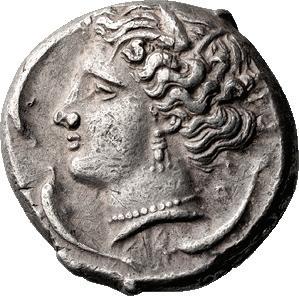


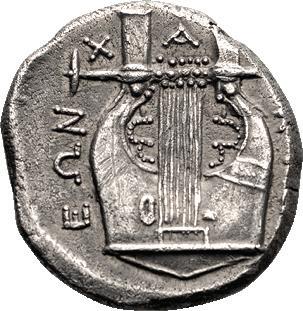



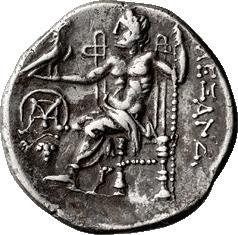

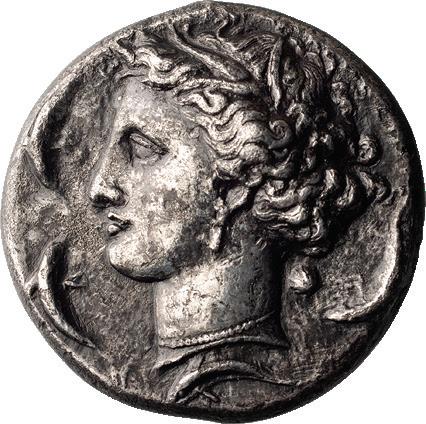








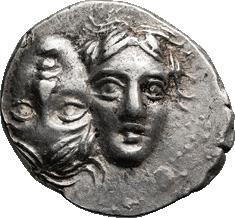





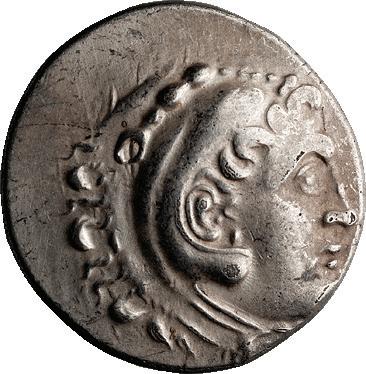

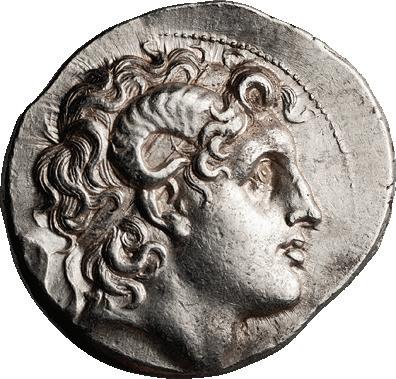

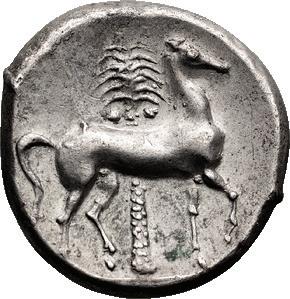

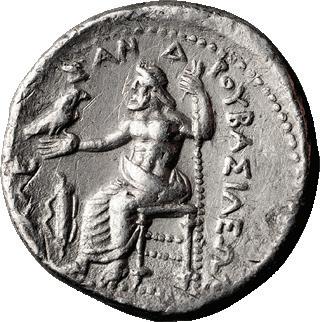





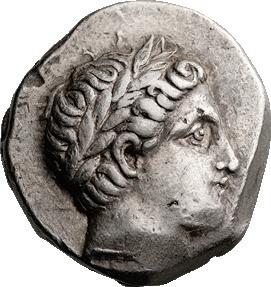


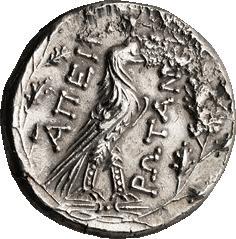
387 corr. Obv: [SEVERVS] - PIVS AVG Head laureate r. Rx: P M TR P XIII [COS III P P] around, S - C across field, Jupiter standing l. holding thunderbolt and scepter, eagle at feet. Ex Curtis L. Clay Collection; ex Leu Web Auction 5, 23 Sept. 2018, lot 669. A common type on denarii, but rare on asses. Porous surfaces. VF 200
166. SEPTIMIUS SEVERUS; 193-211 AD, Rome, 205 AD, As, 10.83g. Cf. BMC-p. 387 corr. Obv: SEVERVS - PIVS AVG Bust laureate, draped, cuirassed r. Rx: P M [T]R P XIII COS III P P around, S - C across field, Jupiter standing l. holding thunderbolt and scepter, eagle at feet. Ex Curtis L. Clay Collection; ex Naville 52, 22 Sept. 2019, lot 571. A common type on denarii, but rare on asses, especially with draped and cuirassed bust type on obverse. Porous surfaces. VF 300
167. SEPTIMIUS SEVERUS; 193-211 AD, Rome, 207-8 AD, As, 10.45g. BM812, pl. 49.2 (same rev. die). Obv: SEVERVS - PIVS AVG Bust laureate r. with fold of aegis on front shoulder and behind neck. Rx: RESTITVTOR - VRBIS on l. and r., S C in exergue, Roma seated l. above shield, holding Palladium and spear. Ex Curtis L. Clay Collection; ex Naumann E42, 3 April 2016, lot 826. VF 500
Rare Biga Type
168. SEPTIMIUS SEVERUS; 193-211 AD, Rome, 207-8 AD, As, 10.61g. BMC814 note. Obv: L SEPTIMIVS SEVE - RVS PIVS AVG Bust laureate r. with fold of aegis on front shoulder and behind neck. Rx: VICTORIAE AVG - [G] on l. and r., S C in exergue, Victory holding whip and reins in biga of horses prancing r. Ex Curtis L. Clay Collection; ex Kunker 318, 11 March 2019, lot 1390. This long obverse legend, instead of the usual SEVERVS PIVS AVG, occurs on just this one obverse die for asses struck in 207-8 AD. EF 1200
169. SEPTIMIUS SEVERUS; 193-211 AD, Rome, 208 AD, As, 9.61g. BM-855, pl. 52.2 (rev. only). Obv: SEVERVS - PIVS AVG Bust laureate r. with fold of aegis on front shoulder and behind neck. Rx: P M TR P XVI COS III P P around, S - C across field, Genius standing l., sacrificing from patera over lighted altar at his feet and holding cornucopia. Ex Curtis L. Clay Collection; ex Gorny 90, 1998, lot 1067. VF 500
170. SEPTIMIUS SEVERUS OVERDATE; 193-211 AD, Rome, 209 AD, As, 8.07g. BM-856, pl. 52.3 (rev. only, TR P XVI). Obv: SEVERVS - PIVS AVG Head laureate r. Rx: Same Victory seated rev. die as BM-pl. 52.3, but date here advanced from TR P XVI to TR P XVII. Ex Curtis L. Clay Collection; ex CBG Paris, Rome 8, 2000, lot 315. Damage on top of head of emperor. aVF 200 171. SEPTIMIUS SEVERUS; 193-211 AD, Rome, 211 AD, As, 13.46g. BM-263, pl. 61.10 (same obv. die). Obv: [SEV]ERVS - PIVS AVG BRIT Bust laureate r., with fold of cloak on front shoulder and behind neck. Rx: [VICT] BRIT P M TR P - XIX COS II P [P] around, S - C across field, Victory standing r. holding vexillum between two seated captives at her feet. Ex Curtis L. Clay Collection; ex CNG E339, 19 Nov. 2014, lot 380. Green patina. aEF 400
172. SEPTIMIUS SEVERUS; 193-211 AD, Rome, 211 AD, As, 12.71g. Cf. BM263. Obv: SEVERVS PIVS - AVG BRIT Head laureate r. Rx: VICT [BRIT P M TR P XIX] COS II P P around, S C in exergue, Victory standing r. holding vexillum between two seated captives at her feet. Ex Curtis L. Clay Collection. VF 300
173. SEPTIMIUS SEVERUS; 193-211 AD, Rome, 211 AD, As, 12.74g. BM-262, pl. 61.8. Obv: SEVERVS - PIVS AVG BRIT Head laureate r. Rx: FORT RED P M TR P XIX COS III P P around, S C in exergue, Fortuna Redux seated l., holding rudder on globe and cornucopia. Ex Curtis L. Clay Collection; ex Gorny 87, 2 March 1998, lot 658. aEF 400
174. SEPTIMIUS SEVERUS; 193-211 AD, Rome, 210-11 AD, As. 10.37g. BMC-p. 406, *. Obv: [S]EVERVS - PIVS AVG BRI[T] Head laureate r. Rx: VICT[O]RIAE BRITTANNICAE around, S - C across lower field, Victory standing r. placing l. foot on [helmet] and inscribing shield set on palm tree before her. Ex Curtis L. Clay Collection; ex CNG E367, 27 Jan. 2016, lot 527. This is a rare reverse type for Septimius Severus; usually reserved for Caracalla, as the dated middle bronzes show. Some porosity in lower area of obverse. aEF 600
175. SEPTIMIUS SEVERUS; 193-211 AD, Rome, 211 AD, As, 9.98g. BMC-p. 405, quoting C-24 (Paris, 6 Fr.). Obv: SEVERVS - PIVS AVG BRIT Bust laureate r. with fold of cloak on front shoulder and behind neck. Rx: AEQVITATI PVBLICAE (legend weak), S - C across lower field, Aequitas/Moneta standing l. holding [scales] and cornucopia and with a pile of coins at her feet. Ex Curtis L. Clay Collection; ex Dionysos, eBay, 30 June 2016. A rare reverse type, struck also for Caracalla and Geta, but with only a couple of specimens known for each emperor. Reverse corroded. VG 170
176. MARCUS AURELIUS AS CAESAR; 139-161 AD, Rome, 145-7 AD, Denarius, 3.35g. Bust var. of BM-605, pl. 13.1. Obv: AVRELIVS CAESAR AVG PII F, Bare-headed, draped, cuirassed bust r. Rx: COS - I[I], Spes advancing l., holding flower and raising skirt. Ex Curtis L. Clay Collection, acquired in March 1996. Toned EF. 475
177. MARCUS AURELIUS AS CAESAR; 139-161 AD, Rome, 160 AD, Denarius, 2.22g. Cf. BMC-p. 149. Obv: AVRELIVS CAES - AR AVG PII F, Head bare r. Rx: TR POT XIIII - COS II DESIG III, Minerva fighting r. Ex Curtis L. Clay Collection; acquired from Singer, June 1996. VF 275 178. MARCUS AURELIUS AS CAESAR; 139-161 AD, Rome, 161 AD, Denarius, 3.44g. BM-1018. Obv: AVRELIVS CAESAR AVG PII F, Bare-
headed bust r., with fold of cloak on front shoulder and wrapped around neck at back. Rx: TR POT XV COS III, Mars standing l. holding spear and shield. Ex Curtis L. Clay Collection, acquired in Dec. 1994. aEF 300
179. MARCUS AURELIUS; 161-180 AD, Rome, 161 AD, Denarius, 3.19g. Cf. BMC-10 and footnote. Obv: IMP M AVREL ANTONINVS AVG, Bust laureate, cuirassed r. Rx: FEL TEMP TR P XV COS III, Felicitas standing l. holding short caduceus and cornucopia. Ex Curtis L. Clay Collection; acquired from J. Kern, Aug. 1997. aEF 275 Not in Reka Devnia
180. MARCUS AURELIUS; 161-180 AD, Rome, 166 AD, Denarius, 3.38g. BM392. Obv: M ANTONINVS AVG - ARMENIACVS, Head laureate r. Rx: P M TR P XX - IMP III COS III, Roma seated l. above shield, holding Palladium and spear. Ex Curtis L. Clay Collection, acquired from the Dorotheum in Vienna, March 1994. A rare type, lacking in the Reka Devnia hoard. gVF 275
181. MARCUS AURELIUS; 161-180 AD, Rome, 171 AD, Denarius, 2.96g. Obv: M ANTONINVS - AVG TR P XXV, Head laureate r. Rx: [I]MP VI - COS III, Victory seated l., holding trophy in r. hand (instead of her usual patera) and palm over shoulder in l. hand. Ex Curtis L. Clay Collection; ex Dorotheum 471, Nov. 1993, part lot 57. Rare with Victory holding trophy rather than patera on reverse; probably first published by Schmidt-Dick, Vienna 2002, Typenatlas vol. 1, pl. 59. gVF 300
182. MARCUS AURELIUS; 161-180 AD, Rome, 171 AD, Denarius, 3.10g. Bust var. of BM-551. Obv: IMP M ANTONINVS - AVG TR P XXV, Bust laureate, draped, cuirassed r. Rx: VOTA SOL - DECENN around, COS III in exergue, Emperor sacrificing l. over tripod altar, slain bull below. Ex Curtis L. Clay Collection; acquired from Harlan Berk, June 1996. Virtually MS 450 183.
MARCUS AURELIUS; 161-180 AD, Rome, 171 AD, Denarius, 3.33g. Obv: IMP M ANTONINVS - AVG TR P XXV, Head laureate r. Rx: COS - III, Mars advancing r. carrying spear and trophy over shoulder. Ex Curtis L. Clay Collection; acquired from Rauch list, Aug. 1994, 276. A scarce type with IMP in obverse legend. EF 400
184. MARCUS AURELIUS; 161-180 AD, Rome, 176 AD, Denarius, 3.41g. BMC-p. 483, *. Obv: M ANTONINVS AVG - GERM SARM, Head laureate r. Rx: TR P XXX IMP - VIII COS III P P, Aequitas standing l. holding scales and cornucopia. Ex Curtis L. Clay Collection; acquired from Harlan Berk, June 1996. MS 500 185. MARCUS AURELIUS MULE, REV. OF COMMODUS; 161-180 AD, Rome, 178 AD, Denarius, 3.07g. Obv: M AVREL ANTO - NINVS AVG, Head laureate r. Rx: C - O - S P P, Salus seated l., holding branch above snake at feet. Ex Curtis L. Clay Collection; ex Berk 90, April 1996, lot 298. Apparently an unpublished mint mule; Marcus used the same type with legend COS III P P (BM-696, pl. 67.11). VF 325
186. FAUSTINA II; Rome, Denarius, 3.47g. Strack-509, citing Sofia only. Obv: FAVSTINA - AVG PII AVG FIL, Bust draped r. Rx: PVDICI - TIA, PudicitiaConcordia standing r., holding both ends of long cape and cornucopia with tip turned away from body. Ex Curtis L. Clay Collection; ex CNG 38, 6 June 1996, lot 1030. A rare denarius type, known to Strack in only two specimens, one like ours with the goddess looking right, and the second with the goddess looking left. Exquisite portrait of Empress. Toned MS
550
187. LUCILLA; Rome, Denarius, 3.30g. BMC-p. 432, *. Obv: LVCILLAAVGVSTA, Bust draped r. Rx: V - E - N - S, Venus standing l. holding apple and scepter. Ex Curtis L. Clay Collection; acquired from Harlan Berk, Nov. 1996. Apparently scarce, since not in BM by 1968. Exquisite portrait, extremely sharp. Virtually MS 350
188. UNPUBLISHED VARIANT OF A LUCILLA CHILDBIRTH DENARIUS; Rome, Denarius, 3.64g. Unpublished variant of a Lucilla childbirth denarius. Obv: LVCILLA - AVGVSTA, Bust draped r. Rx: IVNO - NI - LVCINAE, Juno standing l., extending r. hand and holding naked child with l. arm. Ex Curtis L. Clay Collection; ex Rauch 43, June 1989, lot 1084. A similar type, with the same reverse legend IVNONI LVCINAE but with the baby carried by Juno wrapped in swaddling clothes rather than naked, had earlier appeared in Lucilla’s main issue of imperial coinage, with the longer obverse legend LVCILLAE AVG ANTONINI AVG F, as for example on the denarius BMC-313, pl. 58.14. Virtually MS 850 189. COMMODUS; 177-192 AD, Rome, 180 AD, Denarius, 3.42g. Cf. KaiserRaiss, Commodus, p. 114. Obv: M COMMODVS AN - TONINVS AVG, Bust laureate, draped r. Rx: TR P V IM - P IIII COS II P P, Virtus/Roma seated r., holding reversed spear and parazonium. Ex Curtis L. Clay Collection; acquired from Gorny, Sept. 1995. EF 300 190. COMMODUS; 177-192 AD, Rome, 180 AD, Denarius, 3.21g. Cf. KaiserRaiss, Commodus, p. 114. Obv: L AVREL COM - MODVS AVG, Bust laureate, cuirassed r. Rx: TR P V IM - P IIII COS II P P, Virtus seated r., holding reversed spear and parazonium. Ex Curtis L. Clay Collection; ex Berk 90, 17 April 1996, lot 302. Seems to be an unpublished combination of titles. aEF 300 191. COMMODUS; 177-192 AD, Rome, 180 AD, Denarius, 3.42g. BMC-p. 690, *. Obv: M COMMODVS [AN - T]ONINVS AVG, Head laureate r. Rx: TR P V - IMP [IIII] COS II P P, Roma seated l. above shield, holding Victory and reversed spear. Ex Curtis L. Clay Collection; ex Credit de la Bourse, 19 April 1995, lot 367. Toned EF 225
192. COMMODUS; 177-192 AD, Rome, 184 AD, Denarius, 3.62g. Obv. legend

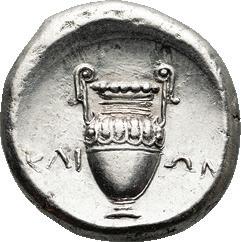


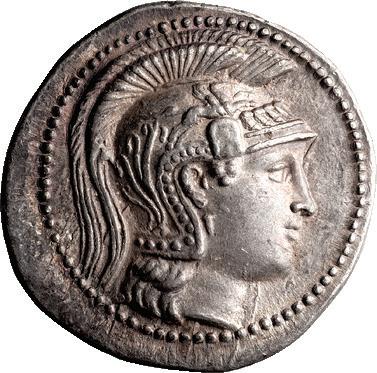
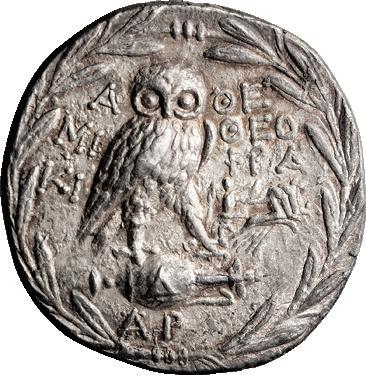
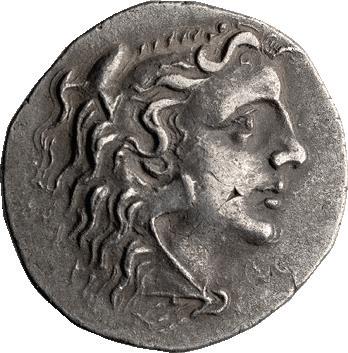
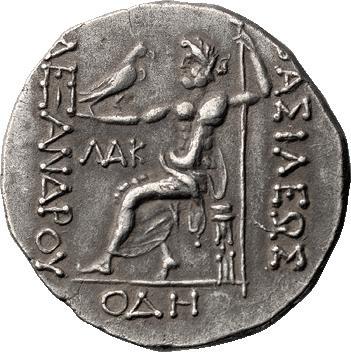

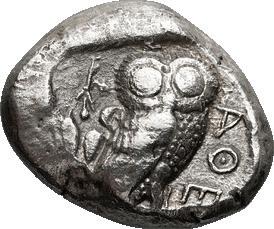
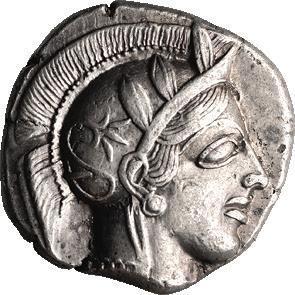
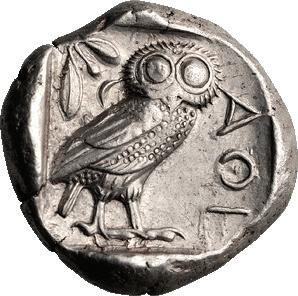

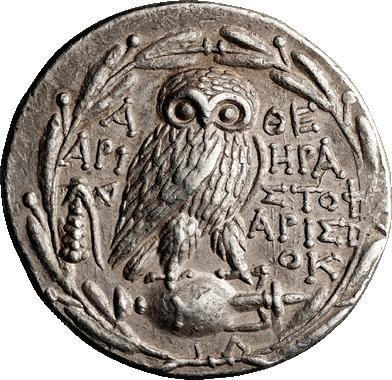






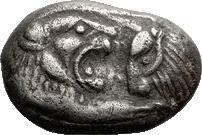







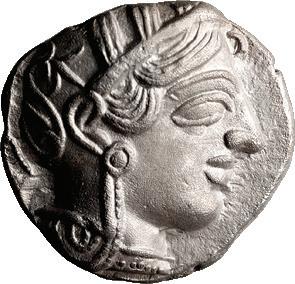
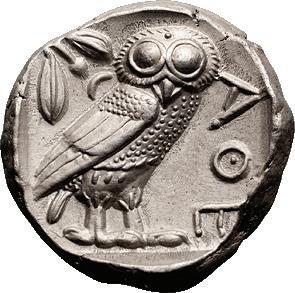

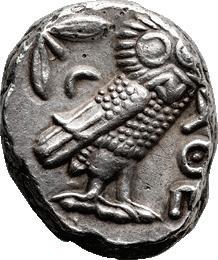
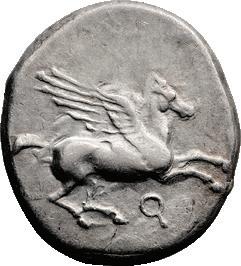


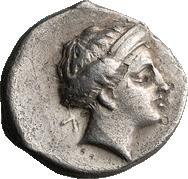














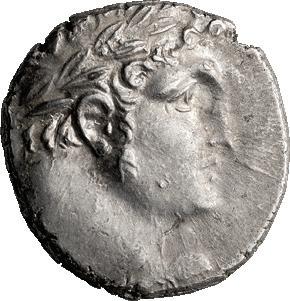

var. of BM-146. Obv: M COMM ANTO - N AVG PIVS BRIT, Head laureate r. Rx: FEL in exergue, P M TR P VIIII IMP VII COS IIII [P] P, Felicitas standing l., holding caduceus and cornucopia. Ex Curtis L. Clay Collection; acquired from Harlan Berk, Nov. 1996. Virtually MS 385 193. COMMODUS; 177-192 AD, Rome, 184 AD, Denarius, 2.43g. BMC-138 note. Obv: COMM ANT - AVG P BRIT, Head laureate r. Rx: P M TR P VIIIIIMP - VII - COS IIII P P, Fides standing r., holding two wheat ears and plate of fruit. Toned MS 400
194. COMMODUS; 177-192 AD, Rome, 184 AD, Denarius, 2.20g. Obv. legend and bust type var. of BM-158. Obv: M COMM ANT - AVG P BRIT FEL, Bust laureate, draped r. Rx: ANN in exergue, P M TR P X IMP - VII COS IIII P P around, Annona holding statuette and cornucopia, standing l. between modius and prow of ship carrying two oarsmen. Ex Curtis L. Clay Collection; acquired from Gorny, Sept. 1995. Virtually MS 200 195. COMMODUS; 177-192 AD, Rome, 185 AD, Denarius, 2.72g. Cf. BMC-160. Obv: [C]OMM ANT - AVG P B[RIT], Head laureate r. Rx: FID EXERC in exergue, P M TR [P X I]MP VII - [CO]S IIII P P around, Commodus standing l. on platform, addressing three soldiers. Ex Curtis L. Clay Collection; ex CNG 29, 30 March 1994, lot 668. The rare earlier date for this type, with TR P X COS IIII, not TR P XI COS V. gVF 350
196. COMMODUS; 177-192 AD, Rome, 186 AD, Denarius, 3.00g. Obv. legend var. of BM-199. Obv: COMM ANT - AVG P BRIT, Head laureate r. Rx: FID EXERC in exergue, P M TR P XI IMP VII - COS V P P. Commodus standing l. on platform, addressing three soldiers. Ex Curtis L. Clay Collection; ex Rauch 58, Oct. 1996, lot 389. EF 450
197. COMMODUS; 177-192 AD, Rome, 188 AD, Denarius, 3.12g. Bust var. of BM-242. Obv: M COMM ANT P - FEL AVG BRIT, Bust laureate, cuirassed r. Rx: [P] M TR P XIII IM - P VIII COS V P P, Aequitas standing l., holding scales and cornucopia. Ex Curtis L. Clay Collection; acquired from CNG, April 1997. EF 285
198. COMMODUS; 177-192 AD, Rome, 187 AD, Denarius, 2.57g. BM-209. Obv: [M] COMM ANT - P FEL AVG BRIT, Bust laureate, draped, seen from front. Rx: AVCT PIET P M TR P XII IMP VIII COS [V P P]. Ex Curtis L. Clay Collection; acquired from Gorny, Sept. 1995. Scarce bust draped and seen from front. EF 225
199. COMMODUS; 177-192 AD, Rome, 191 AD, Denarius, 2.67g. BM-363, pl. 100.11. Obv: [L] AEL AVREL CO - MM AVG P FEL, Head laureate r. Rx: VOTA SOL PRO SAL P R, Togate Commodus sacrificing l. over tripod altar, while holding roll in l. hand; on ground behind altar, a slain sacrificial bull. Ex Curtis L. Clay Collection; acquired from Kern, May 1997. Note two oddities in the word SOLV in the reverse legend: the normal final letter V is omitted, and the O appears to be engraved over another letter, possibly an E. Virtually MS 285 CLAY COLLECTION ENDS REGULAR LOTS BEGIN GOLD
200. UNCERTAIN MINT IN IONIA; EL Hecte, 2.13g. Weidauer-Group II, 6-8, SNG Kayhan-680, SNG von Aulock-1769. Obv: Flattened striated surface. Rx: Two irregular incuse squares. Said to be from the Danish collection of Jens Jorgenson, who purchased it over fifty years ago from a friend who found it as a child in Izmir. MS 4500 Croesus
201. LYDIA, CROESUS, 1/12 HEAVY GOLD STATER; 565-546 BC, 1/12 Heavy Gold Stater, 0.86g. Berk-13. Obv: Confronted foreparts of a roaring lion and a bull. Rx: Incuse punch. Extremely rare. EF 3450 Arsinoe II Mnaieion
202. PTOLEMAIC, PTOLEMY II; Struck under Ptolemy II (285-246 BC), Alexandria, c. 252/1-250/49 BC, Octadrachm, 27.79g. Sear-7768, Lorber-390, Sv-471. Obv: Head of Arsinoe II r., wearing diadem, stephane and veil, behind K. Rx: ΑΡΣΙΝΟΗΣ - ΦΙΛΑΔΕΛΦΟΥ Double cornucopia bound with fillet. Ex HJB BBS 183, Lot 10, 28 March 2013. Formerly slabbed by NGC AU 5/5, 4/5. Magnificent. MS 18500 Ptolemy III Portrait
203. PTOLEMAIC, PTOLEMY IV; 222-204 BC. Alexandria, c. 217 BC, Mnaieion (Octodrachm), 27.75g. Lorber-888, Sv-1117. Obv: Radiate and diademed bust of deified Ptolemy III wearing aegis and with trident over shoulder. Rx: Radiate cornucopia bound with royal diadem, ΔI to r. of bottom of cornucopia, Greek regal title “Of King Ptolemy” around. Ex HJB BBC 177, lot 33, 15 November 2011. Formerly slabbed by NGC AU 5/5, 4/5 Fine Style. High relief. MS 18500
204. THRACE, KOSON; c. 50-40 BC, Stater, 8.50g. RPC-1701. Obv: Consul stepping l. preceded and followed by lictors holding fasces, ΚΟΣΩΝ below, monogram in l. field. Rx: Eagle standing l., wings raised, one talon on scepter, holding wreath with other talon. The obverse of course is inspired by the famous denarius of Brutus. The reverse is seemingly copied from the reverse of a very rare denarius struck by Q. Pomponius Rufus in 73 BC, Cr-398/1. The very distinctive depiction of the eagle on that coin differs from that on the Koson stater only in the position of the eagle’s head. MS 2350
205. CONSTANTIUS GALLUS AS CAESAR; 351-354 AD, Thessalonica, Solidus, 3.96g. RIC-151, Depeyrot-9/2. Obv: D N CONSTANTIVS NOB
CAES, bare-headed, draped and cuirassed bust to right. Rx: GLORIA REIPVBLICAE, Roma, holding spear, and Constantinopolis, holding scepter and resting foot on prow, both enthroned and supporting between them wreath inscribed VOT V MVLT X in four lines; •TES• in exergue. aVF 1500 206. REVOLT OF THE HERACLII; Summer 608 AD-5 October 610 AD. Alexandria, 608/9 AD, Solidus, 4.48g. DO-13 (under Alexandria), Sear-720 (under Alexandria), BMC-337 (under Alexandria), MIB-2 (under Alexandria). Obv: DMN HERACλIO CONSVλ IB Busts of Heraclius (unbearded) and his father (bearded), facing wearing consular robes; between their heads, cross. Rx: VICTORIA CONSΛB IB, Cross potent on base and three steps; in exergue, CONOB. Ex HJB BBC 194, lot 38, 9 July 2015, Cover Coin. Formerly slabbed by NGC MS 4/5, 4/5. This is an extremely rare, exquisite solidus. Other than a slight flat strike at 5:00, this coins is utterly flawless. MS 15000 207. PHILIPPICUS; 711-713 AD. Constantinople, Solidus, 4.45g. Berk-204, Sear-1447, MIB-1. Obv: D N FILEPICUS - MULTUS AN Bust facing, with short beard, wearing crown and loros, and holding cross on globe and eagletipped scepter surmounted by cross. Rx: VICToRIA - [A]VSU Θ (officina 9) Cross potent on three steps, CoNoB beneath. Mint State 3750 208. CONSTANTINE VI AND IRENE WITH LEO III-IV AND CONSTANTINE V; Constantinople, c. 790-92 AD, Solidus, 4.40g. Sear1593, DO-1. Obv: Facing busts of Constantine VI and Irene, both crowned, each holding cross on globe, Irene also holding cruciform scepter; between their heads cross and centering pellet. Rx: Leo III, Constantine V, and Leo IV seated facing, each wearing crown and chlamys. Flatly struck on face of emperor to left, not unusual for this highly detailed type. Mint State 3100
209. CONSTANTINE VI AND IRENE; Constantinople, c. 792-7 AD, Solidus, 4.47g. Berk-235, DO-3, S-1594. Obv: IR[InH] - AΓOVStI Bust of Irene facing, wearing crown and loros, and holding cross on globe and cruciform scepter. Rx: COnSTAntInOS bAS’Θ Bust of Constantine VI facing, beardless, wearing crown and chlamys, and holding cross on globe and akakia. Mint State 6000 210. CONSTANTINE IX; Stamenon Nomisma, 4.04g. Berk-302, Sear-1829. Obv: Christ seated facing, wearing nimbus cruciger. Rx: Bust of Constantine IX facing, bearded, wearing crown, loros and saccos, and holding long cross and globe surmounted by pelleted cross; triple border of dots. Formerly slabbed NGC 6821444-003 strike 5/5, surface 5/5. MS 1850 211. ANDRONICUS II AND MICHAEL IX; Constantinople, 1295-1320 AD, Hyperpyron, 3.37g. S-2396, Berk-366. Obv: Half-length figure of the Virgin Mary, orans, within circuit of city walls with six towers; sigla to either side Rx: Christ, nimbate, wearing pallium and colobium, standing facing, IC-XC flanking head, crowning Andronicus II (on left) and Michael IX (on right) kneeling to either side, each wearing divitision and loros. Center of obverse and reverse flatly struck, but otherwise very sharp. MS 500
212. AXUMITE KINGDOM, KING EBANA; c. 450 AD, Unit, 1.60g. MunroHay-71. Obv: Crowned and draped bust of King Ebana r., holding branch, framed by grain ears, all within beaded circle. Rx: Draped bust right, wearing headcloth, holding branch, framed by two grain ears, all within beaded circle. Some flat striking. MS 1250
213. CENTRAL ASIA. ALCHON HUNS. KING KHINGILA; CENTRAL ASIA. Alchon Huns. King Khingila, c. 440-490 AD. Pale gold dinar, 7.11g, Gandhara mint. Obv: Khingila standing l., sacrificing at altar and holding scepter; filleted trident to l., tamgha to r., Bactrian inscription around. Rx: Siva facing, holding diadem and trident; behind, the bull Nandi standing l. Alram-29; Göbl, Dokumente, Em.-85; Vondrovec-85c. Struck from worn dies. MS 875 GREEK SILVER Suessa Aurunca
214. CAMPANIA, SUESSA AURUNCA; c. 265-240 BC, Didrachm, 7.38g. HN Italy-447, SNG France-1152, Sambon-864, Pozzi-106. Obv: Head of Apollo r., trophy behind. Rx: One of the Dioscuri riding l., holding filleted palm-branch and leading second horse; SVESANO in exergue. Ex Roma 9, 22 March 2015, lot 15. Ex CNG 100, 7 October 2015, lot 1230. Ex Künker 257, 10 October 2014, lot 8039. This is a rather rare issue, infrequently found, but normally in about this condition. Thus, most examples likely came from a single find. Virtually MS 6000
215. CALABRIA, TARENTUM; 390-380 BC, Stater, 7.56g. Fischer-Bossert-433, Vlasto-379, HN Italy-869. Obv: Nude horseman l. holding shield; faint A below. Rx: Taras on dolphin l., P below. Scrape on leg of Taras. aVF 350
216. CALABRIA, TARENTUM; 333-331/330 BC, Stater, 7.74g. Vlasto-545, HN-896, Fischer-Bossert-755. Obv: Naked horseman galloping r., throwing spear in r. hand and holding spears and shield in l., signature KAΛ`` below. Rx: Taras on dolphin holding a helmet in both hands, signature KAΛ below. Ex HJB BBS 48th Sale, 22 April 1987, lot 45. MS 1000
217. CALABRIA, TARENTUM; 272-235 BC, Nomos, 6.49g. Vlasto-853, HN Italy-1028. Obv: Nude youth on horseback r., crowning horse and holding rein; AΓAΘ-A/PXOΣ in two lines below. Rx: Phalanthos, holding kantharos and cornucopia, on dolphin l.; torch behind. Ex Ponterio 72, 1 November 1994, lot 213. MS 950
218. LUCANIA, METAPONTUM; c. 510-470 BC, Stater, 8.07g. Noe-203-6, HN Italy-1482, SNG ANS-237. Obv: META, six-grained barley ear. Rx: Incuse sixgrained barley ear. Ex Brian Kritt, Private Sale NYINC show 2005. Virtually MS 2250
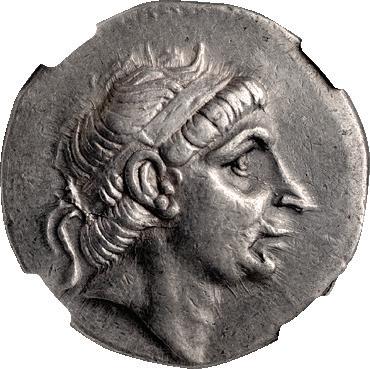





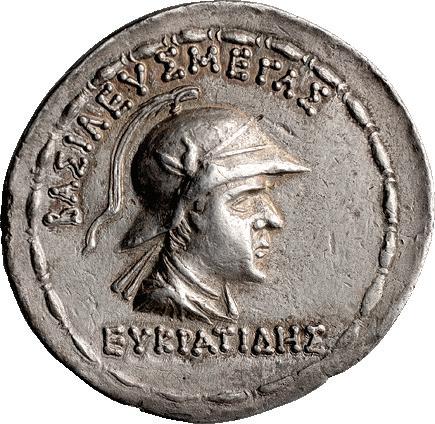



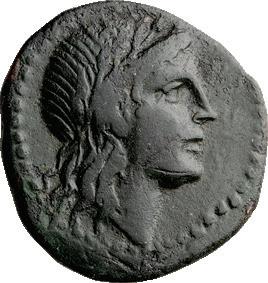
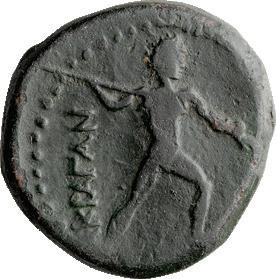
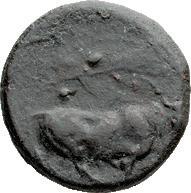

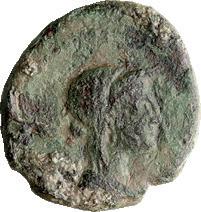
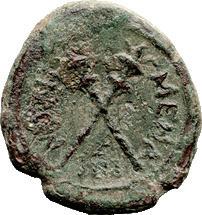
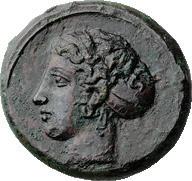





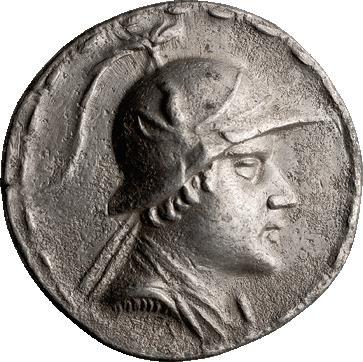

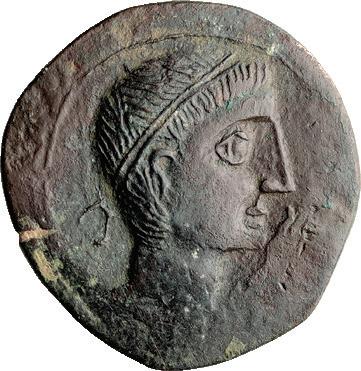


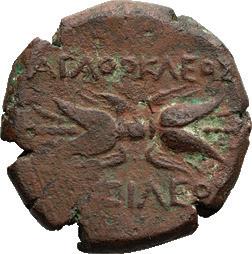


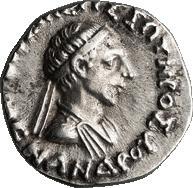








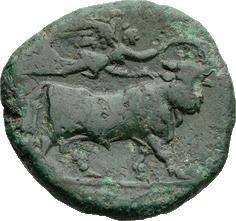
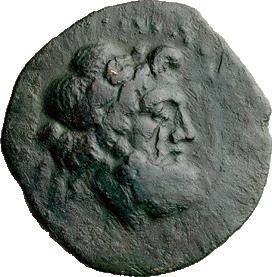

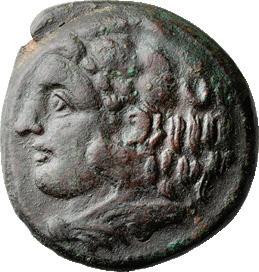

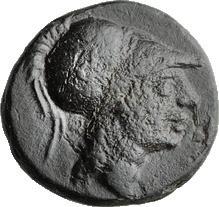

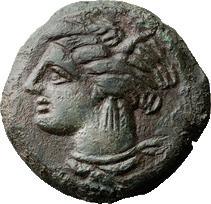



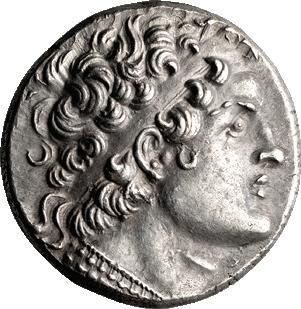
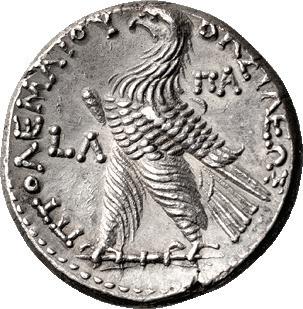
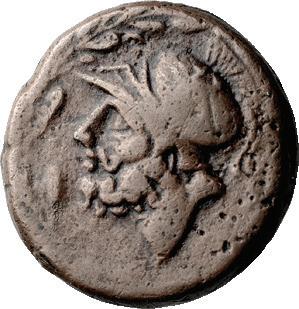


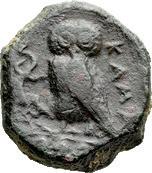

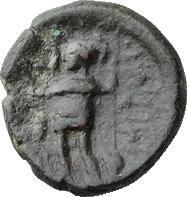



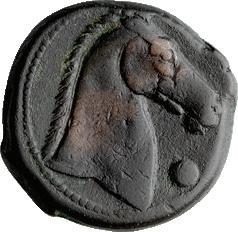


219. LUCANIA, METAPONTUM; 330-290 BC, Nomos, 7.54g. Johnston, Metapontum-4.28. Obv: Head of Demeter left wearing barley wreath. Rx: Ear of barley with leaf. Ex Mark Gibbons Collection. Exceptional image of Demeter, in somewhat high relief. Toned MS 2500
220. LUCANIA, POSEIDONIA; 445-420 BC, Stater, 7.71g. HN Italy-1116. Obv: Poseidon advancing to right, wielding trident overhead and extending left hand before him. Rx: Legend in retrograde, bull standing left. Ex Mark Gibbons Collection. gVF 750
221. LUCANIA, VELIA; c. 440-400 BC, Nomos, 7.75g. Williams-143, HN Italy-1270. Obv: Head of Athena r., wearing laureate Attic helmet. Rx: Lion attacking stag r. Ex CNG 40, 4 December 1996, lot 660. Ex Sternberg XX, 20 April 1988, lot 83. Rare early issue of Athena, showing a wreath on the helmet, similar to early issues of Thurium. Toned EF 2350
222. LUCANIA, VELIA, PLATED ANCIENT IMITATION; 350/40-320/10 BC, Plated Stater, 7.12g. Williams-364, HN Italy-1296. Obv: Head of Athena l., of Kleudoran style; signed behind neck. Rx: Lion standing l., devouring piece of meat; A above, artist’s signature between legs. Signed by artist Kleudoros. Formerly slabbed NGC 6829422-008 strike 5/5, surface 2/5. VF 500
223. BRUTTIUM, CAULONIA; c. 475-425 BC, Stater, 7.83g. HN-2046, NoeGroup F, SNG Cop-1711. Obv: Apollo advancing r., stag before. Rx: Stag r., sapling before. Ex Hess-Divo 267, 1996, lot 15. VF 650
224. LUCANIA, THURIUM; c. 445-400 BC, Stater, 7.76g. HN Italy-1775. Obv: Head of Athena r., wearing laureate helmet. Rx: ΘΟΥΡΙΩΝ, Bull butting r.; in exergue, fish. Ex NAC E, 4 April 1995, lot 2099. Toned EF 900
225. SICILY, HIMERA; c. 479-409 BC, Litra, 0.60g. Rizzo-pl. XXI, 14; SNG Lloyd-1030. Obv: Archaic head of bearded male l., wearing crested helmet. Rx: Pair of greaves. EF 400
226. SICILY, CAMARINA; 461-440/35 BC, Litra, 0.74g. Westermark & JenkinsPeriod 2, Series 2b, 29. Obv: Nike flying l., swan below; all within wreath. Rx: KAMAR I- NAION Athena standing l. holding spear or staff, shield at feet before her. VF 550
227. SICILY, GELA; 465-450 BC, Litra, 0.51g. Jenkins-Group III, 259. Obv: Bridled horse walking to r., laurel wreath above; border of dots. Rx: CΕΛΑ Forepart of man-faced bull, r. VF 250
228. BRUTTIUM, TERINA; C. 425-420 BC, Stater, 7.49g. Holloway-Jenkins-33, Regling-28, HN Italy-2587. Obv: Head of Nymph r., hair rolled. Rx: Nike seated l. on stool, holding caduceus. Rather worn obverse. F / VF 450
229. SICILY, SELINUS; Didrachm c. 540-515 BC, 8.73g. SNG Cop-592, SNG ANS-665ff v., HGC-1211. Obv: Wild parsley leaf. Rx: Incuse square with ten triangular compartments. EF 1400 Exquisite Archaic Arethusa
230. SICILY, SYRACUSE; c. 485-479 BC, Tetradrachm, 16.96g. Obv: Charioteer driving slow quadriga r.; above, Nike flying r. to crown horses. Rx: Head of Arethusa r., ΣVPA-KOΣ-IO-N and four dolphins around. While this coin has a slight mark on the hair, and a contact mark at 3:00, the image of Arethusa is highly detailed, on a level almost never seen on these early coins of Syracuse. They normally come with extremely worn images. This is a wonderful example of an early Syracusan tetradrachm. gVF / EF 6000
231. SICILY, SYRACUSE; c. 440-430 BC, Tetradrachm, 17.12g. Boehringer-597, SNG ANS-195, SNG Lloyd-1338 (both same dies). Obv: Charioteer driving fast quadriga l., being crowned by Nike flying overhead; sea monster in exergue. Rx: Head of Arethusa r., hair tied back; dolphins around. Lot includes a great old collector’s ticket, pre 1971 and perhaps considerably older. aVF 2750
232. SICILY, SYRACUSE; 430-420 BC, Tetradrachm, 17.24g. Boehringer-645. Obv: Charioteer driving slow quadriga right, Nike above flying right crowning horses. Rx: Head of Arethusa right wearing sakkos. Exceptional quality. aEF 5750
Second Recorded
233. SICILY, SYRACUSE; 406-367 BC, Decadrachm, 41.30g. Gallatin-F.IV/ RXII. Obv: Galloping quadriga driven l. by charioteer, Rx: Head of Arethusa l. with hair bound by wheat leaves, four dolphins around. When Gallatin published his book in 1930, he only found one example of this die in a British collection listed in 1916, in horrible condition. As of 1930, no other examples of this die were found. Indeed, to the best of our knowledge, no other examples are known today, making our coin only the second recorded example. gVF / aEF 29500
234. SICULO-PUNIC; 350-300 BC, Tetradrachm, 17.36g. Jenkins-69. Obv: Charioteer driving fast quadriga l., Nike flying above crowning charioteer; Punic “RSMLQRT” in exergue. Rx: Large head of Arethusa r., three dolphins around. Formerly slabbed by NGC: Ch XF, strike 4/5, surface 4/5. Though this coin is Siculo-Punic, is is an early issue, where the style of Syracuse is very closely copied. MS 4200
235. SICILY, SICULO-PUNIC; c. 350-315 BC, Tetradrachm, 16.52g. Jenkins-101. Obv: Head of Arethusa r., two dolphins before. Rx: Horse stepping r. before palm tree. Ex Berk 106, 20 January 1999, lot 132. EF 4750
236. SICILY, SICULO-PUNIC; 350-330 BC, Tetradrachm, 18.37g. Jenkins193c. Cf. SNG-6434. Obv: Female head left wreathed with wheat, four dolphins around Rx: Head and neck of horse left, border around. Ex Davissons 27, September 2008, lot 31. Fresh surfaces; lightly toned; excellent style with
magnificent horse’s head. EF 3600 Extremely High Relief
237. CHALCIDIAN LEAGUE, OLYNTHUS; c. 420-379 BC, Tetradrachm, 14.18g. Robinson-Group L-59 (A40/ P53), SNG ANS-479 (same dies). Obv: Laureate head of Apollo l. Rx: Kithara with eight strings, X A Λ [KIΔ] EΩN around. Ex Mark Gibbons collection. Ex Roma XXVII, 22 March 2023, lot 179. Ex Roma E94, 24 February 2022, lot 164. Ex Roma E37, 24 June 2017, lot 133. Struck in high relief. EF 7500 FDC
238. MACEDONIA, PHILIP II; 359-336 BC. Amphipolis, c. 323/2-316/5 BC, Tetradrachm, 14.26g. SNG ANS-606, Le Rider-Pl. 45, #22. Obv: Laureate head of Zeus right; Rx: ΦΙΛΙΠ-ΠΟΥ Naked youth on horse prancing right, wreath and Λ below horse. Ex HJB BBS 177, lot 67, 15 November 2011, Formerly slabbed by NGC Ch AU Star 5/5, 5/5. This is the finest posthumous issue of Philip II that we have ever handled. Even the horse and rider are a good resemblance of the early issues of Philip II, though the horse is slightly smaller. The small rider on this coin is nevertheless proportional to the smaller horse, and thus the design overall is extremely close to earlier issues.. FDC 12500
239. MACEDONIA, ALEXANDER III THE GREAT; 322-320 BC, Tetradrachm, 17.15g. Price-108. Obv: Head of Herakles to right, wearing lion-skin headdress. Rx: BAΣIΛEΩΣ - AΛEΞANΔPOY Zeus seated left on low throne, holding long scepter in his left hand and eagle standing right with closed wings in his right; to left, cornucopiae. Early posthumous issue. Slight flat striking on chest of Zeus. MS 1750
240. MACEDONIA, ALEXANDER III THE GREAT; Early Lifetime Issue, Tetradrachm, 16.44g. Price-110. Obv: Head of beardless Heracles, r., wearing lion-skin headdress Rx: Zeus seated on stool-throne l., eagle on outstretched right hand, scepter in left hand. Bow and quiver in l. field. Virtually MS 1450
241. MACEDONIA, ALEXANDER III THE GREAT; 336-323 BC. Amphipolis, c. 320-317 BC, Tetradrachm, 17.18g. Price-124. Obv: Bust of Alexander as Herakles r., wearing lion-skin headdress. Rx: Zeus seated l. on throne, ΒΑΣΙΛΕΩΣ and laurel branch in l. field, AΛEΧANΔΡOY in r. field; Π beneath throne. Ex HJB BBS 175, lot 107, 7 July 2011. Formerly slabbed by NGC Ch AU 5/5, 3/5. MS 3250
242. MACEDONIA, ALEXANDER III THE GREAT; 336-323 BC, 320/19315 BC, Tetradrachm, 16.92g. Price-3426. Obv: Head of Herakles to right, wearing lion skin headdress. Rx: AΛEΞANΔPOY Zeus seated left on low throne, holding long scepter in his left hand and eagle standing right with closed wings in his right; to left, monogram of AP. Previously on loan to Murray State University, Kentucky, from 2021-2024. Ex Mark Gibbons Collection. Obverse in high relief with some corrosion on face. Toned EF 1000
243. MACEDONIA, ALEXANDER III THE GREAT; 336-323 BC. Rhodes, c. 201-190 BC, Tetradrachm, 16.00g. Price-2518, Kleiner, Rhodes-Series XIII, obv. die X. Obv: Head of Herakles r. wearing lion-skin headdress. Rx: ΑΛΕΞΑΝΔΡΟΥ Zeus enthroned l. holding eagle and scepter; in l. field, name AINHTΩP and rose; beneath throne, PO. Toned aEF 450
244. MACEDONIA, ALEXANDER III THE GREAT; 336-323 BC, 230-200 BC, Tetradrachm, 16.73g. Price-1284, HGC-481. Obv: Head of Herakles right, wearing lion skin. Rx: Zeus Aëtophoros seated left, AΛEΞANΔPOY to right, monogram above A in left field; club in exergue. Previously on loan to Murray State University, Kentucky, from 2021-2024. Ex Mark Gibbons Collection. Choice EF 1250
245. MACEDONIA, ALEXANDER III THE GREAT, 336-323 BC; Aspendus, Year 17 = 196/5 BC, Tetradrachm, 16.89g. Obv: Head of Herakles r. wearing lion-skin headdress. Rx: Zeus enthroned l. holding eagle and scepter; date in l. field. Formerly NGC Ch VF (incorrectly described as year 18). EF 485
246. MACEDONIA, PHILIP III, 323-317 BC; Babylon, Tetradrachm, 17.05g. Price-P205. Obv: Head of Herakles r. wearing lionskin. Rx: Zeus seated l. holding eagle and scepter, facing head of Helios in l. field, KY under throne. Struck in high relief. Toned EF 650
247. PATRAOS; c. 335-315 BC, Tetradrachm, 12.21g. BM-4. Obv: Laureate head of Apollo r. Rx: [ΠAΤP]AoY Horseman in crested helmet charging r., spearing fallen enemy carrying Macedonian shield. Ex Paeonian Hoard. End of king’s name legible. EF / MS 440 Unlisted Drachm
248. MACEDONIA, DEMETRIUS POLIORCETES, 306-283 BC; Thebes Mint, c. 290 BC, Drachm, 4.16g. Newell-unlisted; cf. 139-40 (tetradrachm and hemidrachm). Obv: Head of the king r. Rx: Poseidon standing l., holding trident, foot on rock; monogram in circle between legs. Very rare; unlisted in Newell for this denomination struck at Thebes; one other on Coin Archives. Ex CNG 120, 11 May 2022, lot 170. While tetradrachms of Demetrius are relatively common, drachms are extremely rare. Obverse is struck in high relief, and the dies are unlisted by Newell. EF / VF 2150
249. DANUBIAN DISTRICT, ISTRUS; c. 400-350 BC, Drachm, 6.52g. SNG BM-228. Obv: Two male heads facing, one inverted. Rx: Eagle standing l. on dolphin, A between. Exceptionally refined obverse style. Ex CNG E316, 4 December 2013, lot 95. EF 1000
250. DANUBIAN DISTRICT, ISTRUS; c.400-350 BC, Drachm, 5.98g. SNG BM-237. Obv: Two male heads facing, one inverted. Rx: Eagle standing l. on dolphin, A below. Formerly slabbed by NGC: AU, strike 3/5, surface 4/5. MS


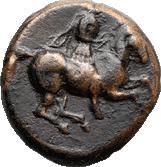

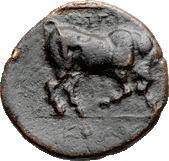

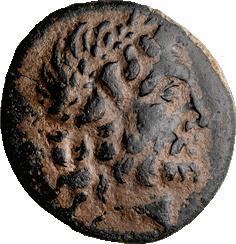
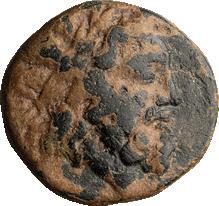









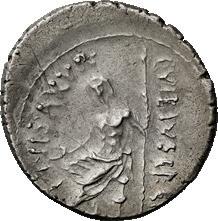




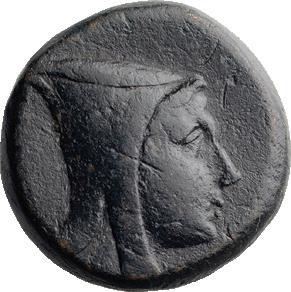








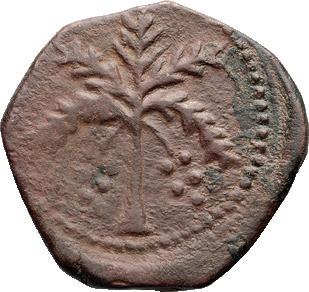







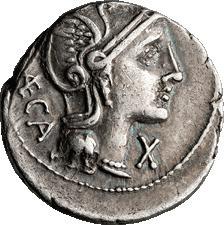




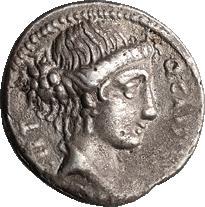

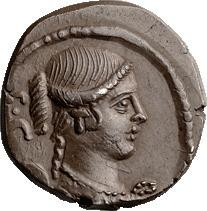


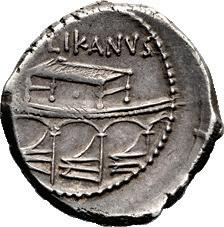









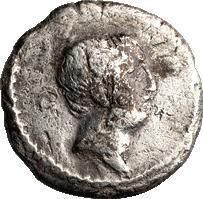

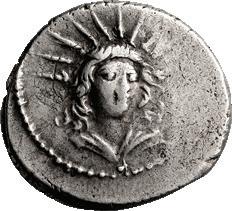
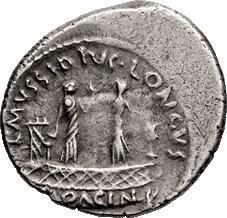



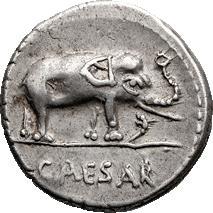
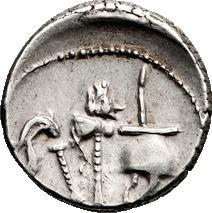
450 Exceptional Lysimachus
251. THRACE, LYSIMACHUS; 323-281 BC. Lampsacus, c. 297/6-282/1 BC, Tetradrachm, 16.88g. Thompson-56. Obv: Head of Alexander the Great with horn of Ammon r. Rx: Athena enthroned left with M monogram at inner l. and crescent in exergue. Ex HJB BBS 150, lot 176, 8 August 2006. Formerly slabbed by NGC AU 4/5, 5/5 Fine Style. MS 5000
252. EPIRUS, EPIROTE REPUBLIC; c. 238-168 BC, Drachm, 7.75g. BM-14. Obv: Head of Zeus Dodonaeus r., wearing oak wreath, AI monogram behind. Rx: Eagle standing r. on thunderbolt, ΑΠΕΙ behind, ΡΩΤΑΝ before; oak wreath around. MS 1650
253. BOEOTIA, THEBES; c. 395-338 BC, Stater, 12.25g. BCD-532. Obv: Boeotian shield. Rx: Amphora; KΛI-ΩN across field. Ex CNG 91, 19 September 2012, lot 182. MS 1650
254. EUBOIA, EUBOIAN LEAGUE; c. 304-290 BC, Drachm, 2.70g. Wallace77c, BCD-22. Obv: Head of nymph Euboia l. Rx: Bull’s head r., EY above, kantharos to r. Formerly slabbed NGC 4935157-001 strike 5/5, surface 2/5. Toned EF 6000
Starr Group I, First with Crescent Moon
255. ATTICA, ATHENS; 475-470 BC, Tetradrachm, 17.06g. Starr-Group 1. Obv: Archaic head of helmeted Athena r. Rx: Owl standing r., head front, AΘE to r., to l. crescent and drooping olive branch with two leaves and two olives. Starr Group I (same obverse die as no. 10). Ex Gemini XI, 12 January 2014, lot 122. Coming from Starr’s Group I, the very rare first group of Athenian tetradrachms that show the crescent moon on the reverse, possibly commemorating the victory of the Battle at Marathon. These are normally poorly struck. This coin is very sharp and in good metal. Starr only located twelve examples of this issue, and probably less than three new ones have appeared since his book was printed in 1970. These coins, having the crescent moon, were the first issue after the massive group of coins that were struck to pay for the Persian war. It does have the drooping leaves and olive of the late Persian war coins, but as mentioned, it is the first coin with the crescent moon. Further evidence of coins coming into the market has shown that Starr Group 1 is a good deal earlier than Starr Groups 2-5 since it seems, rather than being issued over a period of 30 years, groups 2-5 were probably issued towards the end of the Starr Group period of 449 for only about two years, with Starr Group 1 being much earlier and thus more important. EF 21000
Full Crest
256. ATTICA, ATHENS; c. 440 BC, Tetradrachm, 17.14g. Obv: Helmeted head of Athena r. Rx: Owl standing r., head front, between olive sprig and crescent on l. and ethnic downwards on r. Ex Mark Gibbons collection. This is an exceptional example of this coin, showing a full crest on the helmet of Athena. MS 2500
257. ATTICA, ATHENS; 425 BC, Tetradrachm, 16.59g. Obv: Helmeted head of Athena right. Rx: Owl standing right, head front; ΑΘΕ downwards on right. VF 685
258. ATTICA, ATHENS; 425 BC, Tetradrachm, 16.89g. Obv: Head of Athena r. Rx: Owl leaning r.; olive twig with two leaves and crescent moon behind; ethnic in r. field. Ex HJB 60th Buy or Bid Sale, 16 January 1990, lot 128. MS 1800 259. ATTICA, ATHENS; Late 4th Century BC, Tetradrachm, 17.19g. BM-144. Obv: Head of Athena r. Rx: Owl standing r., head facing. aEF 650
260. ATTICA, ATHENS, NEW STYLE; 137/6 BC, Miki–, and Theophra magistrates, Tetradrachm, 16.89g. Thompson-315g (same dies). Obv: Helmeted head of Athena r. Rx: ΜΙΚΙ-ΘΕΟΦPΑ Owl standing facing on fallen amphora; Δ on amphora; Nike in quadriga in r. field, AP below. Ex Edward J. Waddell, List 63, lot 79, in 1994. toned virtually ms 1250
261. ATTICA, ATHENS, NEW STYLE; Hera/Aristoph/Club, Lionskin, Bow in Case; 136/5 BC, Tetradrachm, 16.91g. Thompson-339f. Obv: Head of Athena r., Pegasus on helmet. Rx: Owl standing r. on amphora, head front; in l. field club, lionskin, and bow in case; third magistrate APIΣT/OK; M on amphora, ΓΛ below; all within olive wreath. ANA August 2024. aEF 1250
Exceptional Aegina
262. ATTICA, AEGINA; 404-340 BC, Stater, 12.33g. Milbank-Period V, #14. Obv: Land tortoise Rx: Incuse square with skew pattern. This is an early example of the land tortoise. What makes his coin exceptional is the perfect centering of both the head and legs. Remarkably, the legs even show the tortoise’s scales. These coins are normally poorly struck, with the head of the tortoise missing. Struck in ultra high relief with a tiny contact mark at the high point of the shell. Virtually MS 3500
263. CORINTHIA, CORINTH; c. 345-307 BC, Stater, 8.45g. Calciati-370 (same dies). Obv: Pegasus flying r. Rx: Head of Athena l., E and crescent behind. Ex HJB 83rd Buy or Bid Sale, 10 October 1994, lot 174. MS 800
264. ACARNANIA, LEUCAS; c. 430-400 BC, Drachm, 2.63g. BM-114. Obv: Pegasos, with pointed wing, flying r.; beneath, Λ. Rx: Head of Aphrodite r., her hair rolled in net; behind head, Λ. EF 850
265. BRUTTIUM, LOCROI EPIZEPHYRII; 317-310 BC, Stater, 8.72g. Calciati-13, SNG ANS-513. Obv: Helmeted head of Athena l., ΛΟΚΡΩΝ upwards behind. Rx: Pegasus flying l., thunderbolt below. MS 2000
266. PONTIC, MITHRADATES VI, 120-63 BC; Odessus, c. 125-70 BC, Tetradrachm, 15.86g. Price-1192. Obv: Portrait r. of Mithradates r., in guise of Alexander the Great as Hercules, wearing lionskin headdress. Rx: Zeus
seated l. holding eagle and scepter; AΛEΞANΔPOY on l., BAΣIΛEΩΣ on r., magistrate ΛAK in l. field, OΔH in exergue. Ex CNG 49, 17 March 1999, lot 213. Exceptional quality for this issue. Toned EF 750 Actual Portrait
267. PONTIC, MITHRADATES VI, 120-63 BC; Odessus, c. 80-71 BC, Tetradrachm, 15.45g. Price-1193. Obv: Portrait r. of Mithradates r., in guise of Alexander the Great as Hercules, wearing lionskin headdress. Rx: Zeus seated l. holding eagle and scepter; AΛEΞANΔPOY on l., BAΣIΛEΩΣ on r., magistrate ΛAKΩ in l. field, OΔH in exergue. Ex CNG 46, 24 June 1998, lot 159. While this coin was struck under the name of Alexander, it was issued by Mithradates VI. Unlike other examples on which the portrait much more closely resembles Alexander, this portrait is clearly that of Mithradates VI himself. Toned EF 950
268. EASTERN EUROPE, ANCIENT IMITATION OF THASOS; Tetradrachm, 16.54g. Kostial, Sammlung Lanz-963, Lukanc 834 (same reverse die). Obv: Slightly stylized head head of young Dionysus r., wearing ivy wreath. Rx: Slightly stylized Herakles standing facing, head l., holding club and lionskin; monogram in l. field. Virtually MS 500
269. PAPHLAGONIA, SINOPE; c. 425-410 BC, Drachm, 6.18g. SNG von Aulock-6837. Obv: Eagle’s head l, [dolphin l. below]. Rx: Two sections of quadripartite incuse, K in one section. aEF 1750
270. PAPHLAGONIA, SINOPE; c. 410-330 BC, Drachm, 6.22g. SNG BM-1409. Obv: Head of nymph Sinope l., hair in sphendone. Rx: Sea-eagle l., wings spread, standing on back of dolphin; magistrate’s name MOI below eagle’s wing. Extremely beautiful image of nymph Sinope, somewhat resembling the coins of Syracuse, from which the design was likely drawn. EF 950
Exceptional
271. IONIA, EPHESUS; c. 350 BC, Tetradrachm, 15.21g. Traite-1883. Obv: E-Φ Bee with straight wings seen from above. Rx: ΤΙΜΟΛΑΣ Forepart of stag l.; behind, palm tree with two clusters of dates. Ex HJB 89th Buy or Bid Sale, 14 February 1996, lot 155. These wonderful coins of Ephesus are normally poorly centered, and flatly struck. While the very tip of the bee’s wing is off, this coin is of exceptional quality. MS 2500
272. CARIA, RHODES; c. 250-230 BC, Didrachm, 6.78g. SNG Keckman-540. Obv: Head of Helios facing, 3/4 r. Rx: Rose; Athena standing in l. field; above, magistrate’s name ΤΙΜΟΘΕΟΣ. Ex HJB 84th Buy or Bid Sale, 19 January 1995, lot 294. MS 1400
273. UNCERTAIN MINT IN CARIA, PERHAPS KASOLABA; c. 450-400 BC, Hemiobol, 0.42g. HN Online-945, SNG Keckman-868, SNG Kayhan-996, Klein-496. Obv: Ram’s head r. Rx: Young male head r., �� behind, A before. EF 125
274. LYDIA, CROESUS; c. 555/4-541/0 BC, Siglos, 4.67g. Berk, 100 Greatest Ancient Coins-22. Obv: Confronted foreparts of a roaring lion and a bull. Rx: Two-part incuse punch. VF 1000 First Greek Coin
275. UNCERTAIN MINT IN IONIA; c. 600-550 BC, EL Trite (1/3 Stater), 4.08g. Cf. SNG Von Aulock-7762, SNG Kayhan-673. Obv: Blank. Rx: Irregular incuse. Fourree with silver core. Ex Berk BBS 148, March 2006, lot 1. EF 1500
276. PAMPHYLIA, ASPENDUS; c. 400-300 BC, Stater, 10.97g. BMC-35, SNG Cop-227, SNG von Aulock-4565. Obv: Two wrestlers; the l. one holds the l. arm of his opponent with both hands, the opponent grasping with r. hand his r. wrist; between the figures LΦ. Rx: Slinger, wearing short chiton, discharging sling to r.; on r., triskeles to r.; all within incuse square. ΕΣΤFΕΔΙΙΥΣ behind. Ex HJB Private Treaty sale 2014. Some areas of flat striking on obverse. MS / EF 600
277. PHOENICIA, TYRE; 40/39 BC, Shekel, 14.27g. BM-174. Obv: Laureate head of Melqart r. Rx: Eagle l., Phoenician letter between legs, palm branch on shoulder; date in l. field, monogram in r. field. Toned aEF 2000
278. PHOENICIA, TYRE; 46/7 AD, Shekel, 14.19g. RPC-Online-4672 var. (monogram), BM-207 var. (monogram). Obv: Laureate head of Melqart r. Rx: Eagle l., palm branch on shoulder; POB (date) in l. field, KP and monogram in r. field. “Jerusalem” type. MS 2250
279. SYRIA, ANTIOCHUS II, 261-246 BC; Lysimachia, Tetradrachm, 17.07g. SC-482.6. Obv: Diademed head of Antiochus I r. Rx: Apollo seated l. on omphalos, testing arrow and resting l. hand on bow; lion’s head in inner l. field. Ex Mark Gibbons Collection Encapsulated NGC 2148888-010, Ch. XF, Strike 5/5, Surface 4/5. 1300
Dynastic Tetradrachm
280. BACTRIA, EUCRATIDES; c. 170-145 BC, Tetradrachm, 16.53g. Obv: Bust of Eukratides r., wearing helmet adorned with bull’s horn and ear; all within bead-and-reel border. Rx: HΛIOKΛEOYΣ above, KAI ΛAOΔIKHΣ in exergue; jugate draped busts of Heliokles and Laodike r., monogram behind; all within bead-and-reel border. Very scarce dynastic issue. Ex Triton XXVI, 1011 January 2023, lot 484. Ex CNG 75, 23 May 2007, lot 645. Ex CNG 73, 13 September 2006, lot 536. This is one of the very rare examples that occur only in this series of Greek coins, showing the parents of the king in profile portraits. Utterly magnificent, with some toning. EF 7950
281. BACTRIA, EUCRATIDES; c. 171-135 BC. Tetradrachm, 16.37g. Bopearachchi-Serie 6W var. (monogram placement), Sear-7570 var. Obv: Draped, cuirassed bust of Eucratides r., wearing crested helmet decorated
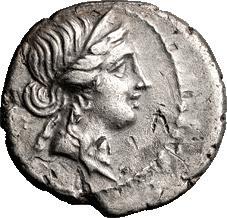
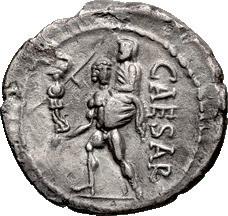
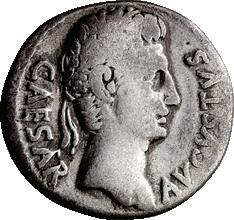


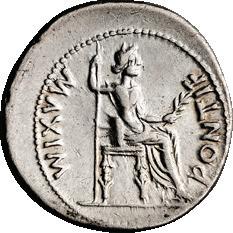

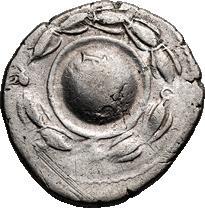





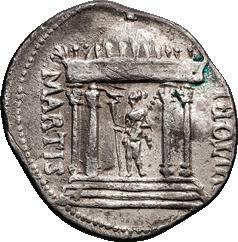



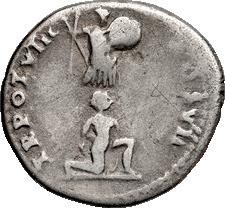



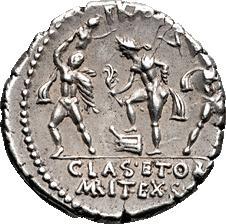
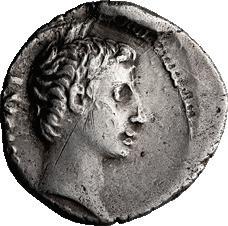




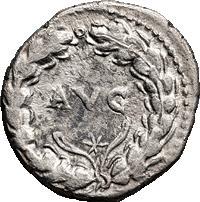

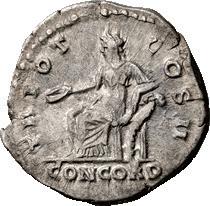

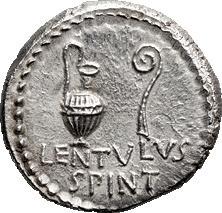

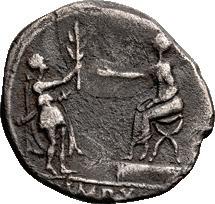
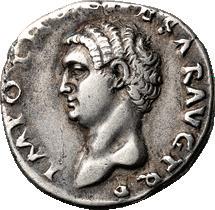
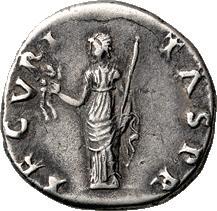






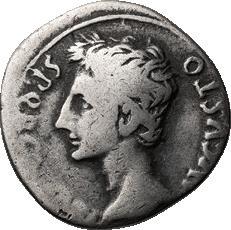




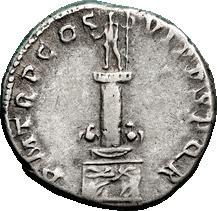
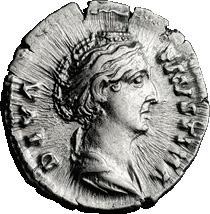

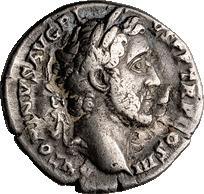

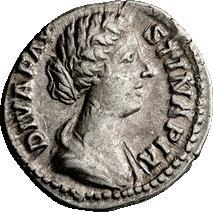


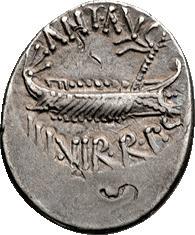



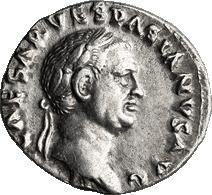




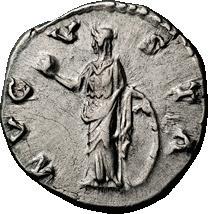











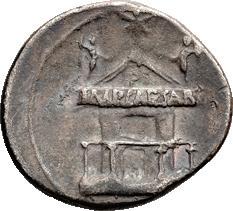





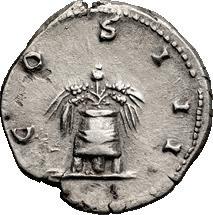







with bull’s horn and ear; fillet border. Rx: ΒΑΣΙΛΕΩΣ ΜΕΓΑΛoY above, ΕΥΚΡΑΤΙΔoΥ in exergue, the Dioscouri on horses prancing r., each holding spear and palm; WA monogram in lower l. field behind horses. Bopearachchi knew this tetradrachm only with the monogram placed in the lower right rather than lower left field. Two other specimens apart from ours with monogram to left not right: Berk 168, 16 March 2010, lot 156, and CGB Paris, June 2017, lot 53. MS 1750
282. BACTRIA, MENANDER, C. 155-130 BC; Drachm, 2.50g. Bopearachchi13H. Obv: Diademed bust r. Rx: Athena standing l., brandishing thunderbolt and holding shield; monogram in l. field. MS 150 283. PTOLEMAIC, PTOLEMY II, 283-246 BC; Sidon, probably 274 BC, Tetradrachm, 13.66g. CPE-505. Obv: Diademed head of Ptolemy I r. Rx: Eagle with folded wings standing l. on thunderbolt, ΣΙ before. EF / VF 400
284. PTOLEMAIC, PTOLEMY VI, 180-145 BC; Cyprus, Paphos, Year 30=152151 BC, Tetradrachm, 14.16g. Sv-1443. Obv: Head of Ptolemy I r. Rx: Eagle standing l., LΛ in l. field, ΠΑ in r. field. Ex Berk 134, October 2003, lot 182. Highly unusual style which is typical of the Cyprus mints. 1800 285. MAURYAN EMPIRE; 300-181 BC, Karshapana, 3.04g. Pieper-145, MACW4245. Three human figures, possibly a portrayal of the the mythical heroes of the Ramayana: Ram, Sita and Lakshman. Peacock above. EF 0 GREEK BRONZE
286. TRINOVANTES, CUNOBELINE; c. 10-40 AD, Unit, 2.20g. Van Arsdell-2093. Obv: Celtic warrior on horse r. Rx: Warrior standing l. gVF 200
287. SENONES; 1st Century BC, Potin 17mm, 4.62g. De La Tour-7417. Obv: Head r., with wild hair. Rx: Horse galloping l., pellets around. Exceptional reverse. EF 150
288. SPAIN, CASTULO; Late Second Century, AE, 10.74g. SNG-1298. Obv: Diademed male head right. Rx: Sphinx advancing with star in right field. EF 300
289. SPAIN, CASTULO; Early 1st cent. BC, AE 17, 4.20g. SNG BM-1359, SNG Cop-213. Obv: Diademed male head r., Iberian letter ka before mouth and chin. Rx: Bull standing r., L and crescent above, Iberian ethnic in exergue. From the Philip Ashton Collection, acquired in November 2015. EF 125
290. CAMPANIA, CALES; c. 265-240 BC, AE 20, 6.35g. HN Italy-436. Obv: Head of Apollo l. Rx: Man-headed bull r., star above. VF 125
291. CAMPANIA, NEAPOLIS; c. 250-225 BC, AE 20, 5.15g. SNG Cop-520, SNG ANS-, HN Italy-595. Obv: Head of Apollo l., P behind. Rx: Man-headed bull r., crowned by Nike. VF 125
292. BRUTTIUM, BRETTIAN LEAGUE; 208-203 BC, Didrachm, 11.54g. HN Italy-2000. Obv: Helmeted head of Ares left within wreath Rx: Athena advancing right, head facing, holding shield, spear leans against her; lyre to right. Ex CNG E438, February 2019, lot 19. aVF 200
293. SICILY, AGRIGENTUM; early 2nd cent. BC, AE 22-23, 9.90g. HGC-155 (R1), same dies as illustration. Obv: Laureate head of Apollo r. Rx: AKPAΓAN - [TINΩN] Warrior advancing r., brandishing spear. Ex Pegasi 76, lot 19 . VF 200
294. SICILY, AKRAGAS UNDER ROMAN RULE; After 210 BC, AE 22, 7.98g. Calciati-145, SNG ANS-1147. Obv: Laureate head of Zeus r. Rx: Eagle standing facing. gVF 100
295. SICILY, CAMARINA; c. 420-405 BC, Tetras, 3.05g. CNS-33. Obv: Head of Athena l. Rx: Owl standing facing, head l.; lizard in r. claw; three pellets in exergue. VF 125
296. SICILY, GELA; 420-405 BC, AE, 3.73g. Calciati-52/1. Obv: Bull standing right. Above, olive sprig; Rx: Head of river god right; behind, barley grain. Slightly off-center but lovely imagery and pretty black patination. EF 135
297. SICILY, MENAENUM; 2nd century BC, AE, 3.37g. BM-5, Calciati-7. Tetras. Obv: Bust of Demeter r., wearing necklace, wreath of corn, and veil. Rx: MENA-INΩN; two torches crossed; beneath, IIII. F+ / VF 100
298. SICILY, SYRACUSE; c. 405-400 BC, Hemilitra, 3.37g. Calciati-22, SNG ANS-404. Obv: Head of Arethusa l. Rx: Four-spoked wheel, dolphins in lower two quadrants. Exquisite obverse style. Ex NAC F, 17 April 1996, lot 1126. EF 385
299. SICILY, AGATHOKLES; 317-289 BC, Litra, 8.95g. SNG ANS-708ff, HGC1537. Obv: Head of Artemis Soteria right, quiver over shoulder Rx: Winged thunderbolt; AΓAΘOKΛEOΣ above, BAΣIΛEOΣ below. Ex Davissons 42, December 2021, lot 16. EF 200
300. SICILY, PYRRHUS; 278-276 BC, AE 22-23, 10.15g. Calciati-176, Sear1314. Obv: Head of young Herakles l., wearing lion’s skin headdress. Rx: ΣYPA - [K]OΣIΩN Athena Promachos advancing r., thunderbolt in raised r. hand and shield on outstretched l. Ex Harlan J Berk BBS 204, Lot 253, June 2018. Choice EF 300
301. SICILY, SICULO-PUNIC; Late 4th-Early 3rd Cent. BC, AE 16, 2.60g. SNG Cop-109. Obv: Head of Tanit l. wearing wreath of wheat ears and pendant necklace. Rx: Horse standing r. in front of palm tree. From the Philip Ashton Collection, acquired in Münster, Germany, October 2007. EF 275
302. SICILY, PANORMUS; after 241 BC, AE 22, 3.74g. Calciati-8, HGC-1081. Obv: Head of Zeus, r. Rx: Warrior standing l., holding spear. EF 200
303. ZEUGITANIA, CARTHAGE; Sardinian Mint, 300-264 BC, AE 20, 5.88g. SNG Cop-164. Obv: Head of Tanit l. wearing wreath with wheat ears and pendant necklace. Rx: Horse head r.; pellet in r. field. Purchased from CNG in
the 1990s. VF 120
304. MACEDONIA, PHILIP II, 359-336 BC; AE 16, 5.16g. Bellinger, Museum Notes XI-77. Obv: Head of Apollo r., Rx: Horseman r., ΛΕ monogram below. VF 100
305. MACEDONIA, PHILIP II; 359-336 BC, AE 16, 6.33g. ANS Museum Notes XI Bellinger “Philippi in Macedonia” no. 23. Obv: Head of Apollo r., Rx: ΦΙΛΙΡΡΟY Horseman r., spearhead below. EF 100
306. MACEDONIA, ALEXANDER III THE GREAT; 336-323 BC, AE 13, 3.98g. Price-347, SNG Alpha Bank-757. Obv: head of Apollo, r. wearing taenia Rx: ΑΛΕΞΑΝΔΡΟΥ; horse prancing r., bunch of grapes below. 0
307. MACEDONIA, ANTIGONUS GONATAS; 277-239 BC. AE 18, 5.33g. SNG Cop-1205, Sear-6786 var. Obv: Helmeted head of Athena r. Rx: Pan, with horns and tail, stepping r. to erect trophy; across field B - A and Macedonian helmet - wreath; between Pan’s legs, ANTI monogram (backwards). Monogram on reverse retrograde. VF 85
308. ANONYMOUS, AFTER C. 311 BC; AE 16, 4.07g. Price-2808. Obv: Macedonian shield; in center, head of Herakles facing 3/4 r. Rx: B - A Crested Macedonian helmet, at lower r. olive leaf. VF 100
309. THRACE, ABDERA; c. 200 BC, AE 18.5x21, 8.06g.AMNG-239 (5 spec.). Obv: Laureate head of Apollo r. with long hair. Rx: Griffin reclining l., [A] BΔHPITΩN above, [EΠI IΣ]AΓ[OPOY] below. With printed ticket from M & M Basel. VF 150
310. THRACE, PERINTHUS; Perinthus, Thrace, c. 198-217 AD, AE 21-22, 5.97g. Schönert-205 (1 spec., Paris). Obv: TON KTICTH[N] Head of bearded Hercules l. Rx: ΠΕP - IN / ΘI - ΩN / NEΩ - KO / P - ΩN in four lines across field, Vertical club, handle at top, all within laurel wreath. One ligature in obverse legend (HN), three in reverse legend (ΠΕ, ΝΕ, ΩΝ). Commemorates Hercules as founder of Perinthus. From the same obverse die as Schönert-204 and the same reverse die as Schönert-206. aEF 250
311. THRACE, LYSIMACHUS; 305-281 BC, AE 13.5, 2.47g. SNG Cop-1162. Obv: Helmeted head of Athena r. Rx: [B]AΣIΛEΩ[Σ] / ΛYΣIMA[XOY] Forepart of lion r.; spearhead below, caduceus and EM monogram behind. VF 100
312. THESSALY, CRANNON, BUDGET AE 14; 400-344 BC, AE 14, Thessaly, Crannon, 2.04g. Rogers-187. Obv: Horseman clad in chlamys and petasos galloping r. Rx: Bull butting r., trident above. 0. aVF 150
313. THESSALY, CRANNON; 400-344 BC, AE 14-14.5, 2.00g. Cf. BCD-118.14. Obv: Rider wearing petasos on horse prancing l. Rx: Bull butting r., [KPAN] in exergue, trident above. VF 125
314. ELIS, OLYMPIA; c. 271-191 BC, AE 24, 13.58g. NC 1905, p. 335, 3-4, SNG Cop-429 var. Obv: Head of Hera r. Rx: Eagle standing r., F A to either side, monogram below r. Ex Berk BBS 197, March 2004, lot 506. Some areas of flat striking on reverse. aEF 1000
315. PONTUS, AMISUS; c.100-85 BC, AE 27, 20.60g. SNG BM-1135, SNG Cop131. Obv: Male head r., wearing leather cap. Rx: Quiver and unstrung bow; [A] MI - ΣOY across field. EF 225
316. IONIA, PHYGELA; AE 17, Ionia, Phygela, c. 400-350 BC, 8.66g. SNG Cop1075. Obv: Head of Artemis Munychia 3/4 face to l. Rx: Bull butting l., palm tree before. Rare; ex John Twente Animal Collection. Fine+ / VF 150
317. LYDIA, TRIPOLIS, QUASI-AUTONOMOUS, BUST OF PEOPLE; Tripolis, Lydia, 3rd cent. AD, AE 26, 7.22g. Cf. Kurth-10 (there laureate head rather than bare-headed, draped bust of Demos, and legends differently divided on both obv. and rev.). Obv: ΔHM - O - C Draped, bare-headed bust of Demos (the People) r. Rx: TPI - ΠOΛE - ITΩN Tyche (Fortuna) standing l., kalathos on head, holding rudder and cornucopia. Rare, possibly unpublished; this variant not in Kurth, nor does she illustrate either of our dies in another combination under Tripolis . aEF 175
318. ABBAITIS; 2nd Century BC, AE 18, Phrygia, Abbaitis, 5.78g. SNG Cop4. Obv: Head of Zeus laureate r. Rx: Thunderbolt, legend above, legend and monogram below, all within oak wreath. VF 150
319. PISIDIA, TERMESSUS MAJOR; 71-36 BC, AE 19-21, 5.09g. ImhoofBlumer, Griechische Münzen, 1890, no. 519. Obv: Laureate head of Zeus r. Rx: Forepart of galloping horse l., TEP below, E (Year 5) behind. The date on reverse might also be Z (Year 7), written like an I. Our coin is unusual in having the date written behind rather than above the forepart of the horse. VF 200
320. PISIDIA, TERMESSUS MAJOR; 71-36 B.C., AE 18-20, 4.80g. SNG Paris BN-2113, Plant-1198. Obv: Head of Zeus wearing laurel wreath, r. Rx: TEP, horse leaping, l., H in field above. VF 100
321. CILICIA, SOLOI-POMPEIOPOLIS; c. 100-30 BC, AE 21x22, 4.51g. SNG Levante-859. Obv: Diademed, draped bust of Artemis r., with bow and quiver over her l. shoulder. Rx: ΣΟΛΕΩN Athena advancing r., brandishing thunderbolt and holding up shield Small circular mark on reverse field. EF 250
322. CILICIA, HIEROPOLIS-CASTABALA; 2nd-1st cent. BC, AE 21, 7.92g. Cf. SNG Paris-2209 and Sear-5548. Obv: Turreted head of city goddess r., monogram behind. Rx: [IEP]OΠOΛI[TΩN] / [T]ΩN ΠPOΣ TΩ[I] / [ΠVP] AMΩ[I] downwards in three lines, City goddess seated l., nude to waist and without crown of towers, eagle below seat. EF 150 323. SYRIA, ANTIOCHUS IV; 175-164 BC, AE, 34.50g. SC-1413, SNG Spaer-979, HGC-643. Obv: Laureate bust of Zeus-Serapis right. Rx: [Β]
Eagle, closed wings, head right.
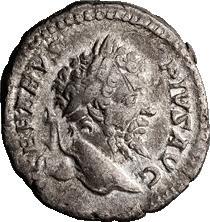



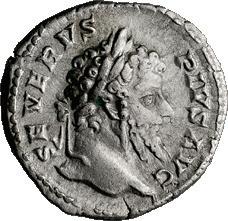

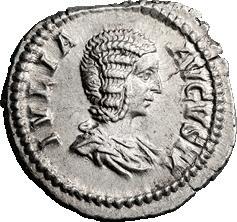



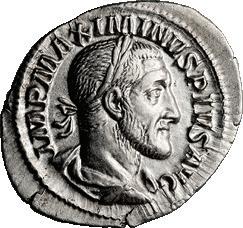


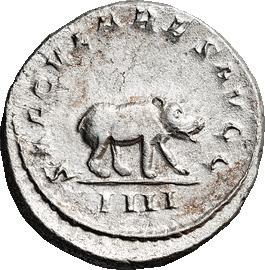








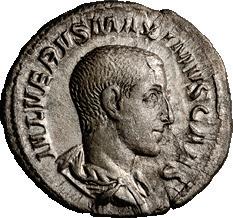


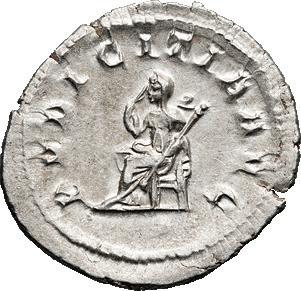
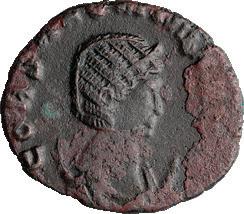

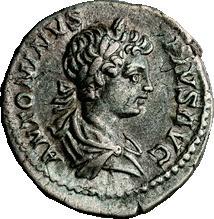
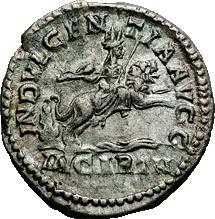






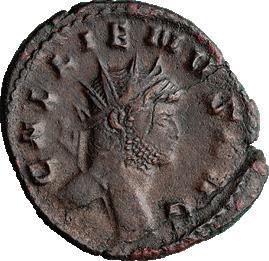





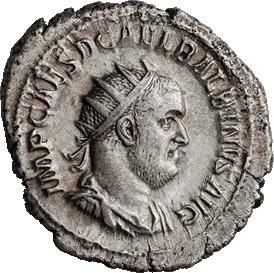

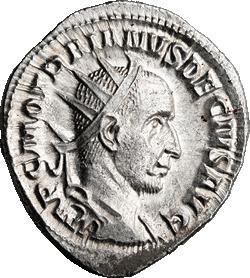
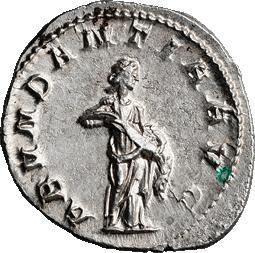







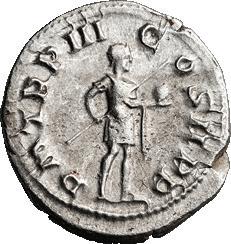
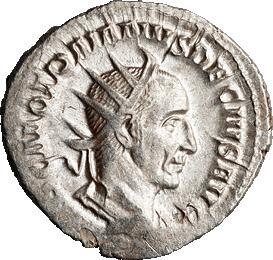





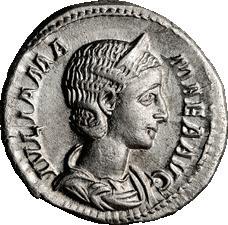
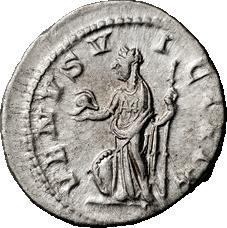

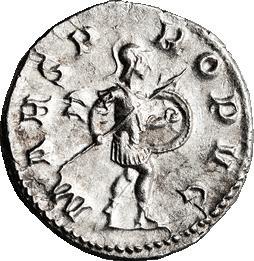
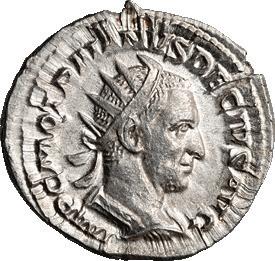
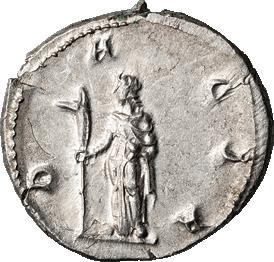









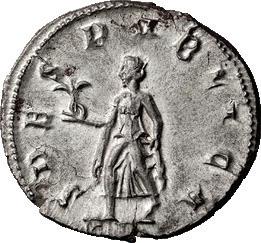
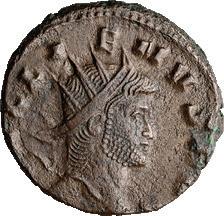

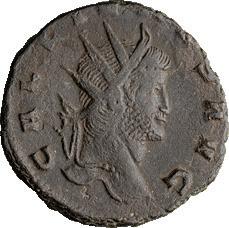
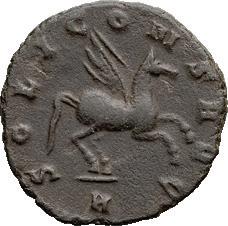
aEF / VF 425
324. SYRIA, ANTIOCHUS VII; Year 175 = 138/7 BC, AE 15, 3.02g. SC-2068.3, Sear-7100. Obv: Lion’s head r. Rx: BAΣIΛEΩΣ / ANTIOXOY / EYEPΓETOY r. and l. of vertical club; below, date EOP; to l., monogram ΔI above uncertain symbol. Acquired from Musa. gVF 100
325. CYRENAICA, CYRENE; 3rd century BC, AE 13, 3.02g. BM-285. Obv: Jerboa r. Rx: Crab. VF 200
326. PTOLEMAIC, PTOLEMY III; Alexandria, c. 246-222 BC, Triobol, AE 37, 34.92g. CPE-B396, Svoronos-965, SNG Cop-173. Obv: Diademed head of Zeus-Ammon r. Rx: Eagle standing l. on thunderbolt, wings closed; cornucopia bound with royal diadem to l., XP monogram between legs. VF 500 327. WILLIAM II, NORMAN SICILY; 1166-1189, Trifollaro, 10.38g. MEC425. Obv: Lion’s head facing. Rx: Palm tree. VF 100 ROMAN REPUBLICAN SILVER
328. ANONYMOUS; 115/14 BC, Denarius, 3.87g. Cr-287/1, Syd-530. Obv: Head of Roma r., ROMA below, X behind. Rx: Roma seated r. on shields, Wolf and Twins before, two birds in field. gVF 400
329. P. LAECA; 110-109 BC, Denarius, 3.99g. Cr-301/1, Syd-571, RSC Porcia-4. Obv: Helmeted head of Roma r., [ROMA] above, X below chin, [P L]AECA behind. Rx: Roman warrior standing l., placing hand on head of citizen, lictor behind, PROVOCO in exergue. gVF 385
330. L. FLAMINIUS CHILO; 109-108 BC, Denarius, 3.93g. Crawford-302/1. Obv: Helmeted head of Roma r. Rx: Victory in biga r. Toned EF 400 331. TI. CLAUDIUS TI.F.AP.N.NERO; 79 BC, 3.84g. Cr-383/1, Syd-770, Claudia 6. Obv: Bust of Diana r., bow and quiver over shoulder, S C before. Rx: Victory in biga r., CXXVIIII below, TI CLAVD TI F/AP N in exergue. VF 175 332. C. HOSIDIUS C.F. GETA; 68 BC, Denarius, 3.94g. Cr-407/2, Syd-903, RSC Hosidia-1. Obv: Diademed bust of Diana r., III VIR behind, GETA before. Rx: Wild boar of Calydon r., pierced by spear and attacked by dog, C HOSIDI C F in exergue. gVF 300
333. C. CONSIDIUS NONIANUS; 57 BC, Denarius, 3.78g. Cr-424/1, RSC Considia-1, Syd-887. Obv: Bust of Venus Erycina r. C. CONSIDI. NONIANI behind, SC before. Rx: Temple of Venus at Eryx on summit of mountain surrounded with rampart; ERVC above gateway. From a collection formed c. 1980s-1990s. Some areas of flat striking. MS 600
334. Q. CASSIUS LONGINUS; 55 BC, Plated Denarius, 2.26g. Cr-428/1, Syd917, RSC Cassia-9. Obv: Veiled head of Vesta r., VEST before, Q CASSIVS behind. Rx: Curule chair within temple of Vesta; to l., urn; to r., voting tablet inscribed AC. No evidence of plating, but the weight is impossibly light for a good silver coin. From a collection formed c. 1980s-1990s. EF / aEF 300
335. C. COELIUS CALDUS; 51 BC, Denarius, 3.78g. Cr-437/1a, Syd-891, RSC Coelia-4. Obv: C·COEL·CAL[DVS] Head of the consul C. Coelius Caldus r.; below, [COS] and, behind, tablet inscribed L·D. Rx: CALDVS·IIIVIR Head of Sol r.; behind, oval shield decorated with thunderbolt; before, Macedonian shield. Toned MS 2400
Exquisite Example
336. P. CORNELIUS LENTULUS MARCELLINUS; 50 BC, Denarius, 3.83g. Cr-439/1, Syd-1147, RSC Claudia-11. Obv: Head of the consul M. Claudius Marcellinus r., MARCELLINVS before, triskeles behind. Rx: M. Claudius Marcellinus carrying trophy within tetrastyle temple, MARCELLVS on r., COS QVINQ on l. Ex CNA IX, 7 December 1989, lot 335. While this coin is only considered scarce, it rarely comes in this quality. EF 3850
337. C. VIBIUS C.F.C.N. PANSA CAETRONIANUS; 48 BC, Denarius, 4.05g. Cr-449/1b, Syd-948, RSC Vibia-19. Obv: Mask of Pan r., PANSA below, pedum behind. Rx: Jupiter Axurus seated l., C VIBIVS C F C [N] behind, IOVIS AXVR before. MS 375
338. C. VIBIUS C.F.C.N. PANSA CAETRONIANUS; 48 BC, Denarius, 3.86g. Cr-449/2, Syd-946, RSC Vibia-16. Obv: Head of young Bacchus r., PANSA behind. Rx: Ceres walking r., holding two torches; plow before, C VIBIVS CFNC behind. Purchased from Harlan J. Berk in the 1980s. aEF 265
339. MN. CORDIUS RUFUS; 46 BC, Denarius, 3.92g. Cr-463/1b, Syd-976c. Obv: Jugate heads of Dioscuri r. wearing caps bound by thin double bands; two stars above, RVFVS [III VIR] behind. Rx: Venus standing l. holding scales and scepter, Cupid on her shoulder, [M]N CORDI behind (MN ligate). Reverse offcenter. Toned aEF 250
340. T. CARISIUS; 46 BC, Denarius, 3.38g. Cr-464/5, Syd-985, RSC Carisia-3. Obv: Bust of Victory r., SC behind. Rx: Victory in quadriga r., T. CARISI in exergue. Toned EF 300 View of Rostra
341. LOLLIUS PALICANUS; 45 BC, Denarius, 4.11g. Cr-473/1, Syd-960, RSC Lollia-2. Obv: Head of Liberty r. Rx: View of Rostra in the Forum surmounted by a sella. Ex NFA Summer Mail Bid, 27 June 1986, lot 635. Toned EF 950
342. L. LIVINEIUS REGULUS; 42 BC, Denarius, 3.52g. Cr-494/30, Syd-1112 (R6), RSC Livineia-12, Sear Imperators-179. Obv: Head of the praetor L. Regulus. Rx: Wild beast fight: man with spear attacks lion, man with sword and shield attacks panther, wounded boar at upper l. From a collection formed c. 1980s-1990s. Fine / VF 300
343. L. MUSSIDIUS LONGUS; 42 BC, Denarius, 4.16g. Cr-494/43a, Syd1094, RSC Mussidia-7. Obv: Facing bust of Sol. Rx: Two statues of Venus Cloacina on platform, L MVSSIDIVS LONGVS above, CLOACIN inscribed
on platform. Venus of the Sewers. From a collection formed c. 1980s-1990s. VF 600
ROMAN IMPERATORIAL SILVER
344. JULIUS CAESAR; Military Mint, 49-48 BC, Denarius, 3.86g. Cr-443/1; Syd-1006; Sear, Imperators-9. Obv: Elephant r. trampling serpent, CAESAR in exergue. Rx: Pontifical emblems: ladle, sprinkler, ax with lion’s head mounted on handle above blade, apex (priest’s hat). Exceptional. MS 4000
345. JULIUS CAESAR; 49-44 B.C., Denarius, 3.60g. Crawford-458/1, Sydenham-1013. Obv: head of Venus right, wearing beaded necklace, stephane with bangs rolled and tucked into stephane and pulled back into chignon, some loose curls behind. Rx: CAESAR, Aeneas advancing left, head facing, palladium left in outstretched right hand, carrying Anchises on his left shoulder. Bankers marks on obverse. gVF 1150
346. JULIUS CAESAR AND MARK ANTONY; 43 BC, Denarius, 3.28g. Cr488/2; Syd-1166; Sear, Imperators-123. Obv: [M ANT]O IMP R P C Bare head of Mark Antony r., lituus in l. field. Rx: CAESAR DIC Wreathed head of Caesar r., pitcher in l. field. VF 1450
347. SEXTUS POMPEY; 42-40 BC, Denarius, 3.82g. Cr-511/3a, Syd-1344 (R5), Sear, Imperators-334. Obv: Head of Pompey the Great r. between augural symbols, pitcher and lituus. Rx: Neptune standing l., foot on prow, between the Catanaean brothers with their parents on their shoulders. Ex CNG 126, 28-29 May 2024, lot 614. Ex Elvira Elisa Clain-Stefanelli Collection (NAC 92, 24 May 2016, lot 1936.). EF 2600 Brutus
348. BRUTUS; 42 BC, probably at Smyrna, Denarius, 3.78g. Cr-500/7, Syd-1310, Sear, Imperators-198. Obv: Ax, simpulum, and sacrificial knife, BRVTVS below. Rx: Pitcher and lituus, LENTVLVS SPINT below. Ex HJB Private Sale, May 2008. Ex HJB BBS 184, lot 123, April 2013. Formerly slabbed by NGC MS 5/5, 4/5. MS 3250 Brutus
349. BRUTUS; Military Mint in East, 42 BC, Denarius, 3.78g. Cr-506/2, Syd-1296, Sear Imperators-209. Obv: Head of Apollo r., COSTA before, LEG behind. Rx: Military trophy, BRVTVS IMP around. Ex Frederick Knobloch Collection, Stacks, 3 May 1978, lot 716. Exceptional metal and strike. Probably the finest example of this iconic type we’ve handled in over 50 years. MS 6500
350. MARK ANTONY; 32-31 BC, Denarius, 3.86g. Cr-544/36, Syd-1243 (R2), Sear, Imperators-380. Obv: Galley r. Rx: Legionary eagle between two standards; below, LEG XX. gVF 475
351. OCTAVIAN; 37 BC, Denarius, 3.90g. Cr-538/1, Syd-1334, Sear, Imperators-312. Obv: IMP.CAESAR - DIVI. [F.III.VIR.ITER.R.P.C] Bare head of Octavian r. Rx: COS ITER.ET.TER.DESIG Sacrificial implements: ladle, sprinkler, pitcher, lituus. F 875 ROMAN IMPERIAL SILVER
352. AUGUSTUS; 27 BC-14 AD, Before 27 BC, Denarius, 3.75g. BM-631, Paris-52, RIC-266, C-122. Obv: Bare head of Octavian r., no legend. Rx: Curia Julia (Senate House) with double door, tripartite window, pediment surmounted by statues of Victory on globe and two commanders (Octavian and Agrippa?) holding spears and swords, IMP CAESAR on architrave; Curia rests on base with veranda of four columns. The only surviving depiction of the facade of the Senate House of Rome begun by Julius Caesar in 44 BC and completed by Octavian in 29 BC: see P.V. Hill, Monuments of Ancient Rome as Coin Types, p. 44. Toned EF 1150
Extremely Rare Issue
353. AUGUSTUS; 27 BC-14 AD, Spanish mint, c. 19-18 BC, Denarius, 3.52g. Cf. BM-334 and Paris-pl. LIV, a (same obv. die). Obv: CAESAR - AVGVSTVS Head laureate r. Rx: S P - Q [R] across field, Victory hovering front, head l., holding large round shield with both arms. Rare type, not in the Paris or BM collections. Ex Curtis L. Clay Collection. Fine 800 Rarity 4
354. AUGUSTUS; 27 BC-14 AD, Hispania Baetica (Colonia Patricia or Cordoba), 19-15 BC, Denarius, 3.74g. RIC-39b (R4); cf. BM-329 (portrait r. not l.). Obv: CAESAR - AVGVSTVS Head bare l. Rx: MARTIS on l., VLTORI[S] on r., Round temple of Mars the Avenger with four visible columns, within which, between the columns, Mars standing l. holding legionary eagle and standard. Ex Curtis L. Clay Collection; ex CNG E129, 21 Dec. 2005, 353. A few obverse contact marks. EF 1000
355. AUGUSTUS; 27 BC-14 AD, Eastern Mint, 19-15 BC, Denarius, 4.08g. C-182 (6 Fr.), RIC-472, BM-666, Paris-936. Obv: AV[GVSTVS] Head bare r. Rx: [IOVI] - OLV Six-columned temple, shield in pediment, three palmettes as acroteria. Scarce: Sutherland’s die study included 38 specimens, from 30 obverse and 30 reverse dies (Revue num. 1974, p. 51). Die break above head of Augustus. Toned EF
700
356. AUGUSTUS; 27 BC-14 AD, Lugdunum, 15-12 BC, Denarius, 3.12g. RIC162b; Paris-1364, pl. LV (same dies). Obv: AVGVSTVS DIVI F Head bare l. Rx: IMP X in exergue, Tiberius alone, without Nero Drusus as usual, standing r. offering laurel branch to Augustus, who sits l. on curule chair on platform, extending r. hand to receive the branch. Tiberius and Nero Drusus offered triumphal laurels to Augustus for their capture of Rhaetia in 15 BC: see BMC p. cxv. Ex Curtis L. Clay Collection. gVF 875
357. AUGUSTUS; 27 BC-14 AD, Spanishn Mint, Denarius, 3.47g. RIC-145 (R4),

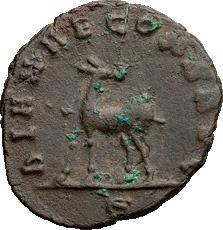

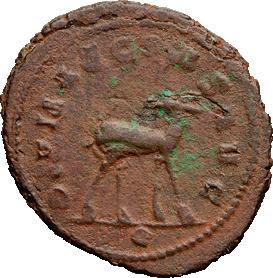

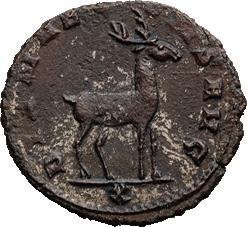
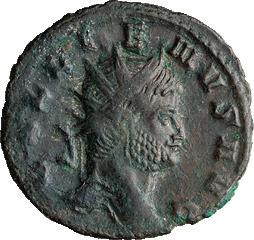

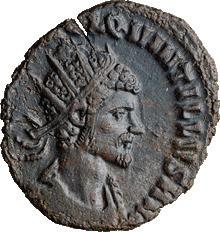



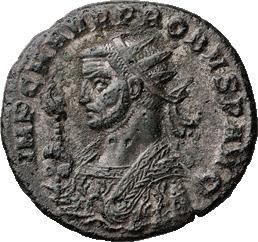
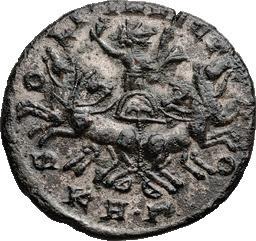
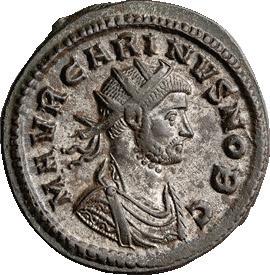

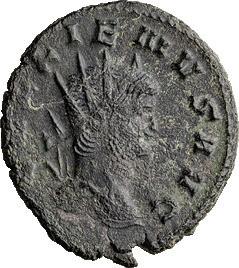



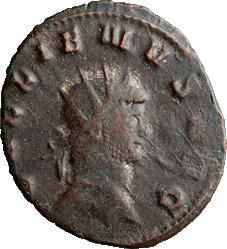




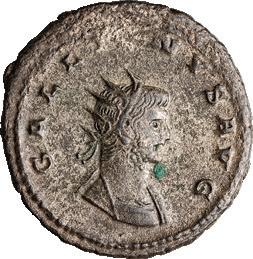




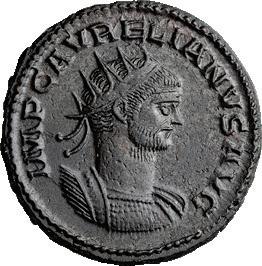






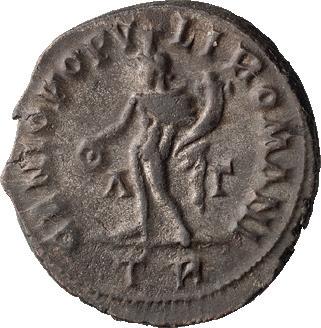
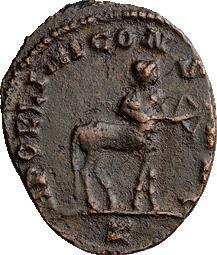
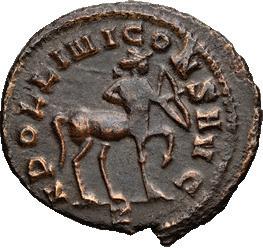

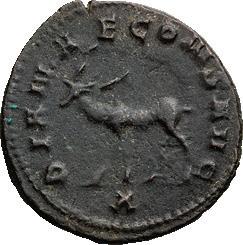




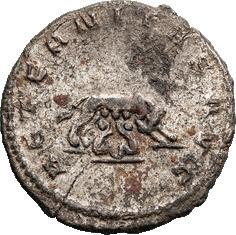
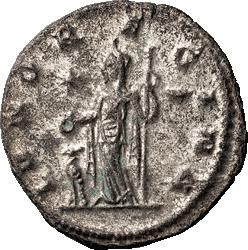




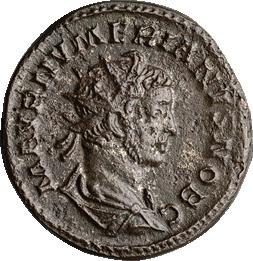
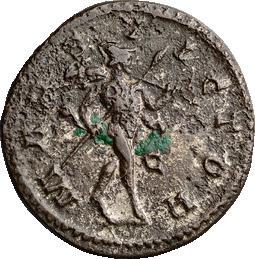

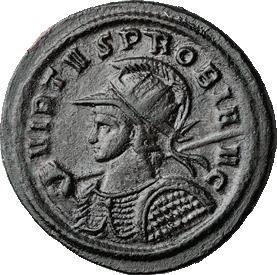






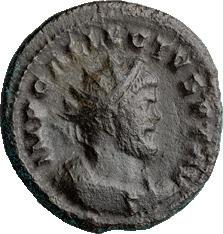

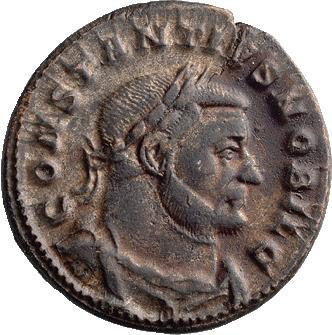

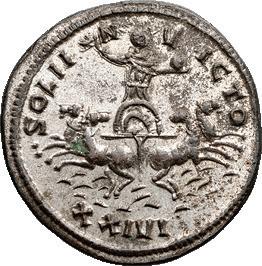



BM-434, C-231 (25 Fr.). Obv: SPQR C[AESARI] - [A]VGVSTO Bare head of Augustus l. Rx: QVOD - VIAE MVN SVNT Triumplal arch with twin arches and ornamented with rostra l. and r., set on a viaduct and bearing a statue of Augustus crowned by Victory in a quadriga of horses r. Fine 600
358. AUGUSTUS; 27 BC-14 AD, Lugdunum, c. 2 BC-4 AD, Denarius, 3.61g. BM538, Paris-1666, RSC-43d, RIC-212 (S). Obv: CAESAR AVGVSTVS - DIVI F PATER PATRIAE Head laureate r. Rx: C L CAESARES in exergue, AVGVSTI F COS DESIG PRINC IVVENT around, Gaius and Lucius Caesars standing with honorary shields and spears, lituus and simpulum above, x in center field. Scarce mirror-image variant of reverse type with the r. shield overlapping the l. shield rather than vice versa and the lituus and simpulum in field reversed, rare with x in field. VF 485
359. AUGUSTUS; 27 BC-14 AD, Lugdunum, 2 BC-4 AD, Denarius, 3.62g. BM519, C-43, Paris-1651, RIC-207. Obv: CAESAR AVGVSTVS - DIVI F PATER PATRIAE Head laureate r. Rx: C L CAESARES in exergue, AVGVSTI F COS DESIG PRINC IVVENT around, Gaius and Lucius Caesars standing holding honorary shields and spears, simpulum and lituus above. VF 350 Restoration Issue
360. AUGUSTUS, GAIUS AND LUCIUS, RESTORED DENARIUS; Date and location of restoration uncertain, Denarius, 3.62g. BM-536, pl. 13.18. Obv: Laureate head r. and legend of Augustus. Rx: Gaius and Lucius Caesars standing side by side, holding honorary shields and spears; between them ladle on l. turned l. and lituus on r. turned r., with split base; in fine style, suggesting that this issue was restored by an unnamed later emperor. Ex Mark Gibbons Collection. From 2021-2024 this coin was on loan to the History Department, Murray State University, Kentucky. Toned MS 3000
361. TIBERIUS; 14-37 AD, Lugdunum, Denarius, 3.64g. BM-48, Paris-28, RIC30, C-16. Obv: TI CAESAR DIVI - AVG F AVGVSTVS Head laureate r. Rx: PONTIF - MAXIM on r. and l., Livia seated r. holding scepter and branch, throne legs ornamented, footstool below feet, single line beneath throne. Ex Mark Gibbons Collection. From 2021-2024 this coin was on loan to the History Department, Murray State University, Kentucky. EF 950 Tribute Penny
362. TIBERIUS; 14-37 AD, Lugdunum, Denarius, 3.66g. RIC-30. Obv: TI CAESAR DIVI AVG F AVGVSTVS; Head of Tiberius, laureate, r. Rx: PONTIF MAXIM; Livia (as Pax) seated r. on a chair with ornamented legs, holding scepter in her right hand and olive branch in her left, single line below chair. VF 650
Exquisite Otho
363. OTHO; 69 AD, Rome, Denarius, 3.59g. BM-17. Obv: IMP M OTHO CAESAR AVG TR P Head bare r. Rx: SECVR - I - TAS P R on l. and r., Securitas standing l. holding wreath and scepter. This coin is about as good as Otho gets, with a complete name, good portrait, and strong reverse. Virtually MS 12500 Rare Left-Facing Portrait
364. OTHO; 69 AD, Rome, Denarius, 3.37g. BM-20, Paris-17, C-19 (20 Fr.), RIC12 (R3). Obv: IMP OTH[O CA]ESAR AVG TR P Head bare left. Rx: SECVRI - TAS P R Securitas standing l. holding wreath and scepter. Ex Mark Gibbons Collection; ex Gemini VIII, 14 April 2011, lot 295. From 2021-2024 this coin was on loan to the History Department, Murray State University, Kentucky. Rare with left-facing portrait: only one specimen in Reka Devnia hoard. Bust left, exceptional portrait that looks like a statue. Light tooling of the folds of Securitas’ clothing on the reverse. Virtually EF 3000
365. GALBA; 68-69 AD, Rome, Denarius, 3.22g. BM-34 corr, C-287, Paris-76, RIC-167. Obv: IMP SER GALBA AVG Head bare r. Rx: S P Q R / OB / C S in three lines within oak wreath. Bare-headed portrait, wrongly described as laureate in BMC. VF 900
Extremely Rare Quality
366. VESPASIAN; 69-79 AD, Rome, 69-70 AD, Denarius, 3.47g. RIC-2. Obv: [IMP] CAESAR VESPASIANVS AVG Head laureate r. Rx: IVDAEA in exergue, Judaea seated r., head resting on hand, to r. of trophy. While this type is extremely common, as Vespasian felt it was a great victory, the coins are almost never in the wonderful condition of this example. MS 4000 Commemorative of Tiberius
367. VESPASIAN; 69-79 AD, Rome, 73 AD, Denarius, 3.44g. BM-98, Paris-86, C-387, RIC-65. Obv: IMP CAES [VESP] - AVG CENS Head laureate r. Rx: PONTIF - MAXIM Emperor seated r. on curule chair holding scepter and branch. The reverse copies Tiberius’ “tribute penny”, probably because Vespasian was restriking masses of heavier denarii from before Nero’s reform and wanted to preserve a record of some of their famous reverse types on his own denarii. Magnificent portrait of Vespasian, commemorating the tribute penny issue of Tiberius. Toned. Choice EF 1100
368. VESPASIAN; 69-79 AD, Rome, 74 AD, Denarius, 3.44g. RIC-703 (C2), pl. 6. Obv: IMP CAESAR - VESPASIANVS AVG Head laureate r. Rx: PON MAXTR P COS V on r. and l., Winged caduceus upright. gVF 350
369. VESPASIAN; 69-79 AD, Ephesus, 69-70 AD, Denarius, 3.15g. Cf. RIC-1393 (R3). Obv: IMP CAES - VESPAS AVG Head laureate r. Rx: Shield inscribed A[V]G within laurel wreath. Ex Curtis L. Clay Collection, acquired from Münz Auktion Essen, without further details. Possibly a unique variety; RIC-1393 lists a similar coin, but with an oak wreath rather than a laurel wreath around the shield on reverse. F / VF 525
370. TITUS; 79-81 AD, Rome, AD 79, Denarius, 3.20g. RIC-1, Hendin-6516. Obv: IMP T CAESAR VESPASIANVS AVG Head laureate right. Rx: TR POT VIII COS VII Male captive kneeling r. in front of trophy. Fine 450
371. TITUS; 79-81 AD, Ephesus, 74 AD, Denarius, 2.96g. RIC-1459 (R2), RPC855. Obv: IMP T CAESAR - COS III Head laureate r. Rx: AVG and star in oak wreath. Ex Curtis L. Clay Collection. aVF 350 372. NERVA; 96-98 AD, Rome, 97 AD, Denarius, 3.57g. Paris-44, BMC-62 note, citing spec. in Copenhagen). Obv: IMP NERVA CAES AVG - P M TR P II COS III P P Head laureate r. Rx: SALVS - PVBLICA Salus seated l. holding two wheat ears and resting l. elbow on throne. Ex Curtis L. Clay Collection. This denarius shares its reverse die with the aureus BM-62, pl. 2.17. VF 350
373. TRAJAN; 98-117 AD, Rome, 115-6 AD, Denarius, 3.12g. BM-565, C-284 (4 Fr.), RIC-356. Rx: P M TR P COS VI P P S P Q R The Column of Trajan, surmounted by a statue of the emperor and resting on a two-tiered base; spirals on the column indicate the famous relief band narrating the events of Trajan’s two Dacian wars that is still in place today; the statue on top of the column stands l. extending r. hand and holding spear in l.; the lower tier of the base has a door in the center; two sculptures of eagles, finally, stand on the upper tier of the base, which is also decorated with a garland. Ex Harlan J Berk BBS 171, lot 257. VF 300
374. TRAJAN; 98-117 AD, Rome, 116-7 AD, Denarius, 2.66g. Woytek, MIR-578f (2 spec.), pl. 115 (same obv. die). Obv: [IMP] CAES NER TRAIAN OP - TIM AVG GERM DAC Bust laureate, draped, cuirassed r. Rx: PARTHICO P M TR - P COS VI P P SPQR Virtus standing r., l. foot on helmet, holding spear and parazonium. Ex Curtis L. Clay Collection; ex CNG E331, 23 July 2014, 265. Rare with this bust type; only two specimens recorded by Woytek, one of which is from the same obverse die as our coin. aEF
400
375. HADRIAN; 117-138 AD, Rome, c. 119-124 AD, Denarius, 3.28g. Cf. BM-243, pl. 51.9. Obv: IMP CAESAR TRAIAN - HADRIANVS AVG, Head laureate r. Rx: P M TR P COS - III, Galley rowed l. by oarsmen; in stern aplustre, cabin, and rudder; at bow a slanting mast with small sail attached. VF 240
376. HADRIAN; 117-138 AD, Rome, c. 125-126/7 AD, Denarius, 3.13g. RIC-800 (S). Obv: HADRIANVS - AVGVSTVS Bust laureate r., with fold of cloak on front shoulder. Rx: COS III around, Modius containing poppy between four wheat ears. Ex Curtis L. Clay Collection. EF 450
377. SABINA; Rome, 128-c. 137 AD, Denarius, 3.03g. BM-944, pl. 65.10; C-73 (2 Fr.), RIC-2576 (C2). Obv: SABINA - AVGVSTA Bust draped, diademed r., hair in queue down back. Rx: VENERI - GE - NETRICI Venus standing r., drawing fold of drapery from shoulder and holding apple. gVF 300 Rare Deification Type
378. SABINA, DIVA; Died c. 137 AD, Rome, Denarius, 3.16g. C-34 (Asselin, 20 Fr.); RIC-2606 (R2), pl. 46 (same rev. die); Strack-386 (2 spec.), pl. VII (same rev. die). Obv: DIVA AVG - SABINA Bust veiled, draped r., wearing wreath of wheat ears. Rx: CONSECRATIO Eagle with raised wings standing r. on scepter or groundline, head r. Ex Curtis L. Clay Collection; ex Peus 360, 27 April 1999, 420. Rare: only one specimen in Reka Devnia hoard. EF 1500
379. AELIUS AS CAESAR; 136-138 AD, Rome, 137 AD, Denarius, 3.17g. BM981, cf. C-1 (12 Fr.) and RIC-2625 (C). Obv: L AELIVS - CAESAR Head bare r. Rx: CONCORD in exergue, TR POT - COS II around, Concordia seated l. holding patera and resting l. elbow on large cornucopia reaching to ground. VF 625
Exceptional Early Portrait
380. ANTONINUS PIUS; 138-161 AD, Rome, 138 AD, Denarius, 3.45g. Glasgowpl. 49.1. Obv: IMP ANTONINVS - AVGVSTVS Head bare r. Rx: TRIB POT - COS DES II Minerva standing l., holding Victory, shield, and spear. Ex Curtis L. Clay Collection; ex Lanz Sale, year not noted, lot 543; ex SKA Zurich, June 1977; ex Kastner, Dec. 1976, lot 272. One of the very rare earliest denarii of Antoninus as Augustus, with obverse legend IMP ANTONINVS AVGVSTVS. For the early portraits of Antoninus Pius, this coin is quite exceptional. Struck in high relief; a wonderful example of one of the earliest issues of his reign. Toned MS 1600
381. FAUSTINA I, DIVA; Died 140 AD, struck after 146 AD, Denarius, 3.41g. RIC-III 356, BMC-399, RSC-96. Obv: DIVA FAVSTINA, draped bust right. Rx: AVGVSTA, Ceres, veiled, standing facing, head left, holding torch and scepter. Ex CNG #761943. MS 300
382. FAUSTINA I, DIVA; Died 140 AD, Rome, Denarius, 3.49g. BM-432, pl. 9.18. Obv: DIVA - FAVSTINA Bust draped r. Rx: AVG - V - S - TA around, Venus standing l. holding apple or globe, and resting l. hand on large oval shield behind her. MS 225
383. LUCIUS VERUS; 161-169 AD, Rome, 163 AD, Denarius, 3.00g. RIC-491. Obv: IMP L VERVS AVG, Head bare r. Rx: PROV - DEOR TR P III COS II on l. and r., Providentia standing l. holding globe and cornucopia. Ex Concordia Numismatic, May 2023. MS 385
384. LUCIUS VERUS; 161-169 AD, Rome, 167 AD, Denarius, 2.74g. BM-472, C-310. Obv: L VERV[S AVG AR]M PARTH MAX Head laureate r. Rx: [TR P V]III IMP - IIII COS III Aequitas standing l. holding scales and cornucopia. Ex Mark Gibbons Collection. From 2021-2024 this coin was on loan to the History Department, Murray State University, Kentucky. Struck on a small flan. EF400
385. ANTONINUS PIUS AND MARCUS AURELIUS; Rome, 140-4 AD, Denarius, 2.97g. C-15, RIC-417a, BM-155. Obv: ANTONINVS AVG PI - VS

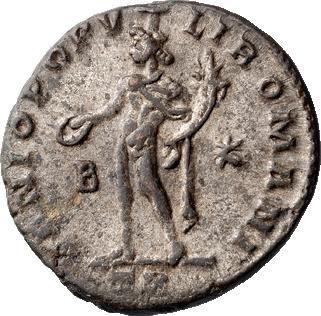
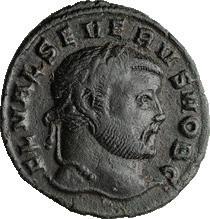

















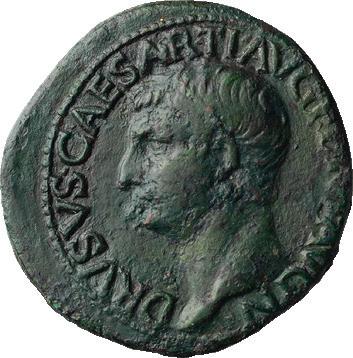



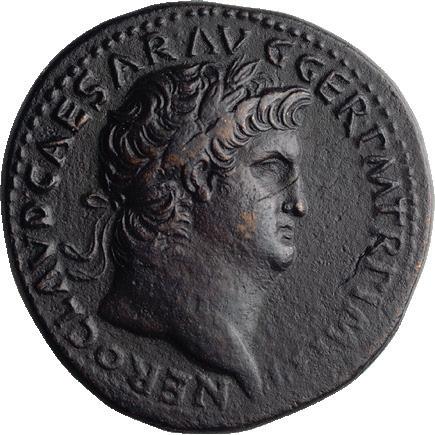

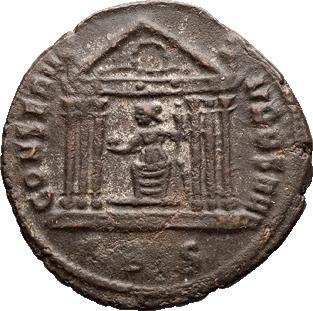





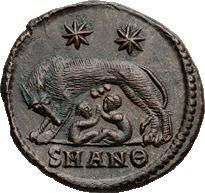

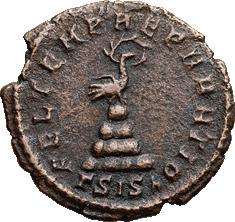
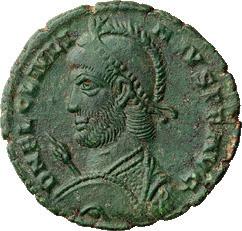



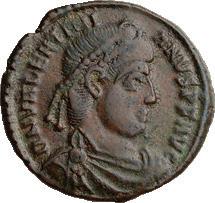
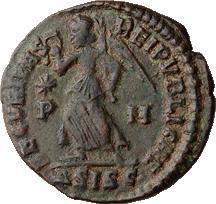
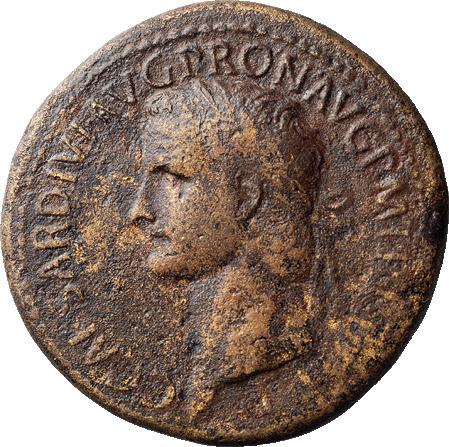
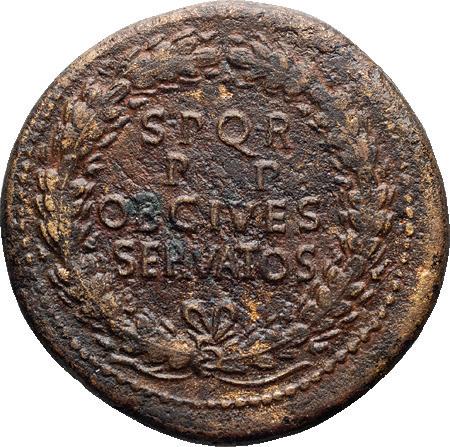
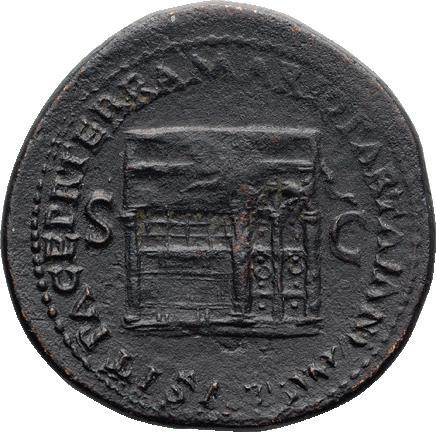
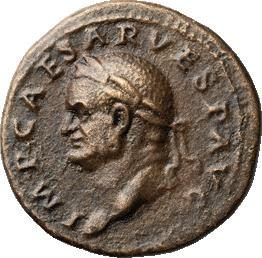
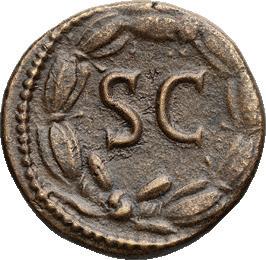
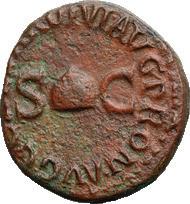





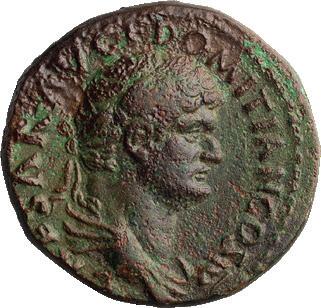
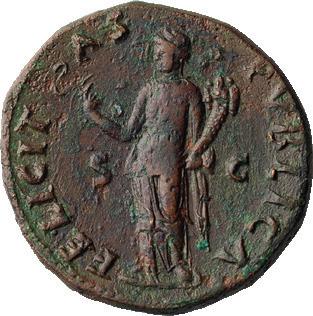
P P TR P COS III Laureate head of Antoninus Pius r. Rx: AVRELIVS CA[E] - SAR AVG PII F COS Bare head of Marcus Caesar r. Purchased from Carl Subak, Chicago, 22 Feb. 1975. VF 250
386. FAUSTINA II, DIVA; Died 175 AD, Rome, Denarius, 3.18g. BM-716, RSC-71a, RIC-744 var. Obv: DIVA FAV - STINA PIA Bust draped r. Rx: CONSECRATIO Peacock standing r., head l. Ex Harlan J Berk BBS 181, lot 533. VF 175
387. COMMODUS; 177-192 AD, Rome, 188 AD, Denarius, 2.37g. BM-249, pl. 97.4. Obv: M COMM ANT P - FEL AVG BRIT Head laureate r. Rx: P M TR P XIII - IMP VIII COS V P P on l. and r., Libertas standing r., head l., holding pileus (cap) and slanting scepter. MS 275
388. CLODIUS ALBINUS AS CAESAR; 193-195 AD, Rome, 193 AD, Denarius, 3.58g. BM-41, C-55 (10 Fr.), RIC-1c. Obv: D CL SEPT AL - BIN CAES Head bare r. Rx: PROVID AVG COS Providentia standing l. holding wand over globe at feet and scepter. Scarce: 11 specimens in the Reka Devnia hoard. Ex Harlan J Berk BBS 170, lot 227. aVF 225
389. CLODIUS ALBINUS AS CAESAR; 193-195 AD, Rome, 194-5 AD, Denarius, 3.44g. BM-95, C-48 (12 Fr.), RIC-7. Obv: D - CLOD [SEPT]ALBIN CAES Head bare r. Rx: MINER - PA - CIF COS II Minerva standing l. holding branch before her and shield on ground behind her, spear rests against her l. arm. Ex Bucephalus, April 2023. Exceptional portrait quality. Virtually MS 400
390. SEPTIMIUS SEVERUS; 193-211 AD, Rome, 204 AD, Denarius, 3.38g. Cf. BM-335, pl. 35.11. Obv: SEVERVS - PIVS AVG Head laureate r. Rx: INDVLGENTIA AVGG around, IN CARTH in exergue, Dea Caelestis riding side-saddle, holding thunderbolt and scepter, head turned r., on lion leaping r. above water issuing from rocks. VF 175 Circus Maximus
391. SEPTIMIUS SEVERUS; 193-211 AD, Rome, 206 AD, Denarius, BM-343, C-253 (60 Fr.), RIC-274 (R2). Obv: SEVERVS PIVS AVG Head laureate r. Rx: LAETITIA TEMPORVM The spina of the Circus Maximus decorated as a ship facing l., with the turning posts at its prow and stern, a sail mounted on the central obelisk, and the spina’s other monuments visible in between; above the ship, four quadrigas racing l.; below, seven animals: an ostrich at l. and bear (indistinct on this specimen) at r.; between them a lion and a lioness chasing a wild ass and a panther attacking a bison. Rare: only three specimens in Reka Devnia hoard. This famous type commemorates the chariot races and animal hunt that took place on the seventh and final day of Severus’ Saecular Games in 204 AD, as described in the inscriptional acts of those games which were found in Rome in the 1870s and 1930s, and also in the text of Dio Cassius, tacked on to his description of Severus’ Decennalian Games of 202 AD by his Byzantine epitomator as we can now see. The games consisted of chariot races, indicated by the racing quadrigas in the coin type, and then a hunt of 700 beasts, 100 each of “lions, lionesses, panthers, bears, bisons, wild asses, ostriches”, which were released in large groups from a receptacle shaped like a boat. As C. Clay was the first to observe, the seven kinds of animals named by both Dio and the inscriptional acts are also depicted in the coin type: on good specimens, especially the aureus BMC pl. 34.4, the ostrich and the bear are clear, the lion has a mane, the ass has long ears, the bison has horns and a hump. Two large felines remain, of which we may suppose that the one accompanying the lion is the lioness and the one attacking the bison is the panther. aEF / gVF 1100
392. JULIA DOMNA; Rome, c. 207-11 AD, Denarius, 3.55g. BM-24, pl. 27.12. Obv: IVLIA - AVGVSTA Bust draped r. Rx: FORTVNAE FELICI around, Fortuna standing l., holding cornucopia in r. arm and resting l. arm on rudder. MS 285 FDC
393. JULIA DOMNA; Rome, 214 AD, Denarius, 3.13g. BM-29, C-230, RIC-390. Obv: IVLIA PIA FELIX AVG Bust draped right. Rx: VESTA Vesta standing l. holding Palladium and scepter. Ex Harlan J Berk BBS 151, lot 418. FDC 285 394. CARACALLA; 198-217 AD, Rome, 204 AD, Denarius, 3.67g. BM-280, C-97 corr., RIC-130a. Rx: INDVLGENTIA AVGG IN CARTH Dea Caelestis, head r. and holding thunderbolt and scepter, riding r. on lion above water flowing from rocks. Ex Harlan J Berk BBS 156, lot 394. EF 250 395. CARACALLA; 198-217 AD, Rome, 204 AD, Denarius, 3.27g. BM-296, C-658 (5 Fr.), RIC-168A. Obv: ANTONINVS - PIVS AVG Bust laureate, draped r. Rx: VICT PART MAX Victory advancing l. holding wreath and palm. Ex Harlan J Berk BBS 181, Aug. 2011, Lot 555. MS 285
396. CARACALLA; 198-217 AD, Rome, 215-7 AD, Denarius, 3.10g. BM-82, C-606, RIC-311b. Obv: ANTONINVS PIVS AVG GERM Head laureate r. Rx: VENVS VICTRIX Venus standing l., leaning on shield set on helmet and holding Victory and scepter. Virtually MS 300 397. GETA AS CAESAR; 198-209 AD, Rome, 204 AD, Denarius, 2.27g. BM-223, C-90 (5 Fr.), RIC-13a. Obv: P SEPT GETA - CAES PONT Bare-headed, draped bust r. Rx: NOBI - LITAS Nobilitas standing r. holding scepter and statuette. aEF 185
398. MACRINUS; 217-218 AD, Rome, 217 AD, Denarius, 3.39g. Bust var. of BM-31, pl. 79.3. Obv: IMP C M OPEL SEV MACRINVS AVG Bust laureate, draped, cuirassed r., seen from front. Rx: PONTIF - MAX - T - R P COS P P around, Jupiter standing l. holding thunderbolt and scepter. Ex Bucephalus, July 2023. EF 350
399. DIADUMENIAN AS CAESAR; 217-218 AD, Rome, 217 AD, Denarius, 2.27g. BMC-84 note, citing Paris. Obv: M OPEL DIADVMENIANVS CAES Bare-headed, draped bust r., seen from side. Rx: PRINC IVVE - N - TVTIS on l. and r., Diadumenian standing l. holding baton and scepter; behind him on r., two standards. Diadumenian’s rare first issue of his father’s reign, on which he has not yet assumed Caracalla’s name Antoninus. EF 500 400. ELAGABALUS; 218-222 AD, Rome, 218-9 AD, Antoninianus, 4.11g. BM23, pl. 85.12; C-255; RIC-138. Obv: IMP CAES M AVR ANTONINVS AVG Bust radiate, draped, cuirassed r. Rx: SALVS ANTONINI AVG around, Salus standing r. offering cake to serpent that she holds. EF 150 401. ELAGABALUS (218-222 AD); 218-222 AD, Rome, 222 AD, Denarius, 3.42g. BM-268, C-213, RIC-52. Obv: Bearded bust r. without “horn”. Rx: P M TR P V COS IIII P P Emperor in Syrian priestly dress sacrificing l. at altar and holding club, star in field l. Ex Harlan J Berk Ltd., BBS 153, 13 March 2007, lot 347. Short last tribunician year of reign. MS 175 402. SEVERUS ALEXANDER; 222-235 AD, Rome, 231-235 AD, Denarius, 3.48g. BMC-pl. 30, 898. Obv: IMP ALEXANDER PIVS AVG Bust laureate, draped r., seen from front. Rx: SPES PVBLICA around, Spes advancing l., holding flower and raising skirt. Exceptional detail, possibly struck from an aureus die. Toned MS 275
403. SEVERUS ALEXANDER; 222-235 AD, Rome, 232-5 AD, Denarius, 2.97g. C-543, RIC-254. Obv: Laureate bust of emperor r. Rx: SPES PVBLICA around, Spes advancing l., holding flower and raising skirt. MS 250
404. JULIA MAMAEA; Rome, 225-228 AD, Denarius, 2.70g. BM-381, C-81, RIC-360. Obv: IVLIA MA - MAEA AVG Bust draped r., wearing stephane. Rx: VES - TA around, Vesta standing l. holding Palladium and scepter. MS 235 405. JULIA MAMAEA; Rome, 228-9 AD, Denarius, 3.13g. BM-713, C-76, RIC358. Obv: Draped bust r., wearing stephane. Rx: VENVS VICTRIX Venus standing l. holding helmet and scepter, shield at feet. MS 225
406. MAXIMINUS I THRAX; 235-238 AD, Rome, 235-6 AD, Denarius, 2.77g. BM-68, C-31, RIC-12. Obv: without GERM, second portrait. Rx: PAX AVGVSTI Pax standing l. holding branch and transverse scepter. Ex Harlan J. Berk, BBS 153, March 13, 2007, lot 355. Reverse weakly struck. Mint State 250
407. MAXIMINUS I THRAX; 235-238 AD, Rome, 235-6 AD, Denarius, 2.83g. BM-99, C-85, RIC-14. Obv: without GERM, second portrait. Rx: SALVS AVGVSTI around, Salus seated l. extending patera to snake rising from altar. MS 250 408. MAXIMINUS I THRAX; 235-238 AD, Rome, 236-8 AD, Denarius, 3.24g. BM-170, pl. 39. Obv: With title GERM and third portrait, bust laureate, draped, cuirassed r. Rx: PROVIDE - NTIA AVG, Providentia standing l. holding wand over globe and cornucopia. MS 225 409. MAXIMUS AS CAESAR; 235-238 AD, Rome, Denarius, 2.53g. BM-118, pl. 37; C-1 (20 Fr.); RIC-1. Obv: IVL VERVS MAXIMVS CAES Bare-headed, draped bust r. Rx: PIETAS AVG Priestly implements: lituus, knife, pitcher, ladle, whisk. Ex Heritage Auctions, Aug. 2022. Virtually MS 450 410. PUPIENUS; 238 AD, Rome, Antoninianus, 4.38g. BM-82, C-2 (10 Fr.), RIC9b. Obv: IMP CAES PVPIEN MAXIMVS AVG Bust radiate, draped, cuirassed r. Rx: Clasped hands, legend AMOR MVTVVS AVGG, “The mutual love of the two emperors” . EF 750 411. BALBINUS; 238 AD, Rome, Antoninianus, 4.81g. BM-71, C-6 (10 Fr.), RIC11. Obv: IMP CAES D CAEL BALBINVS AVG Bust radiate, draped, cuirassed r., seen from front. Rx: FIDES MVTVA AVGG Clasped hands. aEF 650 412. GORDIAN III; 238-244 AD, Rome, 241 AD, Denarius, 3.22g. C-243, RIC115. Obv: IMP GORDIANVS PIVS FEL AVG Bust laureate, draped, cuirassed r. Rx: P M TR P III - C - OS II P P on l. and r., Gordian standing r. in military dress, holding transverse spear and globe. MS 145
413. GORDIAN III; 238-244 AD, Rome, 243-4 AD, Antoninianus, 4.00g. RIC145, C-155. Obv: IMP GORDIANVS PIVS FEL AVG Bust radiate, draped, cuirassed r. Rx: MARS P - ROPVG on l. and r., Mars advancing r. holding transverse spear and shield. MS 145
414. PHILIP I; 244-249 AD, Rome, 248-9 AD, Antoninianus, 4.48g. C-17 (3 Fr.), RIC-58. Obv: IMP PHILIPPVS AVG Bust laureate, draped, cuirassed r. Rx: AETERNITAS AVGG Elephant walking l. guided by rider with goad and wand. Ex Harlan J Berk, BBS 176, lot 332. EF 200
415. OTACILIA SEVERA; 247-249 AD, Antoninianus, 5.22g. RIC-IV, 116b, RSC-64. Obv: OTACIL SEVERA AVG, diademed bust right on crescent. Rx: SAECVLARES AVGG, Hippopotamus walking right, head raised; IIII below. Ex CNG #725693. EF 250
416. OTACILIA SEVERA; Antoninianus, 3.91g. RIC-123c, RSC-53. Obv: MARCIA OTACIL SEVERA AVG, diademed and draped bust right, set on crescent Rx: PVDICITIA AVG, Pudicitia seated left, holding scepter and pulling veil. Ex CNG #733117. EF 200
417. OTACILIA SEVERA; Rome, 245 AD, Antoninianus, 3.79g. C-53, RIC-123c. Obv: MARCIA OTACIL - SEVERA AVG Bust draped r., wearing stephane and on crescent. Rx: PVDICITIA AVG Pudicitia seated l. drawing veil and holding transverse scepter. Ex Harlan J. Berk, BBS 181, October 11 2012, lot 601. MS 200
418. TRAJAN DECIUS; 249-251 AD, Rome, Antoninianus, 4.19g. RIC-10b. Obv: IMP C M Q TRAIANVS DECIVS AVG Bust radiate, cuirassed r. Rx:





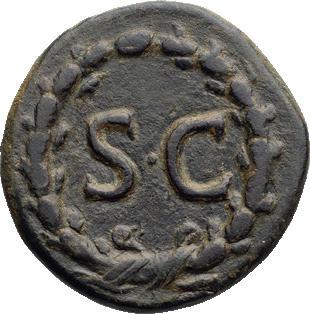
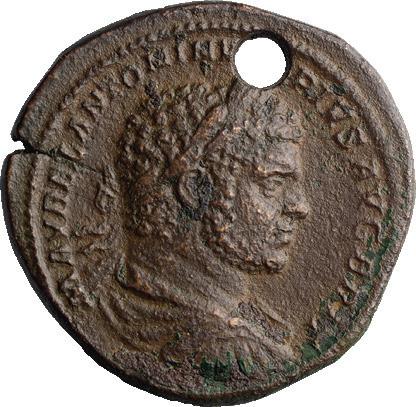
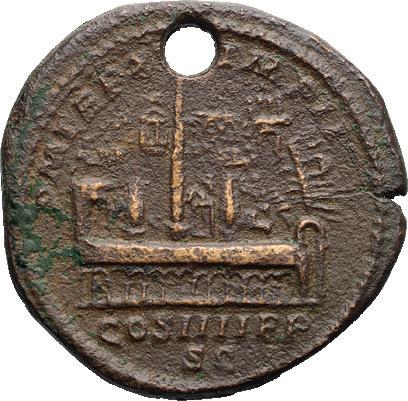


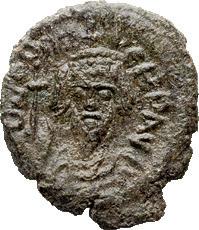




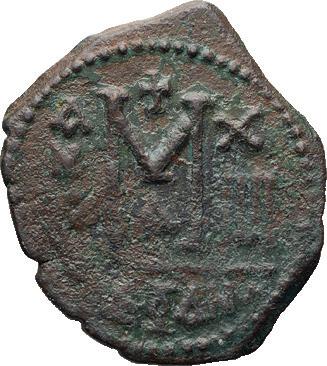
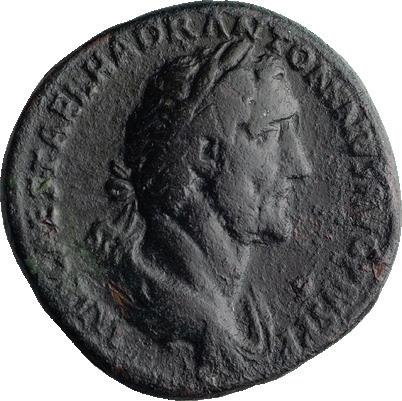
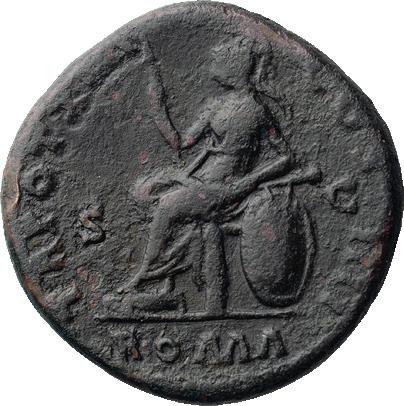






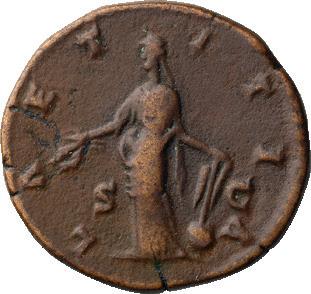
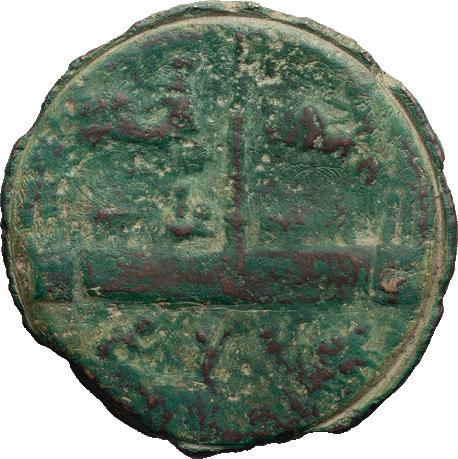




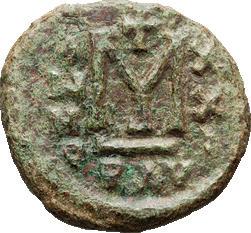
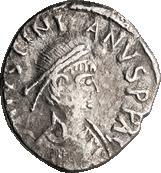
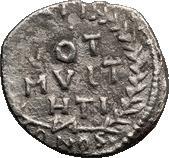

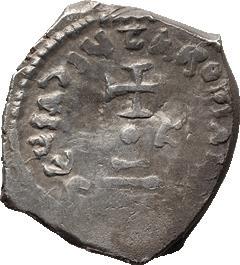


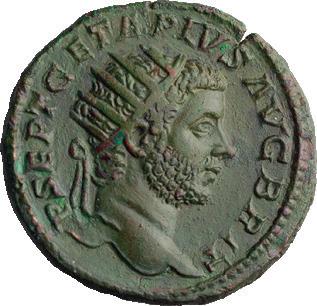
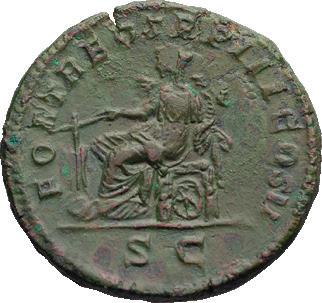

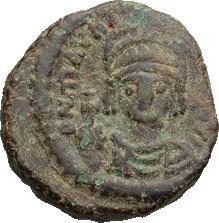
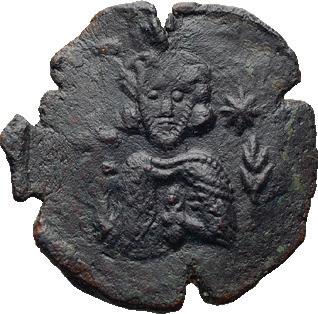



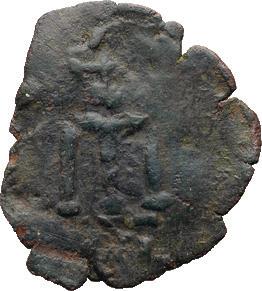
ABVNDANTIA AVG around, Abundantia standing r., emptying cornucopia held in both hands. MS 150
419. TRAJAN DECIUS; 249-251 AD, Rome, Antoninianus, 3.87g. RIC-11b. C, RIC-11b. C-4. Eauze Hoard-885 (73 spec.). Dorchester Hoard (144 spec.). Obv: IMP.C.M.Q.TRAIANVS DECIVS AVG Radiate, draped, cuirassed bust r. Rx: ADVENTVS AVG Trajan Decius on horse l., raising r. hand and holding spear in l. Ex Harlan J Berk Ltd BBS 183, Lot 297. MS 150 420. TRAJAN DECIUS; 249-251 AD, Rome, Antoninianus, 4.32g. RIC-12b, C-16. Obv: IMP C M Q TRAIANVS DECIVS AVG Bust radiate, cuirassed r. Rx: D - A - CIA Dacia standing l. holding staff surmounted by ass’s head. MS 150 421. HERENNIUS ETRUSCUS AS CAESAR; 250-251 AD, Rome, Antoninianus, 3.74g. RIC-149 (S), C-38 (C). Obv: Q HER ETR MES DECIVS NOB C Radiate, draped bust r. Rx: SPES PVBLICA around, Spes advancing l. holding flower and raising skirt. Toned MS 145
422. TREBONIANUS GALLUS; 251-253 AD, Antioch, Antoninianus, 4.16g. RIC-79 (S), C-2. Obv: IMP C C VIB TREB GALLVS P F AVG Bust radiate, draped, cuirassed r., possibly with one or two pellets under bust. Rx: ADVENTVS AVG Emperor on horseback l., raising r. hand and holding spear. Ex Harlan J. Berk, BBS 197, April 12 2016, lot 366. MS 150
423. SALONINA, WIFE OF GALLIENUS; Antoninianus, Rome, c. 267-8 AD, 2.69g. Goebl-725cc (112 spec.), Cunetio Hoard-1418 (82 spec.), RIC-16, C-70. Rx: IVNONI CONS AVG Combined goat and stag standing l., [Delta]=officina 4 in exergue. EF 100
424. GALLIENUS; 253-268 AD, Antoninianus, Rome, c. 267-8 AD, 3.75g. Cunetio Hoard-1375 (109 spec.), RIC-207. Rx: IOVI CONS AVG Goat standing r., S=officina 6 in exergue. EF 100
425. GALLIENUS; 253-268 AD, Rome, c. 267-8 AD, Antoninianus, 3.12g. Göbl718z (118 spec.), Cunetio-1348 (88 spec.), RIC-165, C-76. Obv: [IMP GA] LLIENVS AV[G] Head radiate r. Rx: [AP]OLLINI CONS AVG Griffin striding l., Δ (=officina 4) in exergue. MS 125
426. GALLIENUS; 253-268 AD, Rome, Antoninianus, 2.76g. Cunetio Hoard-1344 (240 spec.), RIC-181 var., Göbl-716 b1 (239 spec.). Rx: DIANAE CONS AVG Antelope standing l., Γ=officina 3 in exergue. Ex Berk 179, 24 May 2012, lot 376. MS 125
427. GALLIENUS; 253-268 AD, Rome, c. 267-8 AD, Antoninianus, 3.26g. Göbl713b (123 spec.), Cunetio-1341 (198 spec.), RIC-230, C-586 (3 Fr.). Obv: GALLIENVS AVG Head radiate r. Rx: LIBER[O P C]ONS AVG Tigress walking l., B (=officina 2) in exergue. MS 150
428. GALLIENUS; 253-268 AD, Rome, c. 267-8 AD, Antoninianus, 3.42g. Göbl713b (123 spec.), Cunetio-1341 (198 spec.), RIC-230, C-586 (3 Fr.). Obv: [GA] LLIENVS AV[G] Head radiate r. Rx: LIBERO P CONS AVG Tigress walking l., B (=officina 2) in exergue. Ex Berk BBS 187, lot 281; ex Berk BBS 193, lot 344. Unusual standing tigress. MS 150
429. GALLIENUS; 253-268 AD, Rome, c. 267-8 AD, Antoninianus, 3.24g. Göbl712b (147 spec.), Cunetio-1337 (233 spec.), RIC-283. Obv: GALLIENVS AVG Head radiate r. Rx: SOLI CONS AVG Winged horse prancing r., A (=officina 1) in exergue. Nicely uniform brown patination. Visually sharp and interesting image of Gallienus and a winged horse on the reverse. EF 100
430. GALLIENUS; 253-268 AD, Rome, c. 267-8 AD, Antoninianus, 3.34g. Göbl727b (20 spec.), Cunetio-1365 (177 spec.), RIC-177. Obv: GALLIENVS AVG Head radiate r. Rx: DIANAE CONS AVG Doe standing l., head r., E (=officina 5) in exergue. MS 100
431. GALLIENUS; 253-268 AD, Rome, c. 267-8 AD, Antoninianus, 6.34g. Göbl-728z (106 spec.), Cunetio Hoard-1357 (125 spec.), RIC-176. Obv: IMP GALLIENVS AVG Head radiate r. Rx: DIANAE CONS AVG Doe standing r., head l., E (=officina 5) in exergue. A very heavy specimen, about twice the normal weight. Obverse legend double-struck at top and on right. EF 100
432. GALLIENUS; 253-268 AD, Rome, c. 267-8 AD, Antoninianus, 3.56g. Göbl730b (86 spec.), Cunetio-1368 (98 spec.), RIC-207, C-342. Obv: GALLIENVS AVG Head radiate r. Rx: IOVI CONS AVG Bearded goat walking l., S (=officina 6) in exergue. EF 100
433. GALLIENUS; 253-268 AD, Rome, c. 267-8 AD, Antoninianus, 2.92g. Göbl738u (4 spec.), Cunetio-1387 (2 spec.), RIC-164, bust var. of C-73. Obv: GA[L] LIENVS AVG Bust radiate, cuirassed r., seen from front. Rx: APO - LL - INI CONS AVG Centaur walking l. holding globe and rudder, [H] (=officina 8) in exergue. Rare cuirassed bust type: only two specimens in Cunetio hoard, four in Göbl’s photofile. Scarce centaur holding a globe instead of a bow. EF 140
434. GALLIENUS; 253-268 AD, Rome, c. 267-8 AD, Antoninianus, 2.89g. Göbl735b (194 spec.), Cunetio-1378 (143 spec.), RIC-163, C-72 (1 Fr.). Obv: [GALLI]ENVS AVG Head radiate r. Rx: [AP]OLLINI CON - S - AVG Centaur walking r. about to shoot arrow from bow, Z (=officina 7) in exergue. VF / EF 100
435. GALLIENUS; 253-268 AD, Rome, c. 267-8 AD, Antoninianus, 3.38g. Cunetio-1378 (143 spec.), Göbl-735b (194 spec.), RIC-163. Obv: GALLIENVS AVG Head radiate r. Rx: APOLLINI CONS AVG Centaur walking r. shooting arrow from bow, Z (=officina 7) in exergue. MS 125 436. GALLIENUS; 253-268 AD, Rome, c. 267-8 AD, Antoninianus, 2.45g. Cunetio Hoard-1392 (146 spec.), Göbl-743b (96 spec.), RIC-245, C-667 (3 Fr.). Obv: GALLIENVS AVG Head radiate r. Rx: NEPTVNO CONS AVG
Hippocamp r., rudder below r. foreleg, in exergue N (=officina 9). EF 150 437. GALLIENUS; 253-268 AD, Rome, c. 267-8 AD, Antoninianus, 3.52g. Göbl744b (157 spec.), Cunetio-1397 (131 spec.), RIC-179. Obv: GALLIENVS AVG Head radiate r. Rx: DIANAE CONS AVG Stag walking l., X (=officina 10) in exergue. Reverse somewhat weakly struck in areas. EF 100 438. GALLIENUS; 253-268 AD, Rome, c. 267-8 AD, Antoninianus, 2.74g. Göbl745b (69 spec.), Cunetio-1400 (50 spec.), RIC-179, C-157. Obv: GALLIENVS AVG Head radiate r. Rx: DIANAE [CO]NS AVG Stag standing r., X (=officina 10) in exergue. aEF 130 439. GALLIENUS; 253-268 AD, Rome, c. 267-8 AD, Antoninianus, 2.84g. Göbl-750b (194 spec.), Cunetio-1408 (182 spec.), RIC-181, C-165. Obv: GALLIENVS AVG Head radiate r. Rx: DIANAE CONS AVG Gazelle standing l., XII (=officina 12) in exergue. EF 110 440. GALLIENUS; 253-268 AD, Rome, c. 267-8 AD, Antoninianus, 2.98g. Göbl751b (26 spec.), Cunetio-1415 (6 spec.), RIC-181, C-162. Obv: GALLIENVS AVG Head radiate r. Rx: DIANAE CO[NS] AVG Gazelle standing r., XII (=officina 12) in exergue. EF 100 441. GALLIENUS; 253-268 AD, Antioch, Antoninianus, 3.96g. Göbl-1622d (4 spec.), RIC-602, C-845. Obv: GALLIENVS AVG Bust radiate, cuirassed r., seen from front. Rx: P M TR P XIII around, C VI P P in exergue, Lion walking l., bull’s head on ground before him, probably palm branch in exergue (not struck up). VF 150
442. GALLIENUS; 253-268 AD, Antoninianus, Antioch, 2.94g. RIC-628 var., C-46 (4 Fr.), Göbl-1628i (6 spec.). Obv: Bust radiate, draped, cuirassed r. Rx: AETERNITAS AVG She-wolf standing r. suckling Romulus and Remus, nothing in exergue. EF 150
443. SALONINA; Antioch, Antoninianus, 3.90g. Göbl-1619f (34 spec.), RSC60b. Obv: SALONINA AVG Bust draped r. on crescent, wearing stephane. Rx: IVNO REGINA Juno standing l. holding patera and scepter, peacock at feet, star in field l. Ex Berk BBS 168, lot 300. MS 140
444. SALONINA; Siscia, Antoninianus, 3.92g. Göbl-1515. Obv: SALONINA AVG Bust draped r. on crescent, wearing stephane. Rx: PVDICI - TIA AVG on l. and r., SI in exergue, Pudicitia seated l., raising veil and holding transverse scepter. Unusually good portrait; reverse flatly struck. EF 120 Excellent Portrait of Marius
445. MARIUS; 268 AD, Antoninianus, 3.05g. Cunetio-2508 (8 spec.), RIC17, C-19 (10 Fr.). Obv: IMP C M AVR MARIVS AVG Bust radiate, draped, cuirassed r., seen from front. Rx: VICTORI - A AVG Victory standing l. holding wreath and palm. EF 400 446. QUINTILLUS; 270 AD, Rome, Antoninianus, 2.45g. Cf. Normanby-1181 (H in r. field); RIC-9, C-5. Obv: [IMP C M AVR C]L QVINTILLVS AV[G] Bust radiate, draped, cuirassed r., seen from front. Rx: APOLLIN[I CONS] Apollo standing l., holding branch and lyre resting on rock; in exergue, probably [H] (officina 8). EF 165 447. TACITUS; 275-276 AD, Cyzicus, Antoninianus, 3.46g. Paris-1805, pl. 62. Obv: IMP C M CL TACITVS AVG Bust radiate, draped, cuirassed r. Rx: CLEMENTIA TEMP around, T in exergue (officina 3), Mars standing r., handing globe to emperor standing l. EF 100 448. AURELIAN; 270-275 AD, Antioch, Antoninianus, 4.16g. RIC-386. Obv: IMP C AVRELIANVS AVG Bust radiate, cuirassed r., seen from front. Rx: RESTITVT OR - BIS on l. and r., B in exergue, Female figure standing r. presenting wreath to Aurelian standing l. MS 125 449. AURELIAN; 270-275 AD, Antioch, Antoninianus, 5.43g. RIC-386. Obv: IMP C AVRELIANVS AVG Bust radiate, cuirassed r., seen from front. Rx: RESTITVT OR - BIS on l. and r., XXI in exergue, V above ground line, Female figure standing r. presenting wreath to Aurelian standing l. EF 125 450. SEVERINA; Rome, c. 275, Antoninianus, 4.02g. RIC-V pt.1, 4, Cohen-7. Obv: SEVERINA AVG Diademed, draped bust r., on crescent. Rx: CONCORDIAE MILITVM Concordia standing l., holding two standards. Ex CNG #730475. Silvered MS 200
451. PROBUS; 276-282 AD, Ticinum, Antoninianus, 3.93g. RIC-509. Obv: VIRTVS PROBI A - VG Cuirassed bust of Probus l. wearing radiate helmet and holding spear over shoulder and shield. Rx: MART - I - PACIF on l. and r., QXXI in exergue, I in l. field, Mars advancing l. holding branch, shield, and spear. MS 150
452. PROBUS; 276-282 AD, Ticinum, Antoninianus, 3.10g. RIC-551. Obv: IMP C PROBVS P F AVG Bust radiate r. wearing consular robes and holding eagle-tipped scepter. Rx: PROVIDENT AVG around, B in l. field, Providentia standing l. holding globe and transverse scepter. Silvered MS 140 453. PROBUS; 276-282 AD, Siscia, Antoninianus, 3.57g. C, C-682, RIC-776. Obv: IMP C M AVR PROBVS P F AVG Bust radiate l., seen from front, wearing consular robes and holding eagle-tipped scepter. Rx: SOLI I - N - V - ICTO Sol raising r. hand and holding globe in l., standing front in spread quadriga, waves below horses, XXIVI in exergue (officina VI=6). Ex Berk BBS 176, August 15, 2011, lot 176. According to Alföldi, Sol should be holding a globe and whip in his left hand. Only the globe is visible on this specimen. Silvered MS 225 454. PROBUS; 276-282 AD, Serdica, Antoninianus, 3.22g. RIC-864, C-679 (citing a private coll.). Obv: IMP C M AVR PROBVS P AVG Radiate bust l. in consular robes, holding eagle-tipped scepter. Rx: SOLI INVICTO Sol in frontal quadriga, KA.G. (officina 3) in exergue. Ex Berk BBS 165, lot 387. Acquired

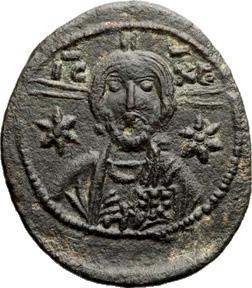
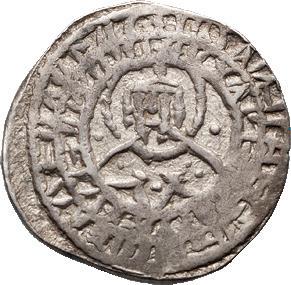


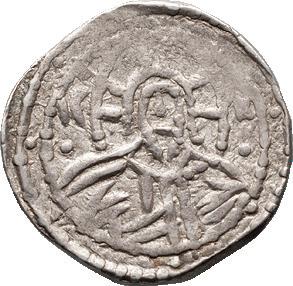

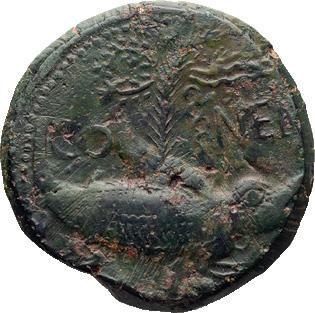










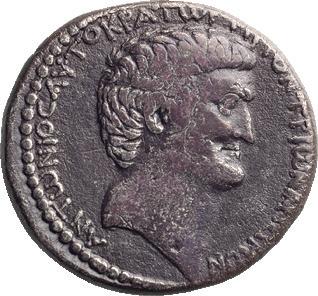





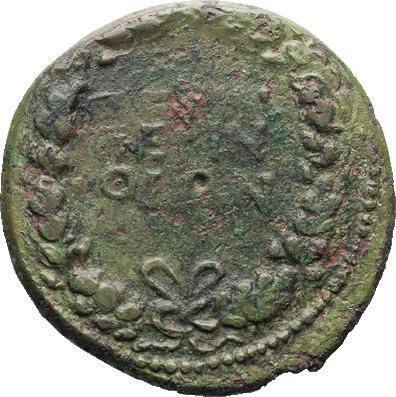


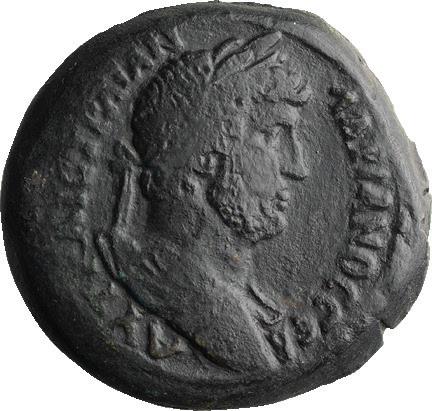

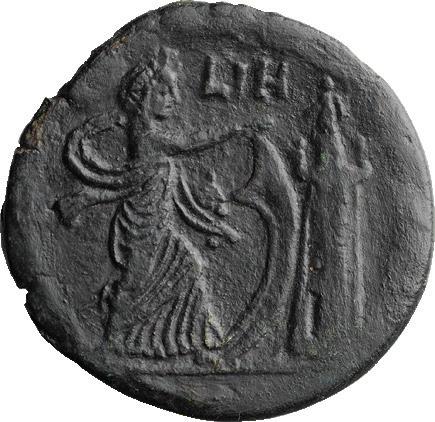
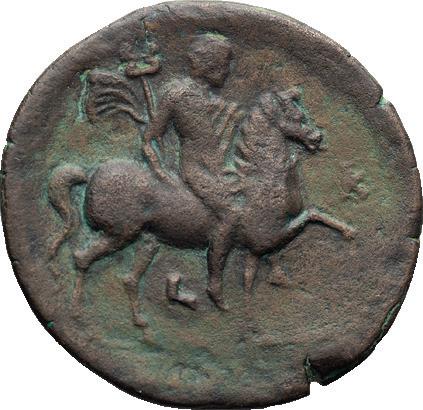









from Harlan J. Berk Ltd, Michigan Ave., Chicago, c. 1990. MS 250 455. CARINUS AS CAESAR; 282-283 AD, Ticinum, Antoninianus, 3.94g. RIC177 var., C-104, Venèra Hoard 353-4 (2 spec.) var. Rx: PRINCIPI IVVENTVT Prince standing l. holding standard and spear, VIXXI (officina 6) in exergue. Ex Berk BBS 160, lot 277. RIC-177 has IVVENT on reverse, Venera-353 IVVENTVTI, as opposed to IVVENTVT on our specimen. EF 200 456. CARINUS; 283-285 AD, Ticinum, Antoninianus, 4.42g. RIC-295, Venera Hoard 1024-1178 (155 spec.). Obv: IMP CARINVS P F AVG Bust radiate, draped, cuirassed r., seen from front. Rx: FELICIT PVBLICA Felicitas standing l., legs crossed, leaning on column, holding caduceus, QXXI (officina 4) in exergue. Ex Berk BBS 157, lot 322. Virtually MS 200 457. NUMERIAN; 283-284 AD, Lugdunum, AD 283-284, Antoninianus, 3.20g. RIC-394. Obv: IMP C NVMERIANVS AVG, radiate bust right. Rv: PAX AVGG, Pax standing holding olive branch and spear. MS 250 458. NUMERIAN AS CAESAR; 282-283 AD, Lugdunum, Antoninianus, 2.49g. Bastien-519 (28 spec.), RIC-353 (C), C-18. Obv: M AVR NVMERIANVS NOB C Radiate, draped, cuirassed bust r. Rx: MARS VICTOR Mars advancing r. holding spear and trophy over shoulder, in r. field C (officina 3). Some minor porosity but an excellent portrait. EF 100 459. CARAUSIUS; 287-293 AD, London, Antoninianus, 4.40g. RIC-101. Obv: IMP CARAVSIVS P F AVG Bust radiate, draped, cuirassed r., seen from front. Rx: PAX - AVG on l. and r., F - O across field, M L in exergue, Pax standing l. holding branch and vertical scepter. MS 400 460. ALLECTUS; 293-296 AD, London, Quinarius, 3.28g. RIC-55, Sear-3590. Obv: IMP C ALLECTVS P F AVG Bust radiate, cuirassed r., seen from front. Rx: VIRTVS AVG Galley l. with mast, five oars, cabin and rudder in stern, waves below, QL in exergue. Ex Berk BBS 163, lot 401. gVF 350 461. MAXIMIANUS; 286-305 AD, Heraclea, c. 294 AD, Follis, 9.84g. RIC-12b, officina Γ = 3. Obv: ΙΜP C ΜΑ ΜΑΧΙΜΙΑΝVS P F AVG Head laureate r. Rx: GENIO POPV - L - I RΟΜΑΝΙ around, HΓ in exergue, Genius standing l. pouring liquid from patera and holding cornucopia. Silvered MS 200 462. MAXIMIANUS; 286-305 AD, Treveri, 296-97 AD, Follis, 10.91g. RIC-IV, 181b. Obv: IMP MAXIMIANVS P AVG, laureate head right Rx: GENIO POPV-LI ROMANI, Genius standing left, holding patera and cornucopiae; A-G/TR. Ex CNG #732304, ex Langtoft Hoard I. About Mint State 175 463. CONSTANTIUS I AS CAESAR; 293-305 AD, Treveri, 300-301 AD, Follis, 8.90g. RIC-VI 480a. Obv: FL VAL CONSTANTIVS NOB C, laureate and cuirassed bust r. Rx: M SACRA AVGG ET CAESS NN, Moneta standing left, holding scales and cornucopia; star in right field, BTR in exergue. Ex CNG #732306, ex Langtoft I Hoard. EF 300 464. CONSTANTIUS I AS CAESAR; 293-305 AD, Treveri, 303-305 AD, Follis, 10.08g. RIC-VI 595a. Obv: CONSTANTIVS NOBIL C laureate, draped and cuirassed bust, r. Rx: GENIO POPVLI ROMANI, Genius standing l., holding patera and cornucopiae; S-F across fields, PTR in exergue. CNG #732300, ex Langtoft I Hoard. EF 250 465. GALERIUS AS CAESAR; 293-305 AD, Trier, 298-9 AD, Follis, 8.06g. RIC-357b. Obv: MAXIMIANVS NOB CAES Head laureate r. Rx: GENIO POPVLI ROMANI on l. and r., TR in exergue, B in l. field, star in r. field, Genius standing l. holding patera and cornucopia. Acquired from CNG, stated to derive from the Langtoft I hoard. Silvered MS 145 466. SEVERUS II AS CAESAR; 305-306 AD, Siscia, Quarter Follis, 2.27g. RIC170a. Obv: FL VAL SEVERVS NOB C Head laureate r. Rx: GENIO POPVLI ROMANI on l. and r., Genius standing l. holding patera in r. hand and cornucopia in l. hand, SIS in exergue. aEF 125 467. GALERIUS AS AUGUSTUS; 305-311 AD, Alexandria, 308-10 AD, Follis, 6.95g. RIC-101a, officina G=3. Obv: IMP C GAL VAL MAXIMIANVS P F AVG Head laureate r. Rx: GENIO IMPERATORIS Genius of the Emperor pouring libation from patera, holding cornucopia in other arm; ALE in exergue, K in l. field, Γ / P in r. field. Purchased from G. de Falco, Naples; with his handwritten ticket, Ex Harlan J Berk Ltd. BBS 170, July 29, 2010, Lot 331. Exceptional quality for this very common coin. Virtually MS 225 468. MAXIMINUS II AS CAESAR; 305-308 AD, Cyzicus, c. 308-9 AD, Follis, 7.39g. RIC-43 (Common). Rx: GENIO CA - ESARIS Genius pouring libation from patera and holding cornucopia, MKV in exergue, Γ in l. field. Ex Harlan Jerk Ltd BBS 183, Lot 319. MS 250 469. MAXENTIUS; 306-312 AD, Rome, 308-310 AD, Reduced Follis, 6.23g. RIC-210 (C2), officina S=2. Obv: IMP C MAXENTIVS P F AVG Laureate head of Maxentius, r. Rx: CONSERV VRB SVAE Roma seated in six-columned temple, wreath in pediment, RBS in exergue. Ex Berk BBS 156, lot 489. Choice EF 135
470. CONSTANTINE I; 307-337 AD, Heraclea, 324 AD, Reduced Follis, 2.91g. RIC-60. Obv: CONSTAN - TINVS AVG Pearl-diademed head r. Rx: VOT / XX / * within wreath, D N CONSTANTINI MAX AVG around, SMHΔ in exergue. MS 100
471. URBS ROMA; Antioch, 330-5 AD, Reduced Follis, 2.40g. RIC-91, officina Θ=9 (r1). Obv: VRBS - ROMA Helmeted bust of Roma l. Rx: Wolf standing l., head r., suckling twins; two stars above, SMANΘ in exergue (officina 9). Acquired from Pegasi Coins. MS 175 472. CONSTANS; 337-350 AD, Siscia, 348-50 AD, AE 3, 2.05g. RIC-241 (C3). Obv: D N CONSTA - NS P F AVG Pearl-diademed, draped, cuirassed bust r.,
seen from front. Rx: FEL TEMP REPARATIO Phoenix with radiate nimbus standing r. on rocky mound, ΓSIS in exergue. EF 125 473. VETRANIO; 350 AD, Siscia, Centenionalis, 5.30g. RIC-285 (S), officina A=1. Obv: D N VETRA - NIO P F AVG Bust laureate, draped, cuirassed r., seen from front, A behind, star before. Rx: CONCORDIA - MILITVM Emperor standing l., star above head, holding two standards inscribed with Christogram, .ASIS. in exergue, A in l. field. MS 300 474. VETRANIO; 350 AD, Thessalonica, Centenionalis, 5.69g. RIC-132 (S), officina A=1; C-1 (25 Fr.). Obv: D N VETRAN - IO P F AVG Bust laureate, draped, cuirassed r., seen from front. Rx: CONCORDIA - MILITVM Emperor standing l., with star above his head, holding two standards topped by Chi Rho banners, .TSA. in exergue, A - B across field. Near MS 400 Hoc Signo Victor Eris
475. ISSUE OF VETRANIO, IN NAME OF CONSTANTIUS II; 337-361 AD, Centenionalis, Siscia, 350 AD, 4.97g. RIC-286 (S), officina A=1. Obv: Name and portrait of Constantius II r., between A and star, issued by Vetranio. Rx: HOC SIGNO VICTOR ERIS Emperor standing l. holding labarum and spear, crowned by Victory standing behind him, .ASIS. in exergue, A in l. field. MS 600
476. ISSUE OF VETRANIO, IN NAME OF CONSTANTIUS II; 337361 AD, Centenionalis, Siscia, 350 AD, 4.77g. RIC-284, officina E=5. Obv: Name and portrait of Constantius II between A and star, issued by Vetranio. Rx: CONCORDIA MILITVM Emperor standing l. holding two labarums, star above head, .ESIS. in exergue, A in l. field. EF
400
477. MAGNENTIUS; 350-353 AD, 351-2 AD, AE 3, 4.77g. Cf. Sear-4024. Obv: D N MAGNEN - TIVS P F AVG, Bare-headed, draped, cuirassed bust r., seen from front, B in field behind portrait. Rx: [VICTORIAE DD NN A]VG ET CAES around, Two Victories standing facing each other, together holding wreath with retrograde inscription TOV / V / TLVM / X; in exergue mintmark RSLC, the third and fourth letters of which are also retrograde. Possibly an ancient imitation, because of the retrograde lettering and clumsy style of the reverse die. EF 250 478. JULIAN II; 360-363 AD, Sirmium, AE 3, 3.25g. RIC-108 (C2), officina B=2. Obv: D N FL CL IVLI - ANVS P F AVG Helmeted, pearl-diademed, cuirassed bust l., holding spear and shield. Rx: VOT / X / MVLT / XX in four lines in wreath, in exergue BSIRM. MS 200 479. JULIAN II; 361-363 AD, AE 3, Heraclea, 3.55g. RIC-106 (Common), officina A=1. Obv: D N FL CL IVLI - ANVS P F AVG Helmeted, cuirassed bust l., holding spear and shield. Rx: VOT X MVLT XX in four lines in wreath, HERACL.A in exergue. MS 200
480. VALENTINIAN I; 364-375 AD, Siscia, AE 3, 2.30g. RIC-14a, mintmark xvi. Obv: D N VALENTINI - ANVS P F AVG Pearl-diademed, draped, cuirassed r., seen from front. Rx: SECVRITAS - REI PVBLICAE on l. and r., ΔSISC in exergue, * / P in l. field, M in r. field, Victory advancing l. holding wreath and palm. EF 100 ROMAN IMPERIAL BRONZE Military Badge of Augustus
481. AUGUSTUS; 27 BC-14 AD, AE 26, 6.05g. Military Badge, said to have been found in the Tiber. Obv: Bare head of Augustus l. in high relief, between lituus (?) and pitcher, all surrounded by two dotted lines. Perhaps holed and plugged before the emperor’s chin. Rx: Blank. Ex Waddell List 21, December 1985, lot 420. While this is not a coin, it is the size and shape of a coin, hence its inclusion here. Toned. EF 1875
482. DRUSUS CAESAR; Rome, As 22-23 AD, 10.37g. RIC-45. Obv: DRVSVS CAESAR TI AVG F DIVI AVG N Head of Drusus bare l. Rx: PONTIF TRIBVN POTEST ITER around large S C. Ex Numismatik Naumann, Sept. 2003. Exceptional portrait with dark green patina. EF 450
Ex Sir Arthur J. Evans
483. AGRIPPINA I; Rome, c. 42-43 AD, Minted under Claudius, Sestertius, 30.50g. BM-222, Paris-237, C-3 (8 Fr.), RIC-102. Obv: AGRIPPINA M F GERMANICI CAESARIS Bust draped r. Rx: TI CLAVDIVS CAESAR AVG GERM P M TR P IMP P P around large S C; above the S C, oblong countermark NCAPR. Ex Triton XXVII, 9 January 2024, lot 671; ex Libertas Collection, purchased 1 Dec. 1985; ex Sir Arthur J. Evans Collection, Ars Classica XVII, 3 October 1934, lot 1242 Interesting countermark on reverse, which has an effect on the obverse field. Still, surfaces are flawless, and portrait is VF, although slightly softened in some areas. VF 2850
Caligula Portrait
484. CALIGULA; 37-41 AD, Rome, 40-41 AD, Sestertius, 26.64g. Paris-116 (same dies), BM-p. 157 note, C-26 (8 Fr.), RIC-53 (R2). Obv: C CAESAR DIVI AVG PRON AVG P M TR P IIII P P Head laureate l. Rx: SPQR / P P / OB CIVES / SERVATOS in four lines within oak wreath. Bronzes of Caligula’s third and fourth tribunician years are considerably rarer than those of his first year. VF 3750
485. CALIGULA; 37-41 AD, Rome, 40 AD, Quadrans, 3.26g. BM-64, pl. 29.9; Paris-109; C-7; RIC-52. Obv: C C[AESAR] DIVI AVG PRON AVG Pileus flanked by S - C. Rx: PON M TR P IIII P P COS TERT around letters RCC. EF 200
486. CLAUDIUS I; 41-54 AD, Rome, 41-2 AD, As, 10.60g. Apparently not in BMC or von Kaenel in Rome-mint style and with this obverse legend. Obv:

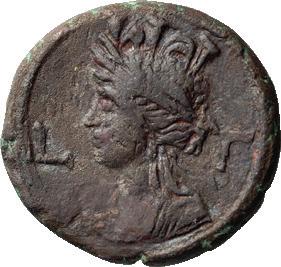

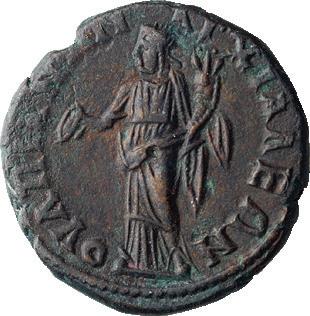






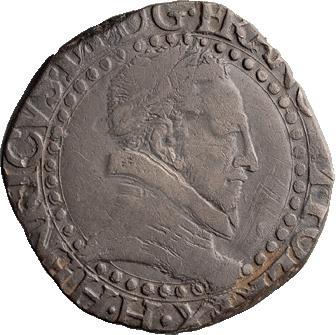
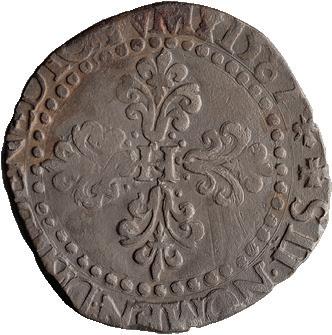






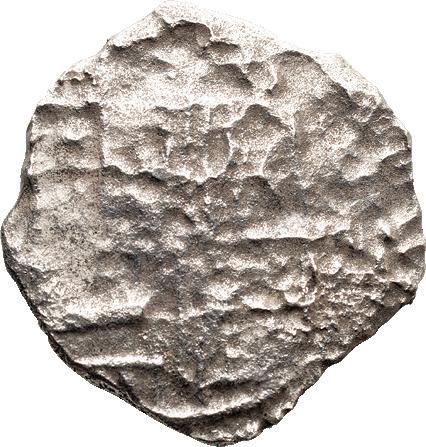




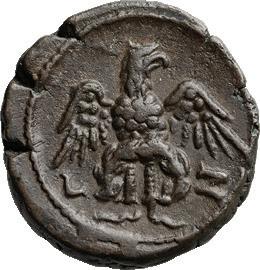





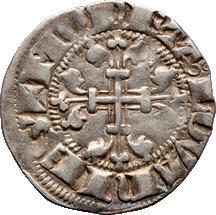



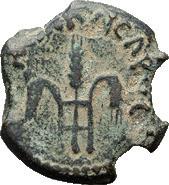

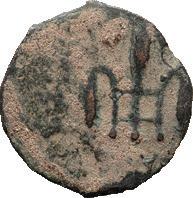
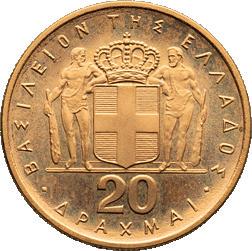






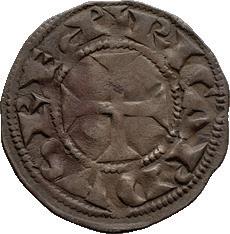


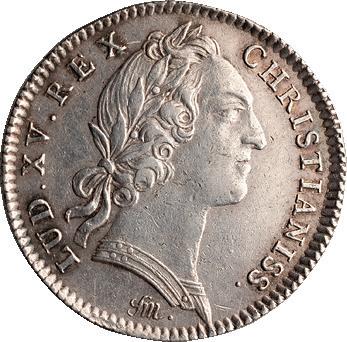



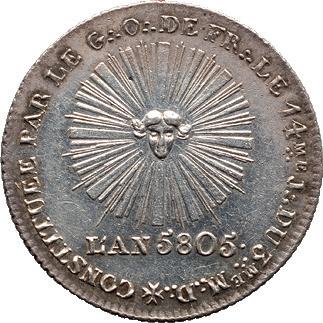




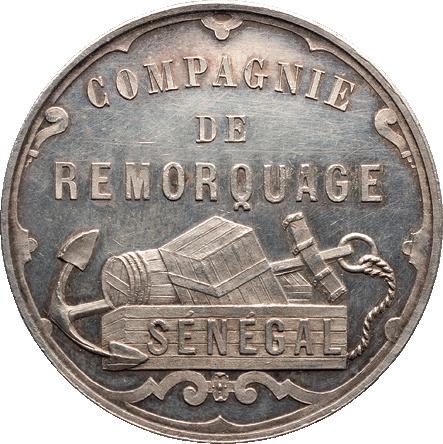
TI CLAVDIVS CAESAR AVG IMP P M TR P Head bare l. Rx: S - C across field, Minerva advancing r., brandishing spear and holding shield. Claudius’ rare second obverse legend on bronze coins, ending IMP P M TR P rather than P M TR P IMP or P M TR P IMP P P, and showing a youthful, idealized portrait of the emperor. Ex Curtis L. Clay Collection; ex Rauch 57, 11 April 1996, 140. Fine 1685 487. CLAUDIUS I; 41-54 AD, Branch Mint, 41-2 AD, Dupondius, 12.09g. RIC94, C-1. Obv: TI CLAVDIVS CAESAR AVG P M TR P IMP Head bare l. Rx: CERES AVGVSTA S C Ceres seated l. holding wheat ears and lighted torch. Struck at a branch mint, possibly in northern Italy, in a style quite close to that of the mint of Rome. Von Kaenel, pl. 30, 1598, illustrates an As attributable to the same branch mint, though von Kaenel himself mostly amalgamated this mint with Rome. In Cohen, BMC, RIC, and the Paris catalogue this and Claudius’ other provincial mints are either included under “Rome” or classified as “imitations”. Purchased from B. A. Seaby c. 1980s-1990s, with envelope and ticket. Extremely sharp portrait. gVF 575
488. NERO; 54-68 AD, Rome, 65-6 AD, Sestertius, 27.96g. BM-158, Paris-371, RIC-264, C-146 (4 Fr.). Obv: NERO CLAVD CAESAR AV - G GER P M TR P IMP [P P] Head laureate r. Rx: PACE P R TERRA MARIQ PARTA IAN[VM CL]VSIT S - C Temple of the Twin Janus (Ianus Geminus) near the Roman Forum, closed double doors at r., latticed window on side wall. The reverse legend forms a complete sentence: “Since peace has been established for the Roman people on land and sea, he closed the temple of Janus.” The legend first appears on aurei in 64 AD, so the closure of the temple apparently took place immediately after Corbulo’s settlement with the Parthians in the preceding year, 63 AD. EF 2100
Rare Denomination
489. VESPASIAN; 69-79 AD, Rome, As, 5.76g. McAlee-370. Obv: IMP CAESAR VESP AVG Head laureate l. Rx: Large S C within laurel wreath. McAlee’s Group 2: Orichalcum Coinage Struck at Rome for Use in Syria. This rare denomination is of exceptional quality, which makes its rarity more desirable. EF 400
490. TITUS AS CAESAR; 70-79 AD, Rome, 72 AD, Dupondius, 12.60g. RIC-483 (R2). Obv: T CAESAR VESPASIAN IMP III P0N TR POT II COS I[I] Radiate head r. Rx: ROMA - [VIC]TRIX to l. and r., S C in exergue, Roma seated l. on cuirass, holding Victory and spear. Ex Curtis L. Clay Collection; ex Triskeles 12 = VAuctions 196, 10 July 2013, 196. Wonderful portrait, beautiful green patination. Obverse perfectly centered and in high relief. EF / VF 1750 491. DOMITIAN AS CAESAR; 70-81 AD, Rome, 76-7 AD, Dupondius, 12.91g. RIC-928 (R2), pl. 52 (same dies). Obv: [CA]ESAR AVG F DOMITIAN COS IV Bust laureate, draped r., seen from side. Rx: FELICIT - AS - PVBLICA
S - C Felicitas standing l. holding short caduceus and cornucopia. Acquired from Subak Coins, Chicago. There would appear to be only one middle-bronze obverse die of Domitian Caesar with legend ending DOMITIAN COS IV. Our coin shares its obverse die with RIC-928 and RIC-933 on pl. 52-53, and other specimens observed by C. Clay have also always been from that same obverse die. Perhaps this die was originally cut to read COS III, but to allow its continued use in 76 AD COS III was altered to COS IV, there being no room to add a fourth stroke to produce the normal form COS IIII. That hypothesis would explain firstly the exceptional form IV, when other Flavian coins struck at Rome always showed IIII, and second the abbreviation DOMITIAN, which was that used on Domitian’s middle bronzes dated COS II and COS III, whereas those dated COS IIII not IV always showed DOMITIANVS. EF 500
Extremely Rare
492. NERVA; 96-98 AD, Rome, Late 96 AD, Sestertius, 29.40g. BM-90 (earlier issue). Obv: [IMP NERVA] CAES AVG P M TR P - COS II DESIGN III P P Head laureate r. Rx: FORTVN[A] P R on l. and r., S C in exergue, Fortuna seated l. holding wheat ears and transverse scepter. Ex Curtis L. Clay Collection; ex NAC H, 1998, lot 2432 (part). Part of Nerva’s rare second issue of sestertii in 96 AD, calling him consul designate for the third time. Not in BMC or the Paris catalogue with this Fortuna seated reverse type, although another specimen, from different dies, was in Kricheldorf 40, 1987, 101. Reverse porosity. gVF / Fine 850 Nerva Commemorative of Augustus
493. NERVA; 96-98 AD, Rome, Dupondius, 14.23g. RIC-131. Obv: DIVVS AVGVSTVS Radiate head of Divus Augustus r. Rx: IMP NERVA CAES AVG REST, Rudder attached to globe, SC in exergue. Exceptional portrait; flat striking on left field. EF 485 494. HADRIAN; 117-138 AD, Rome, Middle Bronze, 11.50g. RIC-2295 (R), pl. 172. Obv: HADRIANVS - AVG COS III P P Bust laureate, draped r., seen from side. Rx: Large S C within oak or laurel wreath. gVF 400 495. ANTONINUS PIUS; 138-161 AD, Rome, 151-2 AD, 27.30g. BM-1873, C-690 (Rollin, 20 Fr.). Obv: IMP CAES T AEL HADR ANTONINVS AVG PIVS P P Bust laureate, draped r., seen from side. Rx: ROMA in exergue, TR P XIIII - COS - IIII on l. and r., S - C across field, Roma seated l., holding scepter in r. hand, l. arm holds parazonium and rests on large oval shield, both feet rest on footstool. A scarce and unusual reverse type, especially when combined with a draped bust type. This variant was unknown to Strack-1062 in 1937, when he published the Antonine volume of his catalogue, since the BM only acquired its specimen in that same year, 1937. VF 600
496. CRISPINA; Rome, c. 180-183 AD, Middle Bronze, 11.04g. BM-435, pl. 102.12. Obv: CRISPINA - AVGVSTA Bust draped r. Rx: LAET - ITIA around, S - C across field, Laetitia standing l. holding wreath and upside-down rudder set on globe. Ex CNG E552, 13 Dec. 2023, lot 520 . VF 350 Didia Clara
497. DIDIA CLARA; Rome, Sestertius, 21.58g. BM-38, pl. 4.7 (same rev. die); C-4 (50 Fr.); RIC-20 (R2). Obv: [DIDIA] CLA - RA AVG Bust draped r. Rx: [HILAR] - TEMP[OR] S - C Hilaritas standing l. holding long palm and coruncopia. As usual for this issue, this coin is struck on a small flan. Excellent portrait of empress. VF / F 750 Circus Maximus
498. CARACALLA; 198-217 AD, Rome, 213 AD, Sestertius, 23.92g. BM-251, RIC-500a (R3), C-236 (60 Fr.). Obv: M AVREL ANTONIN[VS AVG] PIVS BRIT Bust laureate, draped, cuirassed r. Rx: P M TR P X[VI I]MP II around, COS IIII P P / S C in exergue, Circus Maximus, showing front wall with large entrance arch and eleven smaller arches; back wall with spectators, temple with altar before it, and top of arch surmounted by statues on r.; r. end wall topped by starter’s lodge and statues; triumphal arch surmounted by statue of emperor in quadriga at l. end; spina with turning posts at ends, obelisk in middle, plus apparatus with dolphins for numbering laps and statue atop column; finally in the arena at r., as though just emerging from the starting gates, three racing chariots. This coin has an ancient hole in it, meaning that a Roman must have wanted to wear it. Ignoring the hole, the portrait is a good EF, and the reverse a strong VF. Without the hole, a coin like this would go for about $20,000. gVF 3150
Contorniate of Circus Maximus
499. CONTORNIATE; Rome, 356-394 AD, AE 37, 18.52g. Alföldi-40 (same dies). Obv: ALEXA - NDER Bust of Alexander the Great r., wearing lionskin headdress. Rx: View of the Circus Maximus, with central spina, obelisk, and both metae (turning posts); to the l. of the obelisk is a statue of Cybele on a lion; in the circus are four racing quadrigas, the one at lower r. being crowned as winner. Ex Waddell, 1986, lot 54. Several dies were used to strike this type, which was extremely popular with the Roman public. What could be better than Alexander the Great and the Circus Maximus on one coin?. VF 1500 Incredible portrait
500. GETA AS AUGUSTUS; Rome, 211 AD, Dupondius, 11.73g. BM-270, pl. 62.6 (same obv. die). Obv: P SEPT GETA PIVS AVG BRIT Head radiate r. Rx: FORT RED TR P III COS II around, S C in exergue, Fortuna Redux seated l. holding rudder on globe and cornucopia, wheel under seat. Struck before the arrival in Rome of news of Septimius Severus’ death in York on 4 February 211, since Geta has not yet assumed the title Pater Patriae. Rare with just SEPT rather than SEPTIMIVS in Geta’s obverse legend. This is the most flawless portrait of Geta that we’ve ever owned. Olive patination. MS 4000
501. PHILIP II AS AUGUSTUS; 247-249 AD, Rome, 248 AD, Sestertius, 24.05g. RIC-267a, C-18 (10 Fr.). Obv: IMP M IVL PHILIPPVS AVG Bust of Philip II laureate, draped, cuirassed r. Rx: LIBERALITAS AVG[G] III around, S C in exergue, Philip I and II seated l. on curule chairs, presiding at their third largesse. VF / aEF 250 Wonderful Portrait
502. TREBONIANUS GALLUS; 251-253 AD, Rome, Sestertius, 15.66g. RIC126a. Obv: [IMP] CAES C VIBIVS TREBONIANVS GAL[LV]S AVG Bust laureate, draped, cuirassed r. Rx: VIRTVS AVGG around, S - C across field, Virtus standing l. holding shield and spear. While coins of Trebonianus Gallus are generally represented by excellent portraits, this coin surpasses anything possible. Though struck on a small flan, it has complete legends and an utterly wonderful portrait struck in high relief. No better sestertius could ever be located. 3000
BUZANTINE COPPER
503. JUSTIN I AND JUSTINIAN I; Antioch, 4 April-1 August 527 AD, Follis, 14.46g. MIB-10 (only 2 spec. from officina Γ=3); officina var. of Berk-118 and Sear-130. Obv: D N D N IVSTINVS ET [IVSTINIANVS PP] AVG Diademed, nimbate, draped and cuirassed busts of the two emperors facing. Rx: Large M between two stars; cross above, Γ below, ANTIX in exergue. Ex Christov Fam. Collection. Ex Goldberg 55, lot 290. Ex NAC 40, 16 May 2007, lot 920. A very rare type, extremely rare from officina Γ=3; MIB lists only two such specimens, from a Stanley Gibbons list and from Berk Collection; absent from the major museum collections. This coin records the brilliant transition by Justin I to his nephew Justinian I which created strength for the Eastern Christian Roman Empire that was to last nearly a thousand years. The two eyes on the portrait of Justinian, one can strangely call unusually sharp. Very few of these coins survive; only three specimens of this officina including ours, and less than 50 of all the folles of Antioch. Fine / VF 900
Justin I and Justinian I
504. JUSTIN I AND JUSTINIAN I; Antioch, 527 AD, Pentanummia, 2.05g. Berk-122, MIB-13, S-133. Obv: Diademed, draped and cuirassed busts of Justin and Justinian facing. Rx: Є (retrograde), Tyche of Antioch seated l.; all within shrine . EF 150
505. JUSTINIAN I; 527-565 AD, Cyzicus, Yr- 13, Follis, 22.06g. Berk-232, DO165b, Hahn-120a. Obv: Helmeted and cuirassed bust facing, holding globus cruciger and shield; cross to r. Rx: Large M between A/N/N/O and X/II/I, cross
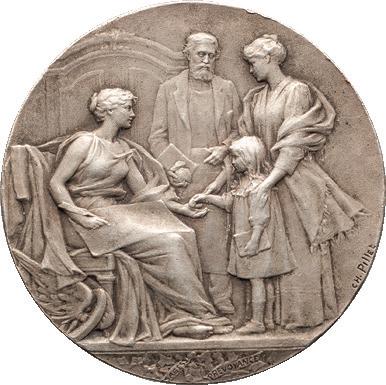

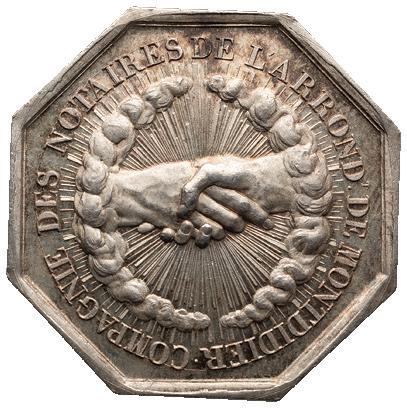

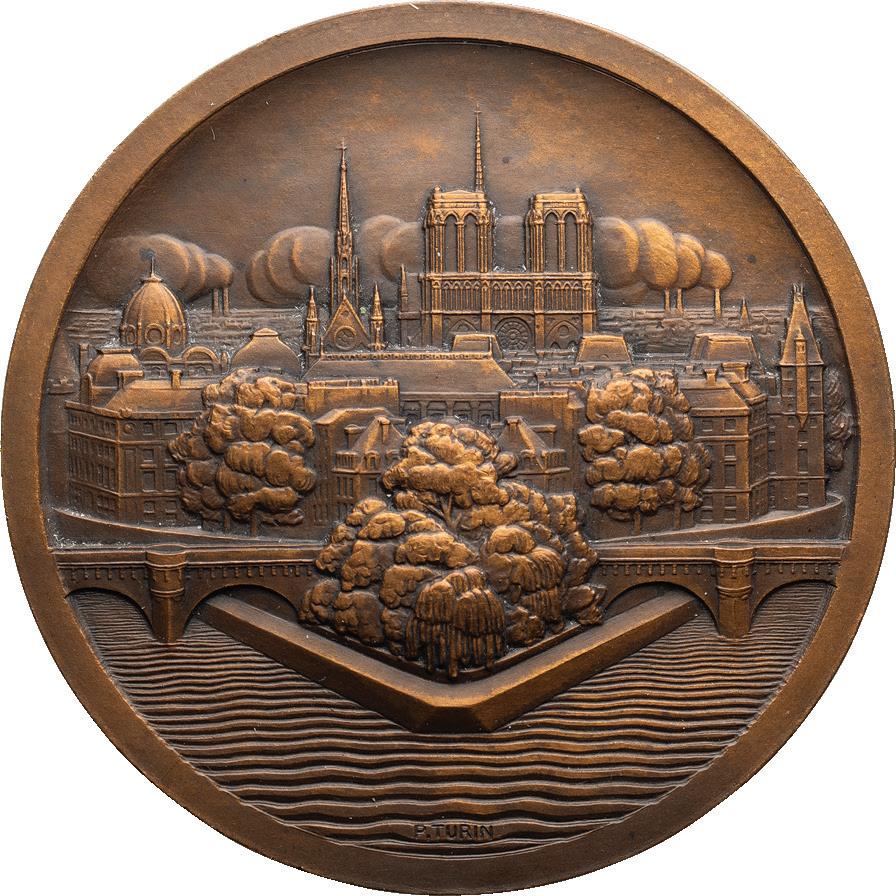


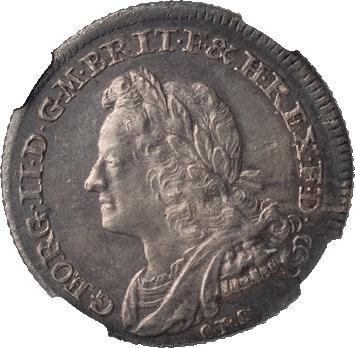
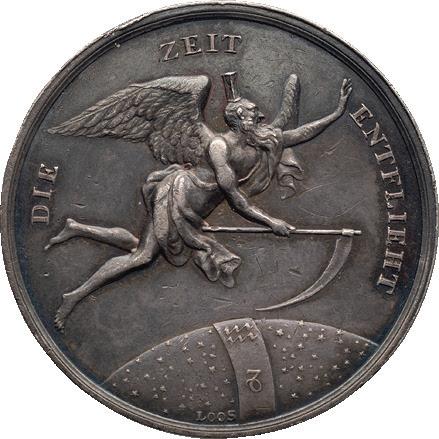






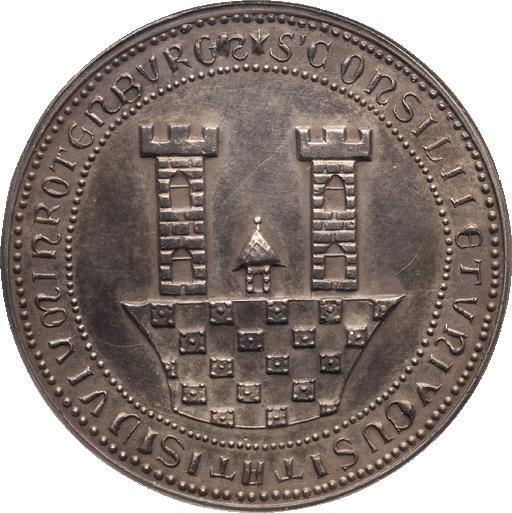
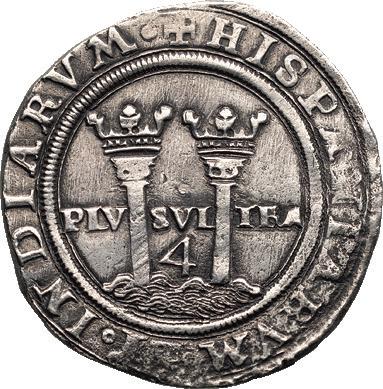



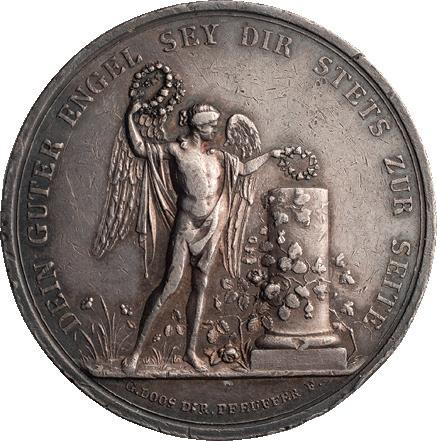


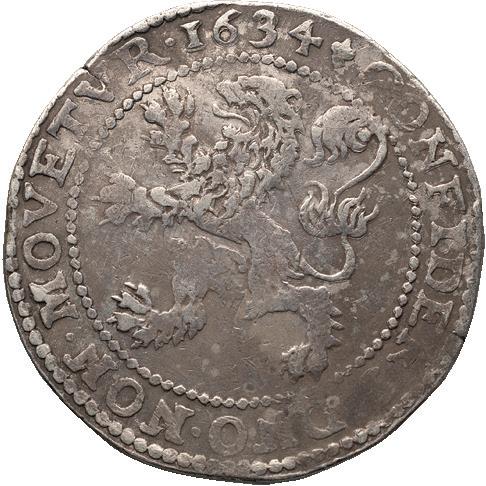
and B in field, KYZ in exergue. Beautiful green patination. EF 750 506. JUSTINIAN I; Carthage, c. 527-537, Siliqua, 1.09g. MIB-51, DO-280. Obv: D N IVSTINIANVS P P Aς Diademed bust right. Rv: VOT MVIT HTI in three lines within wreath, CONOς in exergue. aEF 350 Revenna
507. MAURICE; 582-602 AD. Ravenna, Half Follis, 5.69g. Berk-455, MIB-146, DO-292, Sear-598. Obv: D N mAVR[C TIb PP AVG] Helmeted, draped, cuirassed bust facing, holding cross on globe. Rx: Large K between R and A, VENN beneath; above, cross. VF 500 Ravenna
508. FOCAS; 602-610 AD. Ravenna, c. 607-609 AD, Half Follis (20 Nummi), 3.62g. MIB-113, Berk-527, Sear-707, DO-135. Obv: D N FOCA - PERP AVG Crowned bust facing, with beard, draped and cuirassed, holding cross. Rx: Large XX with star between; in exergue, RAV. Purchased from Glenn Woods, from the collection of Dr. Michael Metlich. This is a rather rare coin and virtually none better have appeared. Glossy green patination. EF 950 509. REVOLT OF THE HERACLII; Alexandretta, 608-610 AD, Follis, 6.49g. Berk-534, Sear-722, MIB-16a. Obv: Bare-headed and facing busts of Heraclius and his father in consular robes surmounted by cross. Rx: Large M between ANNO and X III with cross above, A below (officina 1). Some areas of flat striking on obverse. EF 850
Seleucia
510. HERACLIUS; 610-641 AD. Seleucia, Year 7 or 8= 616-7 or 617-8 AD, Follis, 8.94g. MIB-193, Berk-575, Sear-845, DO-181. Obv: Legend blundered and weakly struck, Heraclius and Heraclius Constantine standing facing, each wearing chlamys and crown with cross, and holding cross on globe; between their heads, cross. Rx: Large M between A/N/N/o and numeral GI; above, chirho; beneath, officina letter B; in exergue, SELISU. These coins were a military issue. gVF / EF 225
511. HERACLIUS; 610-641 AD. Ravenna, Year 21=630/1 AD, Follis, 6.14g. Berk621, MIB-253, DO-297, Sear-914. Obv: Heraclius and Heraclius Constantine standing facing; Heraclius is bearded, wears crown and military garb, places r. foot on prostrate figure and holds long cross in r. hand; Heraclius Constantine wears crown and chlamys and holds cross on globe; between their heads, cross; legend mostly unreadable. Rx: Large M between A/N/N/O and X/X/I, cross above, Δ below, RAV in exergue. Ex Gemini VII, 9 January 2011, part lot 1232 (not illustrated). Softly struck. gVF 650
512. HERACLIUS; Constantinople, c. 615-625 AD, Hexagram, 6.55g. MIB-134, Sear-795. Obv: dd NN hERACLIU[S ET hERA CONST Heraclius with short beard and Heraclius Constantine, smaller and beardless, seated front on double throne, each wearing chlamys and crown and holding cross on globe; above their heads, a cross. Rx: DEUS ADIUTA ROmANIS Cross potent on globe above three steps. VF 165 Syracuse
513. JUSTINIAN II; First Reign, 685-695 AD. Syracuse, Follis, 4.85g. Berk775, MIB-68, DO-55, Sear-1296. Obv: No legend, Bust of emperor facing, with short beard, wearing crown and chlamys, and holding cross on globe and akakia; [branch] in l. field (not struck up), star above branch in r. field. Rx: Large M, TAN monogram above, [SCL] in exergue. Ex Triton XIII, 5-6 January 2010, lot 1676. Exceptional image of emperor struck on extremely broad flan. Some areas of flat striking. gVF 900
514. LEONTIUS; 695-698 AD. Syracuse, Follis, 1.65g. Berk-791, MIB-37, DO18, Sear-1344. Obv: No legend, Emperor standing facing, wearing crown and loros, and holding akakia and cross on globe. Rx: Large m, ΛENT monogram above, [SCL] in exergue. Struck with worn dies. VF 275 Sole Reign 515. IRENE, SOLE REIGN; Constantinople, 797-802 AD, Follis, 3.51g. Berk874, Sear-1600. Obv: Facing bust of Irene. Rx: Large M. Folles of the sole reign of Irene are quite scarce. While this is flatly struck in areas, the portrait is virtually perfect. EF 1550
516. MICHAEL VII; 1071-1078 AD, Half Follis, 4.18g. Sear-1880A, DO-15. Obv: IC- XC, Facing bust of Christ, holding book of Gospels, cross behind head., stars in field to l. and to r. Rx: + MIXAIΛ BACIΛ O Δ, Crowned bust of Michael facing, wearing loros and holding labarum and globus cruciger. Fourth recorded and finest known A coin we previously sold as a 1/2 follis (BBS 227, lot 560) weighed 2.30 grams; this coin is, in fact, a unique 1/4 follis. The coin pictured here weighs 4.18 grams, and is the fourth-recorded 1/2 follis of Michael VII. Of the four, this coin is by far the finest. MS 2000 BYZANTINE SILVER
517. JOHN VIII; Constantinople, 1425-1448 AD, Stavraton, 6.54g. S-2564. Obv: Nimbate bust of Christ facing, raising his right hand in benediction and holding book of Gospels. Rx: Nimbate bust of John VIII wearing domed crown and three-lobbed tippet. aEF 600
ROMAN PROVINCIAL SILVER & BRONZE
Cleopatra and Antony
518. CLEOPATRA AND MARK ANTONY; c. 36 BC, Tetradrachm, 14.14g. RPC-4094 (43 spec., 21 obv. dies). Obv: [BACIΛIC]CA KΛEOΠATPA ΘEA NEW[TEPA] Diademed, draped bust of Cleopatra r. Rx: ANTWNIOC AYTOKPATW[P TPIT]ON TPIWN A[NΔPWN] Bare head of Antony r. This coin displays relatively powerful portraits of both Antony and Cleopatra.
Microscopic porosity in field. Toned gVF 17500 Wonderful Cleopatra
519. PTOLEMAIC, CLEOPATRA VII; 51-30 BC, AE 27, 16.17g. SNG Cop421, Svoronos-1871-2. Obv: Diademed and draped bust of Cleopatra VII r. Rx: Eagle standing l. on thunderbolt between double cornucopia and Π, Greek legend “Of Queen Cleopatra” around. Earlier this year, we came up with a really wonderful portrait of Cleopatra from the Alexandria mint. We purchased and sold a second one of wonderful quality, but not the quality of the first coin. And now, from a collector, we were offered this wonderful coin which has been held in his collection for over 30 years. EF 14000
520. AUGUSTUS AND AGRIPPA; Nemausus, c. 8/9 - 3 BC, Dupondius, 11.56g. RPC-524, RIC-158, C-10. Obv: IMP / DIV[I F] Laureate head of Augustus r. on r., head of Agrippa wearing rostral crown l. on l. Rx: COL - NE[M] Crocodile chained to palm, wreath with long ties at top of palm. Acquired from Subak Coins, Chicago, May 2008. VF 350 521. TIBERIUS; 14-37 AD, Philippi, Macedonia, AE 18, 6.85g. RPC-1657, Sear268. Obv: TI AVG Bare head r. Rx: Two priests plowing with team of two oxen, no legend. Tentatively assigned to Philippi by RPC; Sear follows the traditional attribution to Parium, Mysia. Excellent portrait. Colonials of Tiberius are scarcer than other emperors. VF 220 522. GERMANICUS, CAESAR, 15 BC-19 AD; Anazarbus, Cilicia, AE 19, 17.98g. Year 67 = 48/9 AD. Ziegler-35 (O1/R1), RPC-4060, SNG Levante-1366. Obv: Laureate head of Germanicus r. Rx: Bust of Zeus Olybris in front of mountain with acropolis. This is a wonderful portrait of Germanicus, which rarely appears on a large coin like this, let alone in this condition. In previous auctions, examples no better than this have brought as much as $8000. This coin was found in Israel, and legally exported. Legend on left of obverse is softly struck; otherwise, surfaces are untouched. EF 2350
523. CALIGULA; 37-41 AD, Sestus, Thrace, AE 16-18, 4.94g. RPC-1742 (3 spec.). Obv: ΓAIOΣ - [K]AIΣA[P] Head of Caligula bare r. Rx: CHCTI - WΝ Lyre. F 220
524. NERO; 54-68 AD, Perinthus, Thrace, c. 59-63 A.D., AE 31, 21.92g. RPC-1754 (17 spec.). Obv: Head of Nero laureate l. Rx: City name in two lines within oak wreath. Pleasant portrait of Nero. gVF 400
525. NERO; 54-68 AD, Alexandria, Egypt, Year 11 = 64/5 AD, Tetradrachm, 10.74g. RPC-528 (44 spec.), Oxford-228, Datt-270, Cologne-163, Emmett-118/11. Obv: NEPΩ KΛAY K - AIΣ [ΣEB ΓEP] Radiate bust r. wearing aegis. Rx: AY[TOKP]A Eagle standing l., wings closed, palm branch over shoulder, date LIA in l. field. gVF 285 Poppaea
526. NERO AND POPPAEA; Alexandria, Egypt, Year 11 = 64/5 AD, Billon Tetradrachm, 11.67g. RPC-5282 (42 spec.), Oxford-223, Datt-197, Cologne-168, Emmett-128/11. Obv: [NEPΩ KΛAV] KAIΣ ΣEB ΓEP AV Radiate head of Nero r. Rx: ΠOΠΠAIA ΣEBAΣT[H] Draped bust of Poppaea r., date LIA in lower r. field. Could also be RPC-5280 (earlier hairdo of Nero). aVF
225
527. GALBA; 68-69 AD, Alexandria, Egypt, Year 2 = 28 Aug. 68 - c. Feb. 69 AD, Tetradrachm, 13.51g. RPC-5342 (13 spec.), Oxford-341, Datt-310, Cologne-233, Emmett-172/2. Obv: CEPOYI GALB[A AYTO KAIC C] EBA Head laureate r., date LB before neck. Rx: ELEY - ThERIA Eleutheria (Libertas) standing l., leaning on column, holding wreath and scepter, ladle in l. field. Ex Berk BBS 168, lot 420. VF 375 Lighthouse-Extremely Desirable Type 528. HADRIAN; 117-138 AD, Alexandria, Egypt, Year 18 = 133/4 AD, Drachm, Cologne-1121. Obv: AVT KAIC TPAIAN - AΔPIANOC CEB Bust laureate, draped, cuirassed r. Rx: Isis advancing r. holding inflated sail and sistrum; before her the Alexandrian lighthouse (Pharos), a square, slightly tapered tower with door at bottom and lantern at top, the lantern surmounted by a statue and flanked by two tritons blowing horns; date L IH in upper field. aVF / VF 1500
529. ANTINOUS; Alexandria, Egypt, L-K = Year 20 (135/6 AD), Hemidrachm, 12.08g. Dattari-2086, Emmett-1347. Obv: Draped bust of Antinous l., ANTINOOV HPWOC around. Rx: Antinous carrying caduceus on horse stepping r., L-K (date) below and to r. This portrait of Antinous is of exceptional quality. It is struck in flawless, ultra-high relief, and the reverse is well struck also. It seems this coin spent a century or more in ancient collections, as the field was very professionally cleaned by hand, not interfering at all with the portrait or the legends. gF 3250
530. COMMODUS; 177-192 AD, Alexandria, Egypt, 188/9 AD (Year 29), Billon Tetradrachm, 8.75g. Dattari-3903, Geissen-2242-3. Obv: M A KOM ANTω CEB EVCEB Laureate head right. Rx: Galley sailing right over waves; behind, Pharos. The lighthouse of Alexandria, a masterpiece of Greek architecture which pioneered the architectural form of these structures, came to be considered one of the seven wonders of the ancient world. Constructed on the island of Pharos during the reign of Ptolemy Philadelphos, it was designed to help guide merchants and travelers into Alexandria’s two harbors. This is a very entertaining type, in that it shows an outdoor view of a galley approaching the famous lighthouse of Alexandria. aVF 485
531. SEPTIMIUS SEVERUS; 193-211 AD, Anchialus, Thrace, AE 22, 5.74g. AMNG-494. Rx: Hercules standing r. wrestling with the Nemaean lion, legend


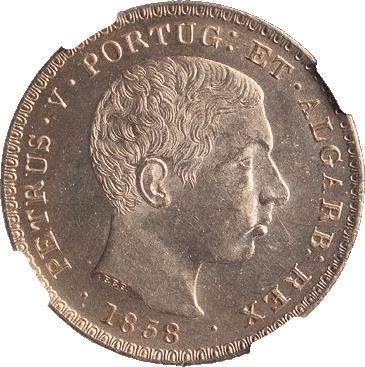
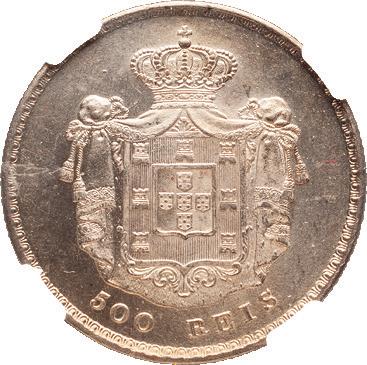








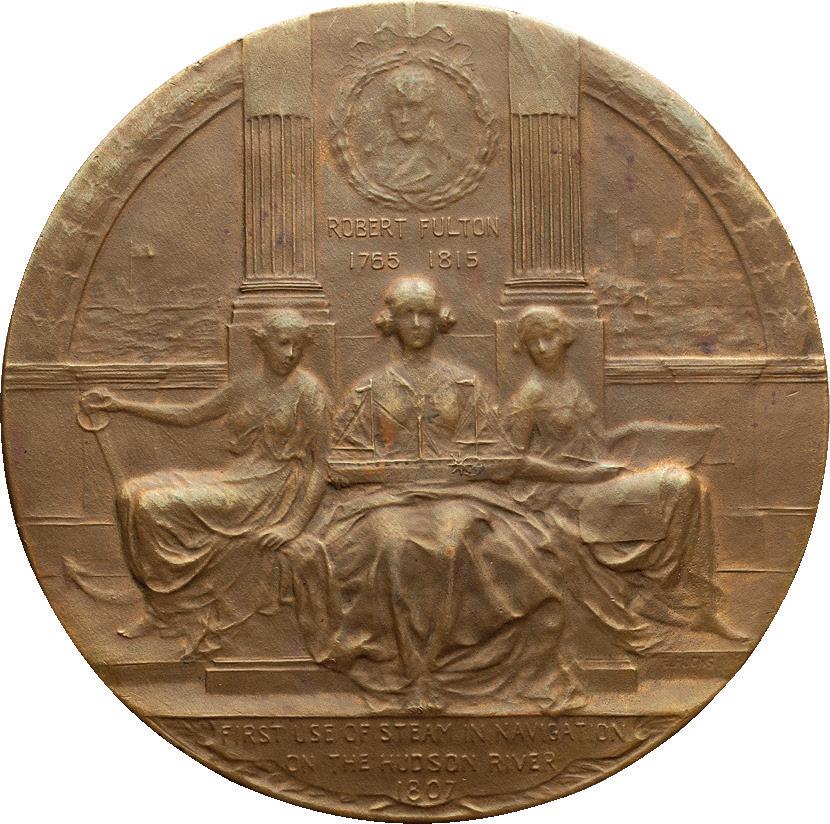


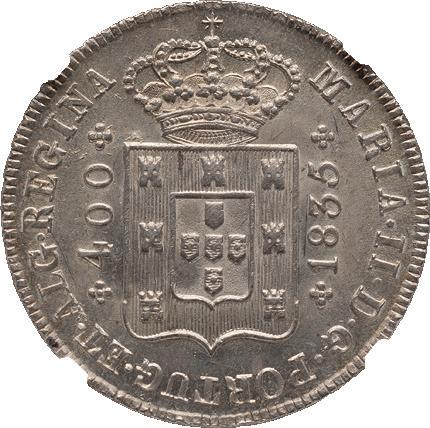
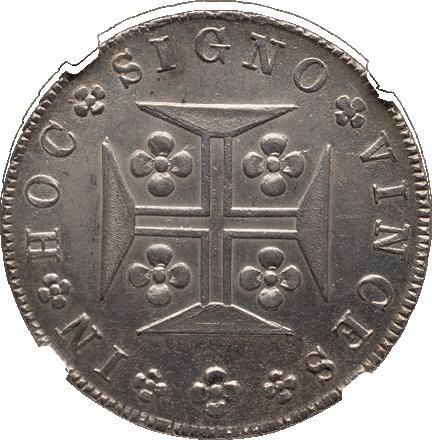




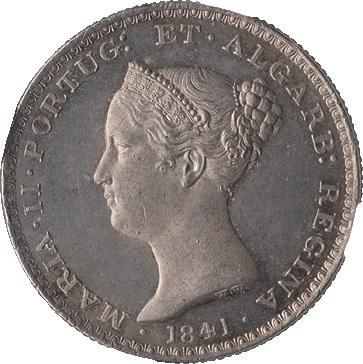

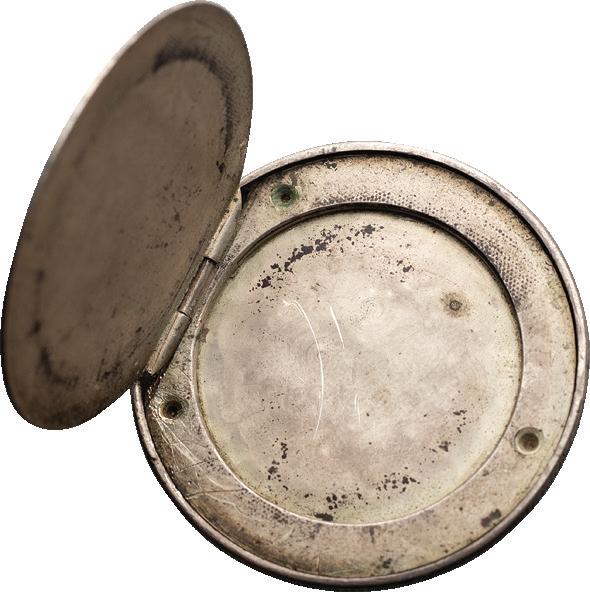


is mint name in Greek. Ex Berk BBS 151, November 1 2006, lot 521. VF 175 532. SEPTIMIUS SEVERUS AND JULIA DOMNA; 193-211 AD, Pergamum, Mysia, Magistrate Claudianos Terpandros, Medallion, AE 43-44, 45.24g. SNG Paris-2208. Obv: AVT KAI Λ CEΠ - CEOVHPO - C ΠEP around, IOV ΔOMNA / CEBACTH in two lines in exergue, Busts of Septimius Severus and Julia Domna face to face; between them small round countermark showing bust of Caracalla r. (Howgego-70. Rx: EΠΙ CTPA KΛAV - ΔIANOV TEPΠΑΝ around, ΔP[O]V downwards in r. field, ΠEPΓAMHNΩN / B NEOKOPΩN in two lines in exergue, Statue of Septimius on base, wearing military dress and holding patera and spear; below, victimarius swinging ax at sacrificial bull crouching r. VF 4750 533. MACRINUS AND DIADUMENIAN; 217-218 AD, Marcianopolis, Moesia Inferior, Struck under the magistrate Pontianus, Pentassarion, 12.95g. Varbanov-1170 var. Obv: Confronted heads of Macrinus r., laureate, and Diadumenian l., bare. Rx: Athena standing l., holding owl and reversed spear; E (mark of value) in r. field. VF 150
Unpublished Unique Drachm 534. JULIA MAMAEA; Alexandria, Egypt, Dated Year 10 of Severus Alexander (AD 230/1), Drachm, RPC-10492 var. (temporary), Dattari-4550 var. Obv: Draped bust r., wearing stephane. Rx: Nilus, holding wheat ears and cornucopia, seated l. on hippo with open mouth grazing l.; palm branch behind. While the type of Nilus riding a hippo is known, this variation, which shows a grazing hippo is unrecorded, and likely unique. Moderately porous surface, otherwise very fine. VF 2250 535. JULIA MAESA; Year 3 = 219/220 AD),Tetradrachm, 9.77g. RPC-10060, Köln-2355. Obv: Draped bust of Maesa r. Rx: Crowned and draped bust of Isis l.; L-Γ (date) across field. VF / aEF 1000
536. GORDIAN III AND TRANQUILINA; Anchialus, Thrace, AE 26, 12.95g. RPC-VII.2-1164. Obv: Vis-à-vis busts of Gordian III r., and Tranquillina l. Rx: Homonia standing l. holding cornucopia and patera. Ex Ponterio 76, 1 August 1995, lot 225. EF 250
537. GORDIAN III; 238-244 AD, Nicopolis ad Istrum, Moesia Inferior, Struck under the governor Sab. Modestus, AE 27, 15.60g. AMNG-2103. Rx: Eagle with wings spread standing front, head r., wreath in beak. Ex Berk BBS 154, lot 538. EF 250
Tranquillina
538. TRANQUILLINA; Alexandria, 243-4 AD, Billon Tetradrachm, 11.46g. Cologne-2692. Obv: CAB TPANKVΛΛEINA CEB Bust draped r., wearing stephane. Rx: L - Z across lower field, Eagle standing facing, head r., wings spread, holding wreath in talons. Ex Empire 7, 2 May 1987, Gordon Dickie Coll. aEF 385
539. PHILIP II AS CAESAR; 245-247 AD, Bizya, Thrace, Assarion, 4.38g. RPC Online-48726, Varbanov-1604. Obv: Bare head of Philip II r. Rx: Winged Genius standing l, legs crossed, leaning on torch set on altar; BIZVHΩN around. Scarce and appealing reverse type. VF 275
JEWISH BRONZE
540. JUDAEA, PONTIUS PILATE; Year 16 (29/30 AD), Prutah, 1.38g. Hendin-6370. Obv: TIBEPIOY KAICAPOC LIς, Simpulum. Rx: IOYΛIA KAICAPOC, three bound ears of grain, outer two droop. Naturally irregular planchet. EF 250 541. JUDAEA, PONTIUS PILATE; Year 16 (29/30 AD), Prutah, 2.00g. Hendin-6370. Obv: TIBEPIOY KAICAPOC LIς, Simpulum. Rx: IOYΛIA KAICAPOC, three bound ears of grain, outer two droop. Reverse is angled indicating that these coins were not struck by hinged dies. EF 250 542. JUDAEA, PONTIUS PILATE; Year 16 (29/30 AD), Prutah, 2.25g. Hendin-6370. Obv: TIBEPIOY KAICAPOC LIς, Simpulum. Rx: IOYΛIA KAICAPOC, three bound ears of grain, outer two droop. Reverse is upturned indicating that these coins were not struck by hinged dies. gVF 200 543. JUDAEA, PONTIUS PILATE; Year 17 (30/31 AD), Prutah, 2.01g. Hendin-6371. Obv: LIZ within wreath. Rx: TIBЄPIOV KAICAPOC, lituus. VF 250
544. JUDAEA, PONTIUS PILATE; Year 17 (30/31 AD), Prutah, 1.59g. Hendin-6371. Obv: LIZ within wreath. Rx: TIBЄPIOV KAICAPOC, lituus. VF 250 WORLD COINS
545. AUSTRIA, HOUSE OF HABSBURG, 1787, A, DUCAT, UNC; Austria, House of Habsburg, 1787 A, Ducat, UNC, Joseph II, 1765-1790. Holy Roman Empire. head with laurel wreath to the right, reverse: crowned double-headed eagle with breastplate and sword and scepter in the claws Color 439; Herinek 29. 3.49 g. Details Scratches but still lots of luster. 700
546. BURMA, PATRIOTIC LIBERATION ARMY, ND (1970-71), MU, UNC; Burma, Patriotic Liberation Army, ND (1970-71) Mu, UNC, (Myanmar). KM43, 2g, 14.2mm. Peacock // name of Burmese nationalist leader, U Nu, within star. A couple of rim nicks but lovely eye-appeal. The Patriotic Liberation Army was a rebel organization active in Burma/Myanmar from 1962 to 1974. These coins were declared illegal by the gov’t and it was ruled that possession of them was against the law. Many were turned in and melted down by the gov’t but an unknown number were kept and those are the ones now showing up in collections and auction. 350 547. FRANCE, LOUIS XII (1498-1514), ND, ECU D’OR AU PORC-EPIC,
AU/UNC; France, Louis XII (1498-1514), ND Ecu d’or au porc-epic, AU/ UNC, Lyon mint; a pellet beneath the 12th letter. Crowned arms of France flanked by two porcupines/cross patonce with L’s and porcupines in alternating quarters. C.909 - L.598 - Dy.655. 2200 548. GREECE, KONSTANTINOS II. 1964-1973, 1967 (1970), 20 DRACHMAI, UNC; Greece, Konstantinos II. 1964-1973, 1967 (1970) 20 Drachmai, UNC, Commemorating the 1967 Revolution. Kremnica mint. Dated 21 April 1967, though struck 1970. Crowned coat-of-arms with wildmen supporters / Soldier standing left; in background, phoenix rises from flames. Karamitsos 240; KM 92; Friedberg 22. 600 549. ITALIAN STATES, VENICE, ND, ZECCHINO, EF; Italian States, Venice, ND Zecchino, EF, Alvise Mocenigo II., 1700 - 1709. St. Mark standing right, presenting long cross to Doge kneeling left, S·M·VENET ALOY MOCEN./Christ within mandorla, sixteen stars, SIT·T·XPE·DAT·Q·TV REGIS·ISTE·DVCA, 3.5g. 20.6mm. Friedberg 1358, Montenegro 2229. Deteriorating dies. 400 550. NETHERLANDS, 1789, DUCAT, EF/AU; Netherlands, 1789 Ducat, EF/ AU, Standing, armored knight holding bundle of arrows, divides date. Without inner circle/Inscription within ornamented tablet. AGW: 0.11oz. A common piece but who doesn’t want a gold coin with a knight?.
400 551. BOLIVIA, ATOCHA SHIPWRECK, ND, NV, 8 REALES, F; Bolivia, Atocha Shipwreck, ND NV, 8 Reales, F, Philip III. 1598-1621. Grade 3, with hole. Silver, 35.3mm, 18.1g. Potosi mint. Mint P, Assayer NV. ATOCHA 1985 ticket, TSI Number 85A-231686. Crowned arms / Cross with lions and castles in the angles. KM 10. On September 6, 1622, the heavily laden treasure galleon “Nuestra Senora de Atocha” of King Philip IV’s Tierra Firme Fleet struck a reef and sank in a raging storm near the Florida Keys. More than two hundred and sixty persons perished and tons of gold, silver, and other precious cargo were lost to the sea. All attempts to locate the shipwreck failed until the location of the primary cultural deposit was made by Mel Fisher’s Treasure Salvors, Inc., on July 20th 1985.The “Nuestra Senora de Atocha” carried over 200,000 hand stamped silver coins from mints in Potosi, Lima and Mexico City. To date, only 128 gold Atocha coins have been recovered! The gold Atocha coins were minted in Spain, as gold coins were not minted in the New World in 1622. The gold Atocha coins would have been in the pockets and possessions of the wealthy passengers. 600 552. BOLIVIA, ATOCHA SHIPWRECK, ND, NV, 8 REALES, F; Bolivia, Atocha Shipwreck, ND NV, 8 Reales, F, Philip III. 1598-1621. Grade 3, with hole. Silver, 33.6mm, 18.1g. Potosi mint. Mint P, Assayer NV. ATOCHA 1985 ticket, TSI Number 85A-115002. Crowned arms / Cross with lions and castles in the angles. KM 10. On September 6, 1622, the heavily laden treasure galleon “Nuestra Senora de Atocha” of King Philip IV’s Tierra Firme Fleet struck a reef and sank in a raging storm near the Florida Keys. More than two hundred and sixty persons perished and tons of gold, silver, and other precious cargo were lost to the sea. All attempts to locate the shipwreck failed until the location of the primary cultural deposit was made by Mel Fisher’s Treasure Salvors, Inc., on July 20th 1985.The “Nuestra Senora de Atocha” carried over 200,000 hand stamped silver coins from mints in Potosi, Lima and Mexico City. To date, only 128 gold Atocha coins have been recovered! The gold Atocha coins were minted in Spain, as gold coins were not minted in the New World in 1622. The gold Atocha coins would have been in the pockets and possessions of the wealthy passengers. 650
553. BRABANT, JEAN III, 1312-1355, ND, ESTERLIN, VF; Brabant, Jean III, 1312-1355, ND Esterlin, VF, Louvain mint. Silver, 1.3g, 18mm. Quartered shield of Brabant-Limburg. R/ + MONETA: LOVANIES Cross fleuronnée. Ghyssens p. 12, 4; W. 349. 100
554. BRABANT, JAN II VAN BRABANT, ND, STERLING, VF; Brabant, Jan II van Brabant, ND Sterling, VF, John II. 1294-1312. Silver, 1.2g. Head facing; I.DVX.LIMBVRGIE/long cross, three balls in each corner. de Witte 257. Fairly large flan crack but the portrait is phenomenal on this. 200 555. FRANCE, RICHARD I, THE LIONHEART 1189-1199., ND, DENIER, VF; France, Richard I, The Lionheart 1189-1199., ND Denier, VF, 1.04 gm. 19 mm. Poitou mint. Central cross patee, inner circle around; RICARDVSREX around / PIC TAVIE NSIS in three lines. S. 8008. Duncan Elias 8. A delightful hammered issue that allows collectors their only chance at a coin bearing the name of Richard, as his English proper coinage was all in the name of his father, Henry II. 185
556. FRANCE, CHARLES IX, 1560-1574, 1568, M, TESTON, VF; France, Charles IX, 1560-1574, 1568 M, Teston, VF, Silver, 29mm, 9.36g. Toulouse mint; mm: M. Authorized 17 August 1561. Laureate and armored bust left / Crowned coat-of-arms; crowned Cs flanking. Duplessy 1063; Ciani 1356. Toned. With old Boudeau envelope. 350 557. FRANCE, 1587, H, 1/4 FRANC, VF; France, 1587 H, 1/4 Franc, VF, Bust of Henry III laureate, draped and cuirassed to the right with the flat collar. Leafy and fleur-de-lis cross, with H center. struck on a slightly short flan. Silver 6.3g, 27.3mm. Lots of surface scratches and muted toning but scarce coin. Comes with old E. Boudeau envelope. 350 558. FRANCE, NORTH AMERICAN COLONIES, 1753 (RESTRIKE 1880’S), JETON, UNC; France, North American Colonies, 1753 (restrike 1880’s) Jeton, UNC, Louis XV, 1715-1774. By, F. Marteau. Silver, 12.4g,
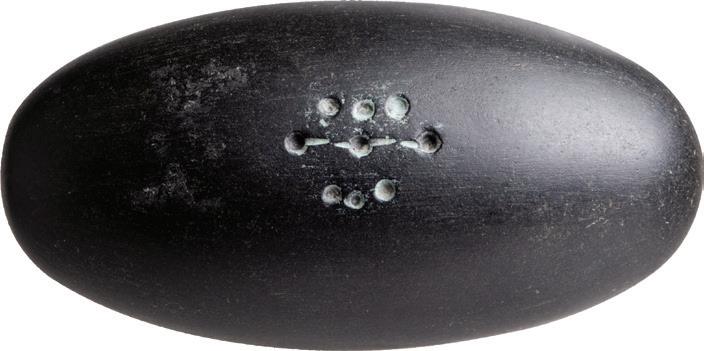

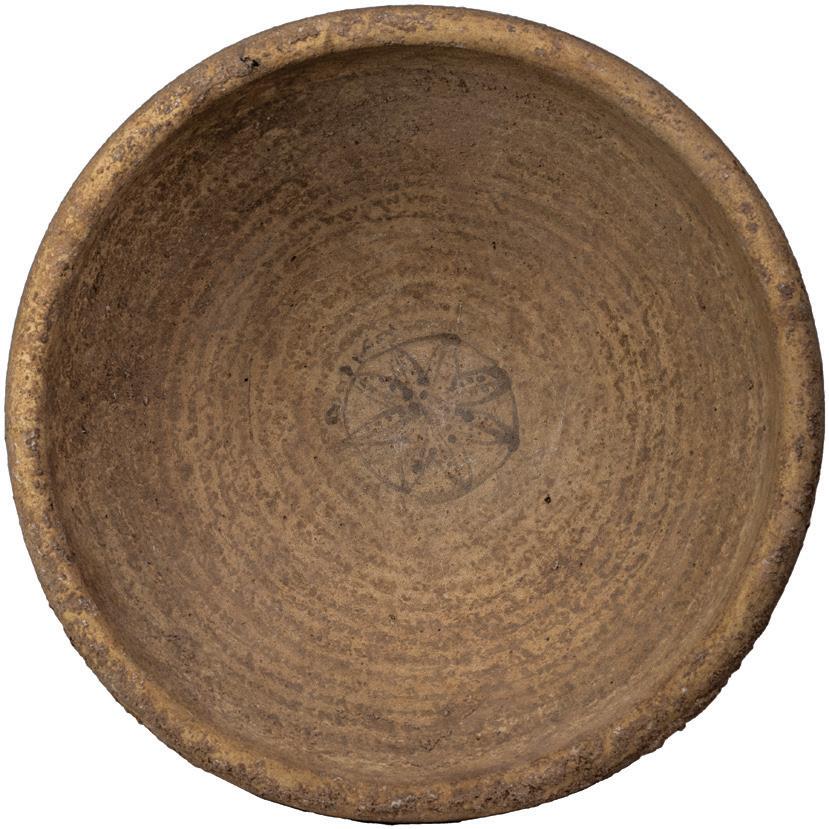







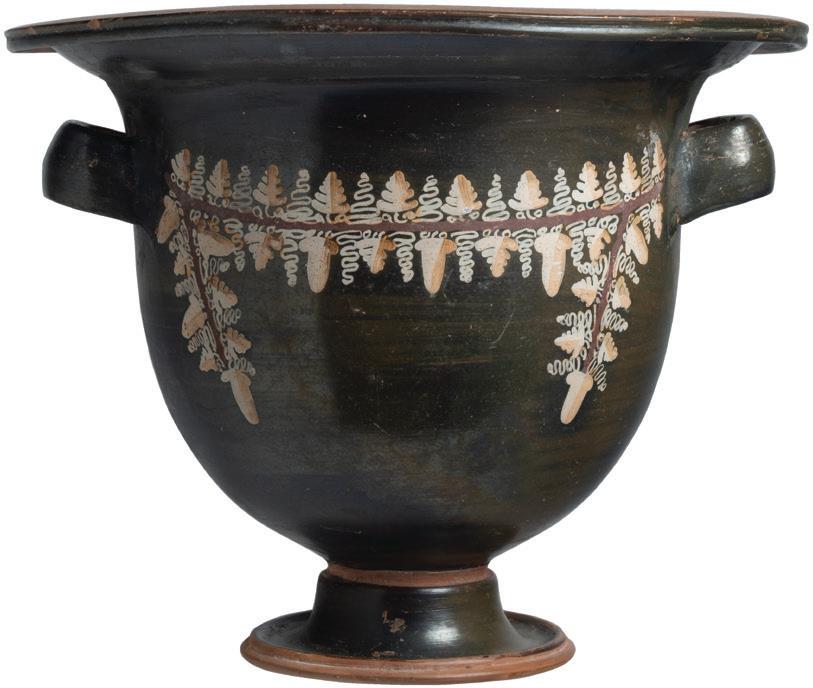





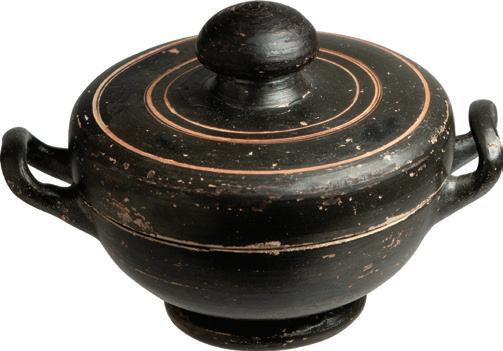



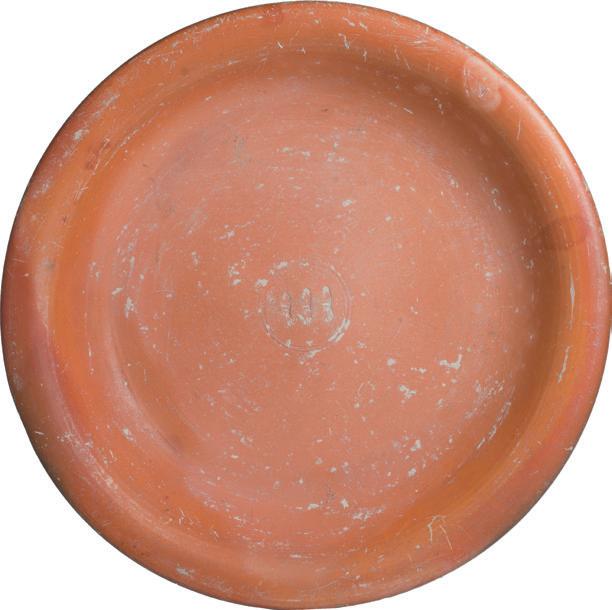
29.3mm. EM: cornucopia. Kings portrait right/Radiant sun above joined eastern & western hemispheres, date below. 125 559. FRANCE, ORDINARY DES GUERRES, 1755, JETON, AU/UNC; France, Ordinary des Guerres, 1755 Jeton, AU/UNC, Louis XV, 1715-1774. Silver, 7g, 28.6mm. King facing right/A lonely flower on a flat land with the radiant sun in the background. Our interpretation can change depending on whether you think the sun is rising or setting. lovely. 75 560. FRANCE, EXTRAORDINARY DES GUERRES, 1758, JETON, UNC; France, Extraordinary des Guerres, 1758 Jeton, UNC, Louis XV, 1715-1774. Silver, 7g, 28.6mm. King facing right/two naked men clobbering each other on the battlefield, a bull in between; an archer shocked while being bit on the butt by an animal; Sic foedera sancit. 75 561. FRANCE, MASONIC, 5805 (1805), JETON, UNC; France, Masonic, 5805 (1805) Jeton, UNC, First Empire, Lodge of Saint Eugene, Paris. Silver, 8.1g, 27mm. D/ CONSTITUÉE PAR LE G.·. O.·.DE FR.·.LE 14ME.·. J. ·. DU 3ME.·. M.·.D.·. (cross) radiant face, below, L AN 5805/cross) LOGE DE ST.·. EUGENE• (cross) large flaming star with G crowned with laurel and oak branches; in exergue, OR.·.DE PARIS• Labouret 352. Bramsen 417. Julius 1376. Rare. The lodge is constituted under the invocation of the Patron Saint of Prince Eugene de Beauharnais, son of the first wife of the First Consul. Prince Eugène was Vénérable d’ Honorary Member of this Lodge and Grand Master of the Grand Orient of Italy.. 425 562. FRANCE, SENEGAL (COLONIAL), ND (1860-79), JETON, UNC; France, Senegal (Colonial), ND (1860-79) Jeton, UNC, Silver Token “Compagnie de Remorquage” 1852 - 1880. By J. Esparon. SC Paris; Silver 21. g., 36.5 mm; The obverse features an anchor, a barrel, and crates, one of which reads “SENEGAL. Above is the inscription “COMPAGNIE DE REMORQUGE”. The reverse showcases a two-masted tugboat with a paddlewheel driven by a steam engine sailing left; This token was struck after the founding of Dakar in 1854. Dakar became a very important port in French West Africa, a crossing point or stage to go down to the Gulf of Guinea or to begin the crossing of the Atlantic to Brazil. Pretty toning. Some hairlines but overall superb and rare. 600
563. FRANCE, SOISSONS SAVINGS BANK, ND, JETON, UNC; France, Soissons Savings Bank, ND Jeton, UNC, Silver, 15g, 32mm. Done in the soft style of Pillet, mother and child give a coin to the allegorical seated figure. Standing next to them is an older man, perhaps symbolically representing longevity. The words wisdom & foresight below/Beehive (signifying work), wheat and cornucopia (signifying abundance). Collect if for yourself or gift it for anyone wanting to attract abundance in their lives. 100
564. FRANCE, MONTDIDIER NOTARIES, ND, JETON, UNC; France, Montdidier Notaries, ND Jeton, UNC, Silver, 16g, 32.4mm by E. Caque. Two large hands join together in center; NOTARIES OF THE DISTRICT OF MONTDIDIER/Two tables surrounded by the scales of Truth and Justice; QUODCUMQUE NOTAMUS LEX. Lerouge 201. I like this jeton because the symbolism speaks to a feeling of connection and the preservation of truth. 100 565. FRANCE, ELECTION OF CASIMIR PERIER, 1894, MEDAL, UNC; France, Election of Casimir Perier, 1894 Medal, UNC, Bronze by J.C.Chaplain. Casimir Perier, president left/a somber looking Marianne with veil over her head casting her vote into a fotted urn on the altar. 168g, 68.6mm. This election of June 27th, 1894 was held three days after the assassination of Sadi Carnot, a very popular president in France and the funeral had not even taken place yet. 200
566. FRANCE, ILE DE LA CITE, 1927, MEDAL, AU/UNC; France, Ile de la Cite, 1927 Medal, AU/UNC, Bronze by Pierre Turin, 161g, 68mm. A tribute to the heart of Paris by on of the greatest Art Deco medalists. A slightly elevated view of Pont Neuf, San Chapelle and two towers of Notre Dame/an aerial view with outlines of Notre Dame, gardens, the Hotel Dieu hospital, the park containing the Tour St. Jacques and the Hotel de Ville. Quite lovely. 70 567. GERMAN STATES, GEORGE II, 1727-1760, 1736, CPS, 1/3 THALER, NGC, MS62; German States, George II, 1727-1760, 1736 CPS, 1/3 Thaler, NGC. MS62, Brunswick-Calenberg-Hannover. Smith 147. Welter 2594. Super nice looking. 750
568. GERMAN STATES, ROTHENBURG, ND, MEDAL, NGC, UNC; German States, Rothenburg, ND Medal, NGC. UNC, Silver medal no date (1920), 42mm. UNC Details: Cleaned. View of the city of Rothenburg under a bright sun, in the foreground two city coats of arms. Obverse created earlier in 1744 by J. L. Oexlein for the 200th anniversary of the introduction of the Reformation/Seal of the Council and the entire citizenry of Rothenburg; reads: S. CONSILII ET UNIVERSITATIS CIVIUM IN ROTHENBURCH. 300
569. GERMAN STATES, PRUSSIA, ND (CA. 1800), MEDAL, EF; German States, Prussia, ND (ca. 1800) Medal, Friendship Silver Medal. Silver, 14g, 36mm.by Loos and Pfeuffer. Obverse: Angel standing right, affixing laurel wreaths to column; flowers around; Reverse: Legend around lily. Deeply toned with a charming iridescence, this attractive topical medal also exhibits an underlying brilliance shimmering from beneath. 125
570. GERMAN STATES, PRUSSIA, ND (CA. 1800), MEDAL, EF; German States, Prussia, ND (ca. 1800) Medal, EF, Silver 13.5g, 36.3mm by Loos. Chronos (father time) with a scythe flies over Zodiakos with circular text: DIE ZEIT ENTFLIEHT. Rev.: Rosen wreath with 4-linie text: DOCH MEINE
LIEBE NICHT. Pretty toning. 125 571. ITALY, MILAN (HRE), 1799, 30 SOLDI, VF; Italy, Milan (HRE), 1799 30 Soldi, VF, Francis II, Emperor, 1792-1806. Silver, 30 mm, 7.3g, Milano. FRANC•II•D•G:R•IMP•S•AUG•G•H•ET•B•REX•A•A• Laureate head of Franz II to right/ MEDIOLANI - DUX•1799 / SOLDI•30 Crowned coat of arms. MIR 473/1. Pagani 6. Some adjustment marks, flan issue and actual scratches. Still a scarce piece to come by. 250 572. MEXICO, CARLOS & JOHANNA, ND, M-L, 4 REALES, EF; Mexico, Carlos & Johanna, ND M-L, 4 Reales, EF, “Late Series”, 1548-1556. Mexico City mint, Cal-135. 12.9g. 31.8mm. Popular Pillar type, nice full flan and lots of doubling. Old cleaning as possibly sea salvage. Super nice eye-appeal. 650 573. MEXICO, COB, ND, 8 REALES, VF; Mexico, Cob, ND 8 Reales, VF, Philip III, 1607-1617, Mo-F, Mexico City mint, KM44.3, Cal-881. 27.4gm. Philip III Cob 8 Reales are seen with much more frequency from Bolivia, Mexican specimens are quite scarce and treasured. Large, thick flan and good eye-appeal. 600 574. NETHERLANDS, WEST FRIESLAND, 1634, LION DAALDER, F/ VF; Netherlands, WEST FRIESLAND, 1634 Lion Daalder, F/VF, Armored knight standing to left with head right/Rampant lion left within dotted inner circle; date at top in legend. Silver 27.1g. KM 14.2. 80
575. NETHERLANDS, DUTCH REVOLT, 1576, LION DAALDER, VF; Netherlands, Dutch revolt, 1576 Lion Daalder, VF, Dordrecht mint. armoured half-length soldier standing to left, head reverted; coat-of-arms dividing date below/lion rampant standing to left. Delmonte 831; Davenport 8838. 27.2g. 150
576. NETHERLANDS, SHOOTING JETON, 1665, SCHUTTERS PENNING, F/VF; Netherlands, Shooting Jeton, 1665 Schutters Penning, F/ VF, Leiden. Silver, 27.9mm 5.1g. PVGNO PRO PATRIA, crowned lion standing left, resting paw on coat-of-arms and holding sword over head/SCHVTTERS PENNING 1665, crossed matchlock muskets; LEY DEN across field. Toned. 100
577. NETHERLANDS, RESOLUTION OF THE CIVIC UNREST IN AMSTERDAM, 1696, MEDAL, EF; Netherlands, Resolution of the Civic Unrest in Amsterdam, 1696 Medal, EF, Silver By Arondeaux. 24.19g, 37.5mm. Neptune standing on sea chariot drawn right by two hippocamps, winds left and right blow the sea into waves, legend above “MOTOS PRAESTAT COMPONERE FLUCTUS” (he stands ready to control the billowing waves, a quote taken from the Aeneid of Virgil); Reverse: Two kingfisher birds on calm seas in a floating nest, a setting sun on the horizon, legend above on banner “HALCYONIBUS REDUCTIS/ SENATUS AMSTELOD/ CIVIBUS SUIS HOC/ ANTIQUAE VERTUTIS/ SPECTATAEQ FIDEI/ PRAEMIUM LARGITUR.” (The Halcyons having returned, the Amsterdam city council grants unto her citizens this gift of ancient virtue and wondrous faith), in exergue “MDCXCVI/ R. ARONDEAUX F.” van Loon (new edition) 1696.4.
450
578. PORTUGAL, 1835, 400 REIS, NGC, MS63; Portugal, 1835 400 Reis, NGC. MS63, Super nice eye-appeal. 350 579. PORTUGAL, MARIA II, 1841, 500 REIS, NGC, MS61; Portugal, 1841 500 Reis, NGC. MS61, KM# 471; N# 24081; Silver; Maria II; Mintage 22000 pcs. Really lovely and often not found is this condition.
750
580. PORTUGAL, 1858, 500 REIS, NGC, MS63; Portugal, 1858 500 Reis, NGC. MS63, Pedro V. Super nice eye-appeal. 350 UNITED STATES COINS
581. UNITED STATES, ANTI-SLAVERY SOCIETY, 1838, TOKEN, VF/ EF; United States, Anti-Slavery Society, 1838 Token, VF/EF, Copper Cent Token, 28.3mm, 9.6g. A kneeling female slave in a prayer like pose; AM I NOT A WOMAN & A SISTER 1838 / UNITED STATES OF AMERICA around outside; LIBERTY 1838 in center surrounded by an oak wreath. Low 54. HT 81. 725
582. EXONUMIA, 1874-50¢, Love Token, Without a doubt one of the nicest and most well executed love tokens we’ve handled in quite sometime. The enameling is still bright and the scroll work is beautifully delicate. The host coin is an 1874 (arrows) Liberty Seated Half Dollar.
120
583. EXONUMIA, 1877-S, T$1, Box Dollar, Outwardly this appears to be a well circulated and common date 1877-S Trade dollar. Upon further inspection one will find the coin far too light. If one investigates even further they will find that this unassuming trade dollar is actually concealing a secret. When pressed in just the right place the coin opens on a hidden hinge revealing a spot for a photograph. Superior workmanship and a fairly handsome host coin. 350
584. EXONUMIA, 1898-25¢, Enameled Pin. Some of the finest, period enameling we have ever seen. Painstakingly and lovingly turned into a small pin and fully colorized using delicate enamel work. Coin jewelry is certainly not rare but the level of craftsmanship and preservation of this piece puts it far above other such types. Often times we find pieces of this nature broken but this is a fully functioning piece with the safety pin and closure still present. The host coin is an 1898 Barber Quarter with VF/EF details from many years of loving use.
250
585. EXONUMIA, 1909-Medal, Bronze UNC. A truly unique medal struck by the American Numismatic Society for the Hudson Fulton Banquet held on September 29th, 1909. The banquet and exposition was in honor of the dual


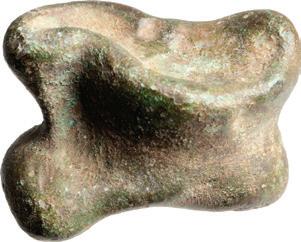


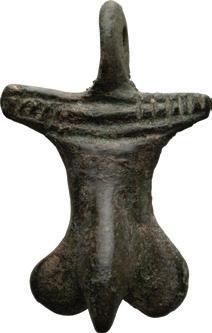

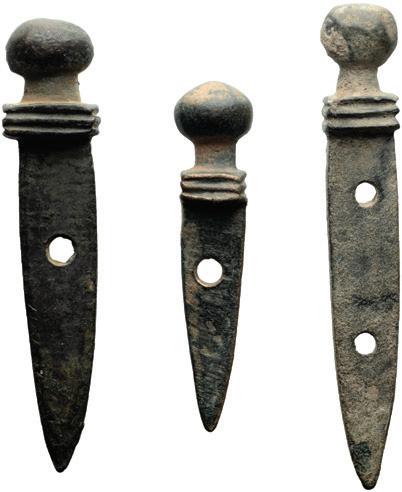

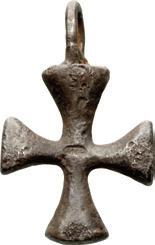

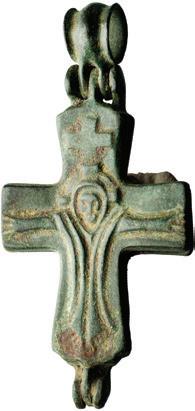

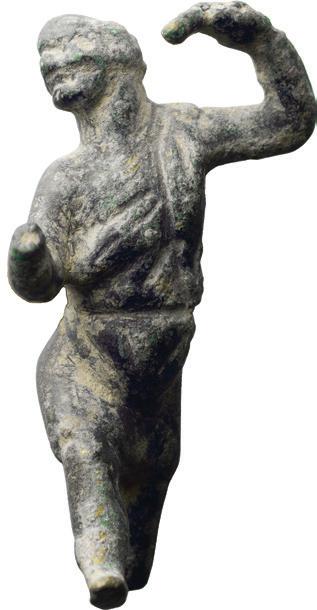


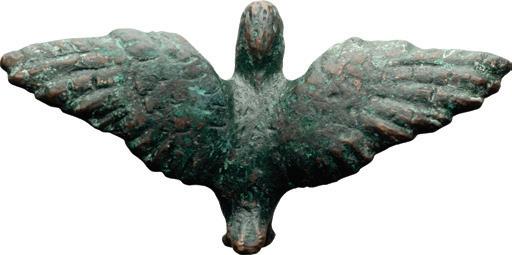






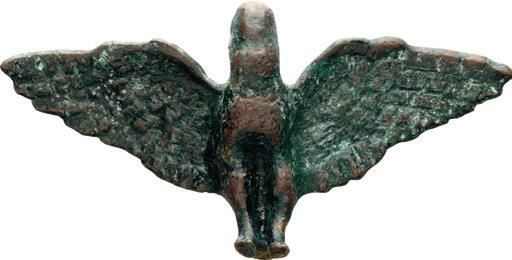




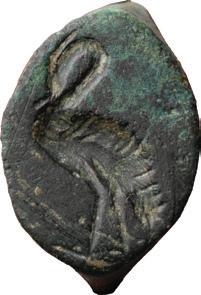


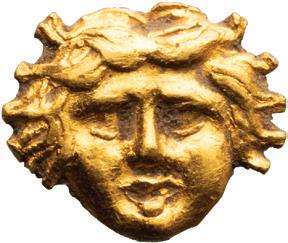
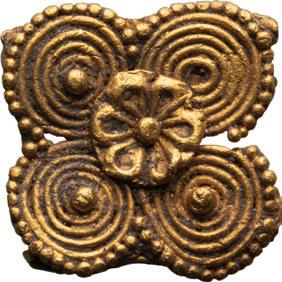





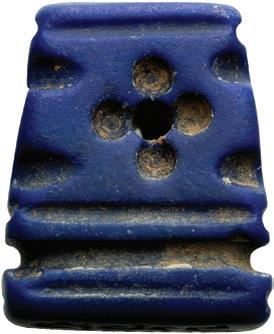

anniversary of the discovery of the Hudson river and the first steam navigation of it a few hundred years later. Stylistically more European than American as this piece comes with a soft and delicate strike. Original box included.
Labs confirming approximately 3600 years old. H. 6” W. 2 1/8” (15.2 cm x 5.4 cm) 3800
200
586. EXONUMIA, 1915 Pan Pac Expo-Medal, MS64, RB, The 1915 Pan-Pac expo produced some of the most beautiful coins and medals in the history of our nation and this official mint medal is no exception. Designed by Robert Aitken using very classic and in vogue for the time Grecco-Roman Motifs. HK-400. Bright Bronze. R4, -HK-400, NGC2645331-078. 225
587. EXONUMIA, 1920-Medal, UNC, Bronze, 76 MM. Research on mint medals after 1892 is scarce and fragmented. This mint medal from circa 1920 commemorates William McAdoo, the Secretary of the Treasury from 1913 to 1918 as well as being Director General of Railroads from 1917-1919. Most examples seen are listed by Failor-Hayden List, but this resource is more of a sales catalog published by the US mint for restrikes. This is no restrike as is evidenced by the original snap case that comes with the medal.
300
588. EXONUMIA, 1970-Medal, Jewish American Hall of Fame; Einstein, 45 MM. Silver. 94.4 Grams. Struck by the Jewish American Hall of Fame, this medal series was a long running staple of Art medal collectors from 1969-2023. The present medal is #2 in the long running series and one of the most prominent honorees of the series. This handsome, square medal of Einstein has a mintage of just 290 pieces in silver and with the many melts of the late 1970’s and 1980’s we suspect far fewer than 290 are extant. 350
NEAR EASTERN
589. LARGE BABYLONIAN HEMATITE WEIGHT, ca. 2nd Millennium BC. Rare large size with drilled inscription most likely identifying its weight.
Provenance:
K.B Stenberg, Denmark, acquired prior to 1980.. W. 4” (10.2 cm). 2750
590. NEAR EASTERN INCANTATION BOWL WITH SYRIAC MANICHAEAN SCRIPT, ca. 6th-8th Century AD. The bowl is written in sixteen lines of the Syriac Manichaean script with trap in the center tondo. The text deals with the subdual of demons that appear to the owner of the bowl in various forms. The magician enters the house in the company of a number of angels who help him subdue the various demons. H. 5 3/4” Dia. 12” (14.6 cm x 30.5 cm). 4250
EGYPTIAN
591. EGYPTIAN WOODEN PTAH SOKAR OSIRIS, Late Period, ca. 715-330 BC. The piece consisting of three sections, rectangular base, body and headdress. The mummiform Osiris wears a tripartite wig and plumed headdress with ram’s horns, traces of red and black pigment remaining. Ex HJB Private Treaty 2010. H. 19” (48.3 cm) L. of base 10 1/2” (26.7 cm)
1650
592. EGYPTIAN PAINTED WOOD SARCOPHAGUS FRAGMENT, Ptolemaic Period, 304-30 BC. Provenance: John Ristow Curiosities, Petaluma, California, prior to 4 June 1995. Donald Wonder (1938-2023), California & New Jersey; thence by descent. H. 9 3/4” (24.8 cm) 1850 593. EGYPTIAN FAIENCE EYE OF HORUS, Late Period, ca. 715-330 BC. A stylized eye with distinctive markings, the symbol was protective in nature and additionally represented well-being and healing. L. 1 1/4” W. 7/8” ((3.2 cm x 2.2 cm) 300
594. EGYPTIAN SOW PLAQUE AMULET, Late Period, ca. 715-330 BC. Amulet depicting the goddess Nut as a sow. L. 5/8” (1.6 cm) W. 3/8” 375 595. EGYPTIAN FAIENCE DJED PILLAR AMULET, Late Period, ca. 715-330 BC. A metaphor for the stability of the monarchy and the resurrection of Osiris, the djed pillar was considered to represent Osiris’ backbone. As a hieroglyph, djed meant “stability,” and this amulet therefore imbued its owner with stability and endurance. Chapter 155 of the Book of the Dead prescribes placement of a djed pillar amulet at the throat of the mummy, to transform the deceased into an “equipped spirit” in the entourage of Osiris. Beautiful bright blue color. L. 1 1/8” (2.9 cm) W. 3/8” 275
596. EGYPTIAN FAIENCE USHABTI, Late Period, ca. 715-330 BC. Mummiform figure wearing a plain tripartite wig, arms crossed at the chest, some surface discoloration and minor chips and wear. Mounted. H. 4” (10 cm) 300
597. MINOAN TERRACOTTA STANDING MAN, ca. 2000-1500 BC. A rare variety of Minoan terracotta votive- apparently dressed in a sort of cloak, arms raised towards its chest. NYC collection, ex Fortuna Fine Arts, NYC. Acquired from Safani Gallery, NYC, 1990s. TL report from Artemis
598. ATTIC LEKYTHOS WITH WOOL SPINNING WOMAN, ca. 5th Century BC. The Providence Painter is considered the most important and talented pupil of the Berlin Painter. Unlike the Berlin Painter, however, he was fond of drawing women in domestic scenes. This lekythos depicts a woman who is holding a ball of wool and preparing to spin it into thread. Munzen und Medaillen AG, Sonderliste N )May 1971) no 20 - where Herbert cites a letter from Beazley attributing it to the Providence painter. BAPD 13619. H. 13 1/4” W. 4 5/8” (33.7 cm x 11.7 cm) 26500 599. ATTIC LYKINIC LEKANIS, ca. mid to late 5th Century BC. The top half with knobbed handle and concentric rings in reserved red. The lower part of the dish with ring foot and double handles situated horizontally. Former private collection, New Jersey. See: Sparkes and Talcott, 1970, The Athenian Agora, Vol. XII, Black and Plain Pottery. See similar: Harrow School Museum 1864. 113. 1,2.. H. 3” W. 4 1/2” (7.6 cm x 11.4 cm).
1000
600. ATTIC FEEDING BOTTLE, ca. 5th Century BC. Ring handle with tubular spout projecting horizontal from the belly to the handle. Top reserved with a row of seven waves. From the collection of the late George Withers. W. 3” H. 1 3/4” (7.6 x 4.4 cm) 600 601. GREEK CHOUS, ca. mid 5th Century BC. The small wine vessel has a plump shape with a smooth profile and trefoil mouth. The fabric very close to distinctive Corinthian parallels while the shape is close to Attic parallels. Likely Atticizing ware, meant to imitate Attic ware. H. 7 3/4” (19.7 cm) 650
602. APULIAN RED-FIGURE CHOUS WITH ATHLETE, ca. mid 4th Century BC. Nude youth in profile to the left, running while holding a staff in his trailing left hand.
Provenance:
Donald Wonder (1938-2023), California & New Jersey, prior to 1998; thence by descent. H. 5 7/8” (14.9 cm)
2500
603. GNATHIAN BELL KRATER, ca. 4th Century BC. White and yellow painted grapes, tendrils and leaves stretch horizontally on one side from handle to handle. Nearly touching the handles, the vine swags down and slightly to the middle. Repaired. Provenance: Private Collection, Oregon, acquired 1980s. H. 9” W. 11.3” (H. 23 cm, W. 28.7 cm) ..................... 6000 604. ROMAN NORTH AFRICAN LARGE REDWARE SHALLOW BOWL, ca. 4th-5th Century AD. Center of the bowl stamped with planta pedia. The rim wide and rounded, the underside with low disk foot base. Ex Collection of Robert C. Hamer, no. 307.
Mr. Hamer was in the US State Department and served in Jordan, Iran, and Turkey among other Near Eastern posts. He left Jordan in June 1955 and Turkey in June 1966 and never returned to either country. All artifacts purchased or found overseas were brought in to the USA prior to July 1966.
Found: Turkey. Dia. 11 7/8” (30.2 cm)
1500 OIL LAMPS
605. JUDEAN IRON AGE TERRACOTTA OIL LAMP, ca. 1200-586 BC. Wheel made lamp with pinched edge forming a narrowed wick rest. L. 4 3/4” W. 4 1/2” (12.1 cm x 11.4 cm)
250
606. ROMAN CHI RHO OIL LAMP, ca. 4th-5th Century AD. The primary design is the CHI RHO – an early Christian Symbol. Chip to handle. L. 5 1/2” (14 cm)
600
607. ROMAN NORTH AFRICAN REDWARE CHI RHO OIL LAMP , ca. 5th-6th Century AD. Christian CHI RHO symbol at center bordered by a row of repeating concentric circle decoration. L. 5 5/8” (14.3 cm) 600
608. ISLAMIC TERRACOTTA OIL LAMP, ca. 7th-12th Century AD. Flattened round body with large loop handle. Filling hole bordered by a raised lip. L. 4” W. 3 3/8” (10.2 cm x 8.6 cm)
250 BRONZES
609. GREEK BRONZE KYLIX, ca. 6th-5th Century BC. Ridge below exterior rim, incised double bands around the base Ex Herb Kreindler, 1990s. Ex David Hendin personal collection. W. 6 5/8” H. 2” (16.8 cm x 5 cm)
1850
610. EAST GREEK IBERIAN BRONZE HOODED FIGURE, ca. 6th Century BC. Standing with his feet together, wearing a conical headpiece and a long-sleeved draped garment. H. 3” (7.6 cm) 900
611. ROMAN BRONZE ASTRAGALUS (KNUCKLEBONE), ca. 4th Century BC-1st Century AD. One of the most popular games of chance in antiquity was played with knucklebones of goats or sheep. Astragaloi were used as gaming pieces in a manner similar to modern dice. L. 1 1/8” (2.9 cm)
300
612. ROMAN BRONZE ASTRAGALUS (KNUCKLEBONE), ca. 4th






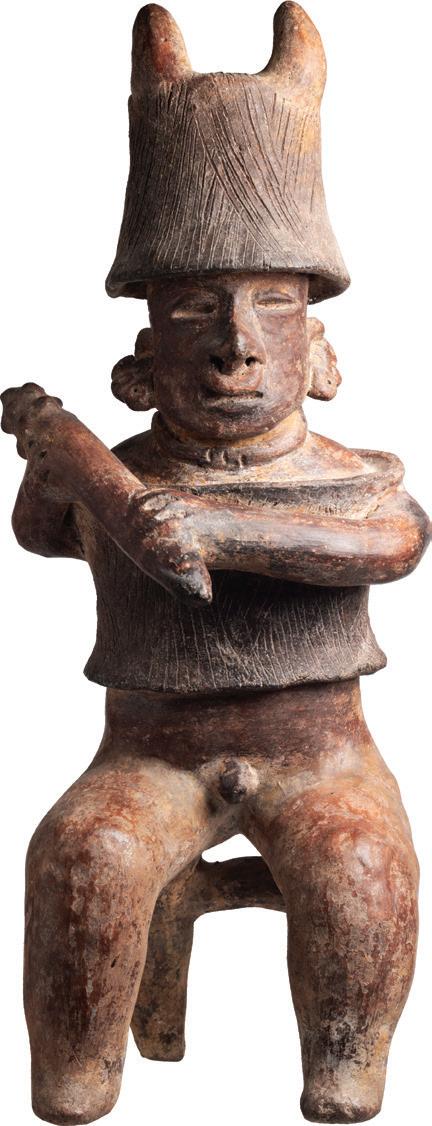

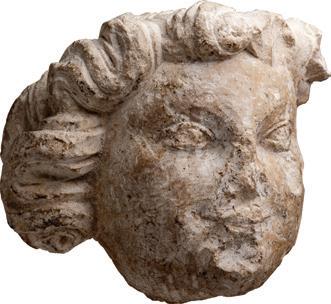







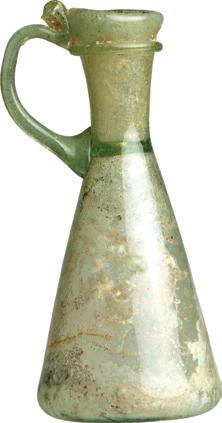


Century BC-1st Century AD. One of the most popular games of chance in antiquity was played with knucklebones of goats or sheep. Astragaloi were used as gaming pieces in a manner similar to modern dice. L. 1 1/8” (2.9 cm)
250
613. ROMAN BRONZE ASTRAGALUS (KNUCKLEBONE), ca. 4th Century BC-1st Century AD. One of the most popular games of chance in antiquity was played with knucklebones of goats or sheep. Astragaloi were used as gaming pieces in a manner similar to modern dice. L. 1 1/8” (2.9 cm)
edge with regularly spaced protruding knobs around the outside. The face of this piece is decorated with four panels, three squares with an incised “X” and circles around the crossing. The forth panel is a half circle filled with punched circles. There is a rope-like border around the edges. Encrustation throughout. Ex Harlan J. Berk, Ltd. 140th Buy or Bid Sale, 2004, lot 685. L. 3 5/8” (9.2 cm)
350 MISCELLANEOUS
250
614. ROMAN BONE ASTRAGALUS (KNUCKLEBONE), ca. 4th Century BC-1st Century AD. One of the most popular games of chance in antiquity was played with knucklebones of goats or sheep. Astragaloi were used as gaming pieces in a manner similar to modern dice. L. 1 1/4” (3.2 cm)
630. COPTIC BONE COSMETIC PIN, ca. 3rd-6th Century AD. Simple teardrop shaped terminal with incised lines. The body also incised, tapering to a fine point. L. 4 1/4” (10.8 cm)
275
615. ROMAN BRONZE PHALLUS AMULET, ca. 1st-3rd Century AD. Dark green patina, suspension loop intact. Provenance:
250 631. COPTIC BONE COSMETIC PIN, ca. 3rd-6th Century AD. Multiple knobs and ribs with tapered shaft and thin point. L. 4 1/2” (11.4 cm) 250 632. COPTIC BONE COSMETIC PIN WITH HORSE HEAD, ca. 3rd6th Century AD. With ribbed collar and stylized equine head. The shaft tapers to a point. L. 4 3/4” (12.1 cm)
Donald Wonder (1938-2023), California & New Jersey; thence by descent. L. 1 1/8” (2.9 cm)
300
616. ROMAN BRONZE PHALLUS AMULET, ca. 1st-3rd Century AD. Incised detail, large suspension loop intact Provenance:
300 633. COPTIC BONE COSMETIC PIN WITH FEMALE HEAD, ca. 3rd-6th Century AD. The pin with detailed head and prominent shoulder; the shaft tapering to a point. L. 4 3/8” (11 cm)
600 BYZANTINE
634. BYZANTINE BOX OVERLAYS, ca. 13th Century AD. Rectangular overlays or panel frames from a larger scene. Concentric incised circles decorate the surfaces. Mounted. L. 3” and 2 1/4” (7.6 cm and 5.7 cm). .
750
Donald Wonder (1938-2023), California & New Jersey; thence by descent. L. 1 3/8” W. 1” (3.5 cm x 2.5 cm).
617. ROMAN BRONZE WINGED PHALLUS AMULET, ca. 1st-3rd Century AD. Provenance:
450
635. COPTIC SILVER CROSS, ca. 7th Century AD. Suspension loop intact. L. 1” (2.5 cm)
600
Donald Wonder (1938-2023), California & New Jersey; thence by descent. H. 1 1/4” W. 2 1/2” (3.2 cm x 6.4 cm)
950
618. ROMAN BRONZE PHALLIC AMULET, ca. 1st-3rd Century AD. Dark brown patina. Provenance:
Donald Wonder (1938-2023), California & New Jersey; thence by descent. L. 1 1/8” (2.9 cm)
650
619. ROMAN BRONZE FIBULA, AMPHORA, ca. 2nd Century AD. The brooch in the shape of a large amphora with vertically ribbed body, scrollwork at the sides. Pin intact. H. 1 1/4” W. 7/8” (3.2 cm x 2.2 cm) 250
620. ROMAN THREE BRONZE ZOOMORPHIC FIBULAE, ca. 2nd3rd Century AD. Hare, double horse, and bird. Provenance: Stephanie Joel Albert (6 February 1941-27 December 1992) New York; thence by descent. W. of largest 1 1/2” (3.8 cm) 650
621. ROMAN GROUP OF THREE FITTINGS, ca. 1st-3rd Century AD. Small feet fittings such as these could be found on items such as cosmetic jars, incense caskets, pyxis, etc. The blade was fit through an opening in the object and secured with a pin through the hole/holes. L. 1 1/2”-2” (3.8 cm - 5 cm)
650
622. ROMAN BRONZE CLUB OF HERCULES, ca. 1st-3rd Century AD. Indentations on the side of the club indicate that this once belonged to a large statuette of Hercules. L. 3 1/8” (8 cm). 450
623. ROMAN BRONZE DANCER OR ACTOR, ca. 1st-3rd Century AD. The figure appears to be in the throws of a dance, while wearing a comic actor’s mask. H. 1 7/8” W. 1” (4.8 cm x 2.5 cm) 650
624. ROMAN BRONZE THEATER MASK, ca. 1st-3rd Century AD. Incised detail, large eyes and prominent mouth. Dark green and earthen patina. Mounted.
Provenance:
Donald Wonder (1938-2023), California & New Jersey; thence by descent. H. 1” (2.5 cm) 350
625. ROMAN BRONZE MASK, ca. 1st-3rd Century AD. Earthen encrustation. Mounted.
Provenance:
Donald Wonder (1938-2023), California & New Jersey; thence by descent. H. 1 3/4” (4.4 cm) 275
626. ROMAN BRONZE HANDLE, ca. 1st-3rd Century AD. Fragmentary handle from a larger vessel; a nicely detailed eros facing right. Mounted
Provenance:
Donald Wonder (1938-2023), California & New Jersey; thence by descent. H. 2” W. 1 1/4” (5 cm x 3.2 cm)
275
627. ROMAN BRONZE DIONYSIAN MASK, ca. 1st-3rd Century AD. In the form of a bearded and weathered Dionysus wearing a wreath. Mounted Provenance:
Donald Wonder (1938-2023), California & New Jersey; thence by descent. L. 2 5/8” W. 1 1/2” (6.7 cm x 3.8 cm).................................................... 750
628. ROMAN BRONZE EROS APPLIQUE, ca. 1st-3rd Century AD. Bright green patina. L. 1” W. 1 1/4” (2.5 cm x 3.2 cm) 500
629. VISIGOTHIC BRONZE BELT BUCKLE, ca. 7th Century AD. Bronze with blue-green patina. Rectangular and rounded on the clasping
636. BYZANTINE BRONZE CROSS, ca. 9th-12th Century AD. Details softened over time but still quite pleasing. Bright green and earthen brown patina. L. 2 1/4” (5.7 cm)
600
637. BYZANTINE BRONZE RELIQUARY CROSS, ca. 7th-9th Century AD. One side decorated with the crucified Christ, the other with the Theotokos, orans. Suspension loop and hinges intact. Attractive verdant green patina. L. 1 7/8” (4.8 cm)
450
638. MEDIEVAL BONE BYZANTINE CROSS, ca. 14th Century AD. Incised design with darker staining. L. 4 3/4” (12.1 cm) 2350 JEWELRY
639. GREEK BRONZE RING WITH BATHING WOMAN, ca. 4th Century BC. A bathing scene similar to those found on Attic vases. Ring face L. 7/8” W. 3/4” (2.2 cm x 1.9 cm) ..................................................
450
640. GREEK BRONZE RING FACE WITH WATER BIRD, ca. 4th Century BC. Shank missing. Ring Face, L. 5/8” W. 3/8” (1.6 cm x 1 cm)
250
641. GREEK BRONZE RING FACE WITH ATHLETE, ca. 6th Century BC. The athlete with muscular build, standing with weight on his right foot, torso turned slightly left. Ring Face, L. 7/8” W. 1/2” (2.2 cm x 1.3 cm) 180
642. EAST GREEK SILVER RING WITH CYBELE AND LIONS, ca. 6th Century BC. Silver ring with figures of opposed lions and a bust of the goddess Cybele. W. of face 1” (2.5 cm) 1800
643. ROMAN SILVER ARCHER’S RING, ca. 1st-3rd Century AD. Some gilding remaining. L. 1 3/8” (3.5 cm). 250
644. JUDEAN GLASS MENORAH AMULET, ca. 5th Century AD. A rare Jewish antiquity of pressed molded glass with a a large seven branched Menorah on either side. The seven branches represented the temple menorah and was the symbol representing Israel. Some surface abrasions. Purple glass with layers of iridescence. Dia. 32mm 6500
645. EAST GREEK LYDIAN GOLD APPLIQUE, ca. late 6th-early 5th Century BC. Four circled “rosette” Lydian garments were decorated with gold and silver appliqués sewn to the cloth. 8mm x 8mm 450
646. ROMAN GOLD APPLIQUE OF MEDUSA, ca. 1st-3rd Century AD. The beautiful gorgon depicted with severe face and wild curling hair. 6mm x 5mm 500
647. ROMAN CARNELIAN INTAGLIO DEPICTING A YOUNG MALE, Late Republic, ca. 100-31 BC / Early Imperial Period, ca. 25 BC193 AD. Portrait bust of a young male. The face is softly modeled with beautifully rendered features and short, neat hair. Ex Harlan J. Berk, Ltd. Buy or Bid Sale 144, 13 July 2005, lot 677. L. 16mm 1250
648. ROMAN INTAGLIO OF SERAPIS, ca. 1st Century AD. A vibrant carnelian intaglio showing Zeus Serapis, in profile to the left. L. 11mm x 8mm. ...................................................................................................... 650
649. ROMAN BANDED AGATE INTAGLIO WITH LION, ca. 2nd Century AD. The powerful animal depicted striding left, stars and crescent moon above. The allegorical depiction may have held magical meaning to the owner. L. 12mm x 10mm 750
650. EUROPEAN JEWISH LAPIS SEAL OF SPAIN, ca. 10th-12th Century AD. Mirror image of the following in Hebrew:
Transliteration: “Lutzel bar Hanania” Translation: “Lutzel son of Hanania”
Hebrew characters:
LINE 1: “Lamed-vav-tet-tzadi-lamed [Lutzel]”
LINE 2: “bet-reish [bar – “son of”] Chet-nun-nun-yud-heh [Hanania]”
Lutzel (likely a Spanish name) and Hanania (a common male name first found in the Book of Daniel, and other places). Face 11mm x 8mm. 1650
651. MEDIEVAL BRONZE SEAL MATRIX, ca. 14th Century AD. A chessman type seal matrix, the circular face detailed with a human face within a border legend. A very nicely rendered piece. 20mm x 17mm 550
652. MEDIEVAL BRONZE SEAL MATRIX, ca. 14th Century AD. A mandorla shaped seal matrix, the seal face engraved with lion and inscription. 19mm x 20mm 450 GLASS
653. ROMAN GLASS VESSEL, ca. 1st-2nd Century AD. Iridescent, pearshaped body with long neck and flattened base, outturned rim, and distinct shoulder with slight neck constriction.
Provenance: Private Collection, Oregon, acquired 1980s. H. 5 1/8” (13 cm) 300
654. ROMAN GLASS JAR, ca. 2nd-4th Century AD. A Roman green glass jar with globular body and concave base. The shoulders taper in to a short flared cylindrical neck. The body is decorated with slight vertical ribbing. Provenance: Private Collection, Oregon, acquired 1980s. H. 2 7/8” (7.4 cm) 250
655. ROMAN GREEN GLASS VESSEL, ca. 2nd Century AD. Provenance: Private Collection, Oregon, acquired 1980s
An elegant pouring vessel with thick rounded lip with single trail applied just below, thin neck tapering downward, body flaring down into a flat bottomed form.
The handle is applied to top of body with vertical fold forming a thumbrest of sorts. H. 3 5/8” (9 cm)
650
656. ISLAMIC GLASS BOTTLE WITH TRAILINGS, ca. 8th-9th Century AD. With intricate openwork design. Rendered in light green glass with darker green looped coils and handles. Iridescent highlights. Unusual type. Mounted. H. 3 3/4” (9.5 cm) 950 SCULPTURE
657. ROMAN MARBLE PILASTER CAPITAL, ca. 1st-2nd Century AD. A beautiful Roman capital with an acanthus leaf supporting a volute at each corner and a large central acanthus leaf surmounted by a pomegranate carved on the moulding above. A wave pattern is on either side of the pomegranate and an egg and dart design is below the acanthus leaves. Overall excellent condition. Ex Harlan J. Berk, Ltd. Buy or Bid Sale 149, 24 May 2006, lot 557. H. 17 1/2” W. 21 3/4” (44.5 cm x 55.2 cm) 9500
658. EUROPEAN FRENCH GOTHIC LIMESTONE HEAD OF AN ANGEL, ca. 13th Century AD. The enigmatic smile and stylistic treatment of the hair distinguish this angelic head as a product of mid-thirteenthcentury Parisian sculpture work. W. 4 1/8” H. 4” (10.5 cm x 10.2 cm) 250 PRE-COLUMBIAN
659. PRE-COLUMBIAN NAYARIT TERRACOTTA SEATED WARRIOR, West Mexico, Circa 1st Century BC-2nd Century AD. The warrior depicted nude with the exception of barrel-shaped cuirass and double horned helmet. He is seated with his legs bent before him.
Provenance:
The Lands Beyond, New York, prior to 26 April 1985.
Donald Wonder (1938-2023), California & New Jersey; thence by descent. H. 16 5/8” (42.23 cm) 950
660. MOCHE STIRRUP PORTRAIT VESSEL, Peru, Circa 200-700 AD. The vessel shaped as a hooded man with prominent nose and deep almond eyes. The facial musculature well modeled.
Provenance:
with The Lands Beyond, New York, 30 October 1993.
Donald Wonder (1938-2023), California & New Jersey; thence by descent.. H. 9 1/2” (24.13 cm) 950 ASIAN ART
661. NEPALESE COPPER REPOUSSE IMAGE OF MAHAKALA, Late 19th to early 20th Century. This is Mahakala (great or beyond, time” in Sanskrit) who is the Dharmapala deity in both Buddhism and Hinduism. Such fearsome Dharmapala deities are represented in gruesome and frightening detail in standing form most often in an arch of fire. They are
protective deities in both Buddhism and Hinduism. The Nepalese version of Mahakala is sometimes kinder looking than the Tibetan as with this example. Both Nepalese and Tibetan artisans utilized copper repousse for well detailed high relief compositions usually as alter adornments or masks. Mounted. H. 6” W. 4” (15.2 cm x 10.2 cm) ..............................
350
662. BURMESE BRONZE ELEPHANT & MAHOUT LOGGING, Early 20th Century. The is a wonderful example of the highly realistic style of bronze sculpture that developed in British Burma around the turn of the 20th century. Sometimes called the Rangoon School, it is very realistically done with very fine casting and chasing. This example depicts a mahout (the elephant’s special rider) mounting the neck of an elephant, which is no doubt removing some of that world renown teak from the jungles of Burma (Myanmar). The piece is a fine example of the school and in perfect condition. H. 6” (7” with base) L. 8 1/2” (15.2 cm x 21.6 cm)
550
663. BURMESE SHAN BRONZE KINNARA, 18th Century AD. Sharing much in common with the folk mythology of neighboring Thailand, this Burmese Kinnara is a mythical celestial being part bird and part human. Kinnara(Kinnaya in Burmese) live in the Himalayas and are associated with music, beauty and love. Often, they appear as protective deities usually seen guarding Burmese or Thai temples or home alters. This present example comes from the Shan States which border Thailand. Its human half is distinctly adorned in the conical hat and flanged costume typical of southeast Asia. A rare type, nicely mounted on a turned teak base. H. 10” (with base 13”) W. 4 1/2” (25.4 cm x 11.4 cm)
650
664. PERSIAN PAINTED ENAMEL COPPER PLATE, First half of the 20th Century. This is an excellent example of classic Persian ornamentation that reach mature form in the Safavid period. Rendered in meticulous style, the plate centers around a green floriate medallion in the with others in white, blue and green all set in a maroon floriate background and ringed by a blue register. Large and in perfect condition. Dia. 12” (30.5 cm) 250
665. AMERICAN SPANISH-AMERICAN WAR REUNION STANDARD, PREVIOUSLY UNKNOWN, ca. 1903. Previously unknown and incredibly important. The Spanish-American War is oft forgotten as combat actions lasted just over two months against the ailing Spanish Empire from April to July of 1898. Many thousands of men volunteered for service, but few made it in time to see active combat and stories of great deeds are overshadowed by the War to end all wars that broke out on the continent just 16 years later. Notable to the tapestry of American history, one lasting story is that of Theodore Roosevelt and his First Volunteer US Calvary charging up San Juan Hill. This is often the image that springs to mind when the public does think about the Spanish American War but fighting took place not just in Cuba but in the Philippines, Guam and even Puerto Rico.
After the surrender of Santiago, Cuba by General José Toral y Velázquez on the 17th of July the war was effectively over. On the 31st of July 1898 The Society of The Army of Santiago De Cuba was established at the Governors Palace of Santiago by the Commanding General and Officers of the US Army in Cuba. This society was modeled after other fraternal military societies, especially the Civil War Veteran group the Grand Army of The Republic (GAR). The Society had many prominent members and officers, including, of course, the former Secretary of the Navy and future US President Theodore Roosevelt.
The present flag is a reunion standard that we believe, after painstaking historical research was used at the first reunion held in 1903. Information on the Society is scant as membership was very limited and theatre specific. No other flags from society have EVER been offered for sale and before the discovery of this standard none were even thought to exist. The standard has several tears, but the stitching and color of the background is still bright and in wonderful condition.
Truly a unique piece for the advanced militaria collector or someone with an affinity for Theodore Roosevelt. H. 15" W. 23 1/2" 2000


